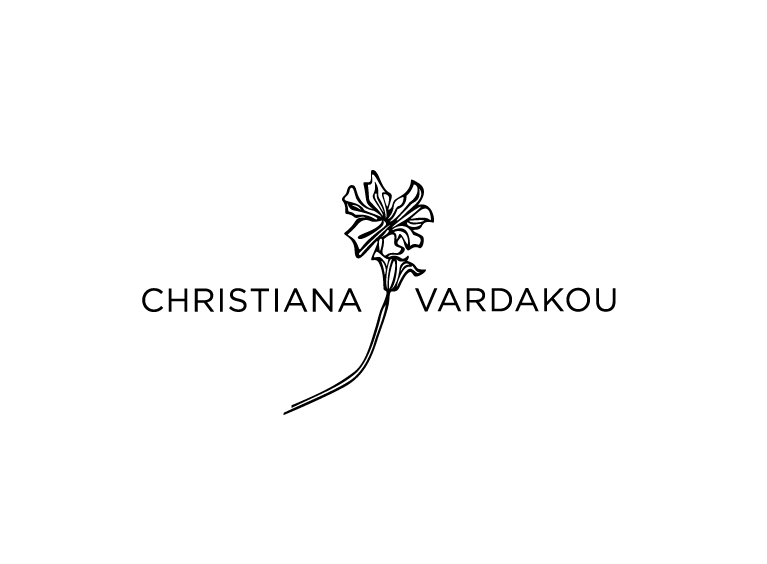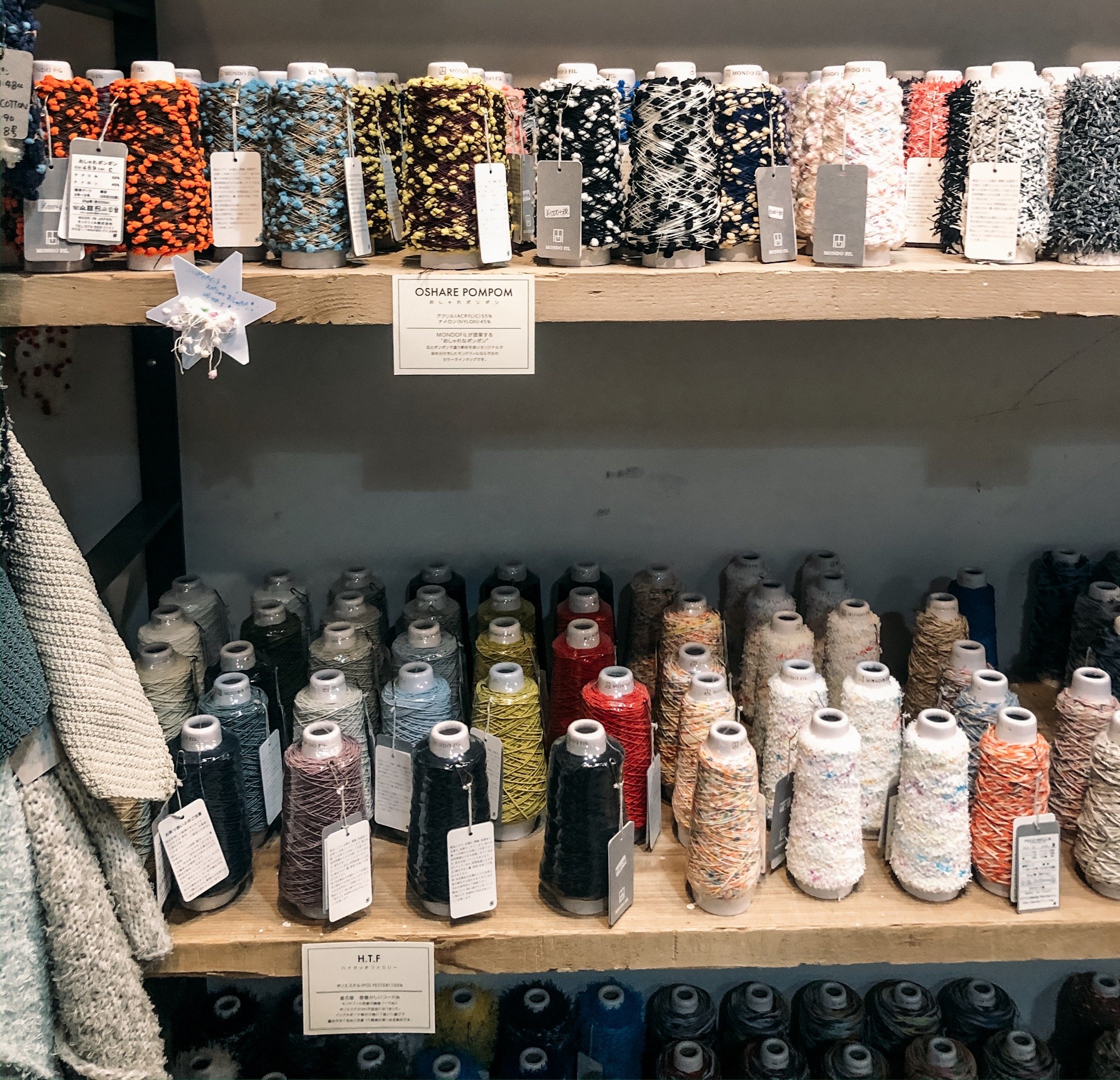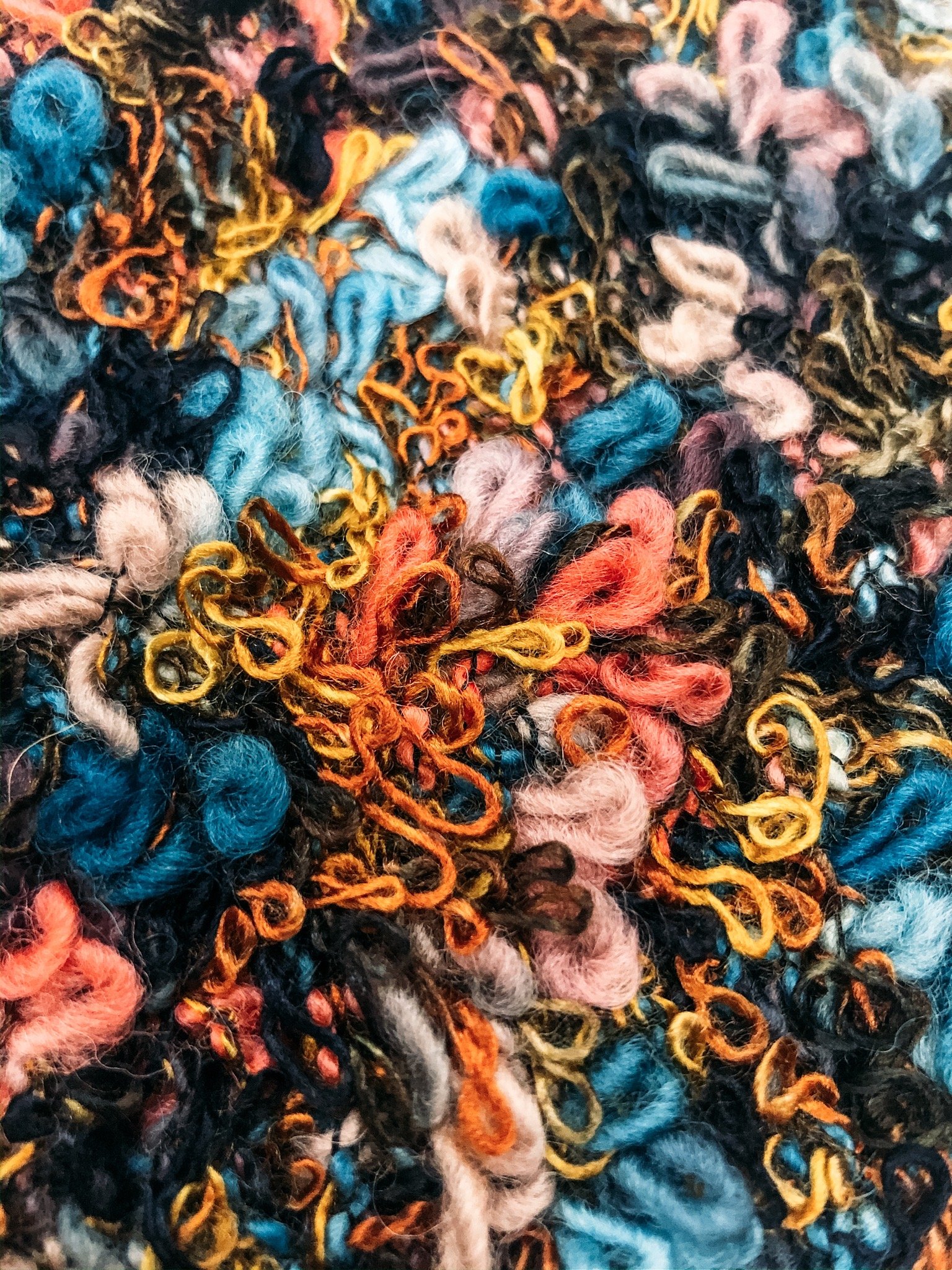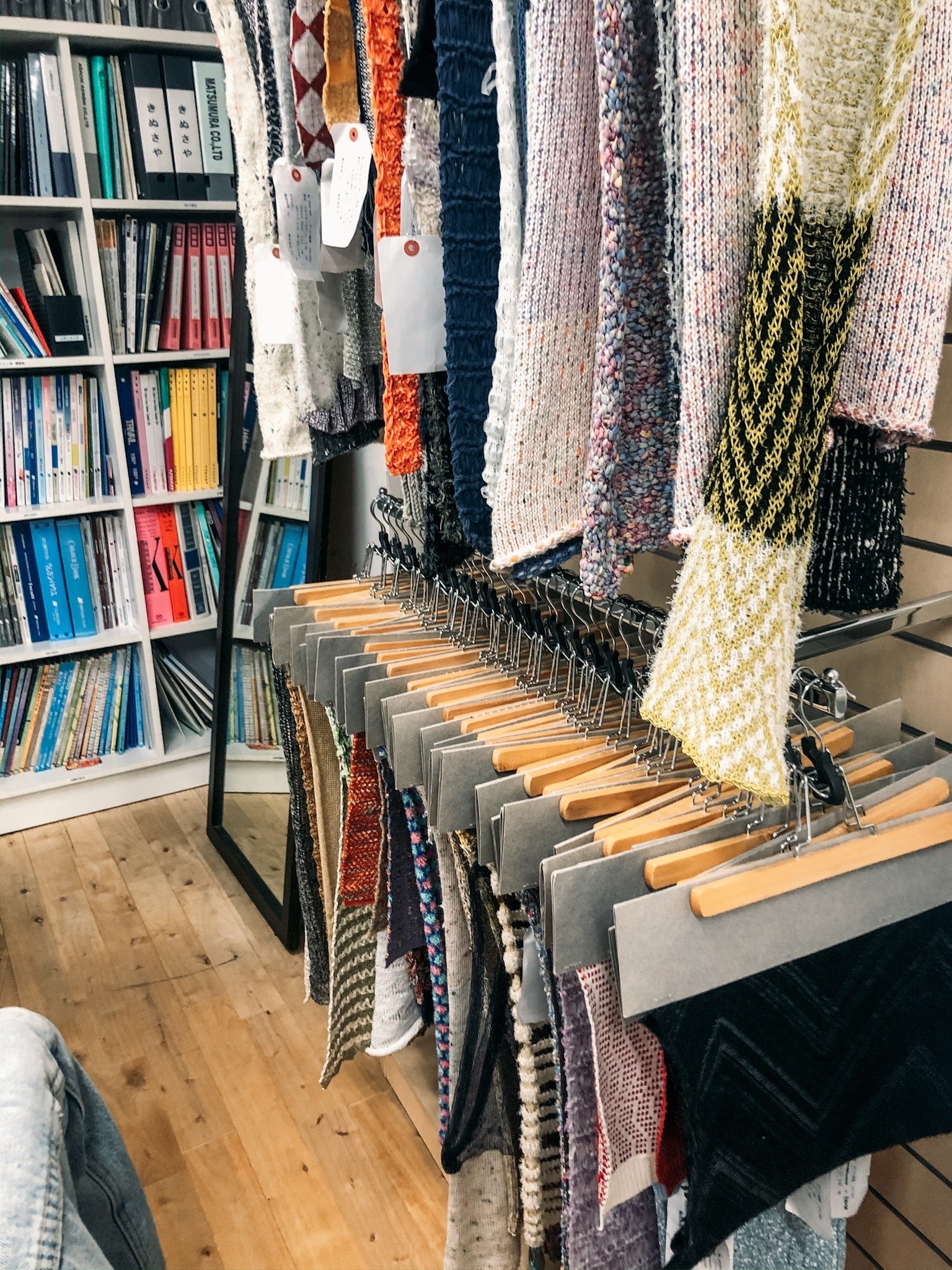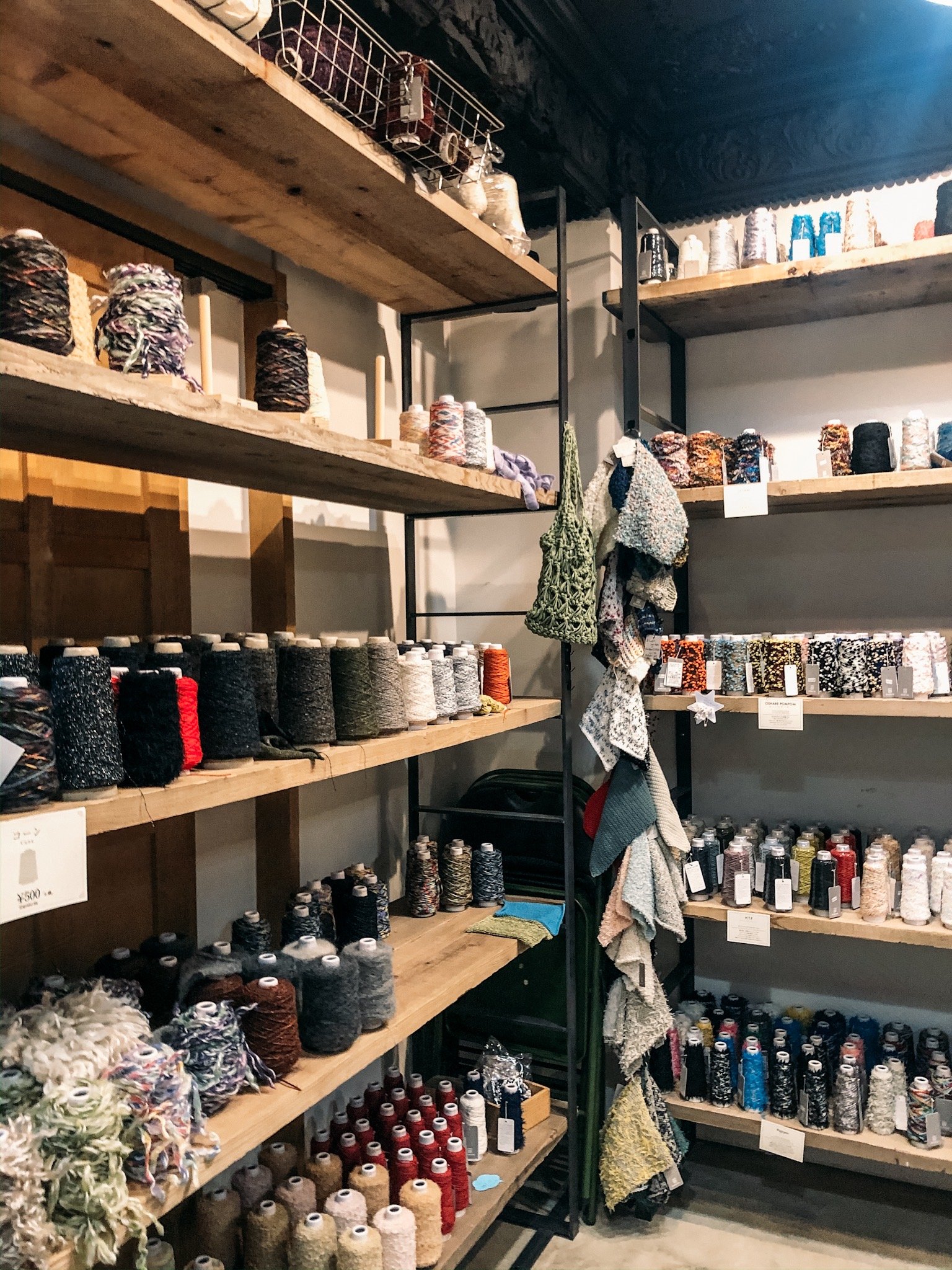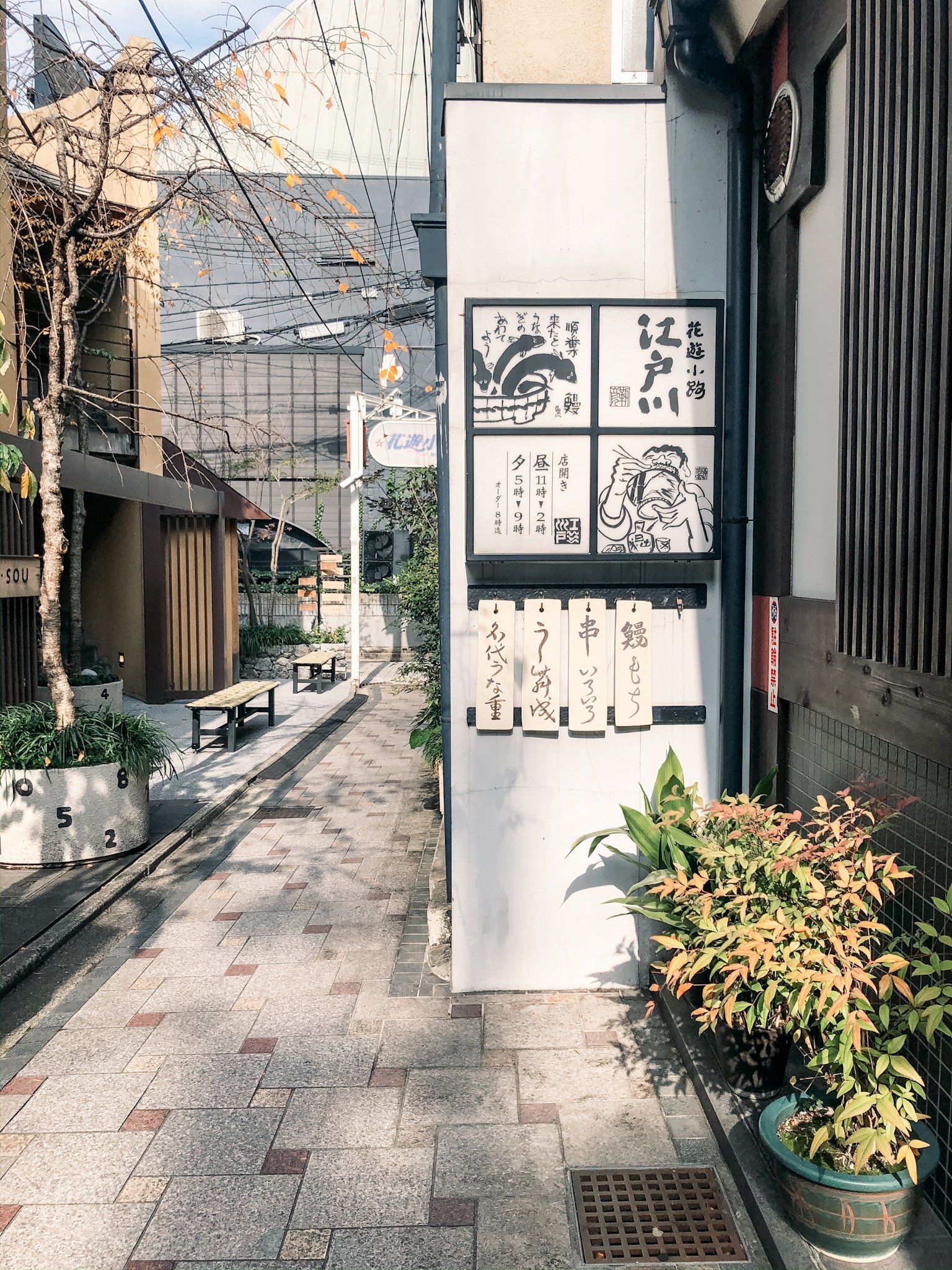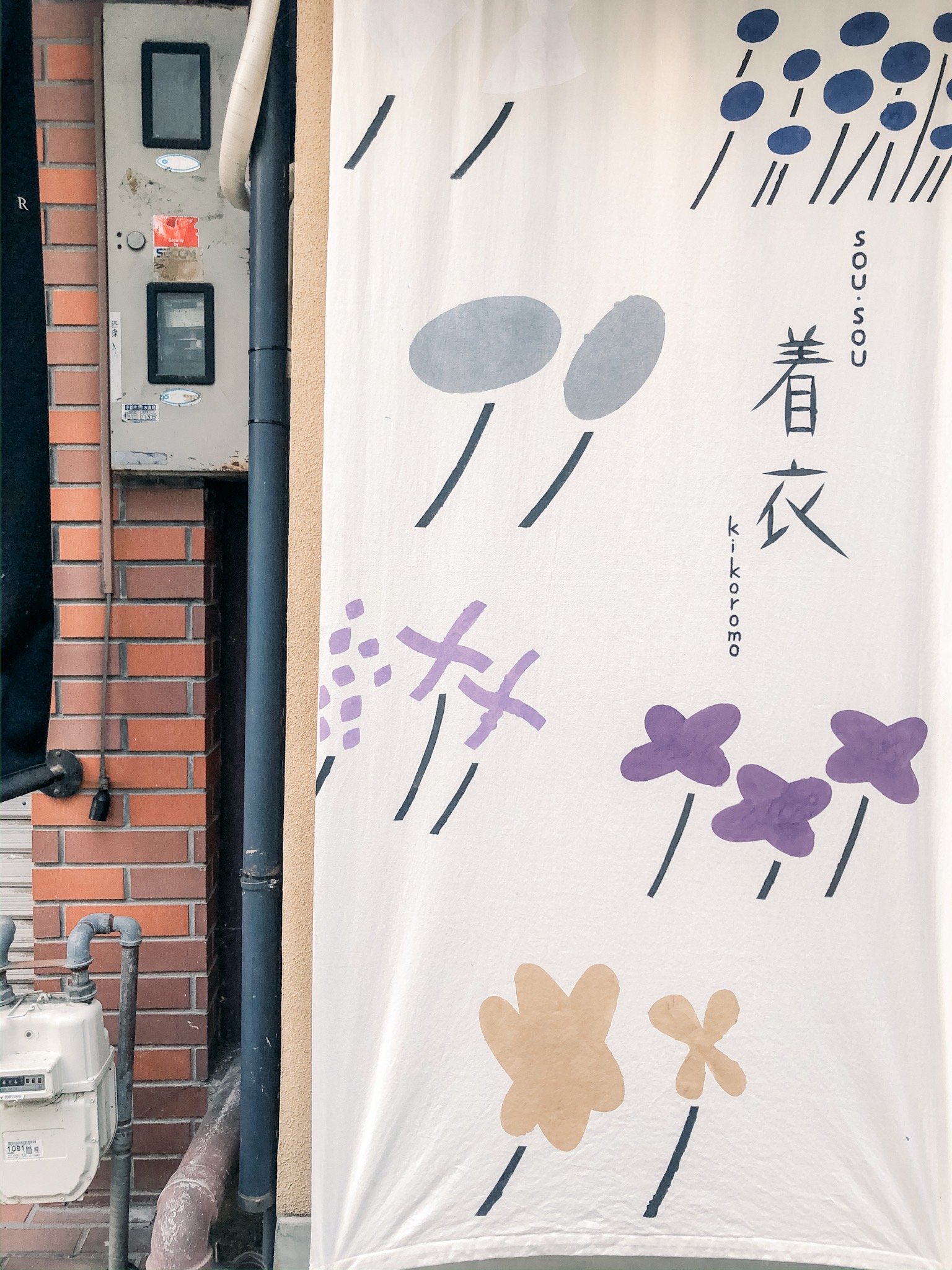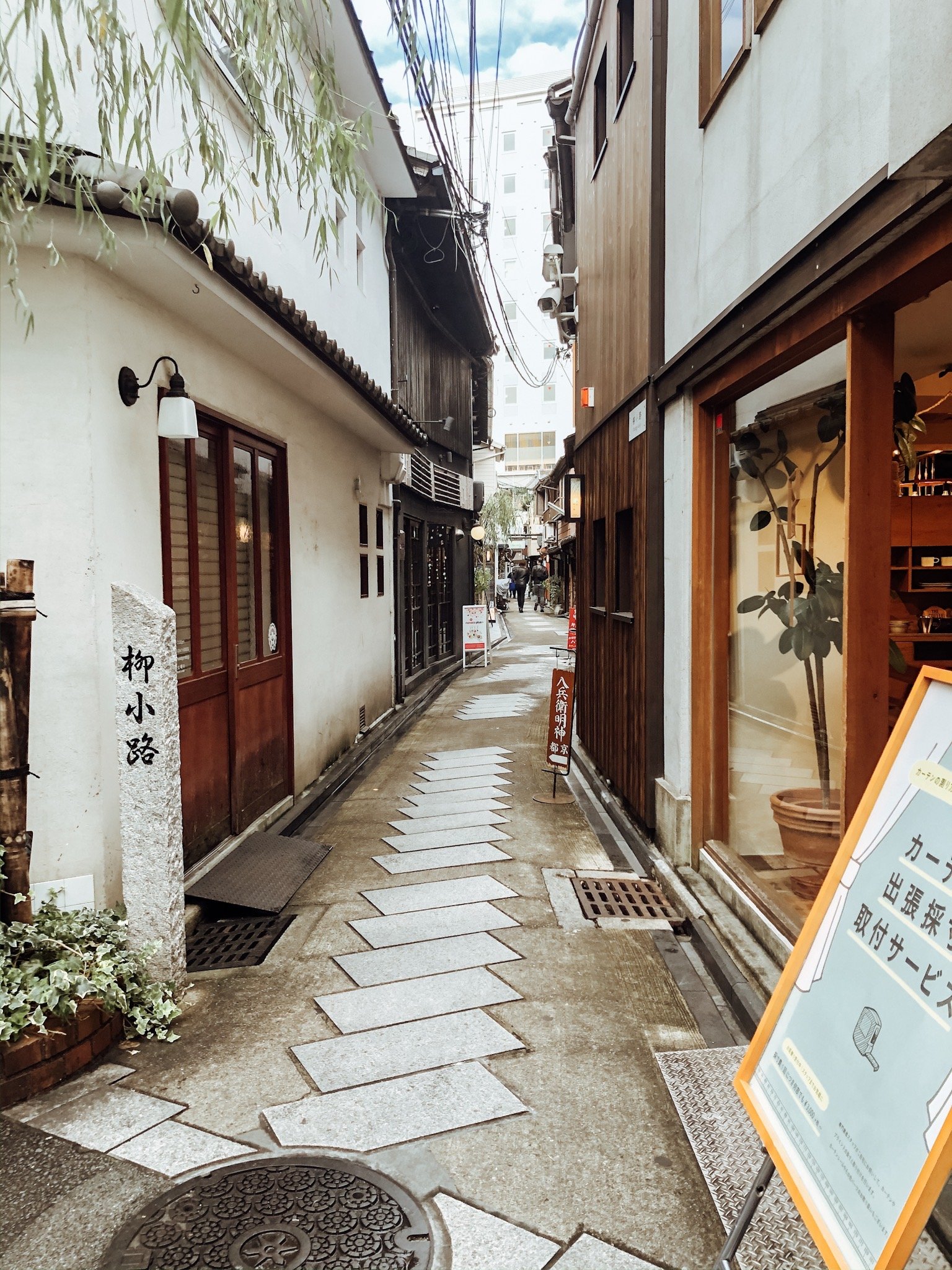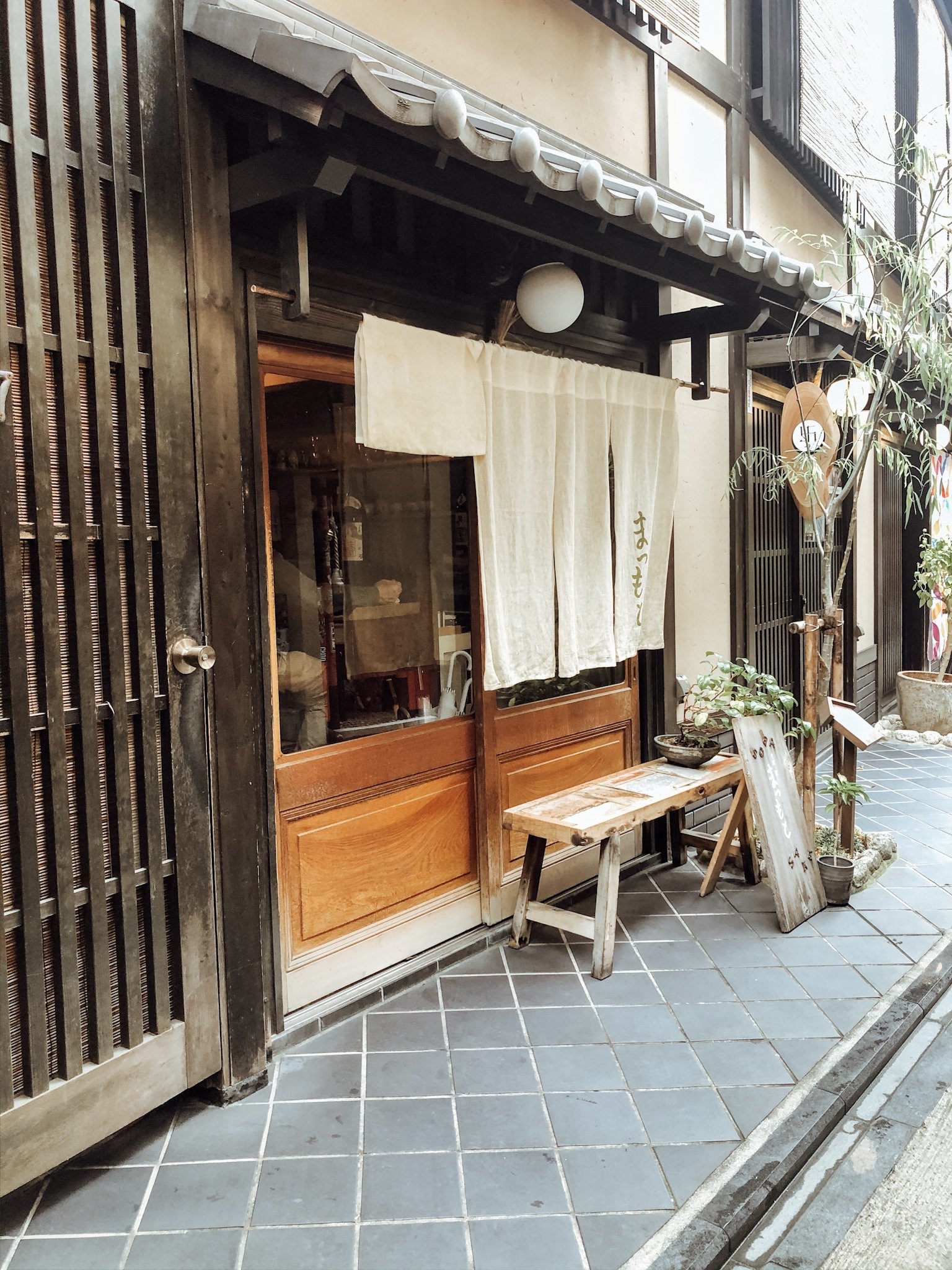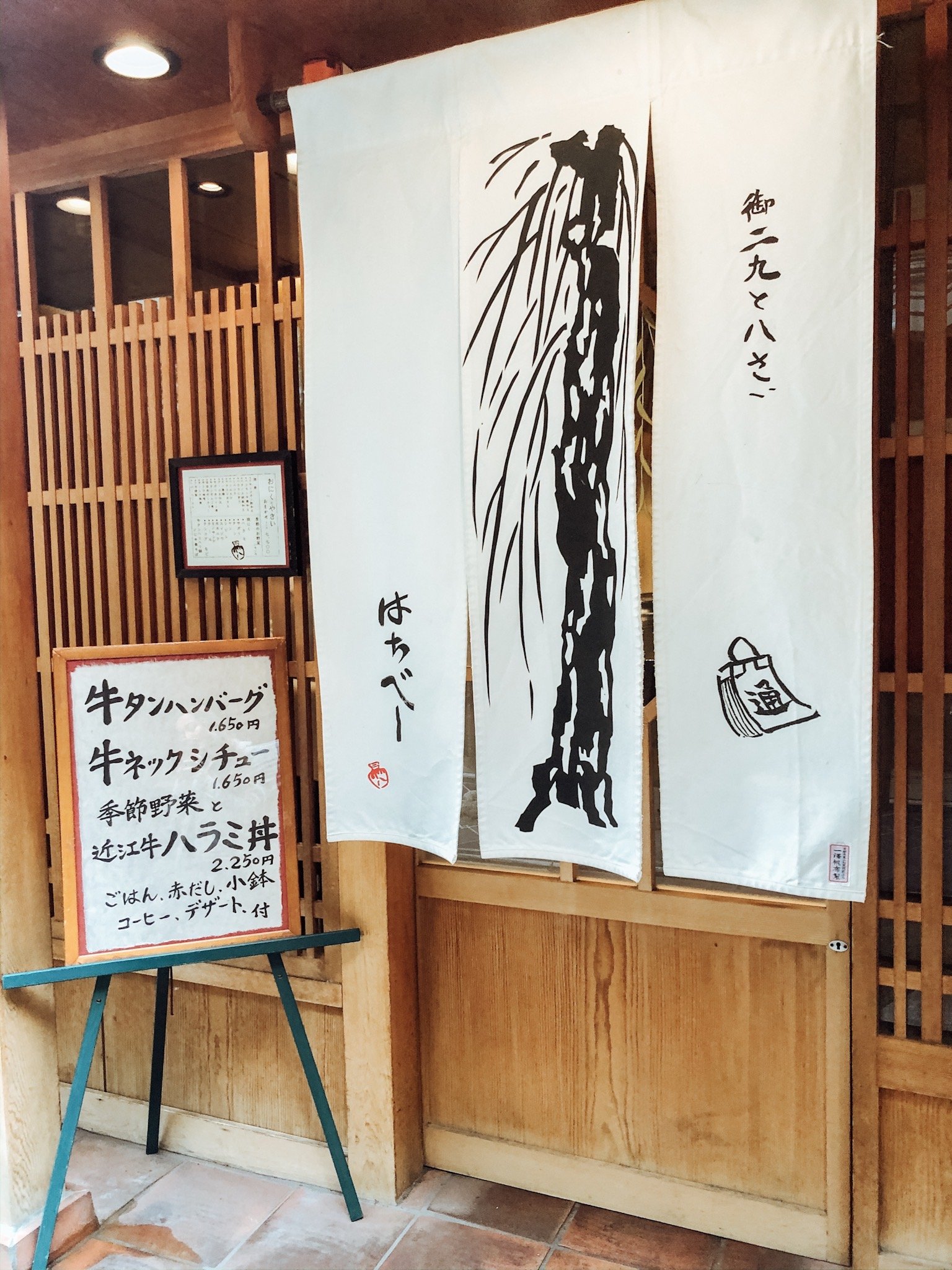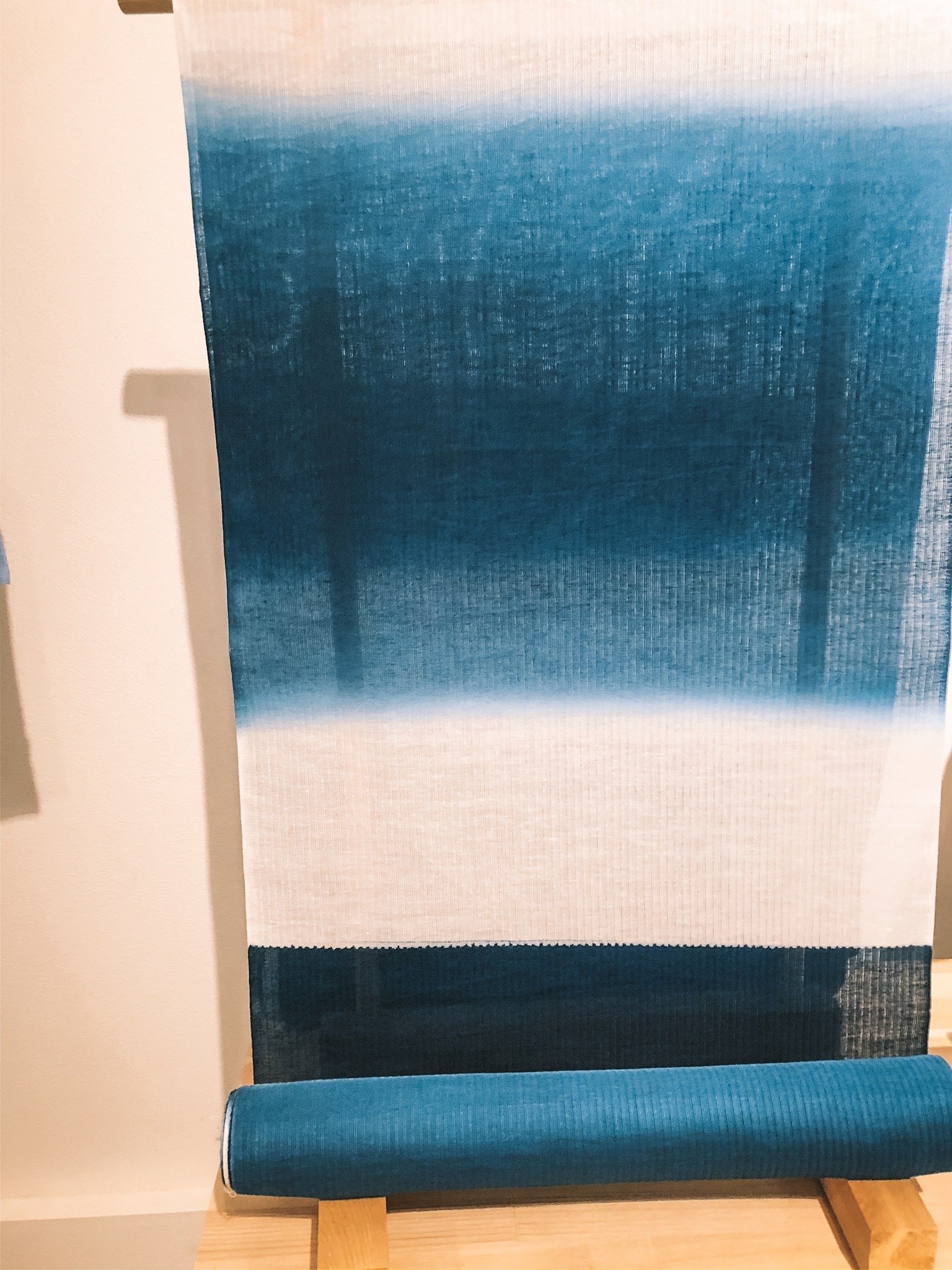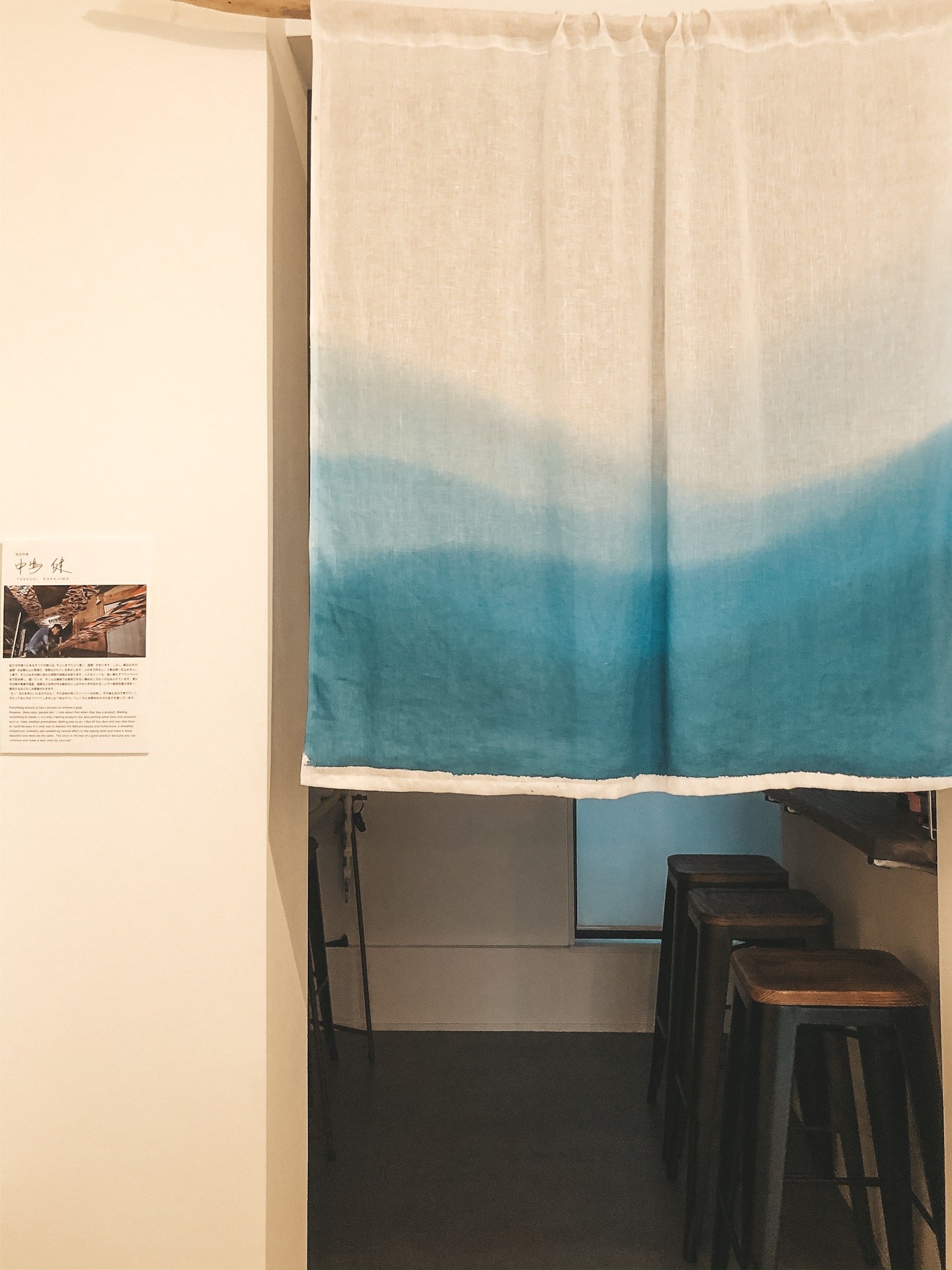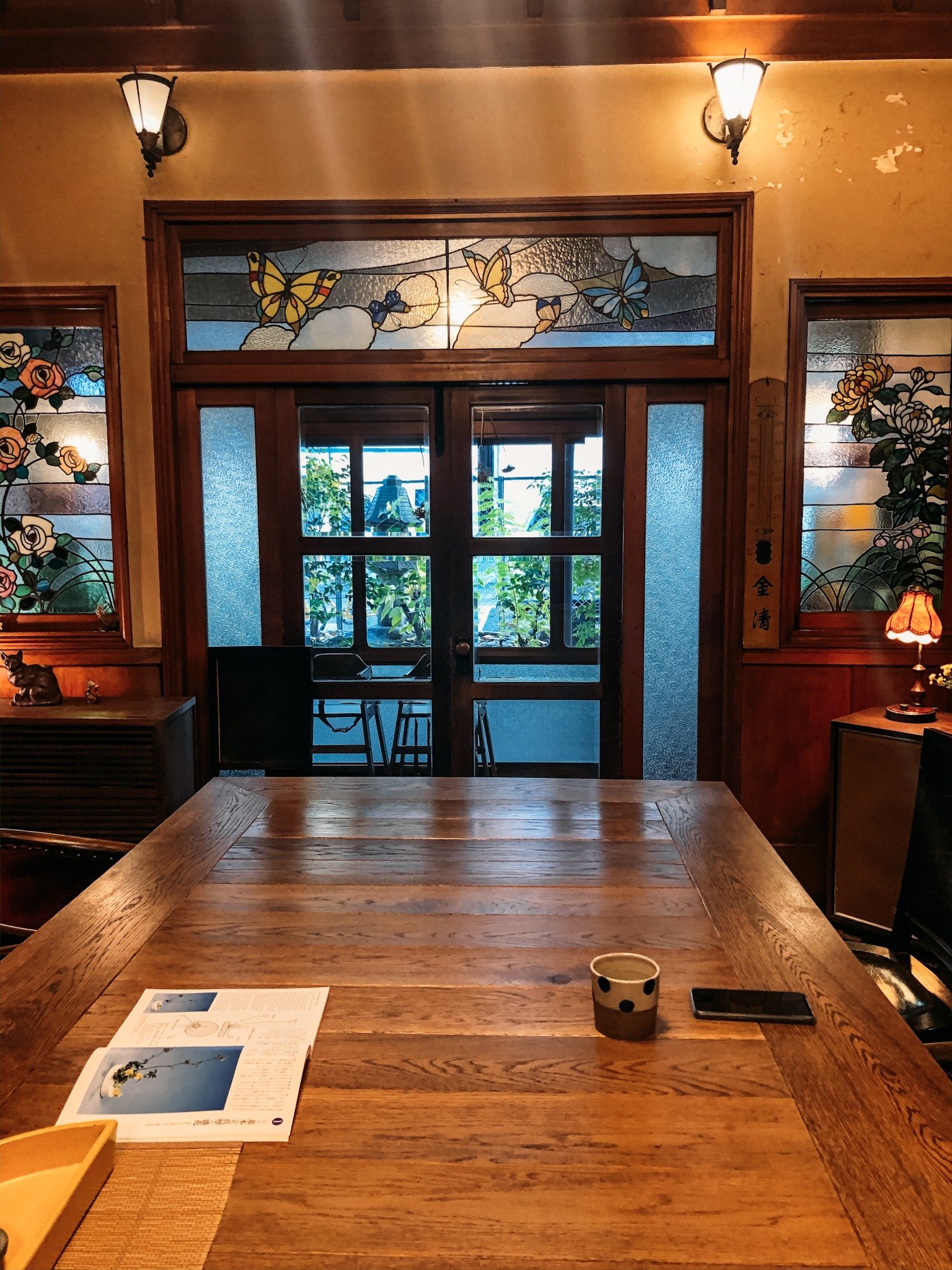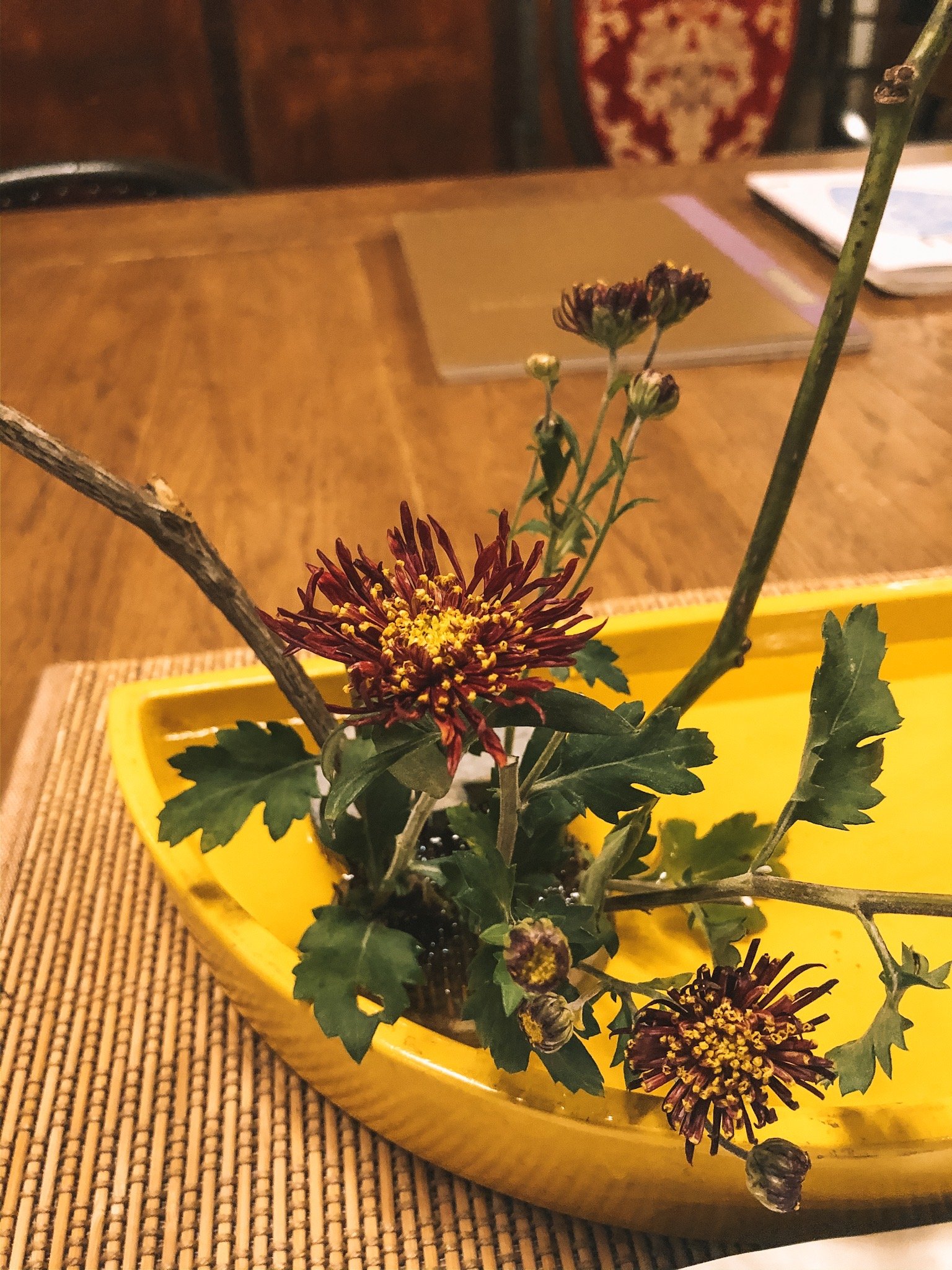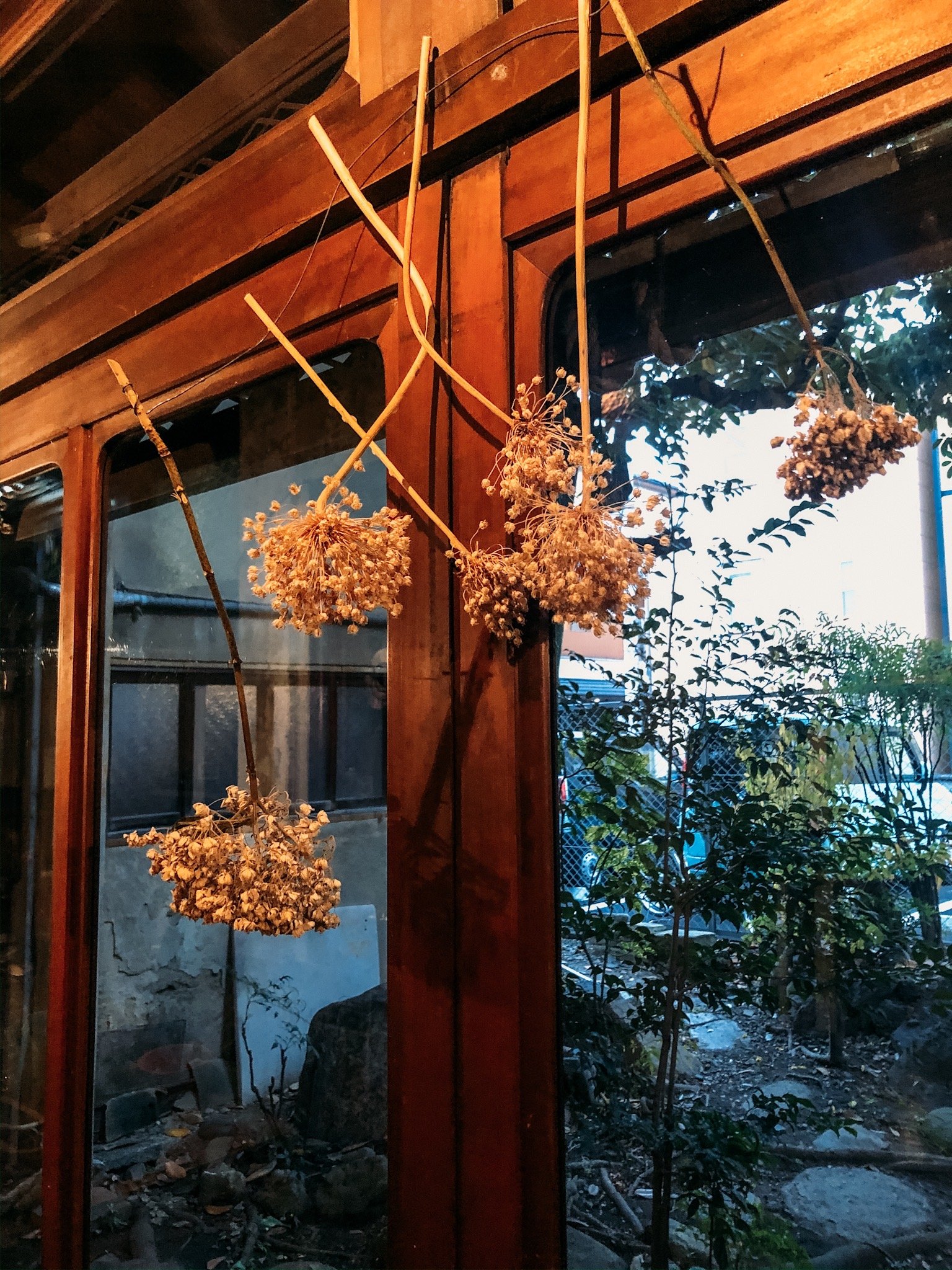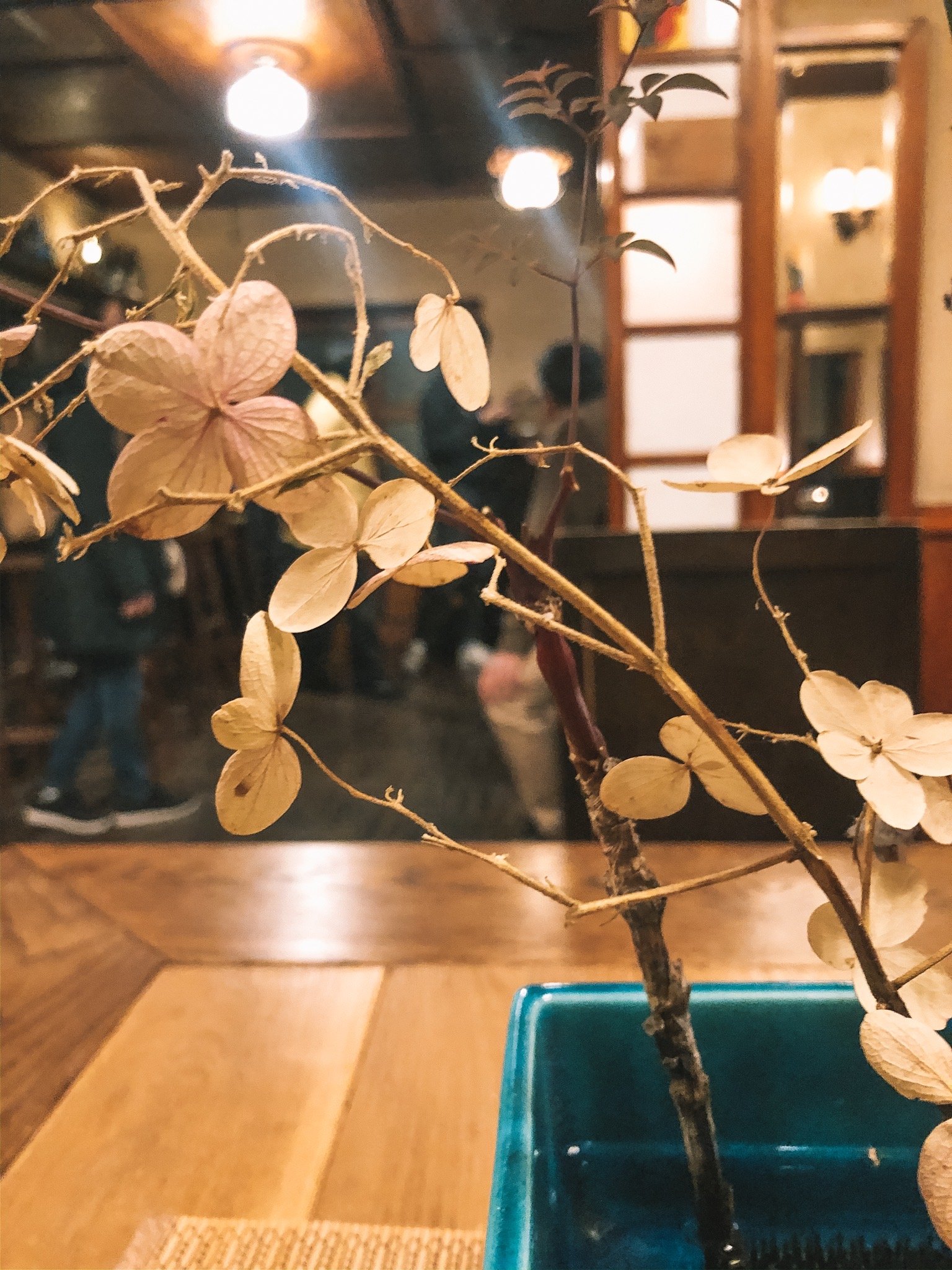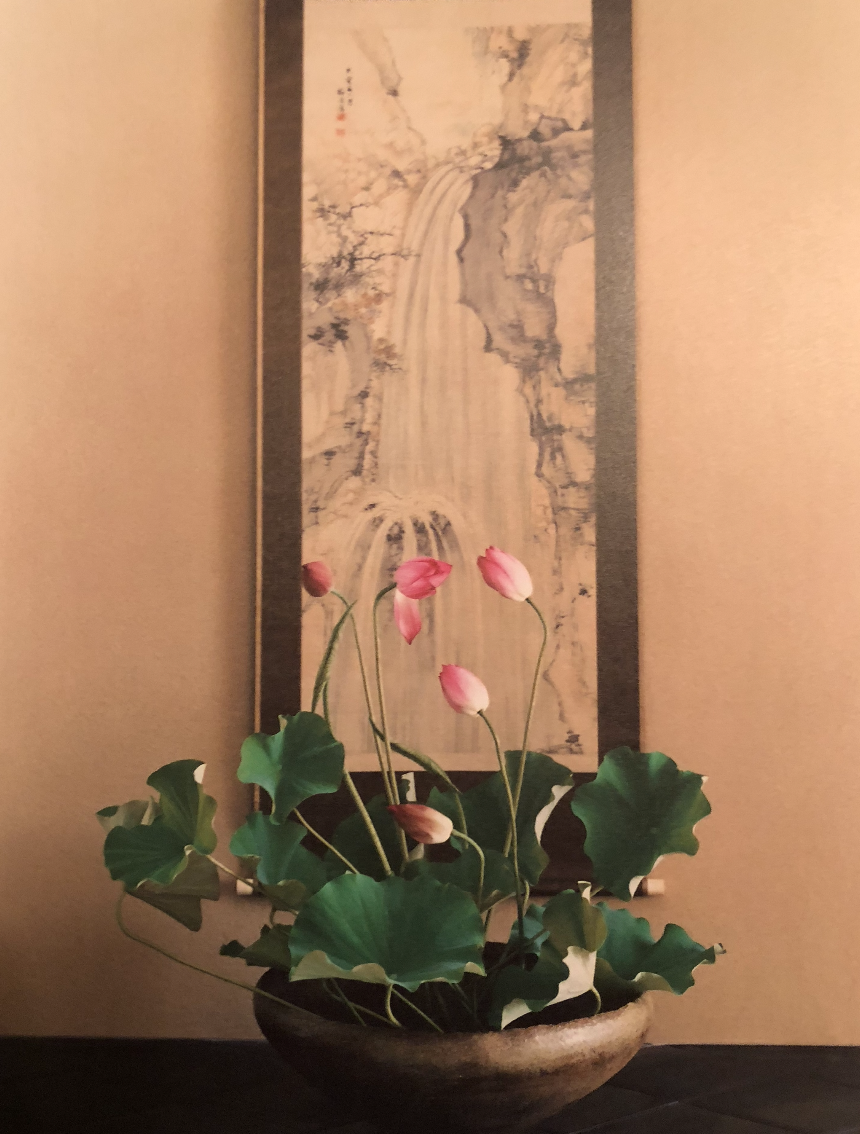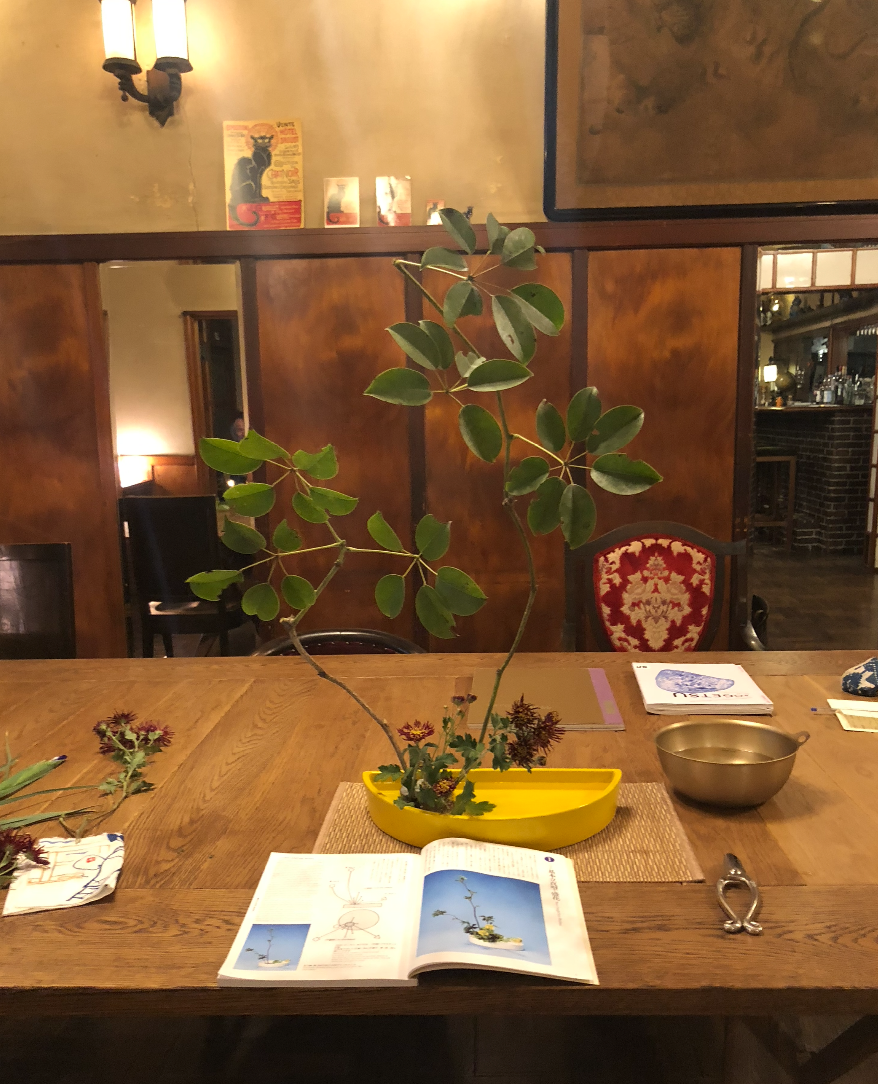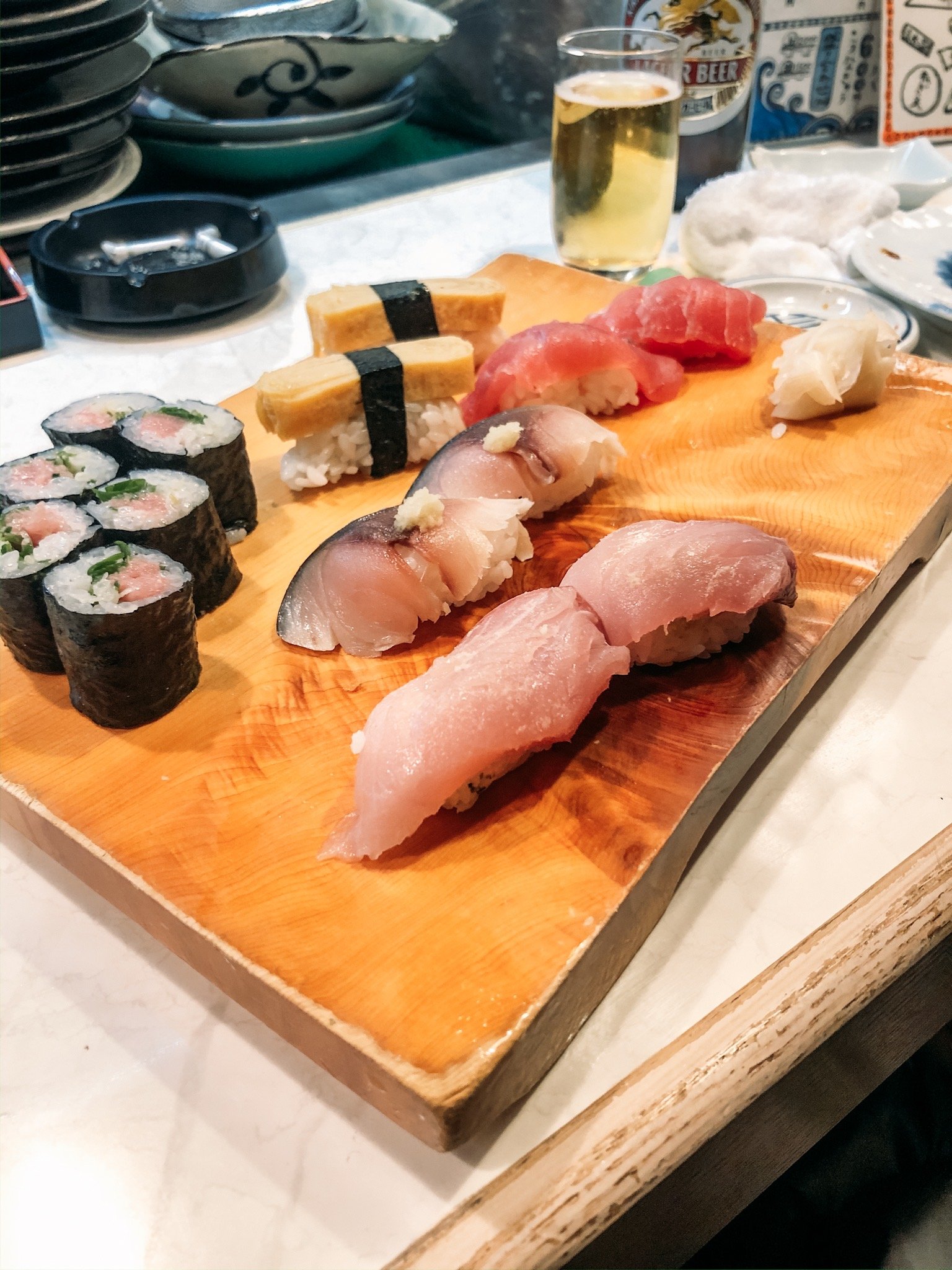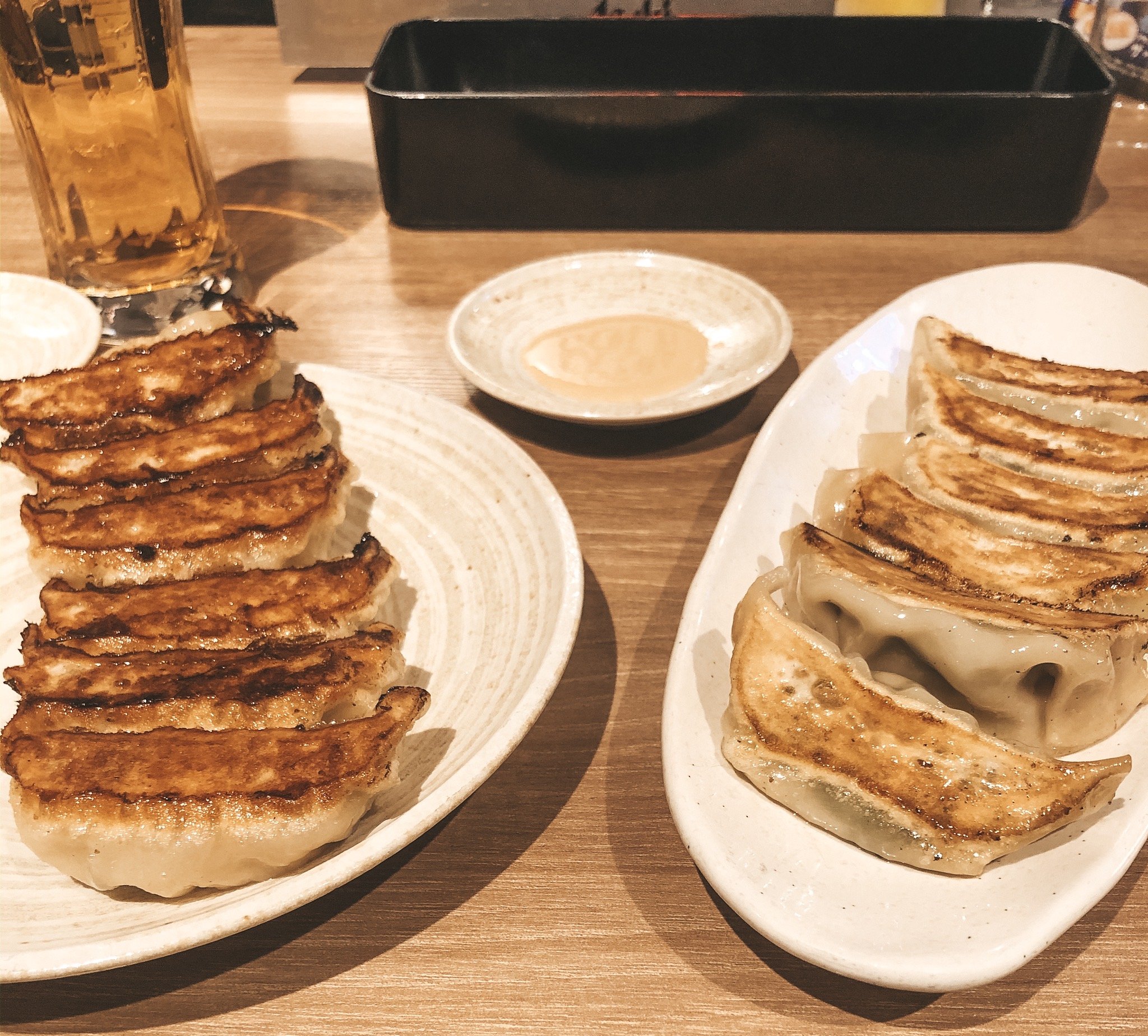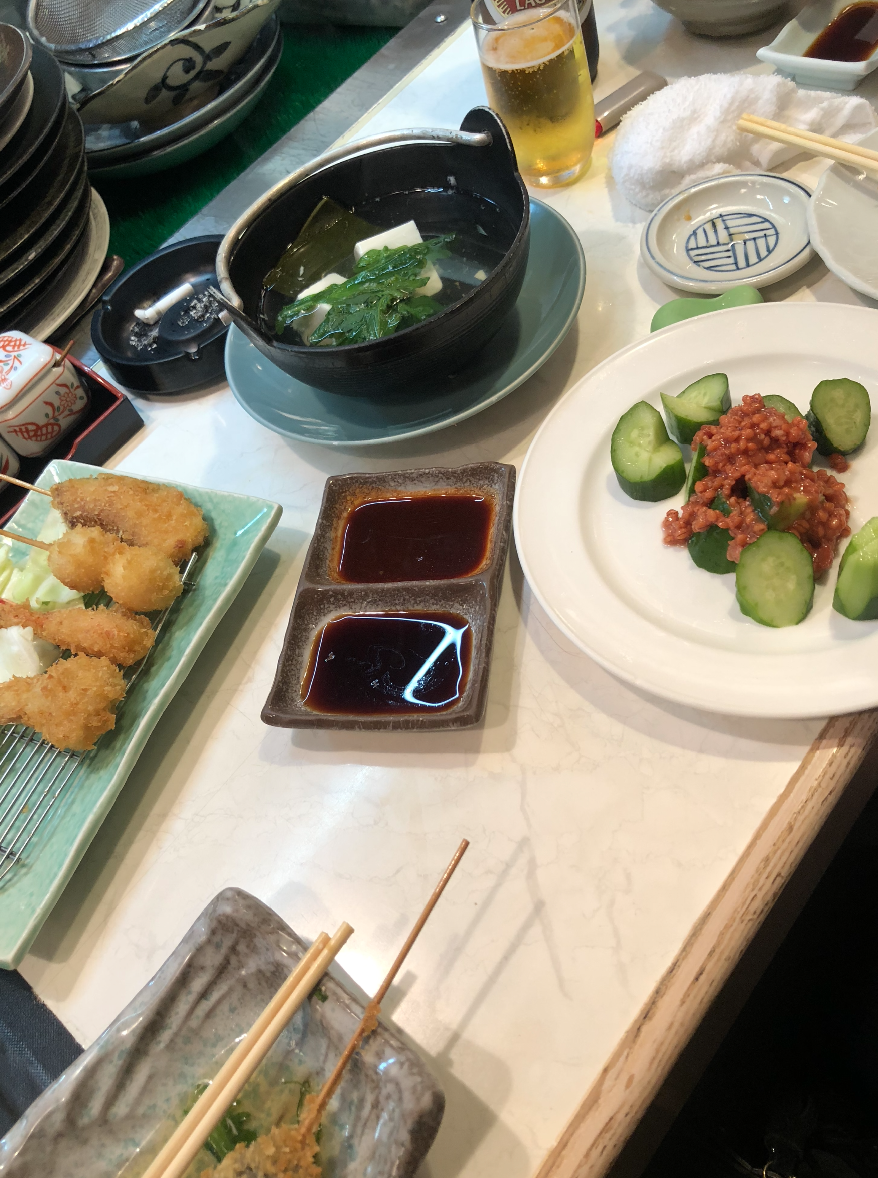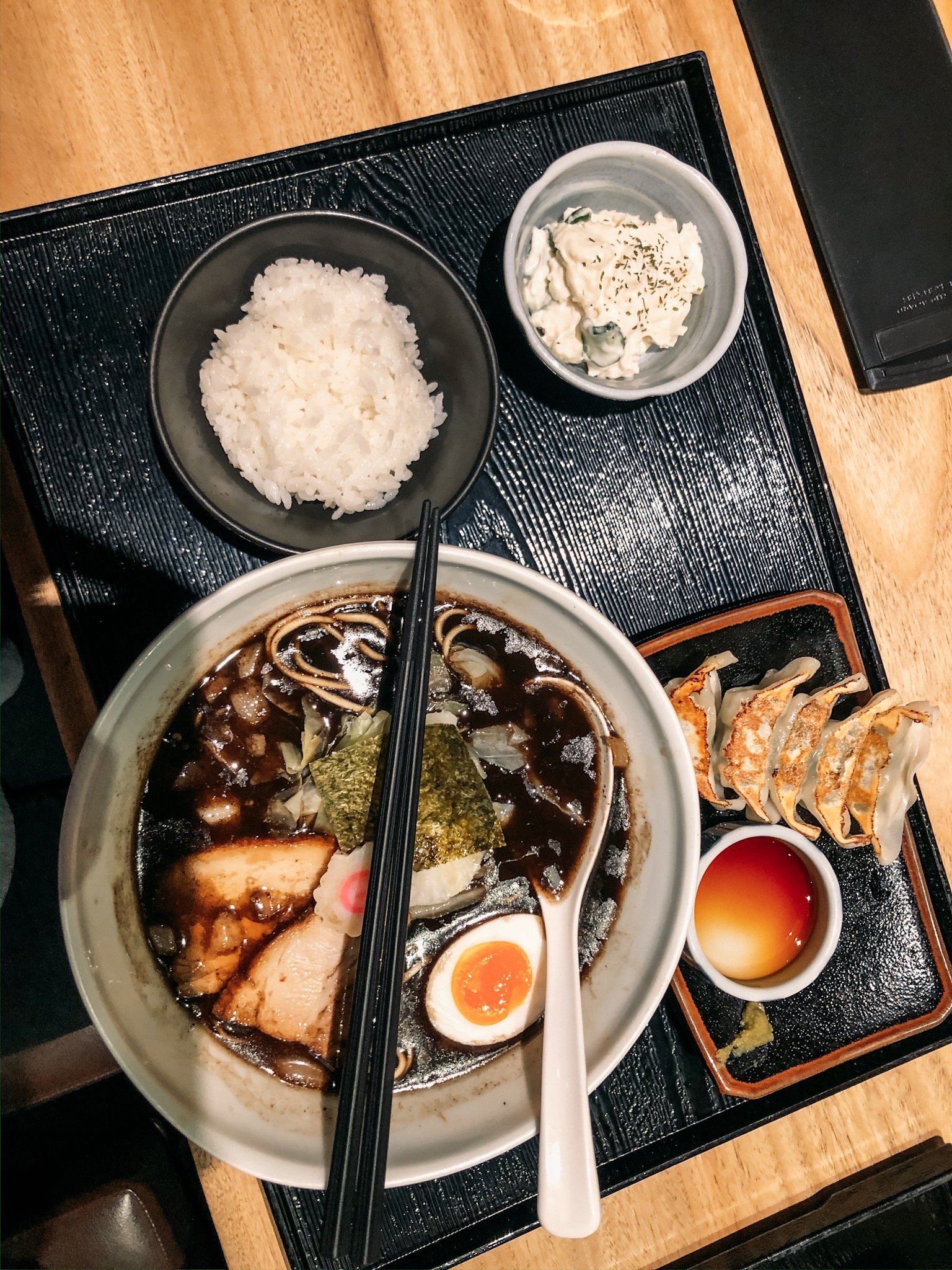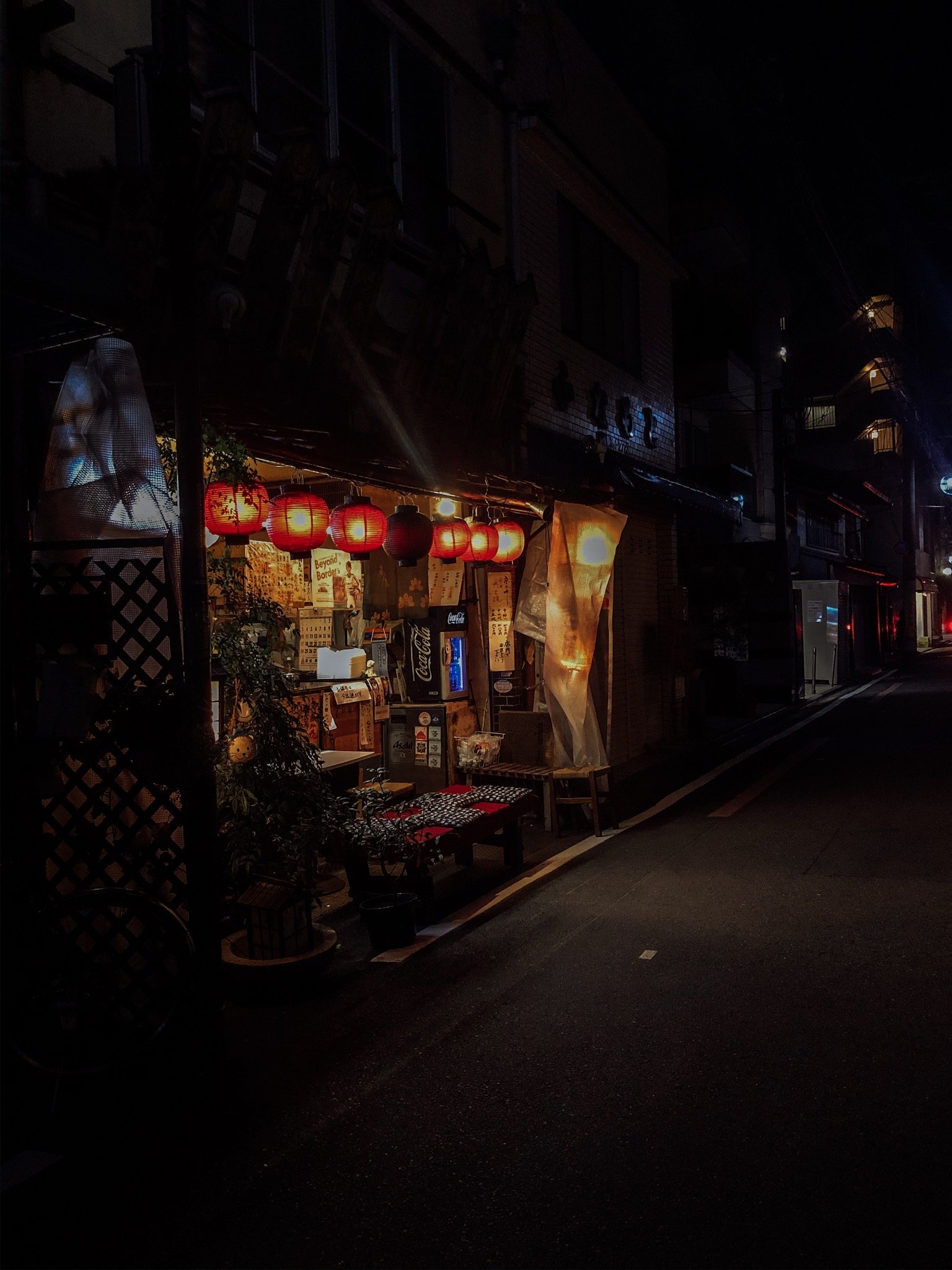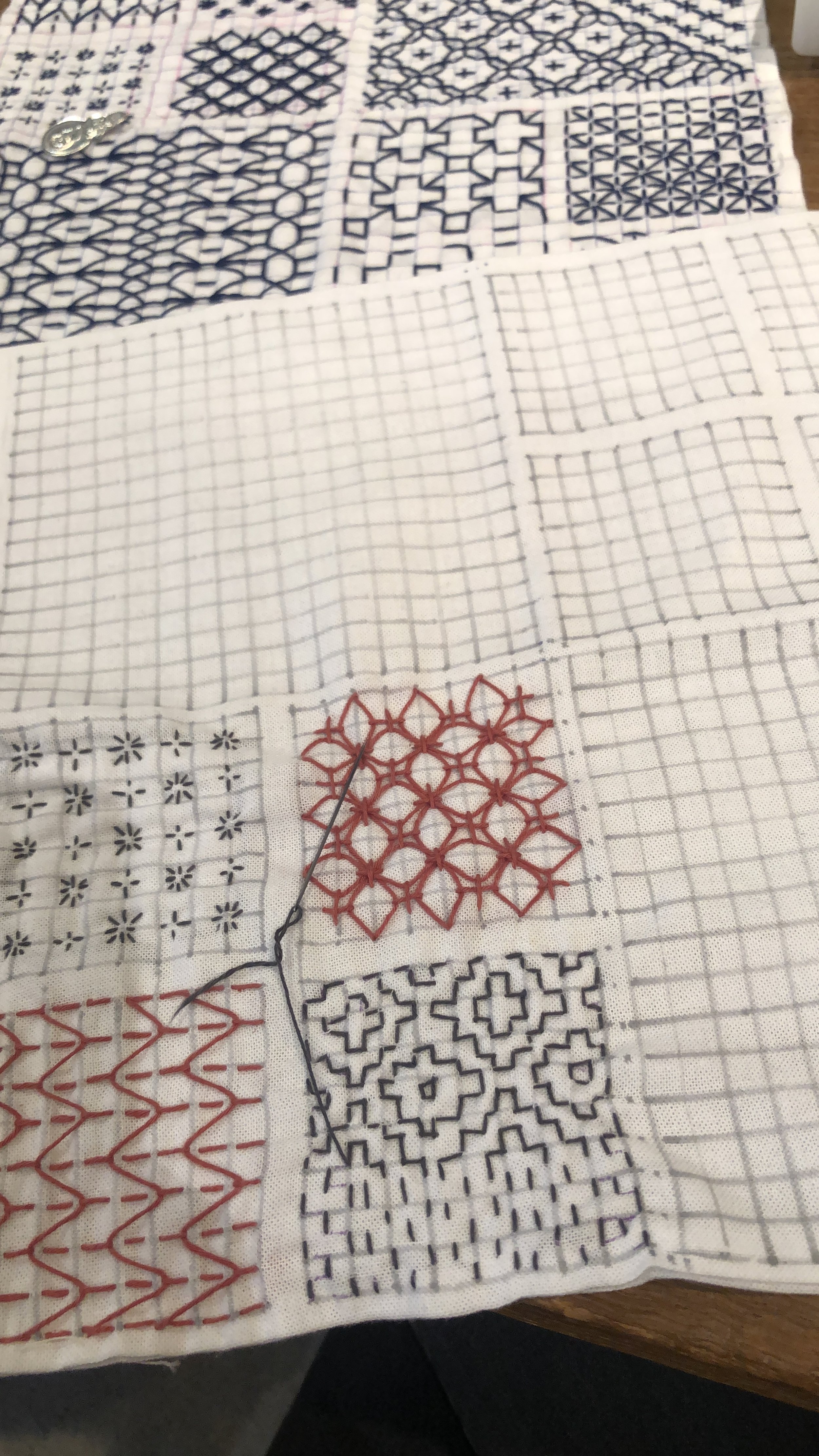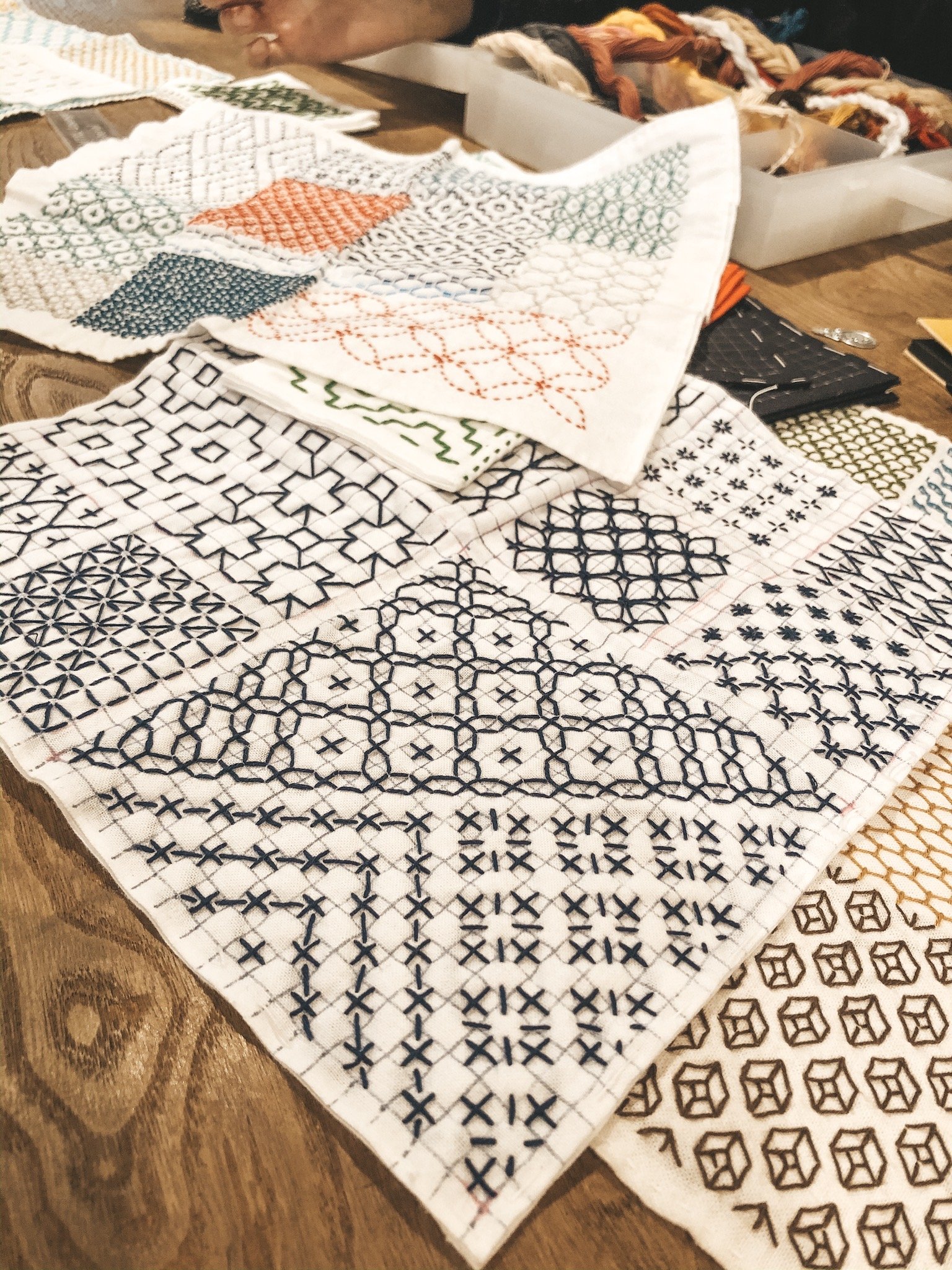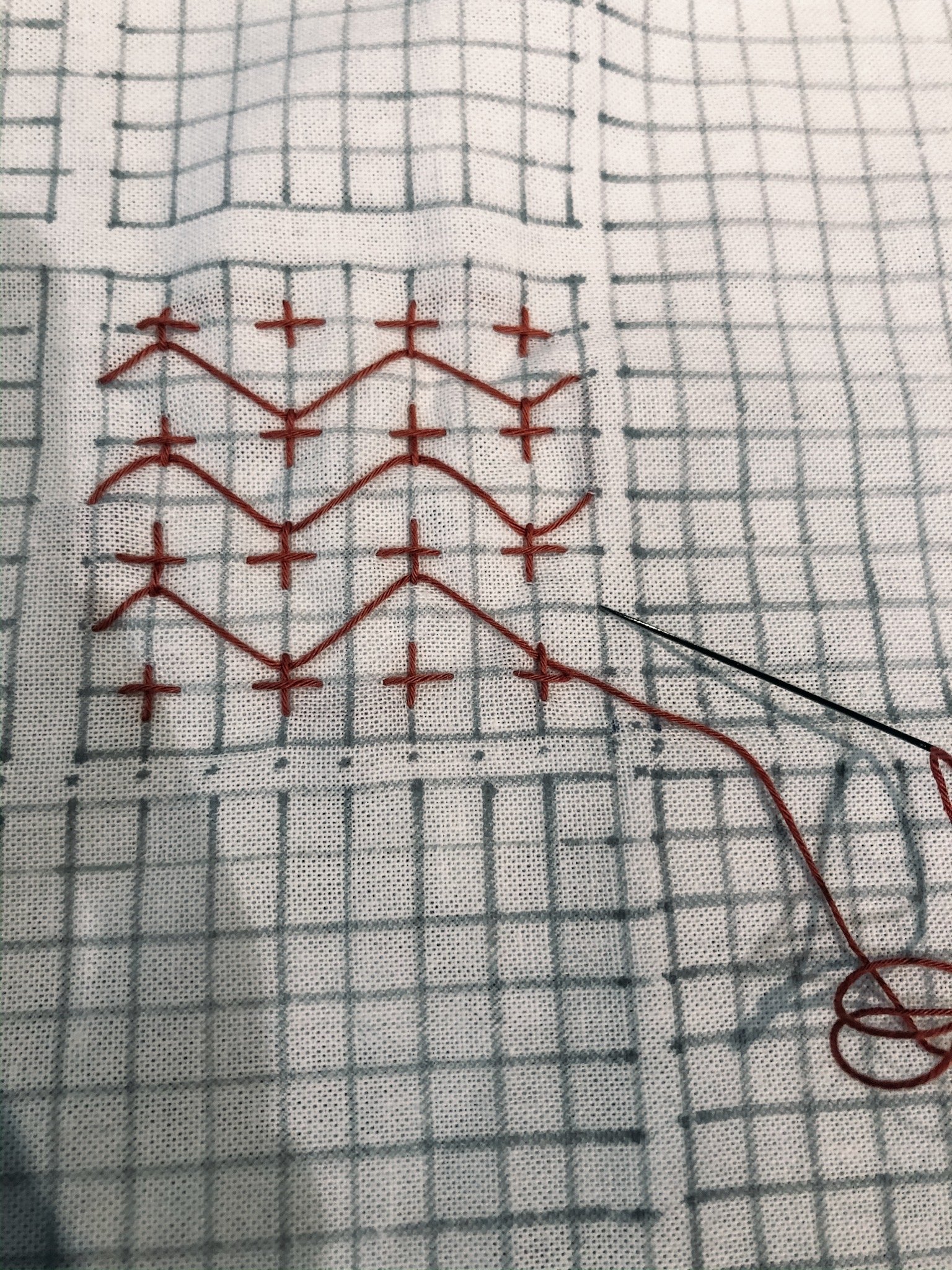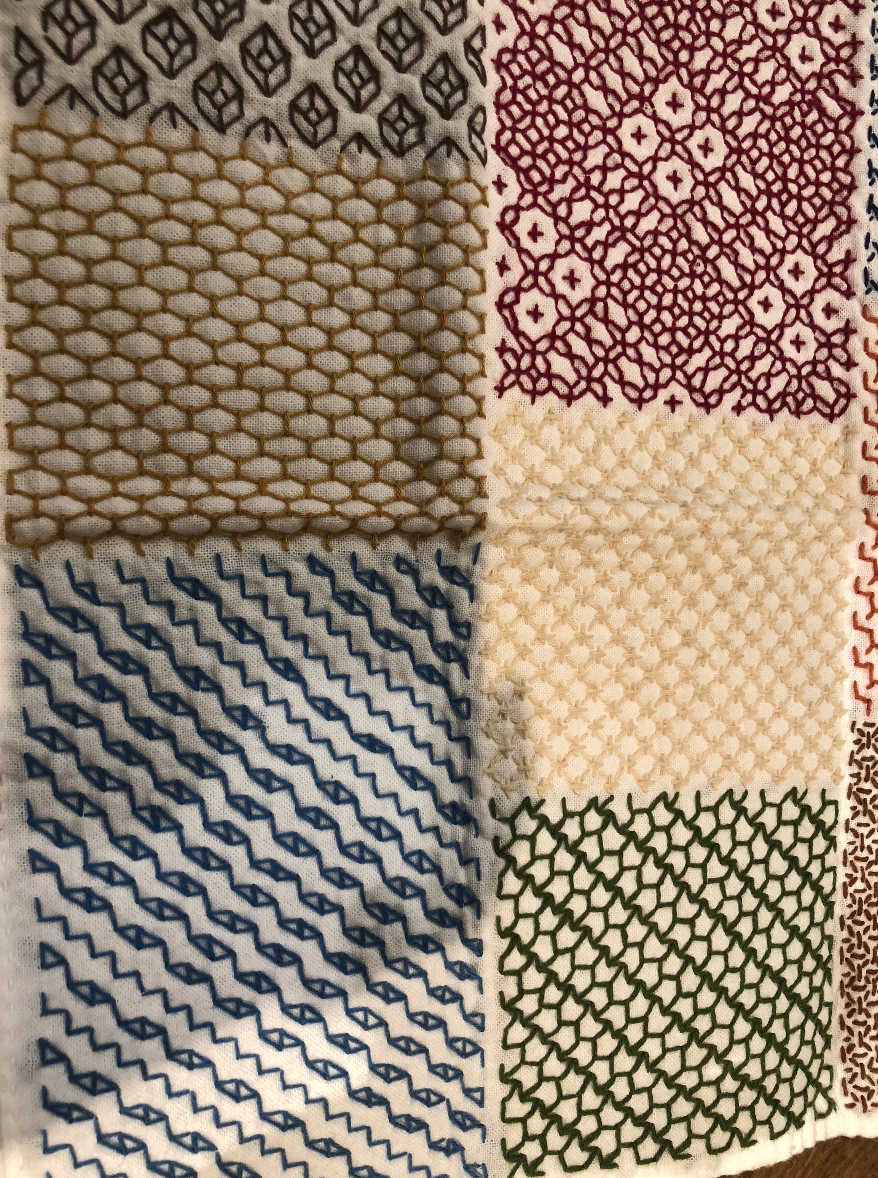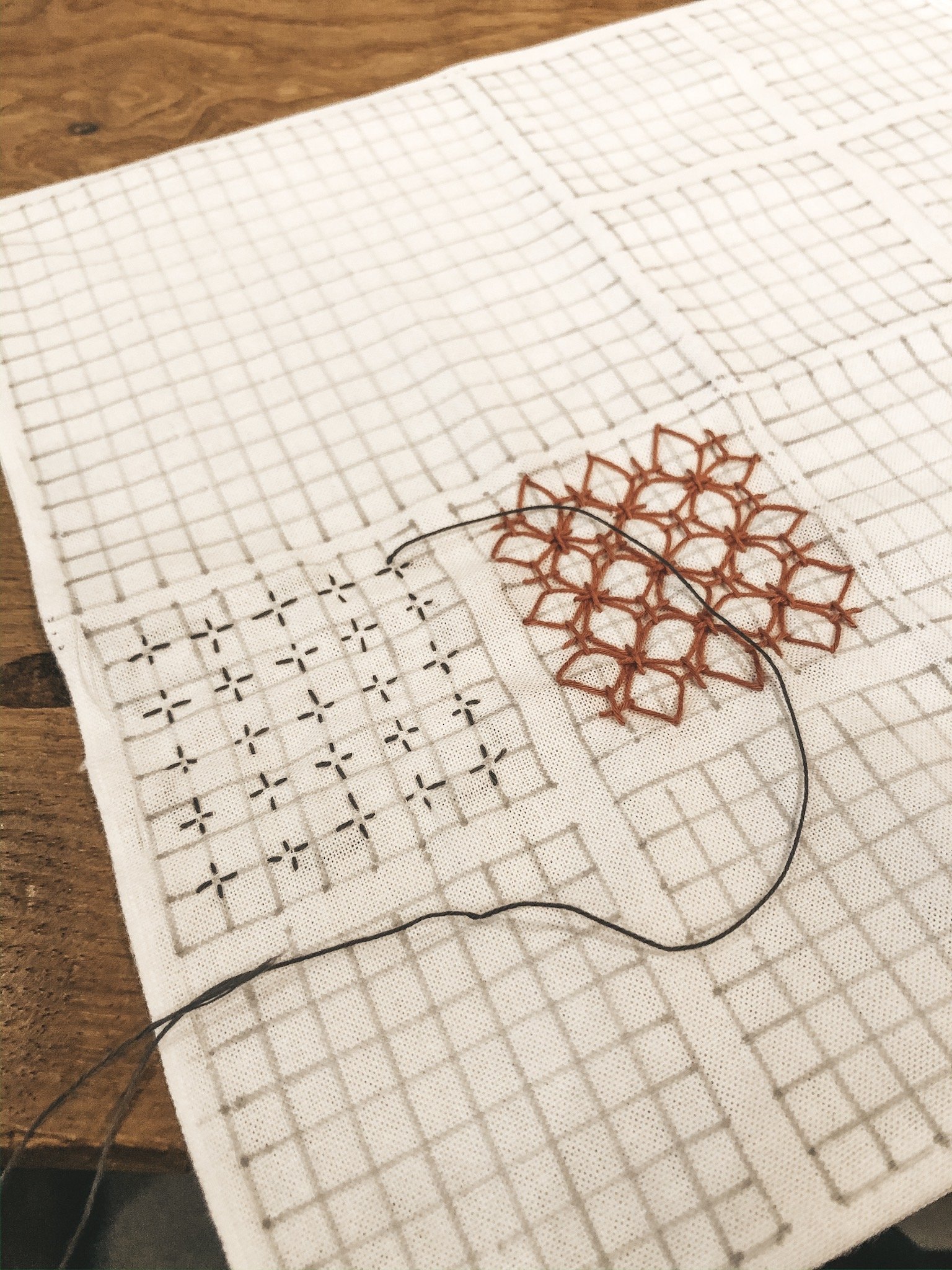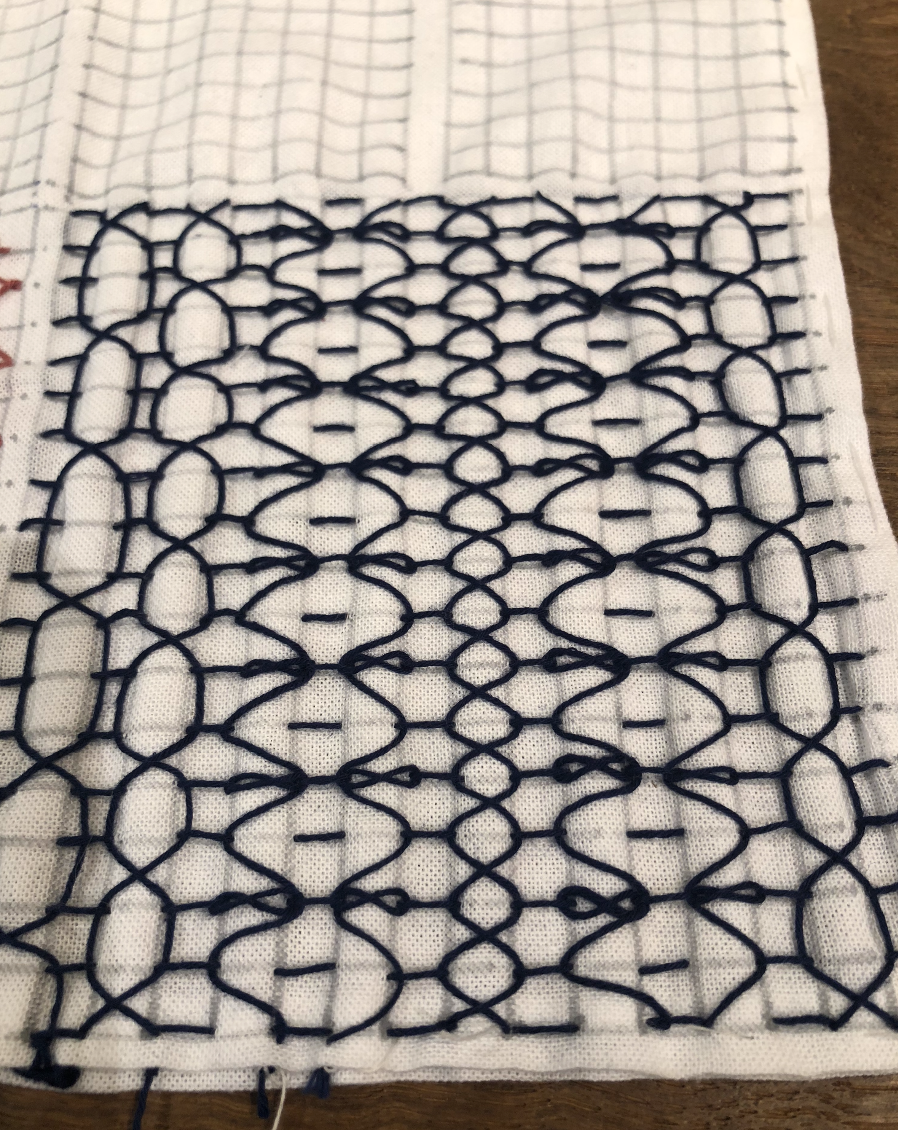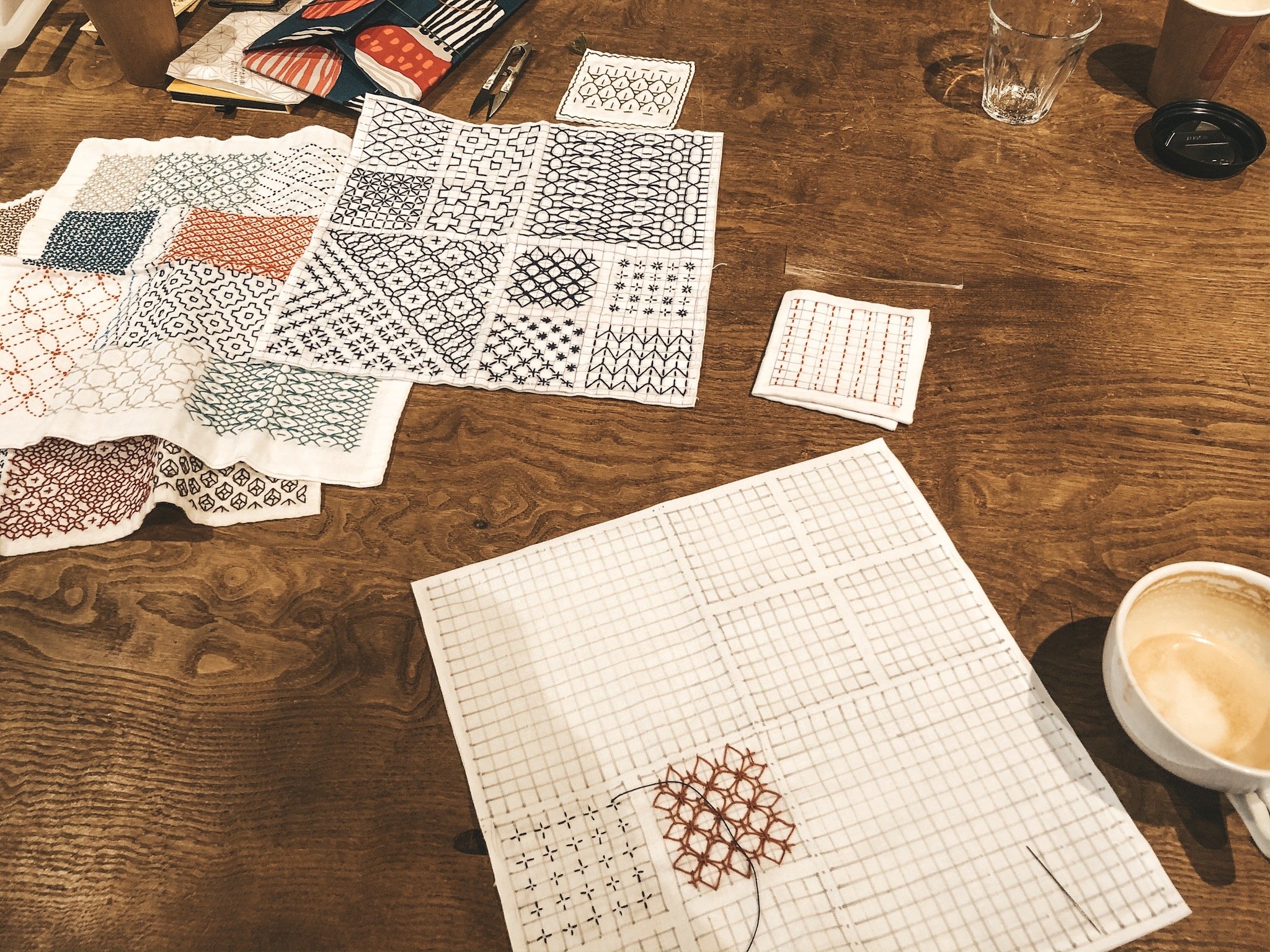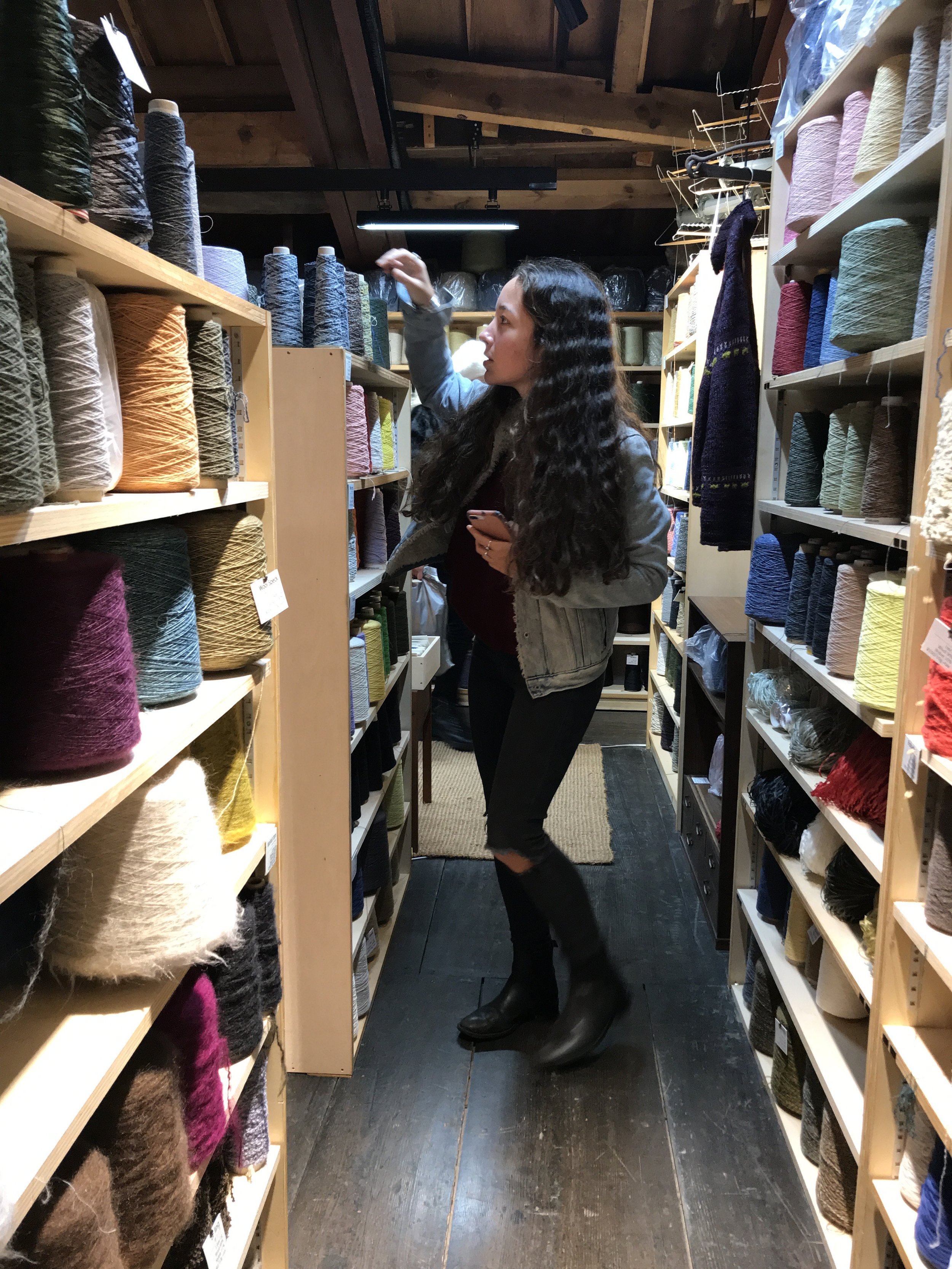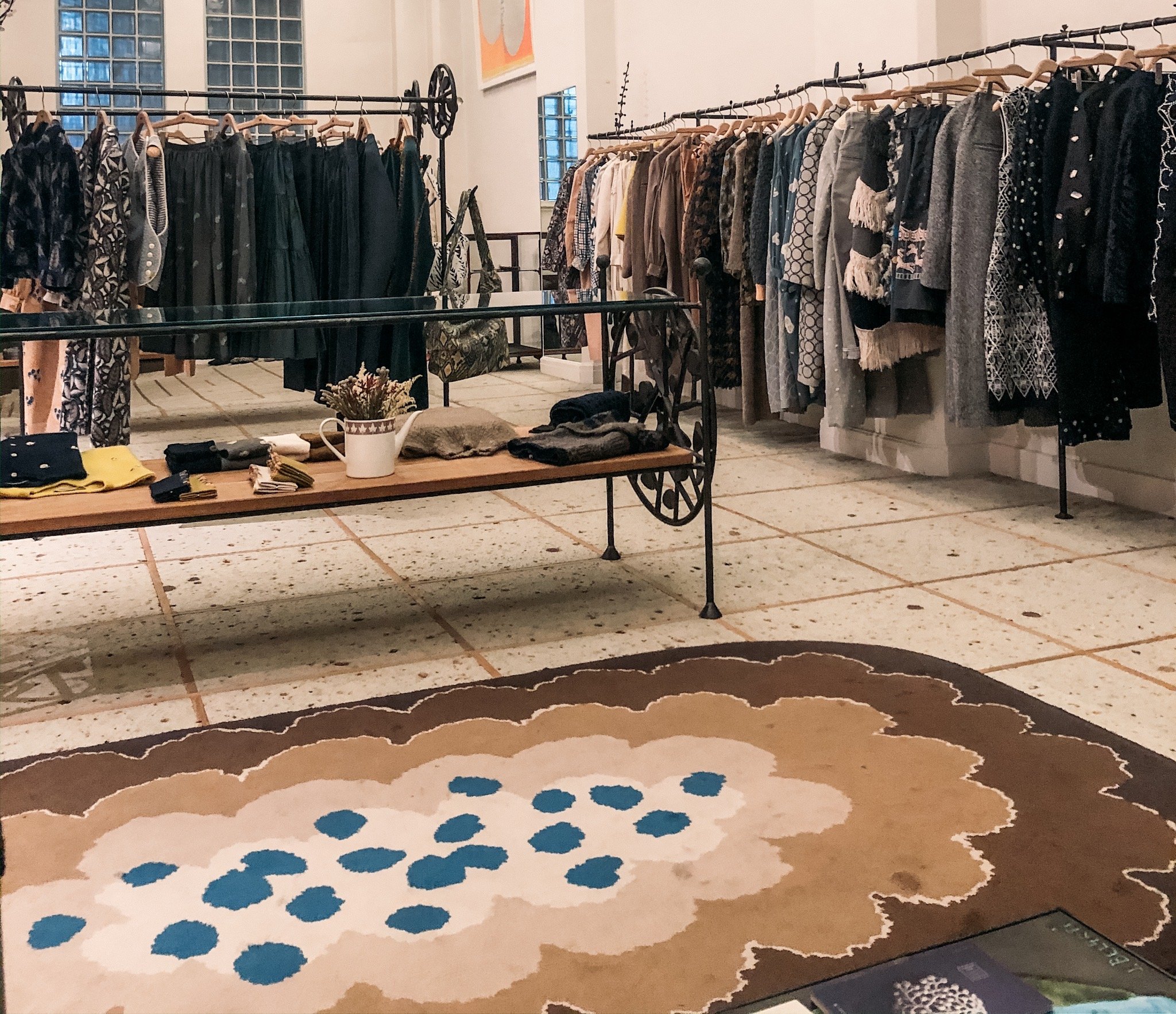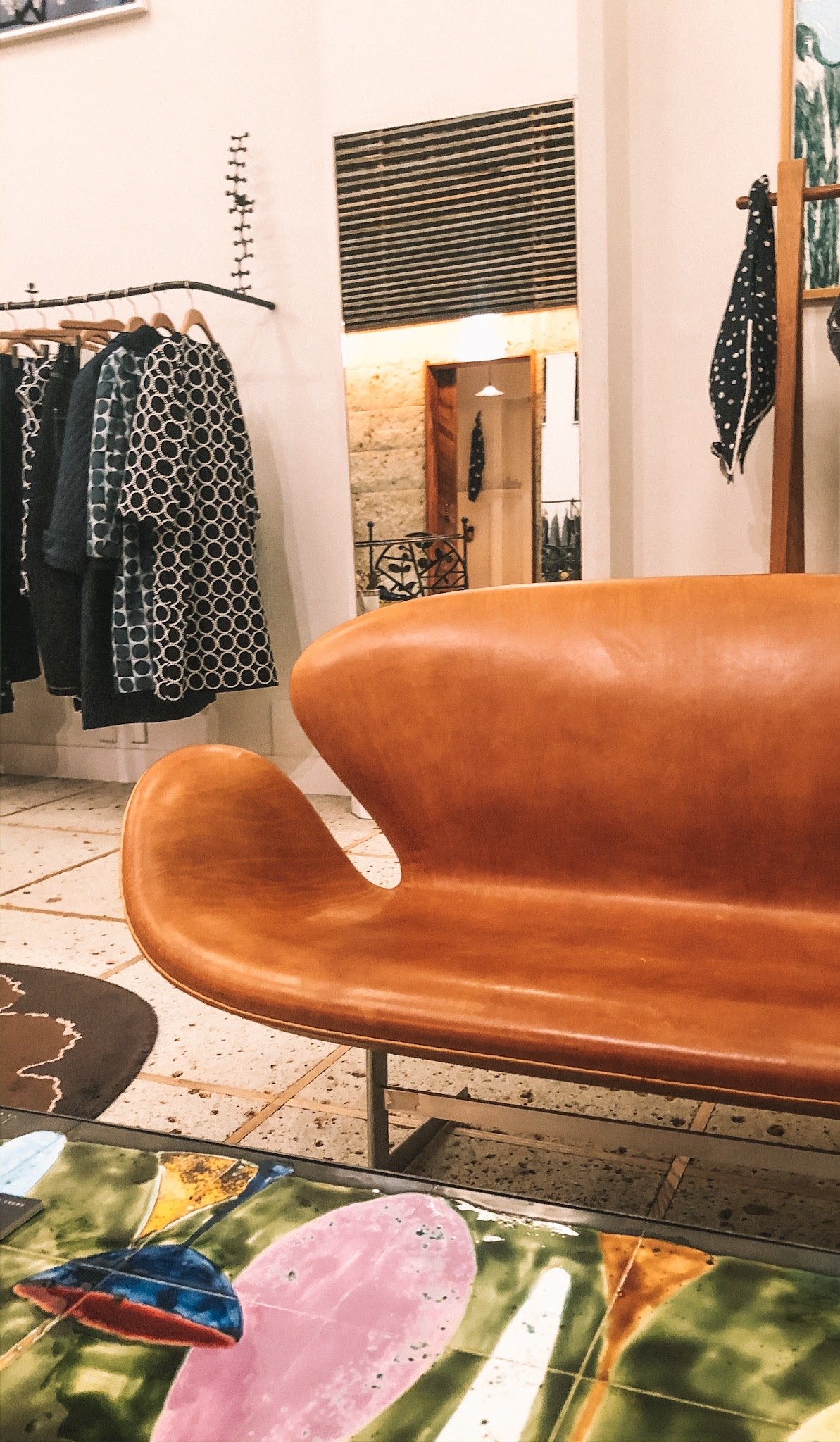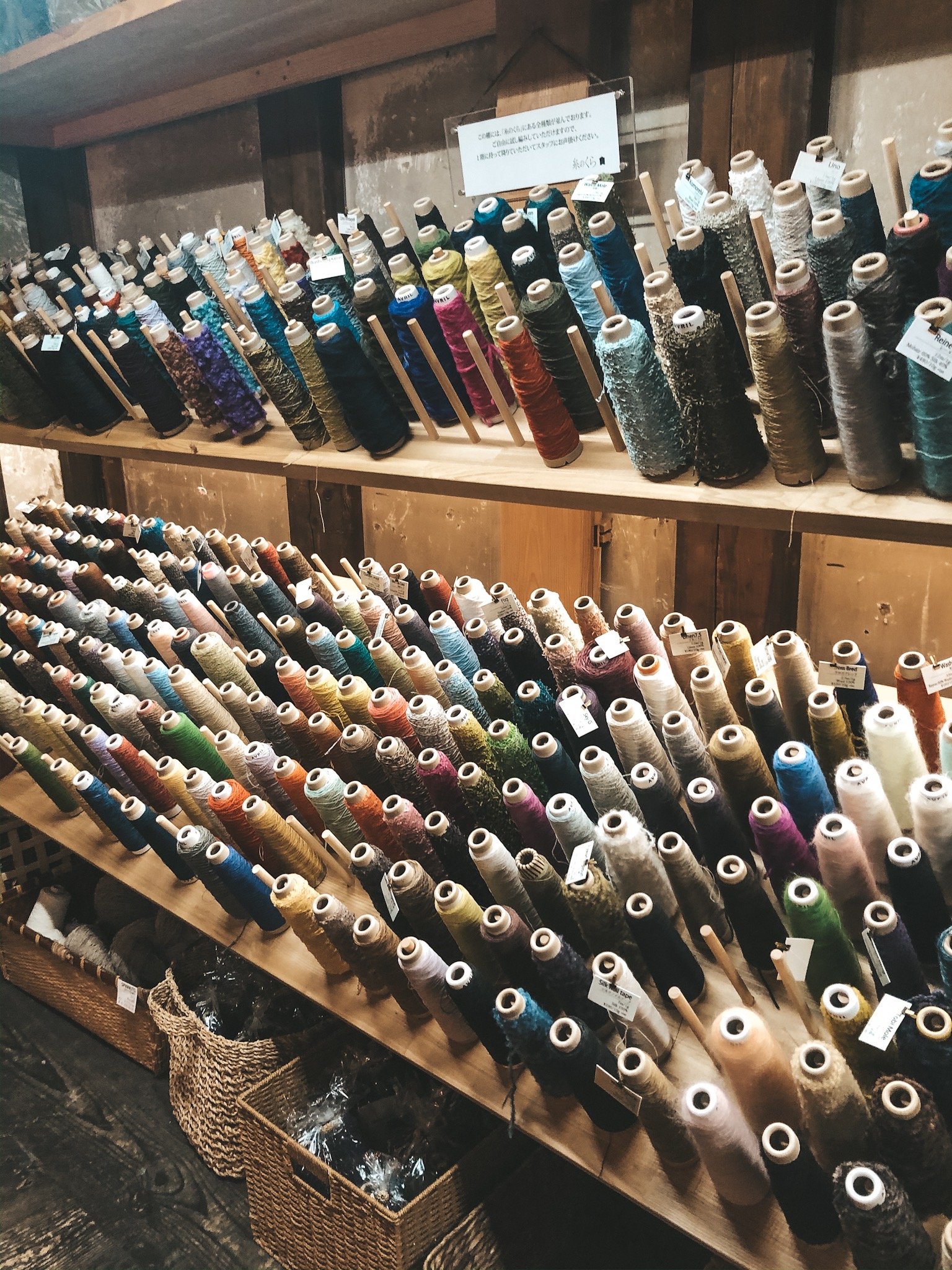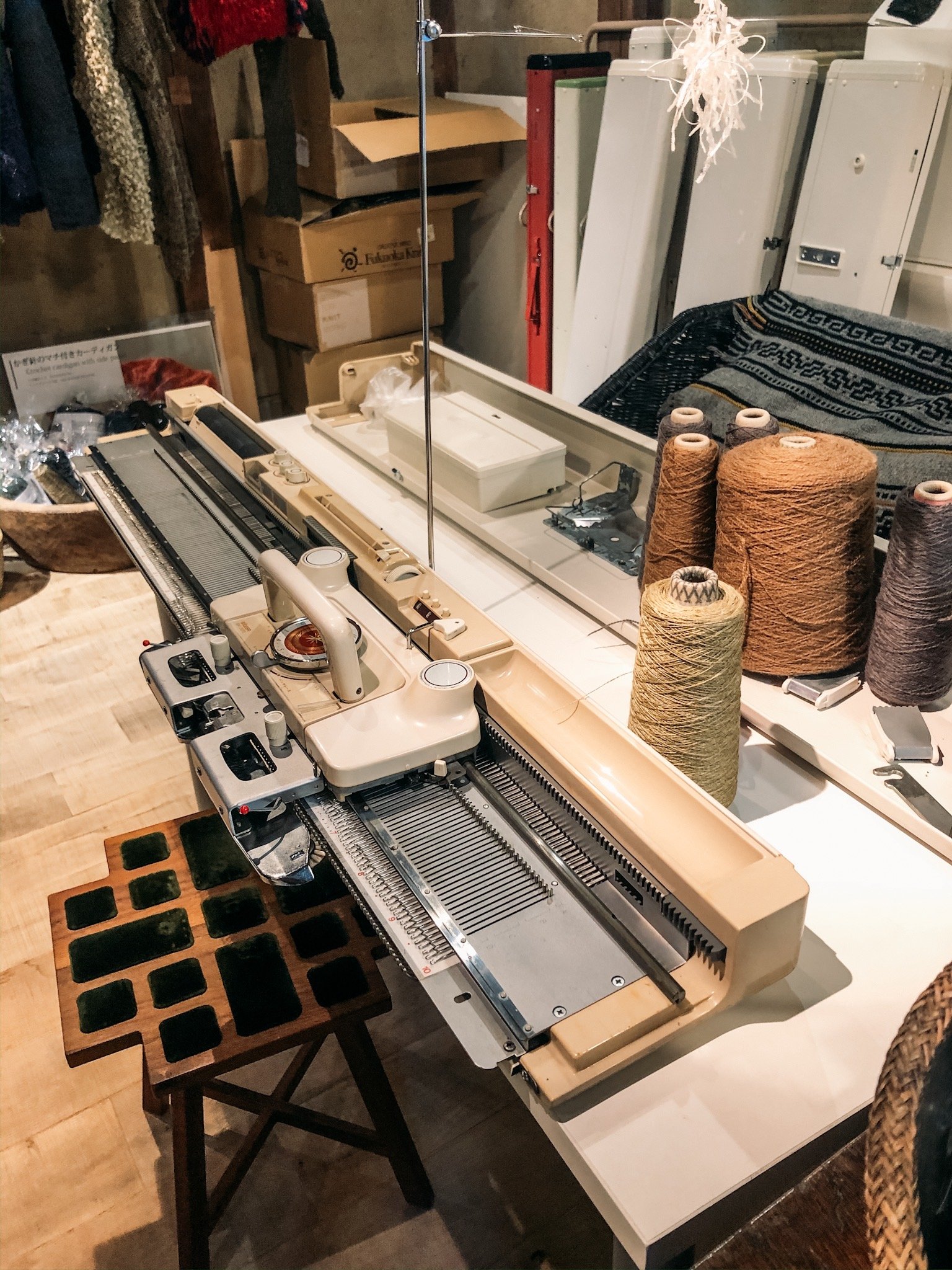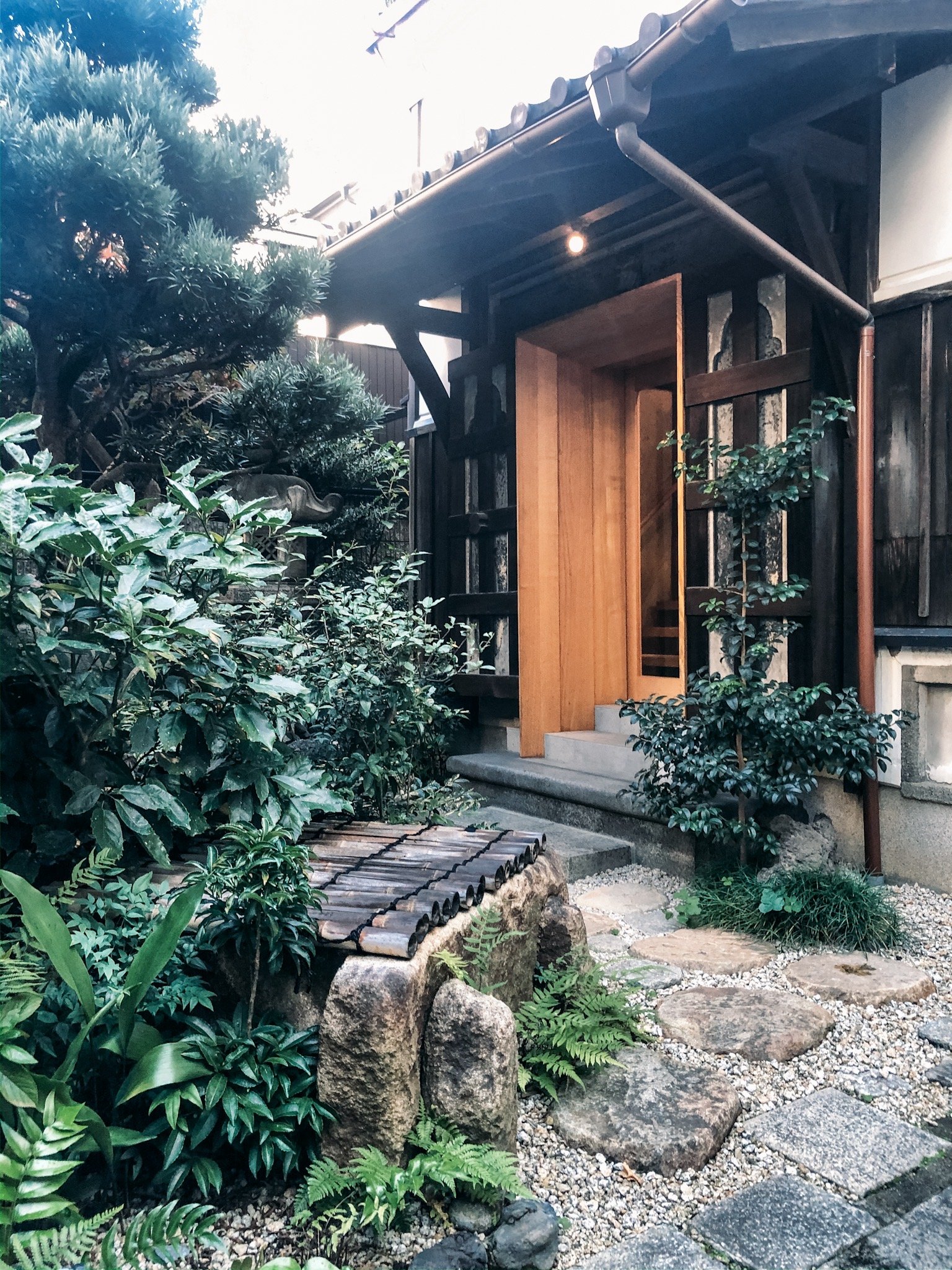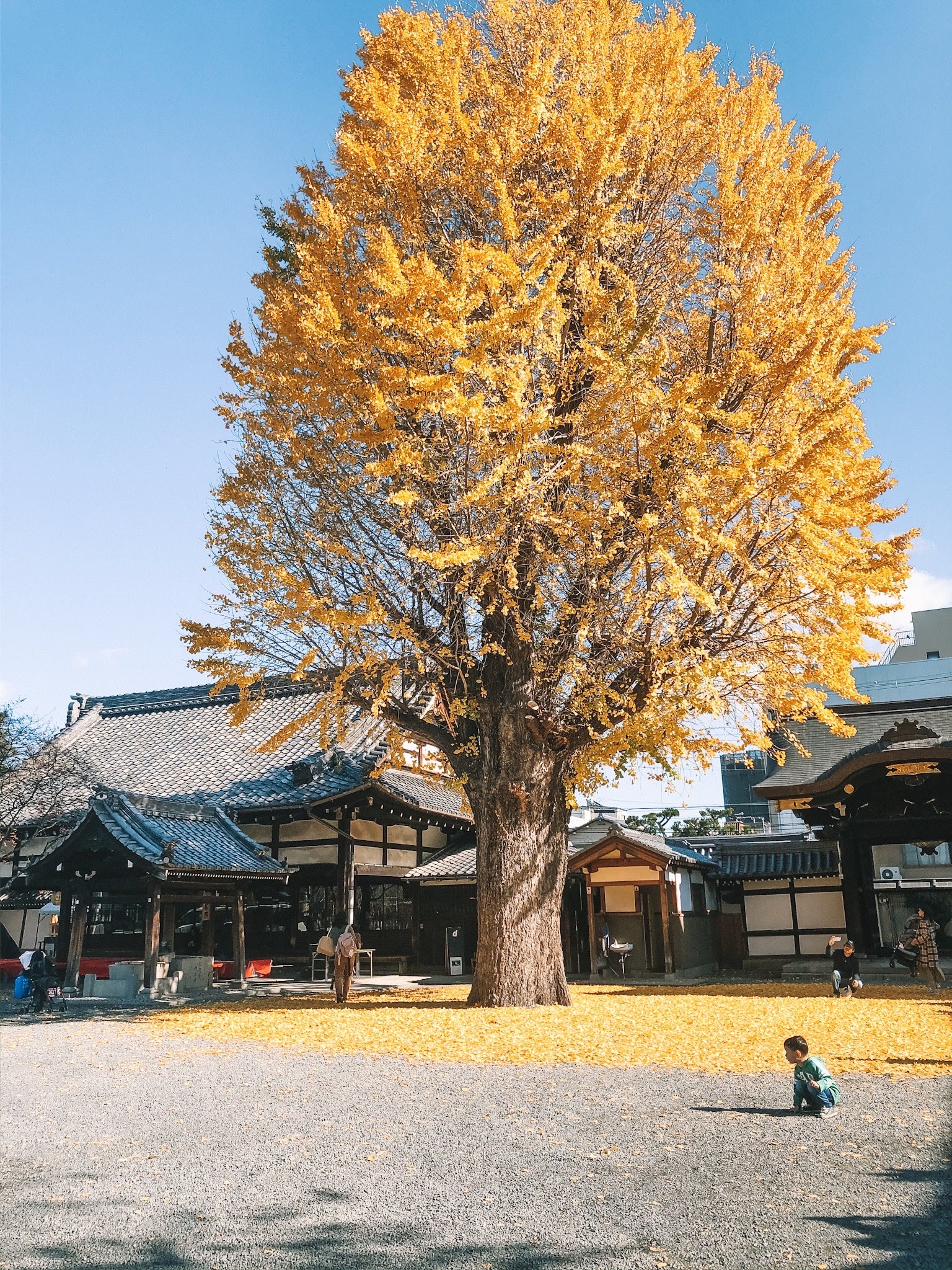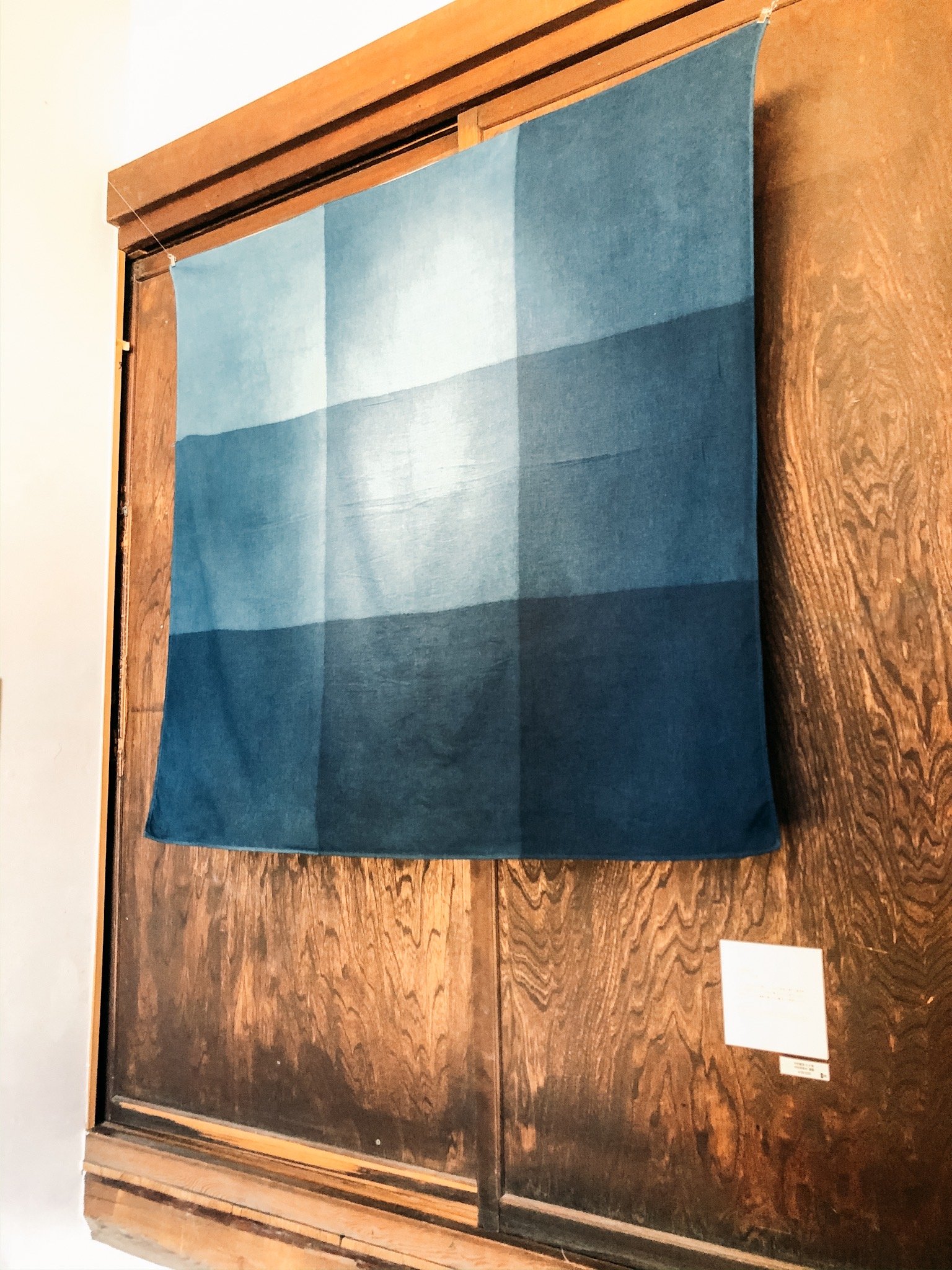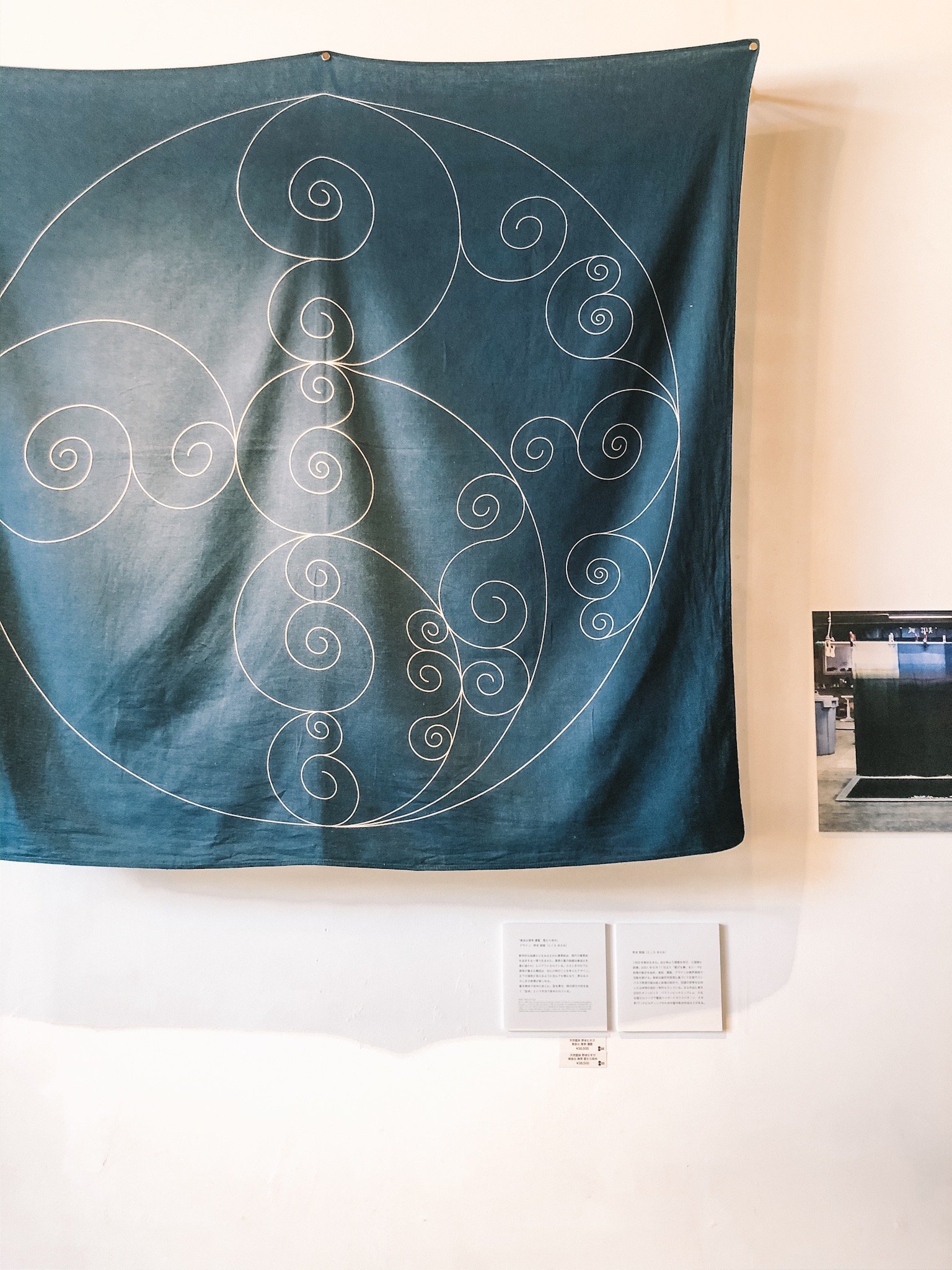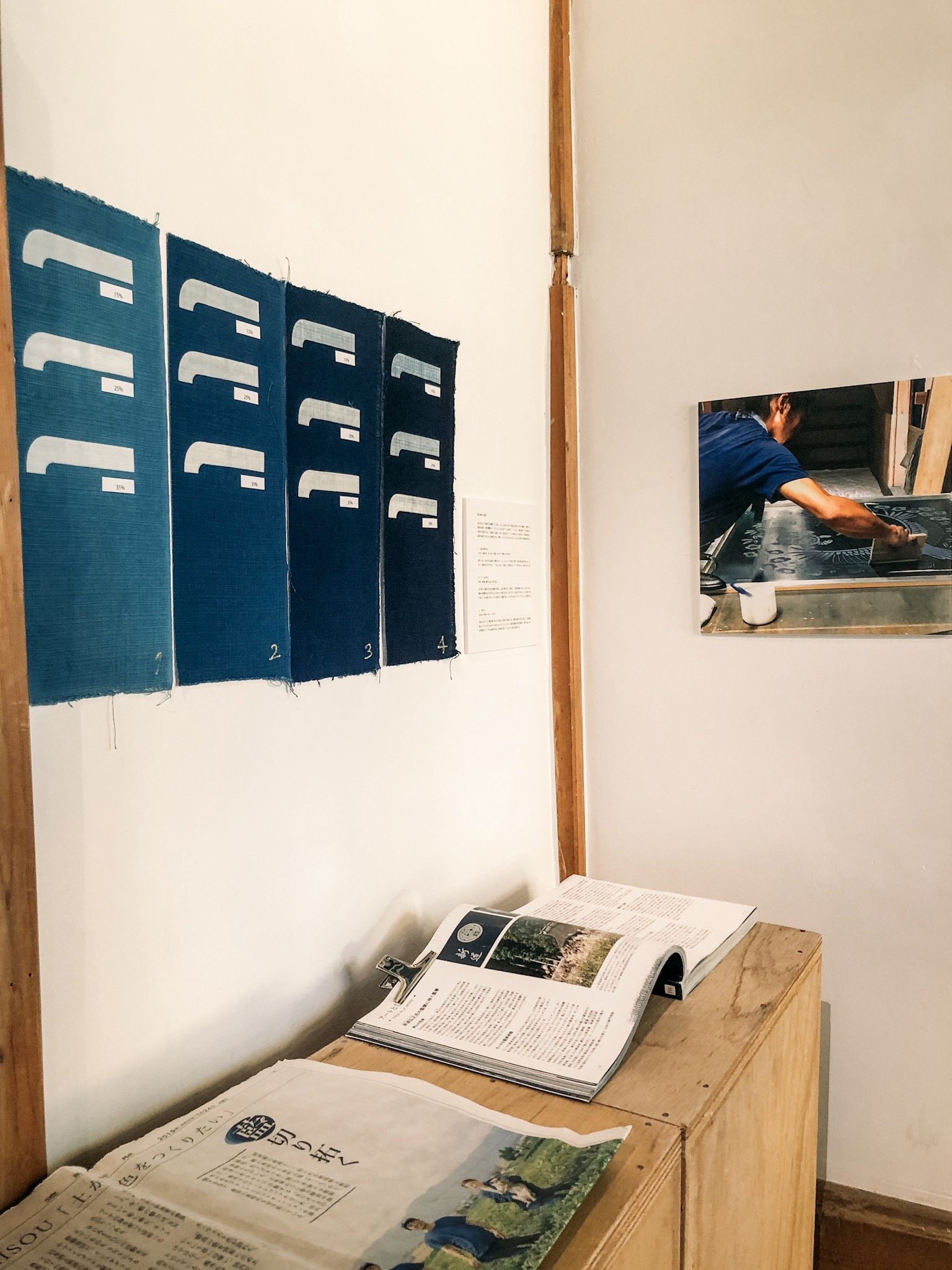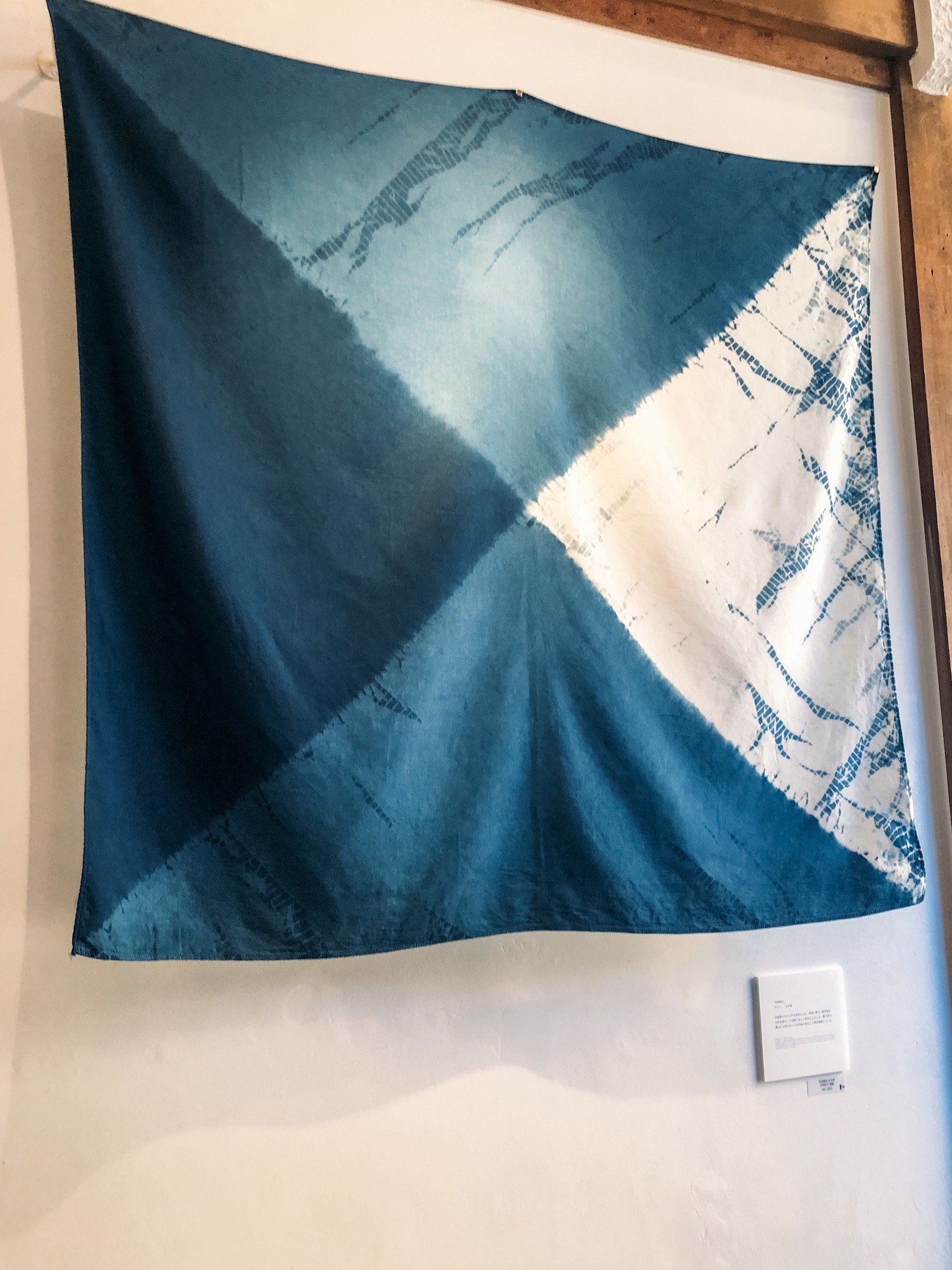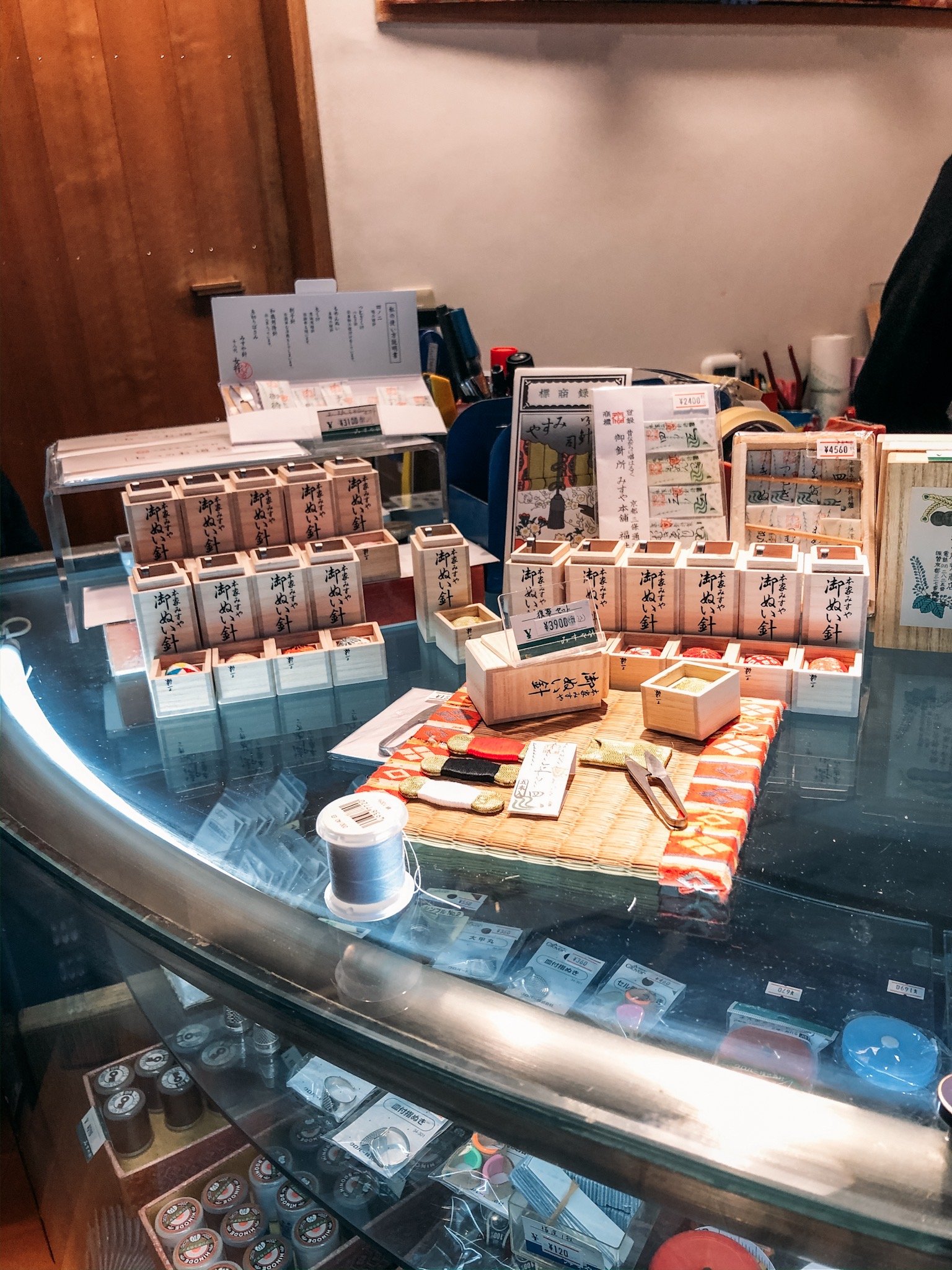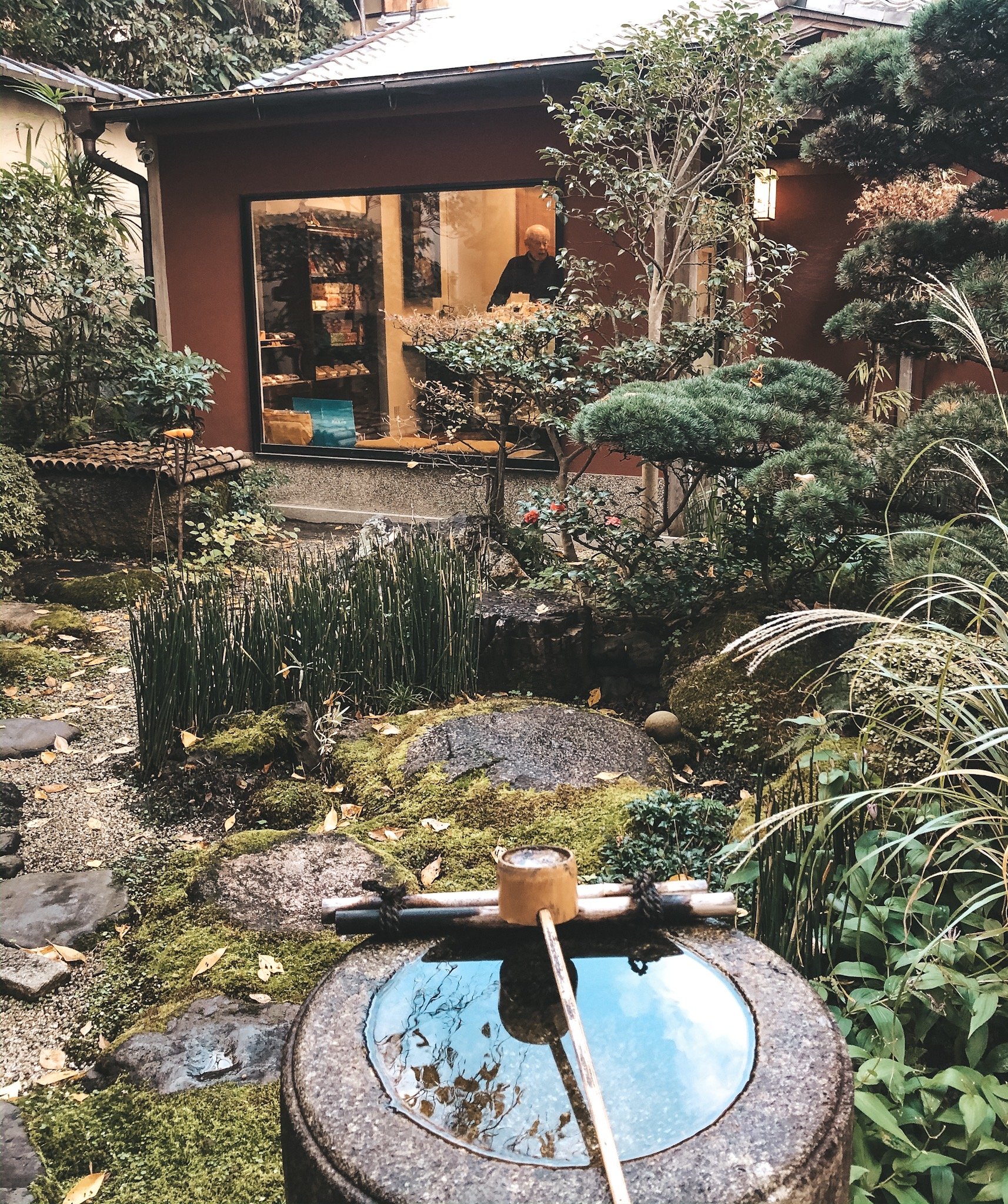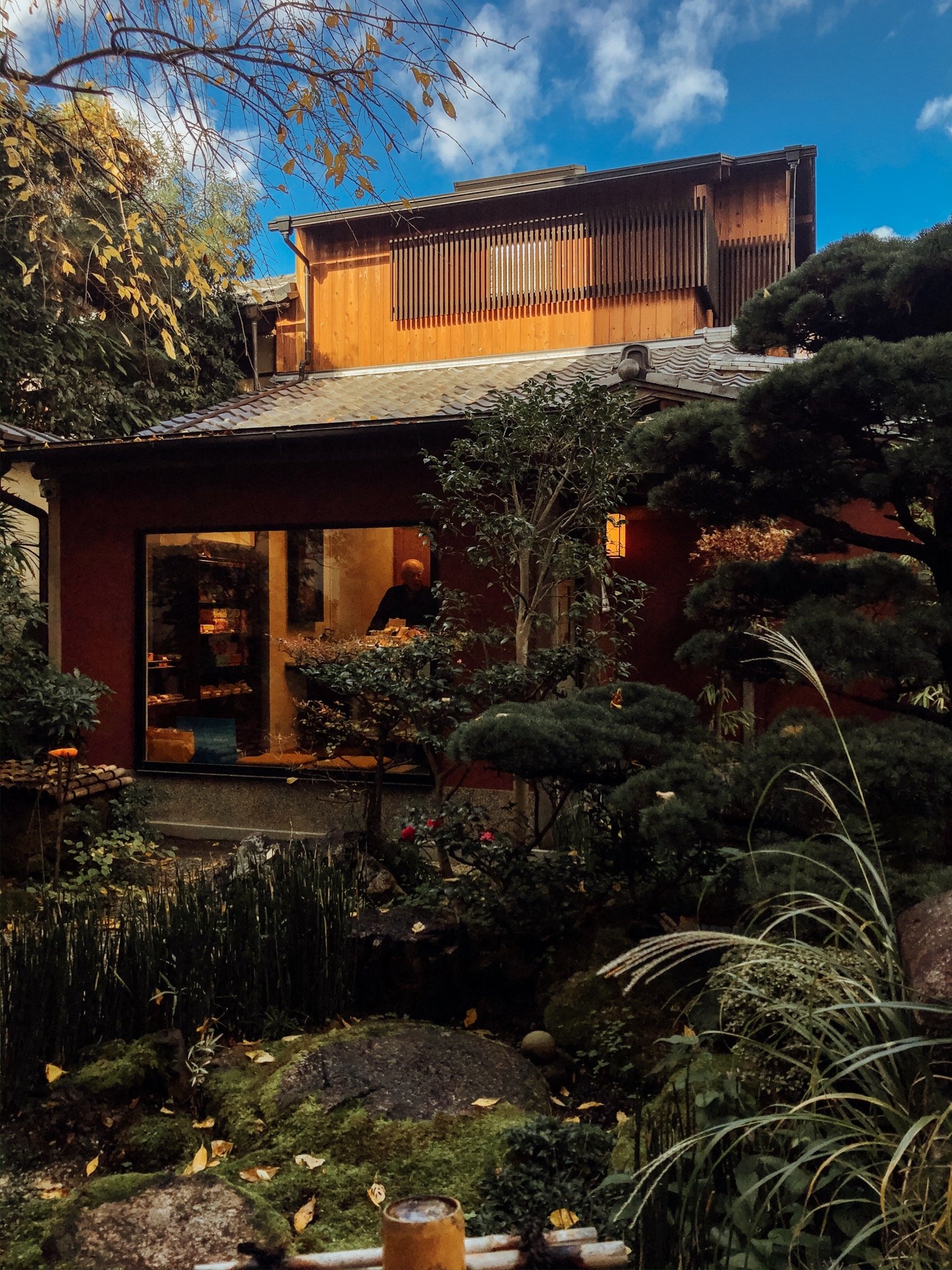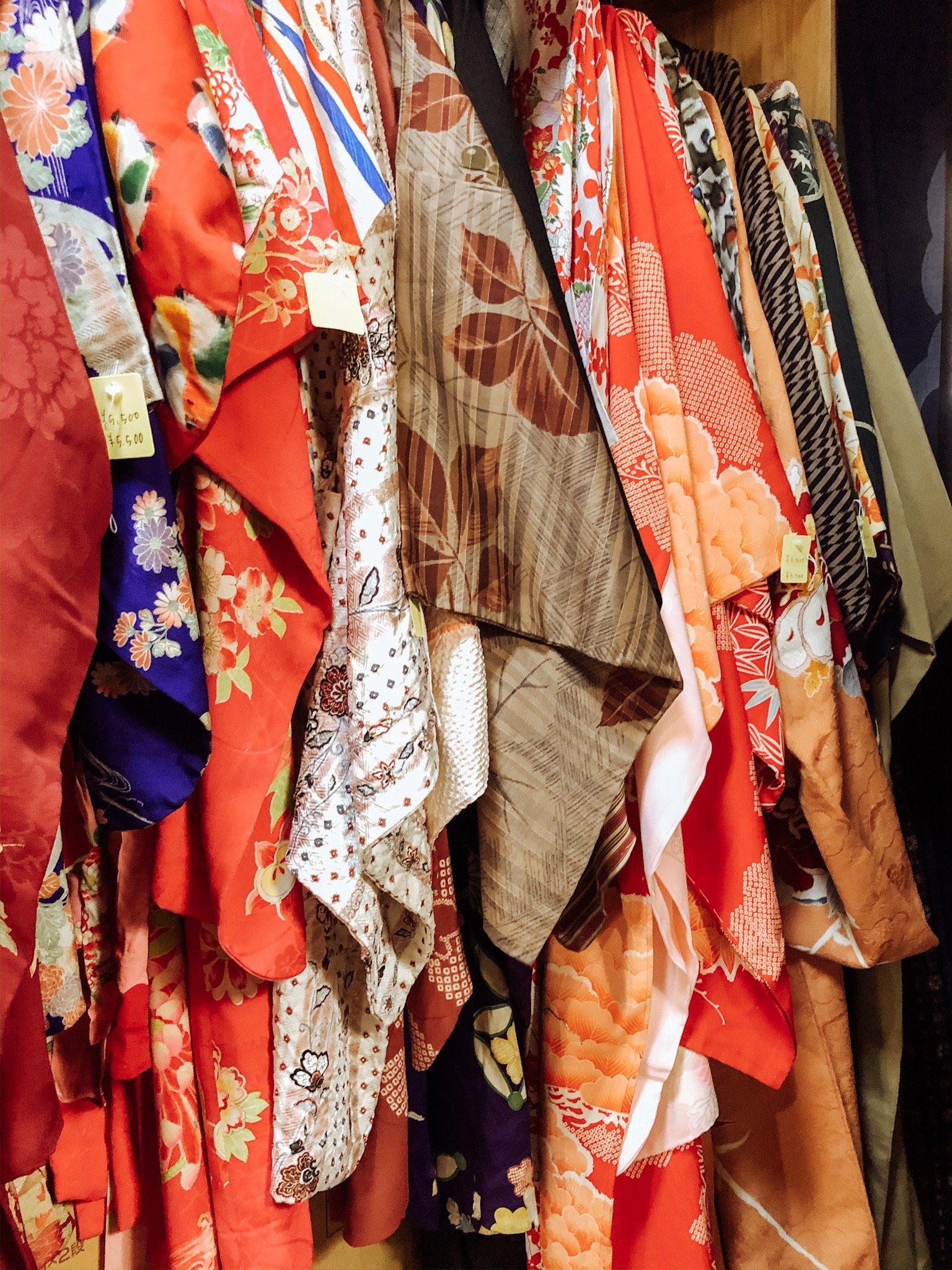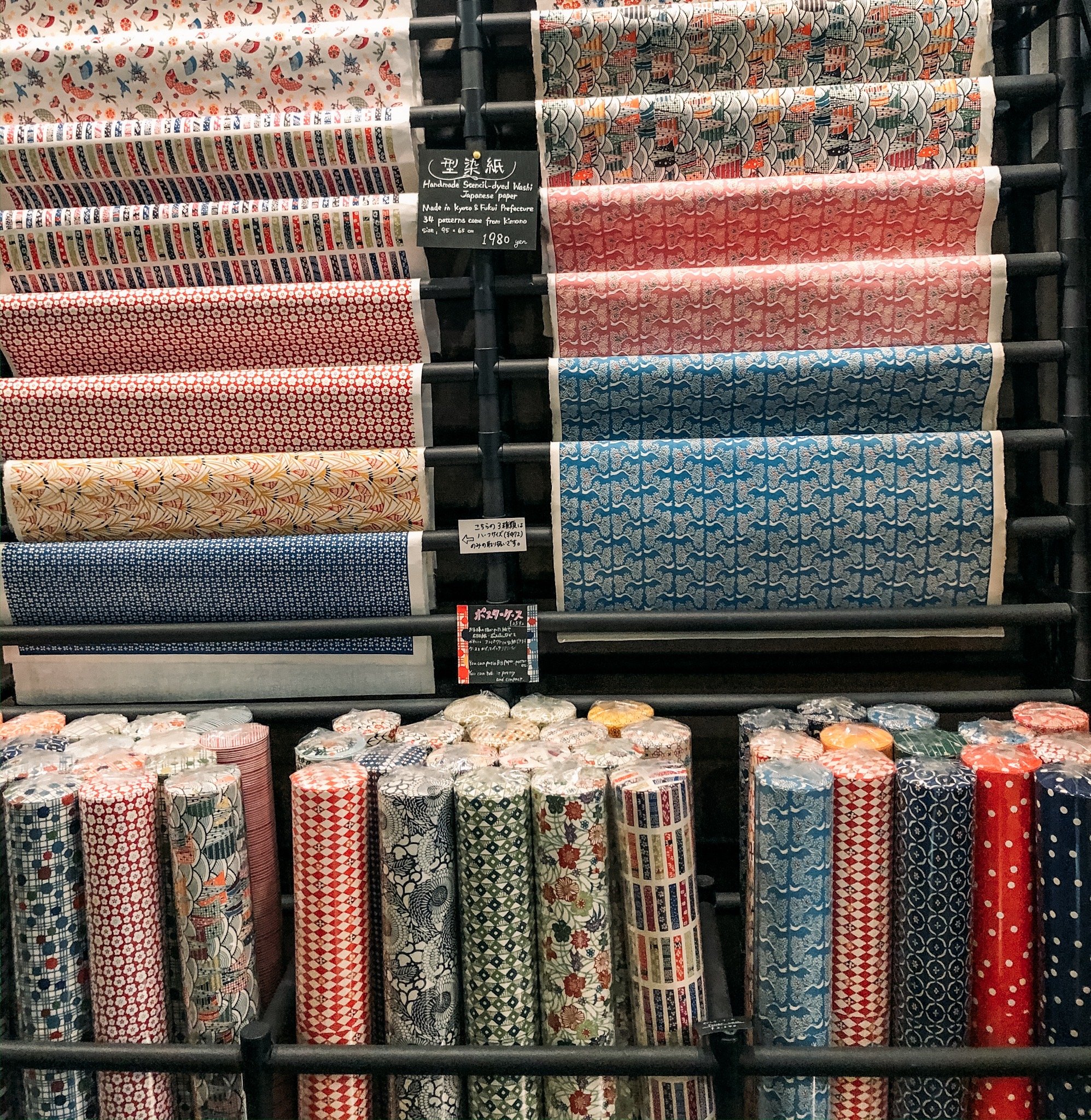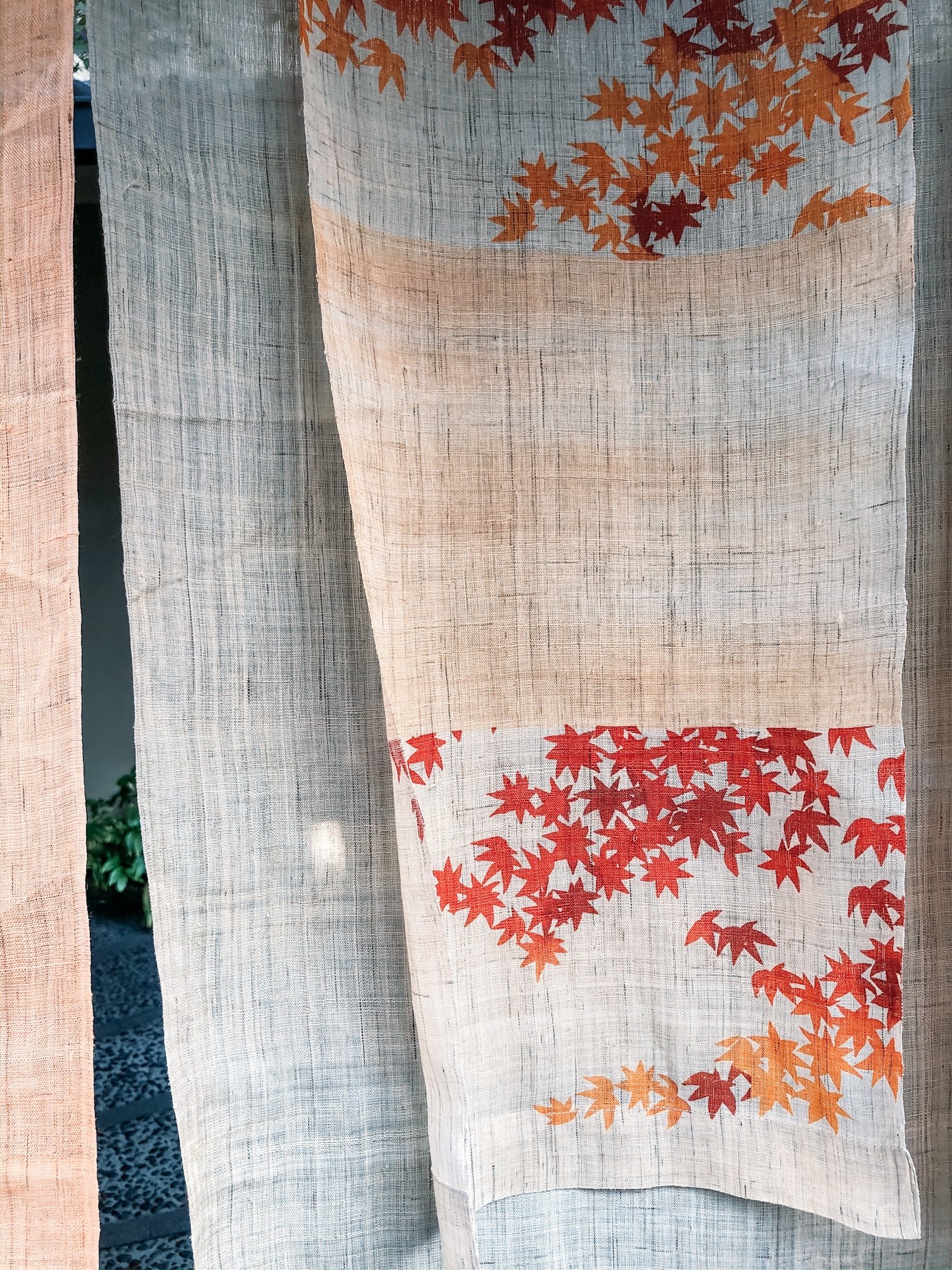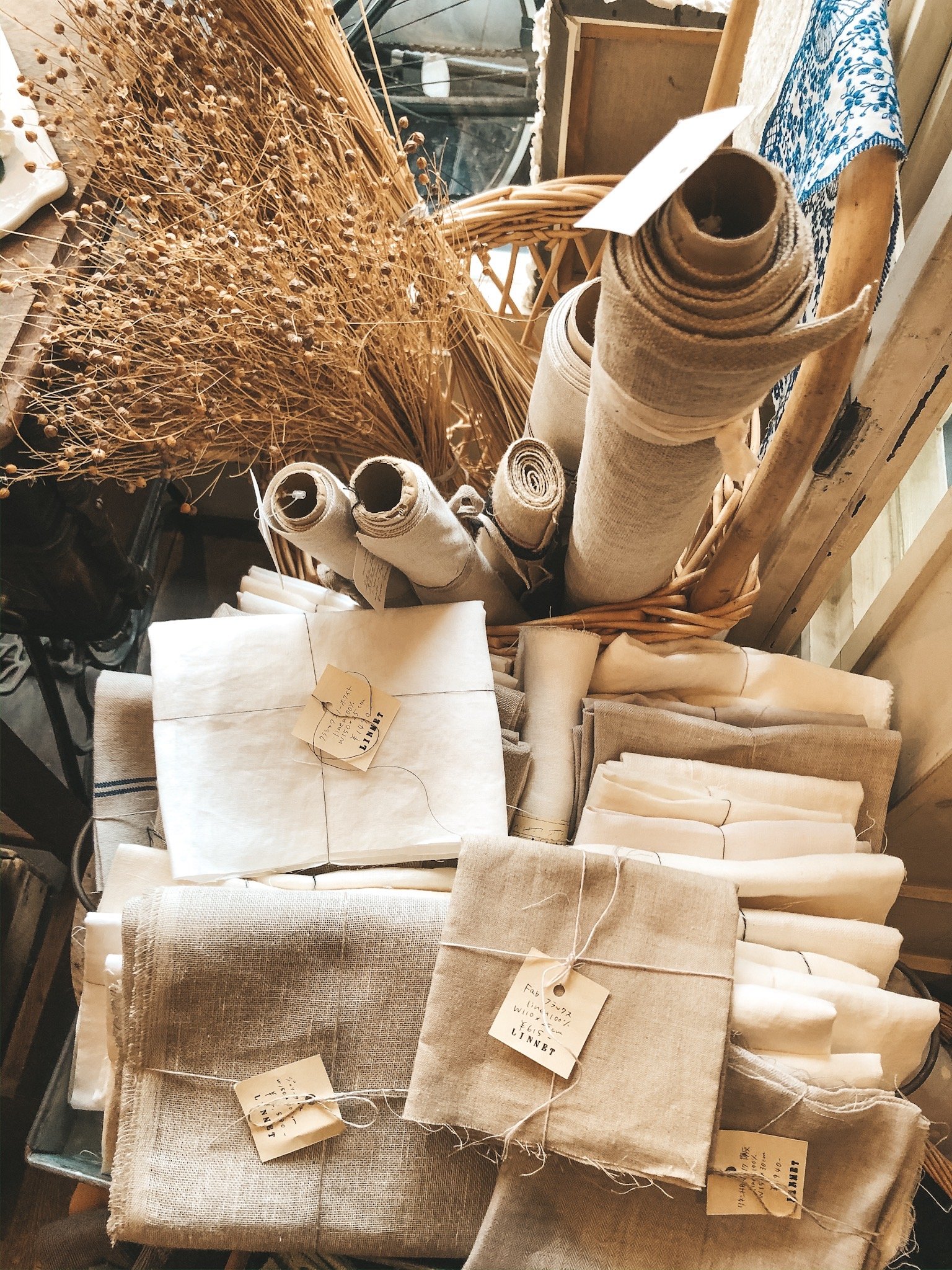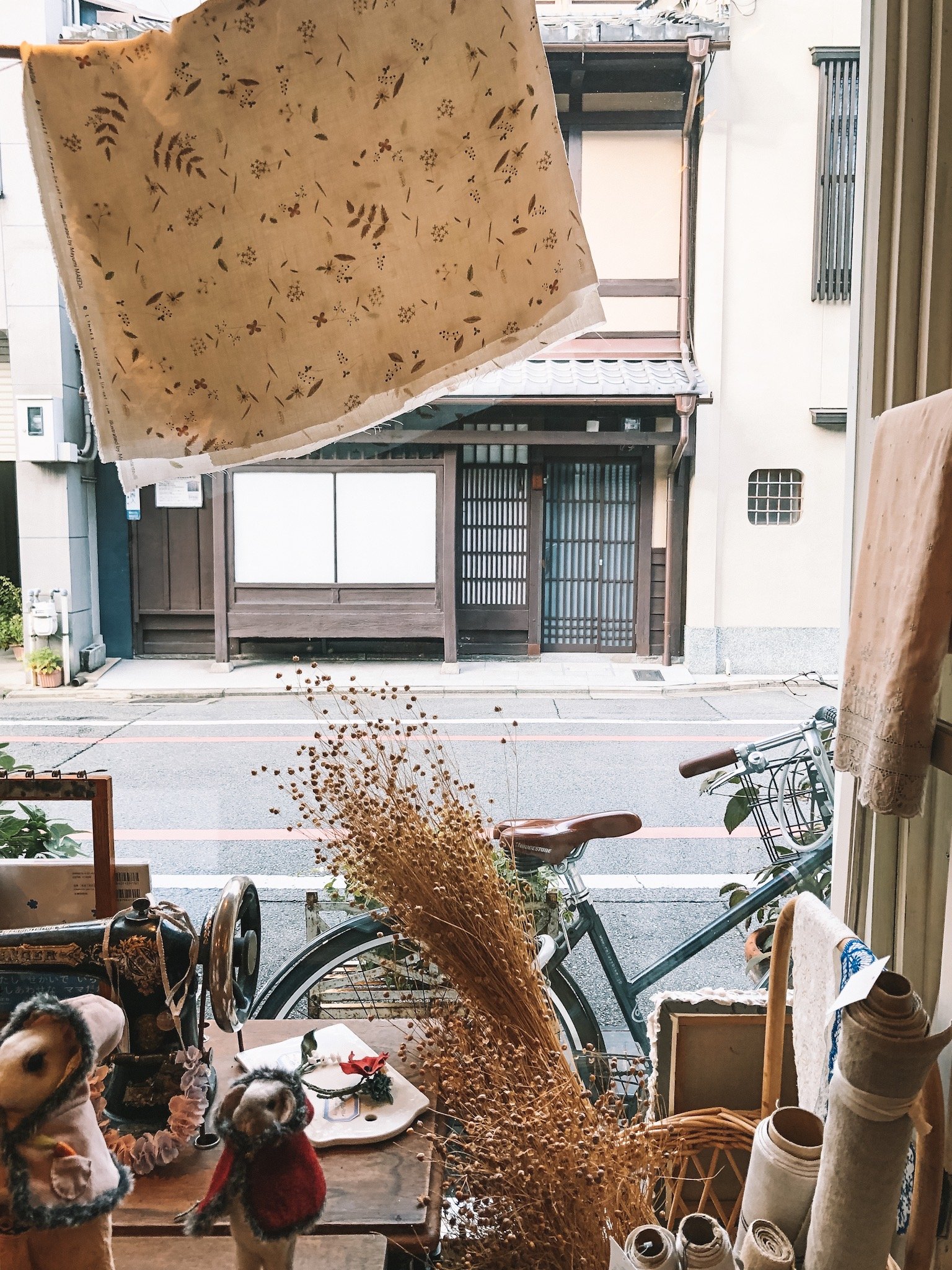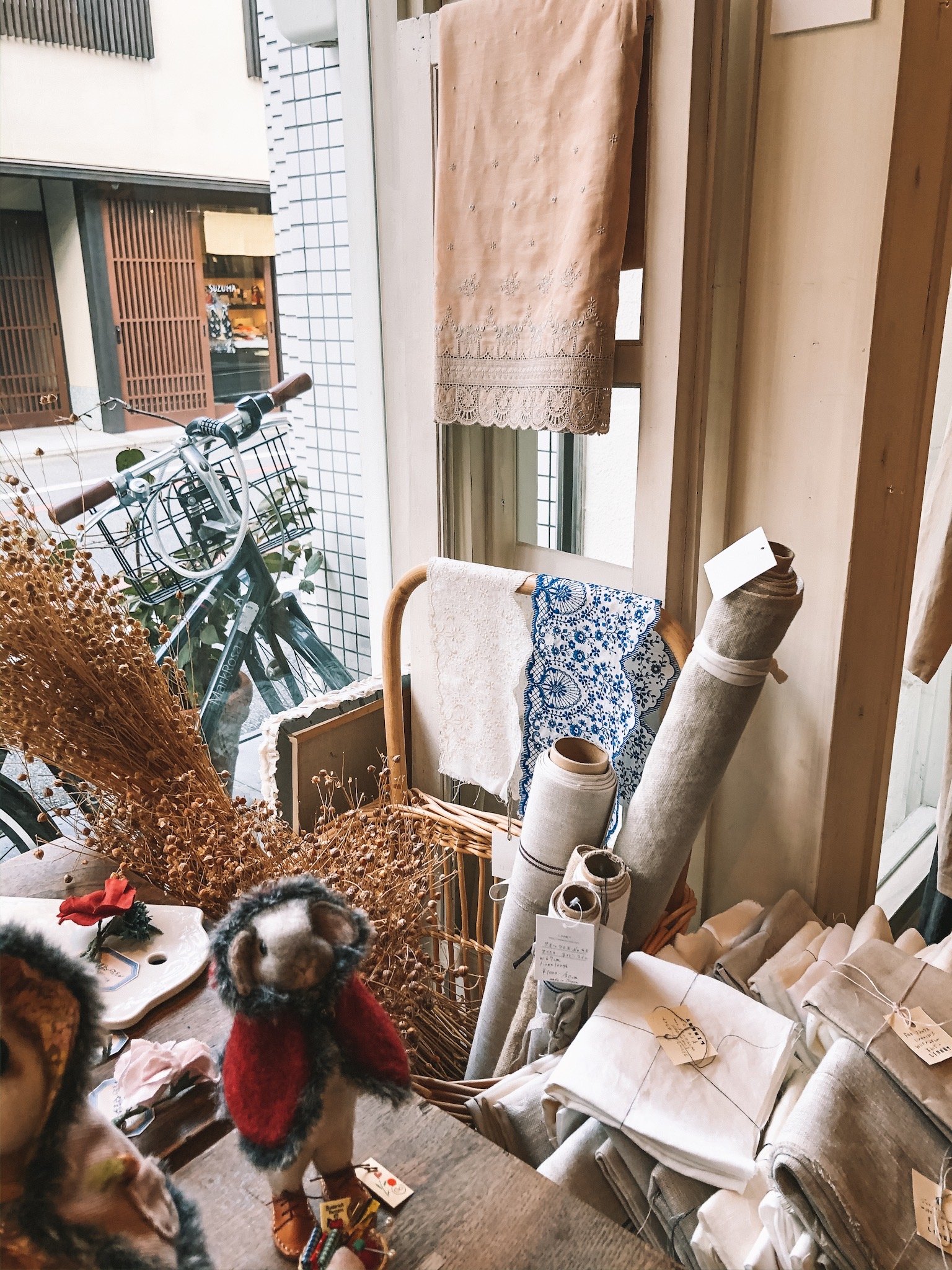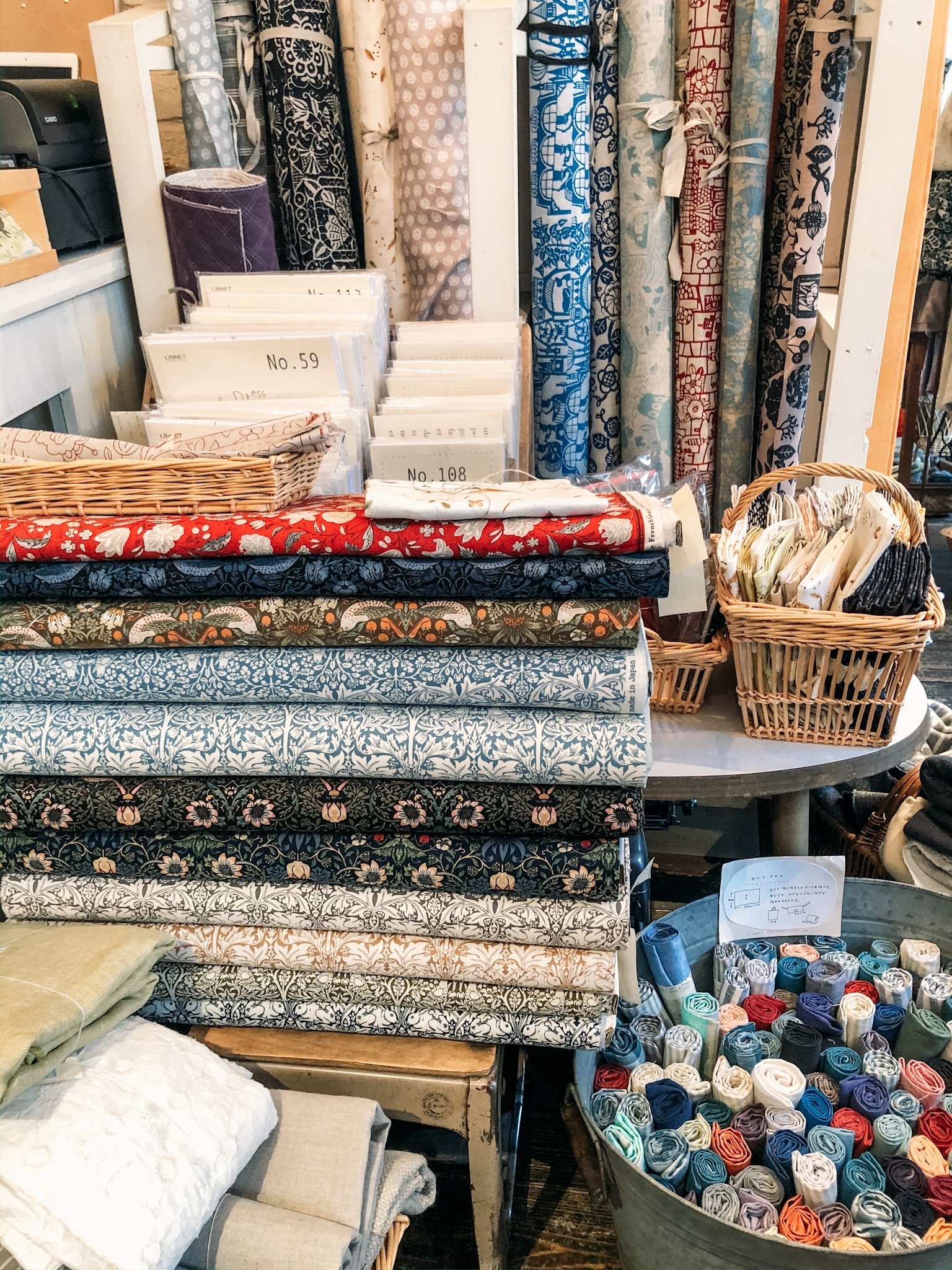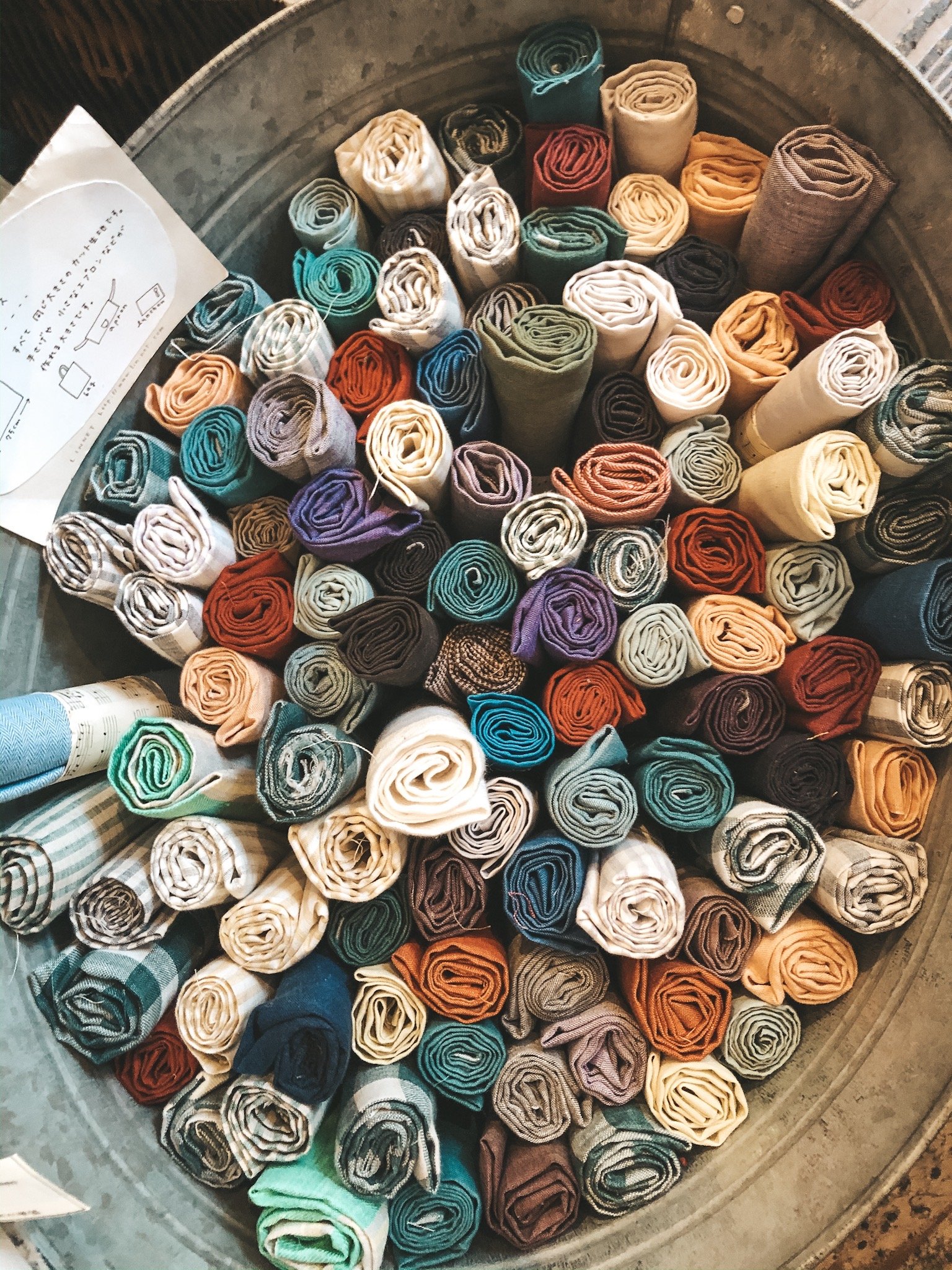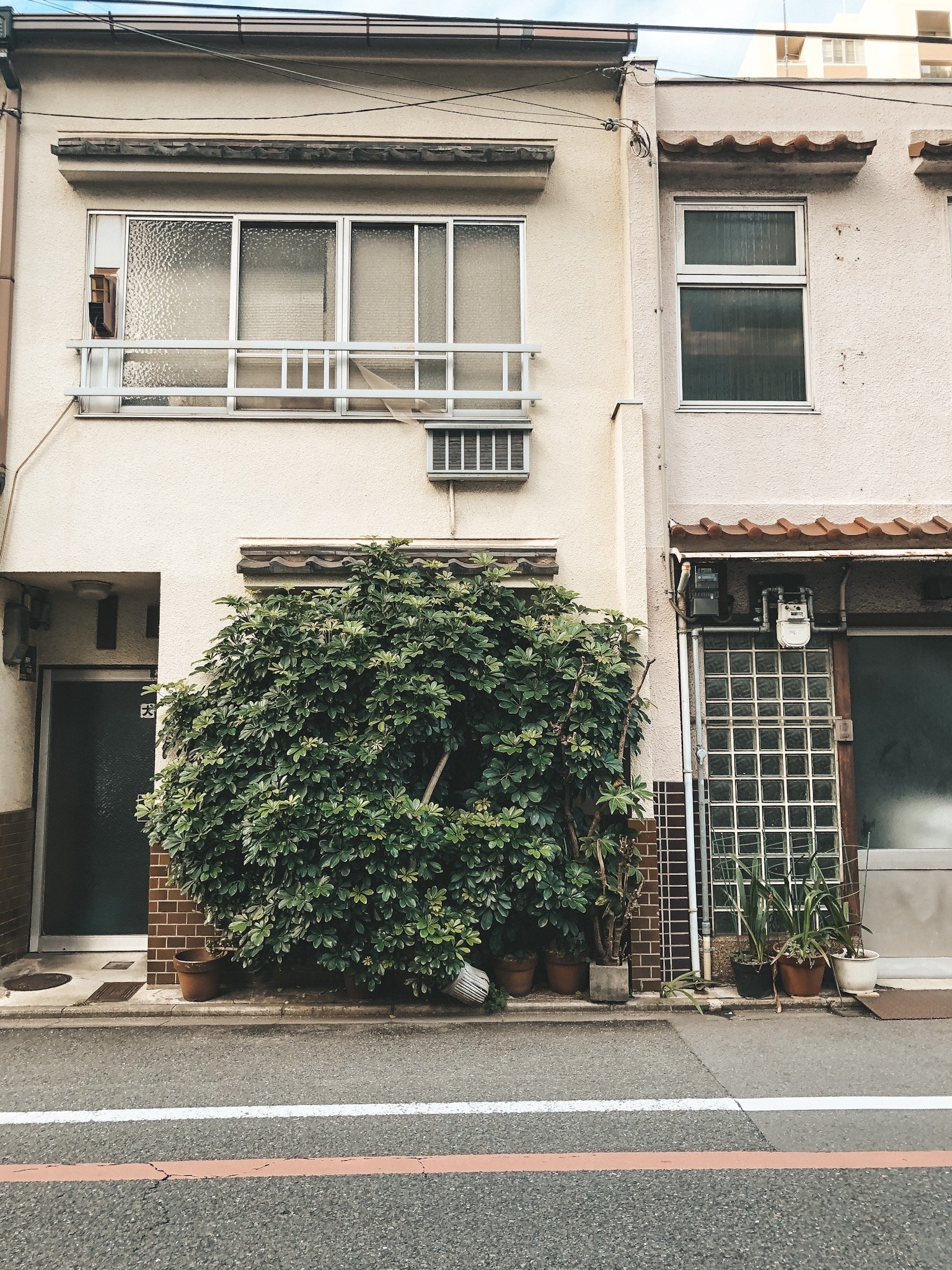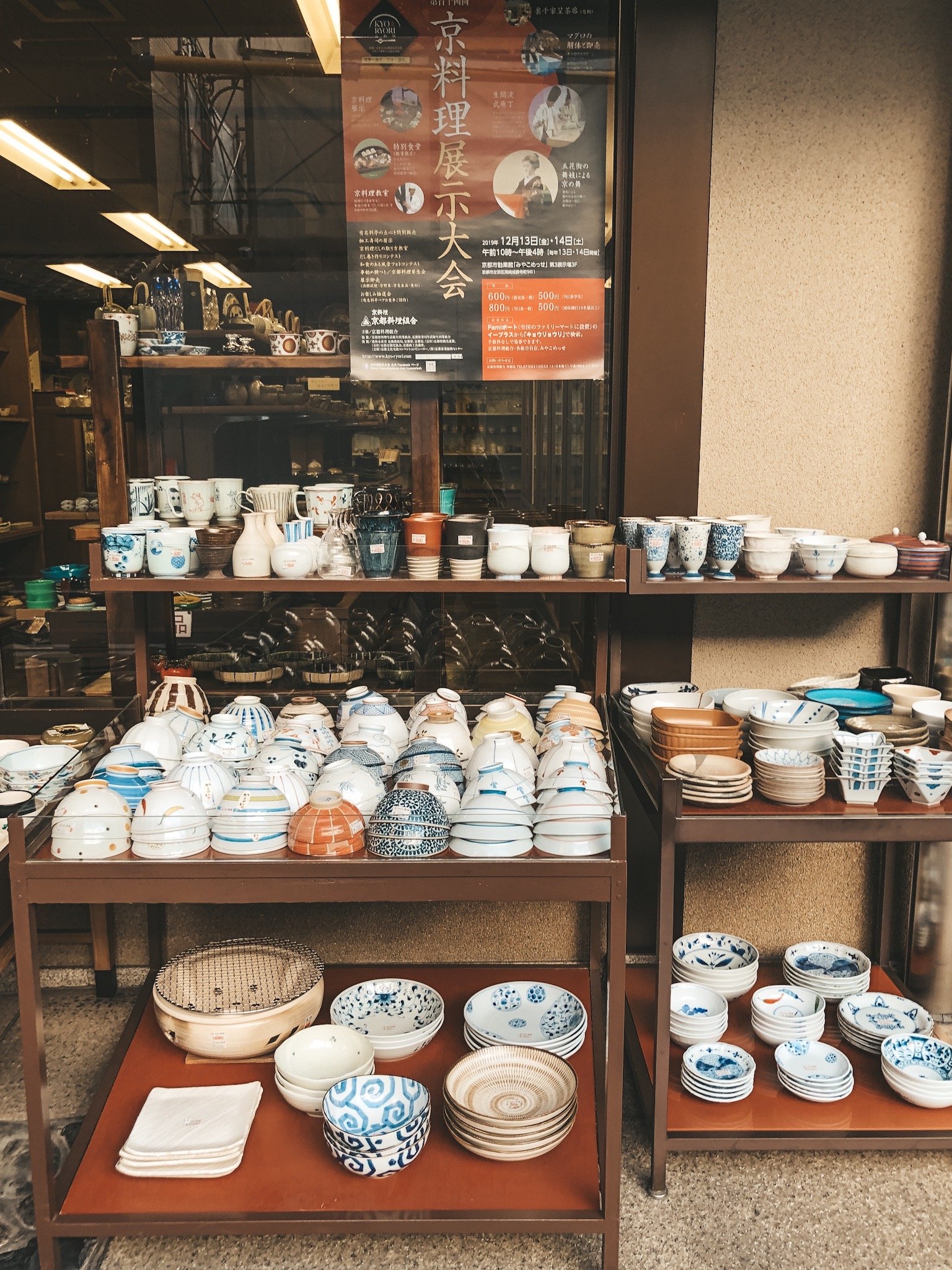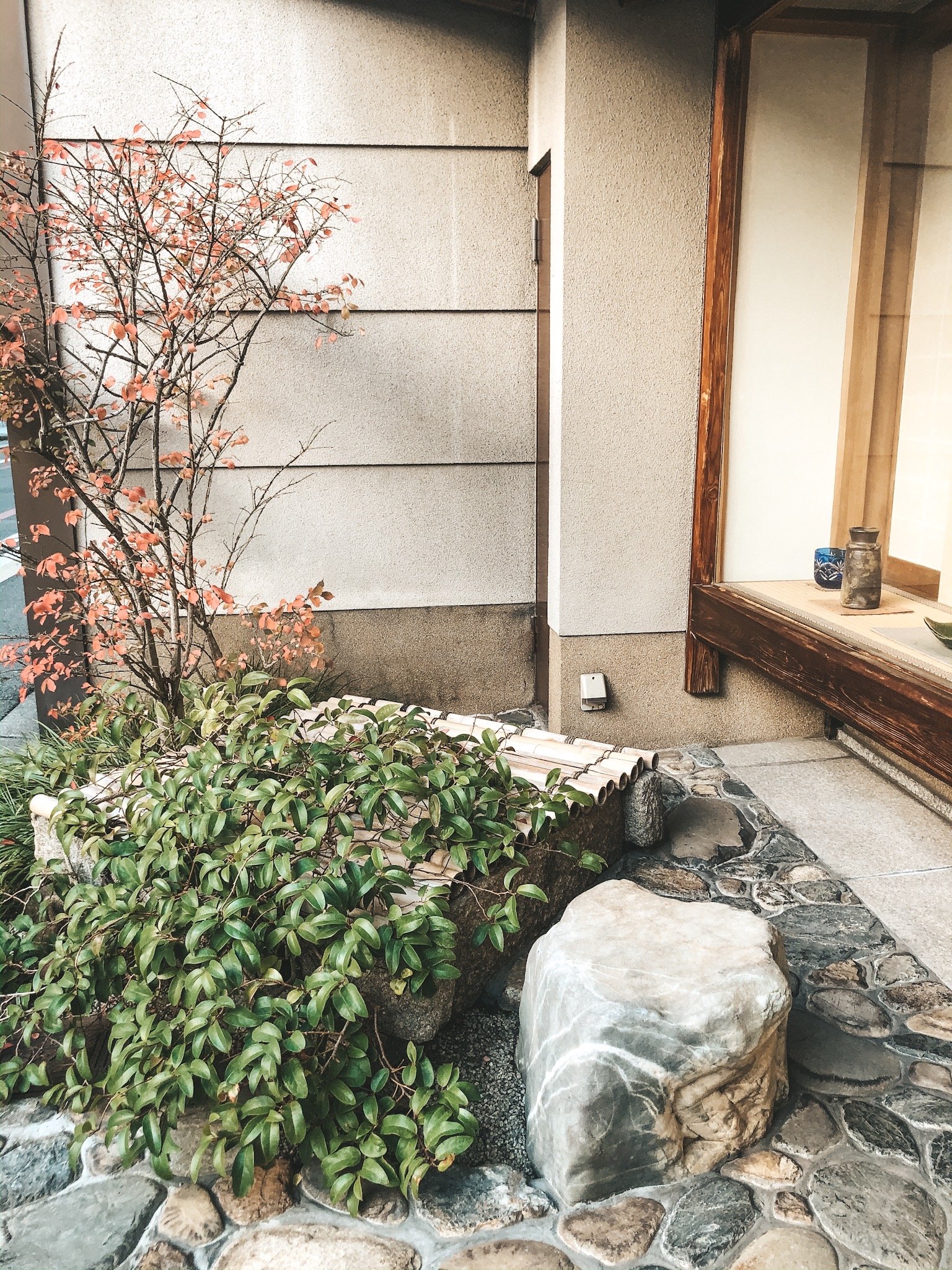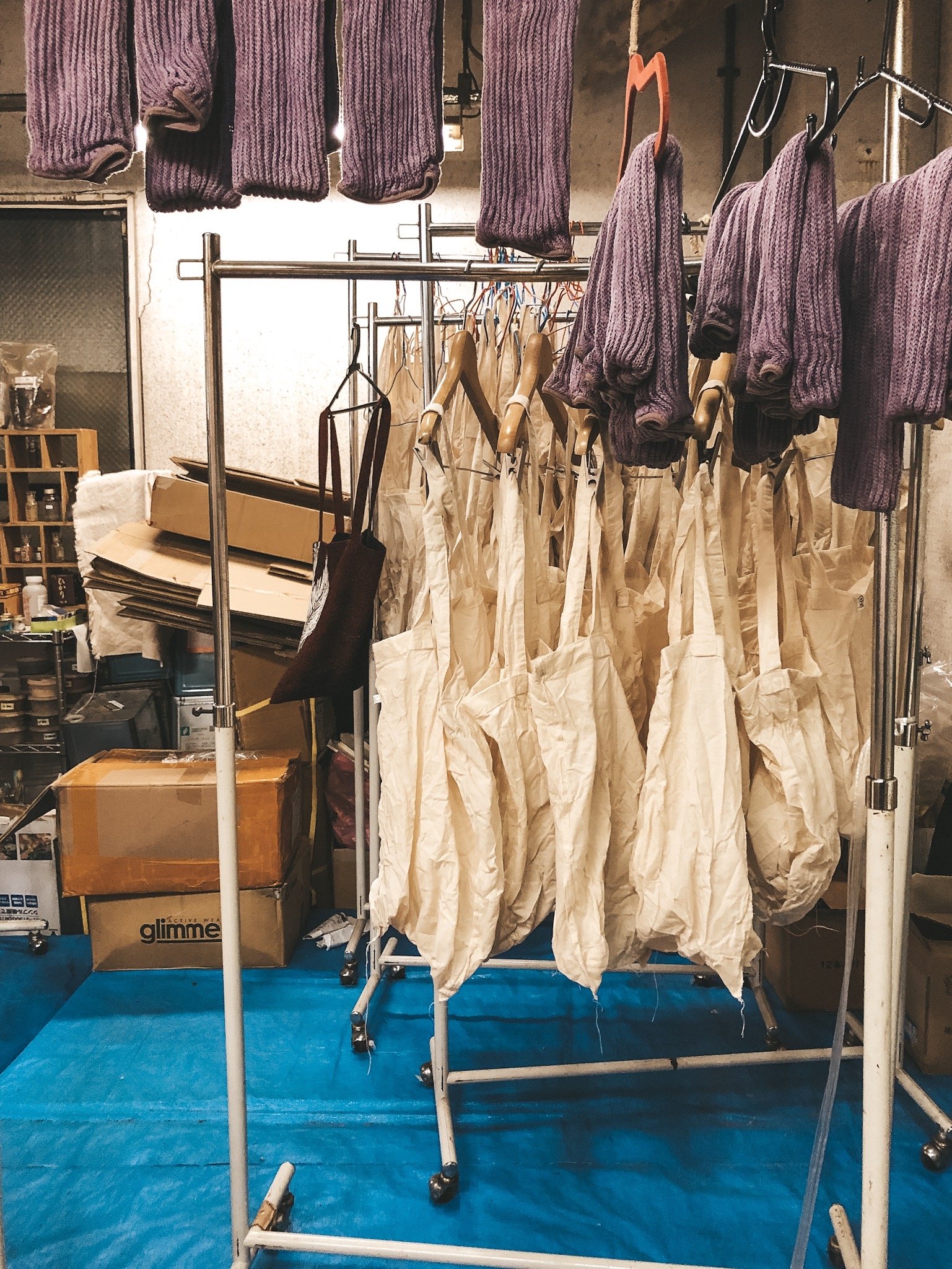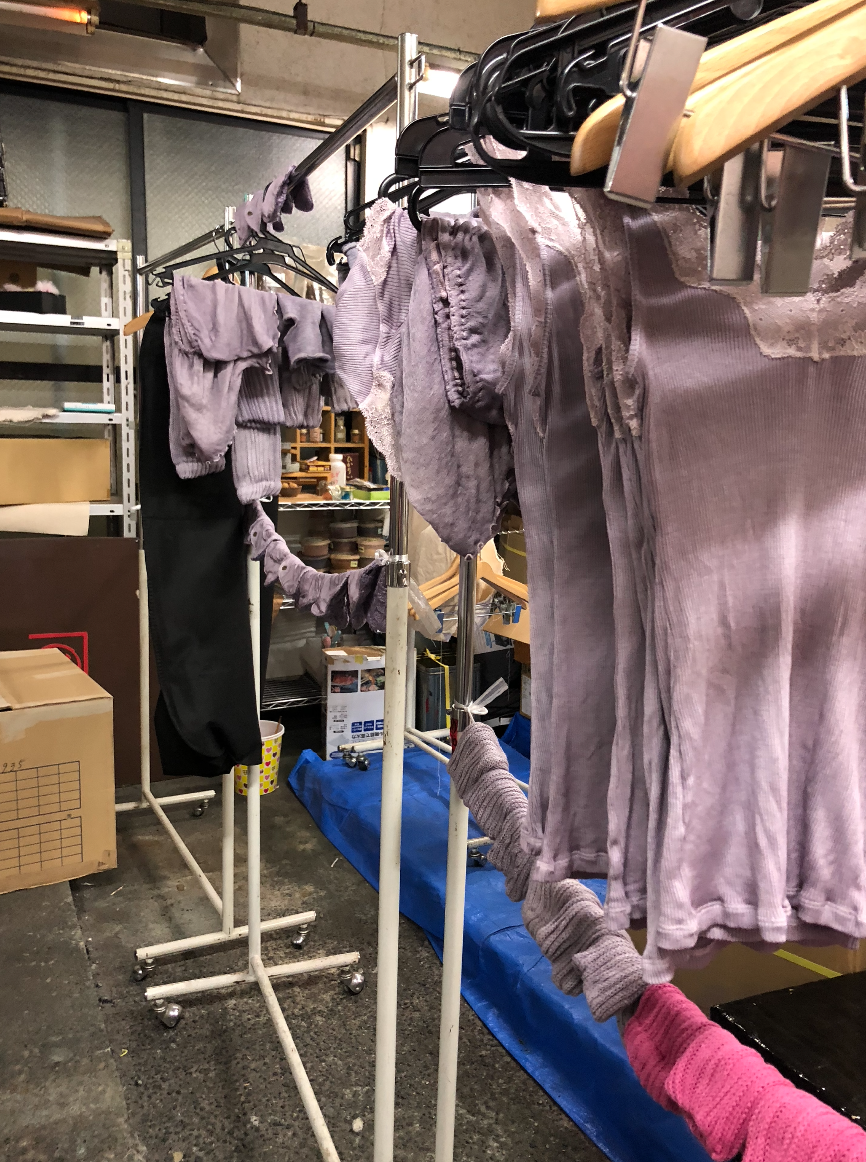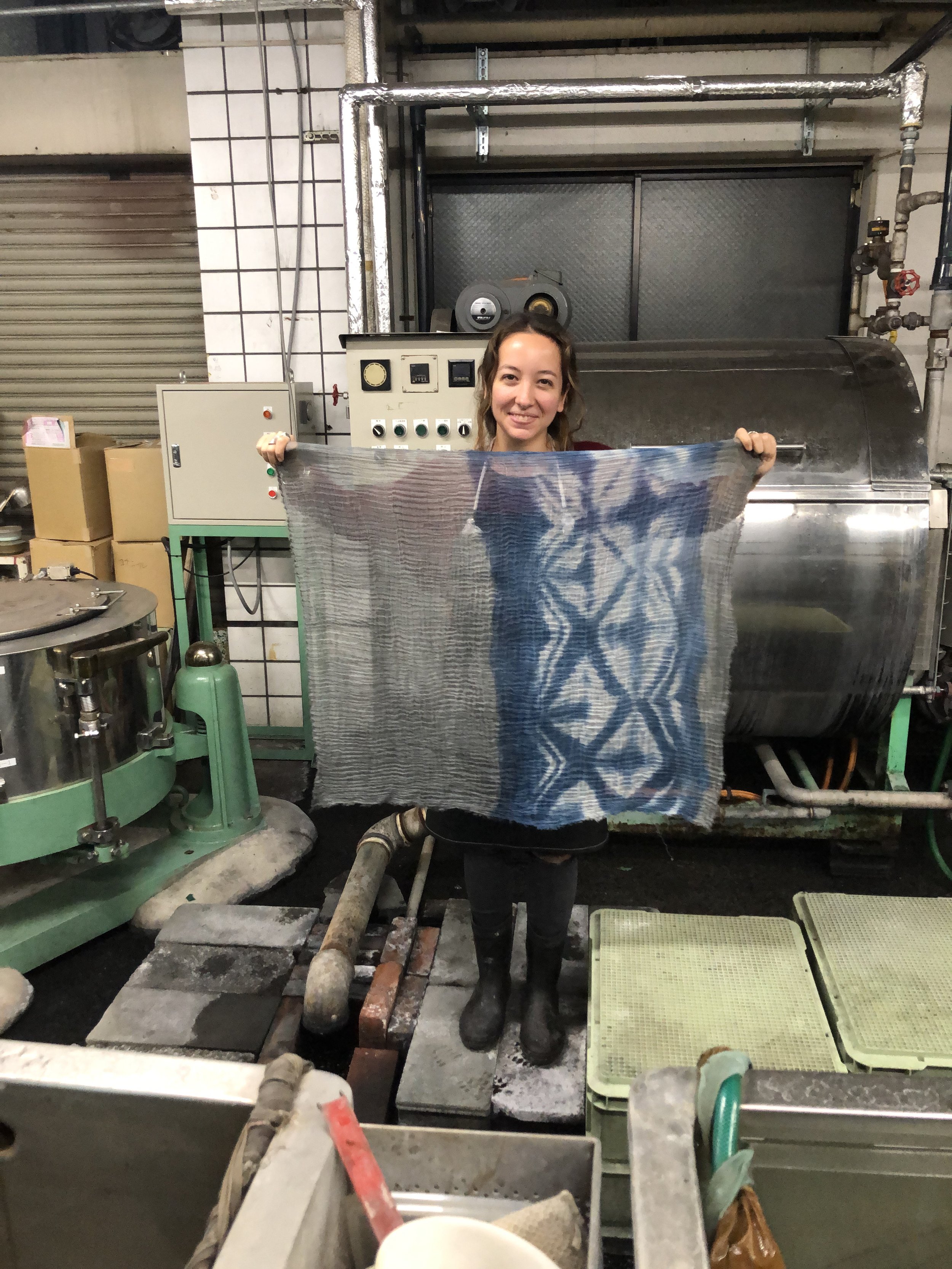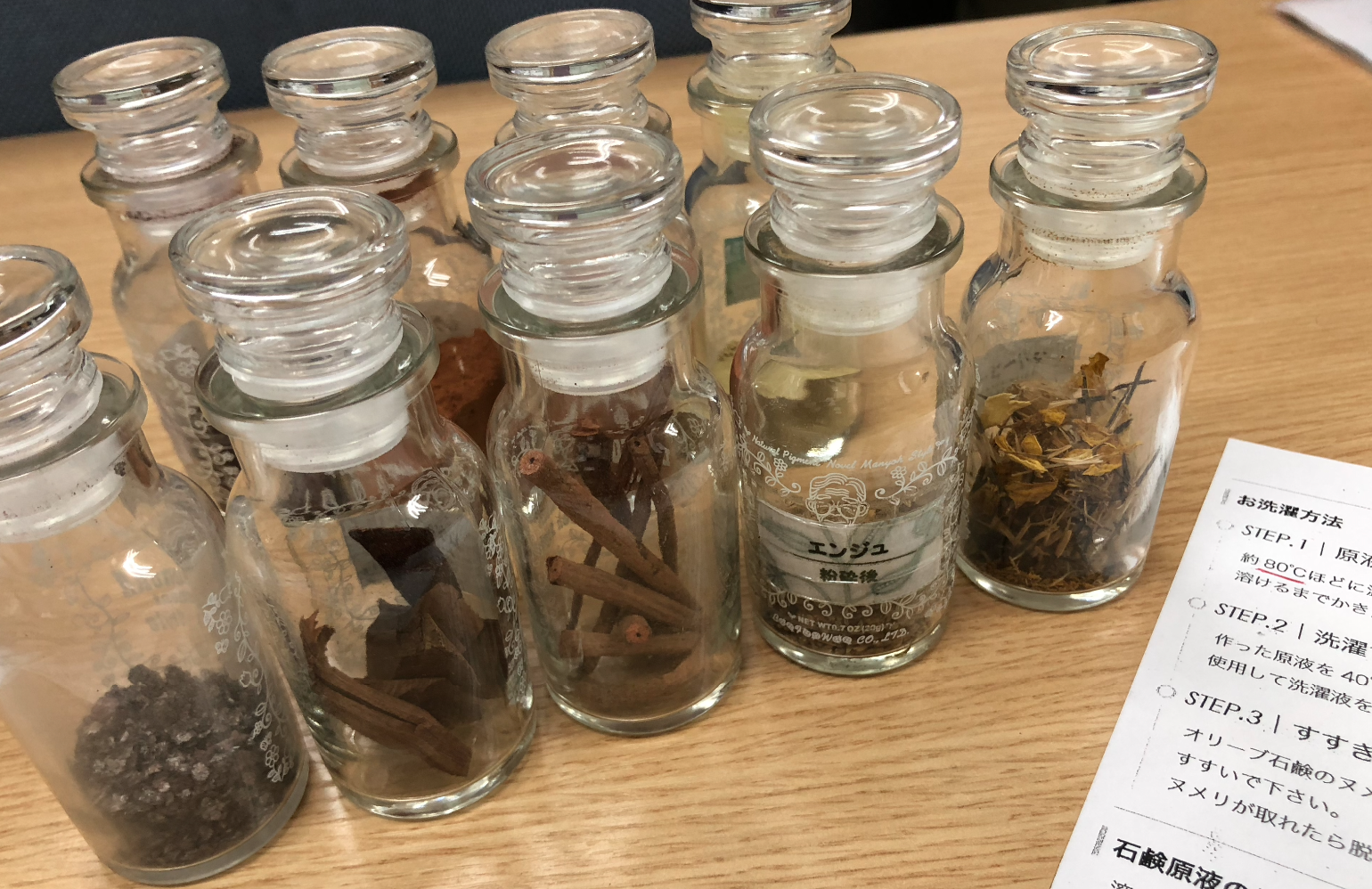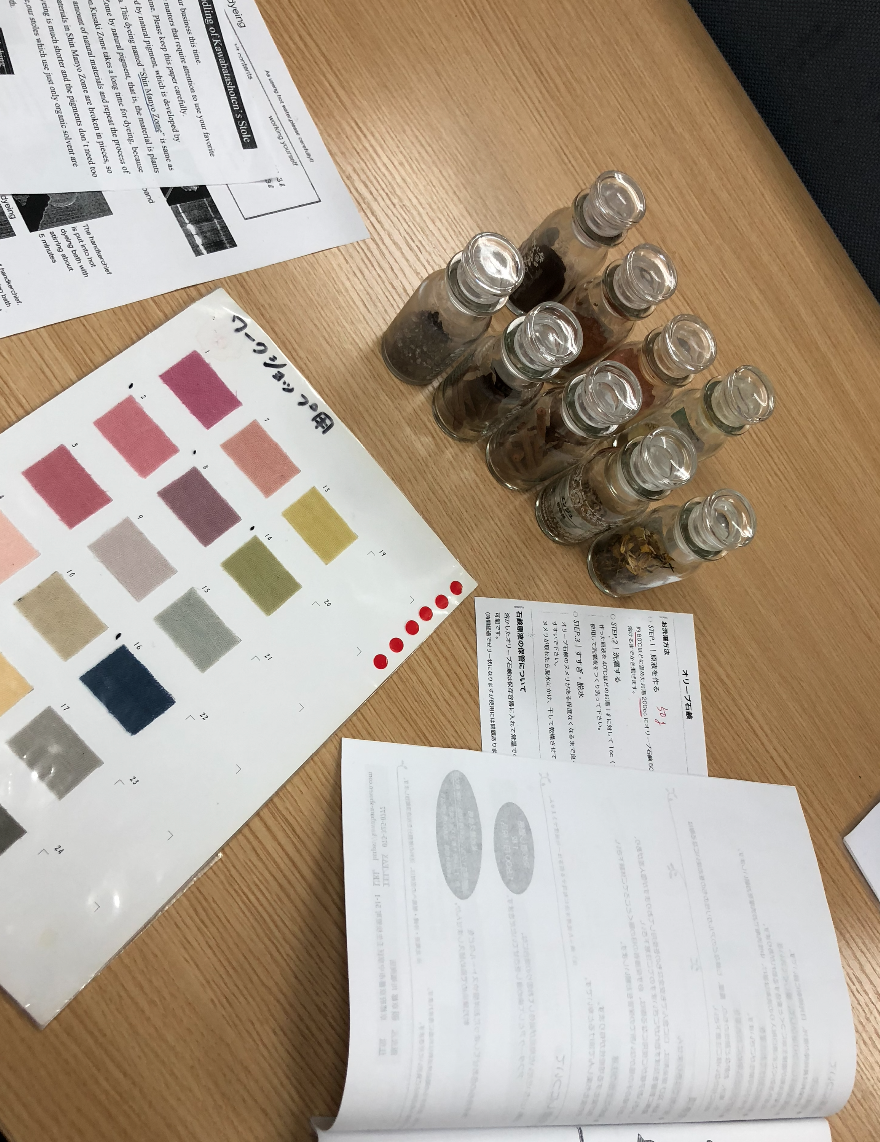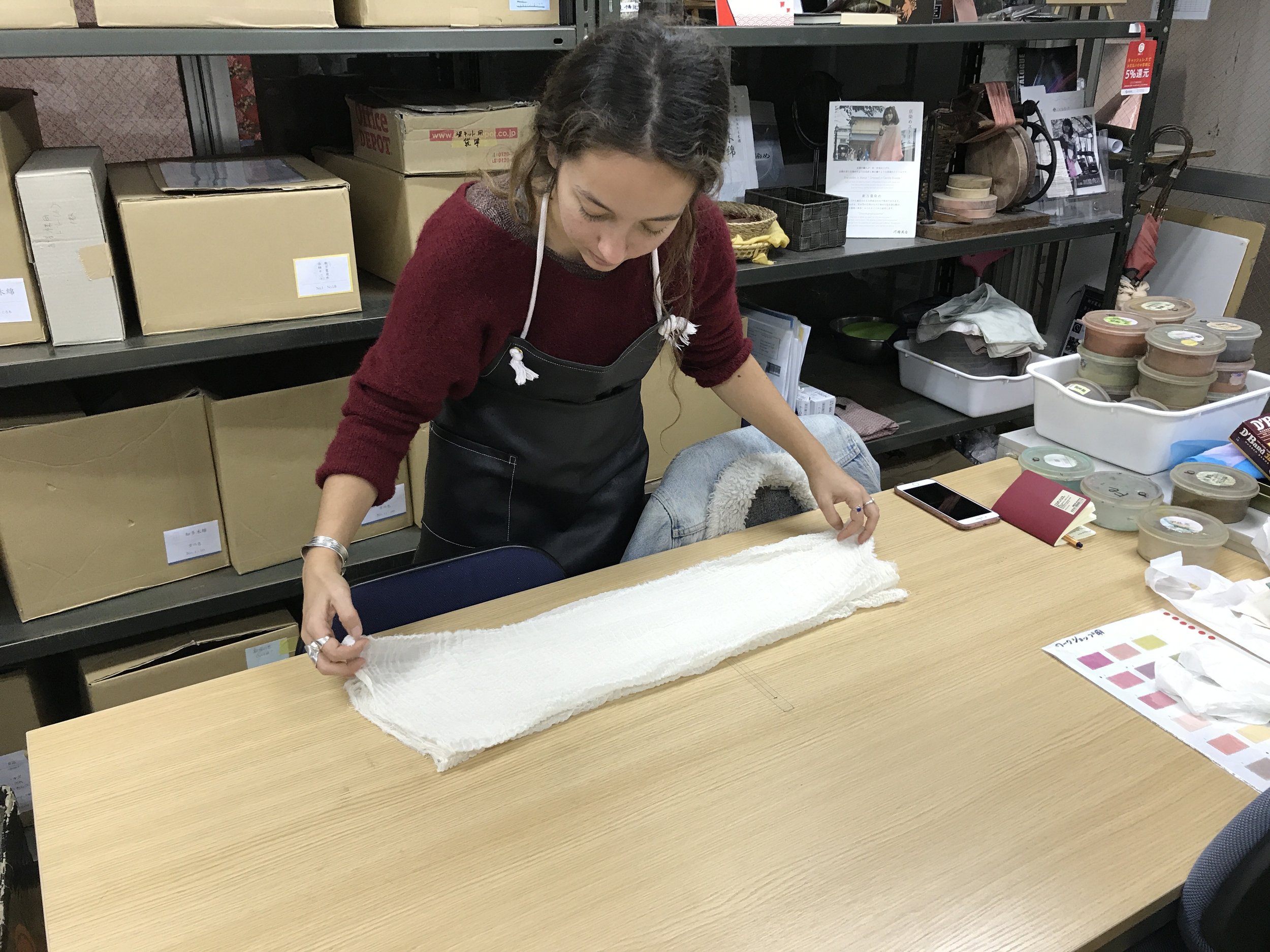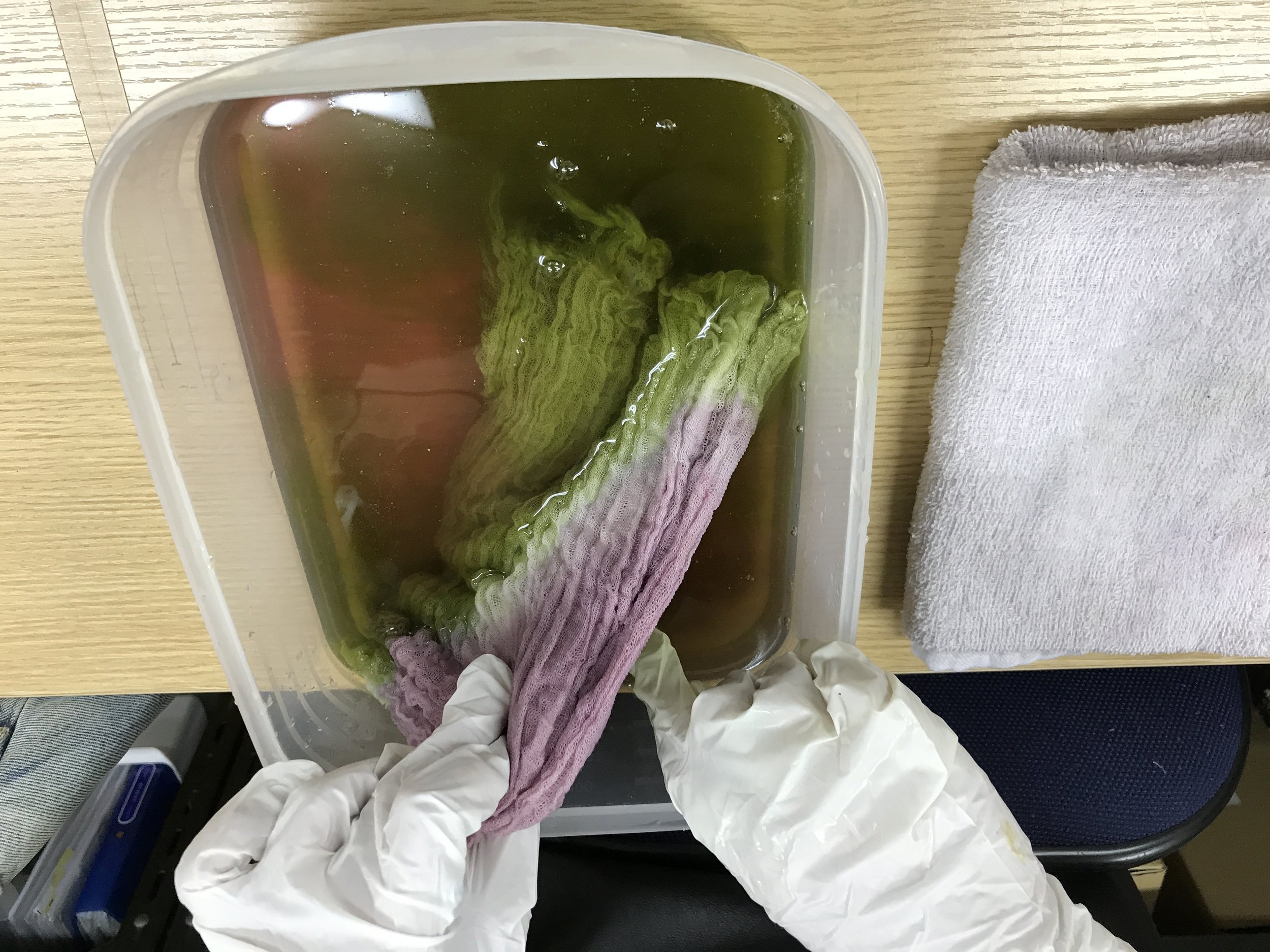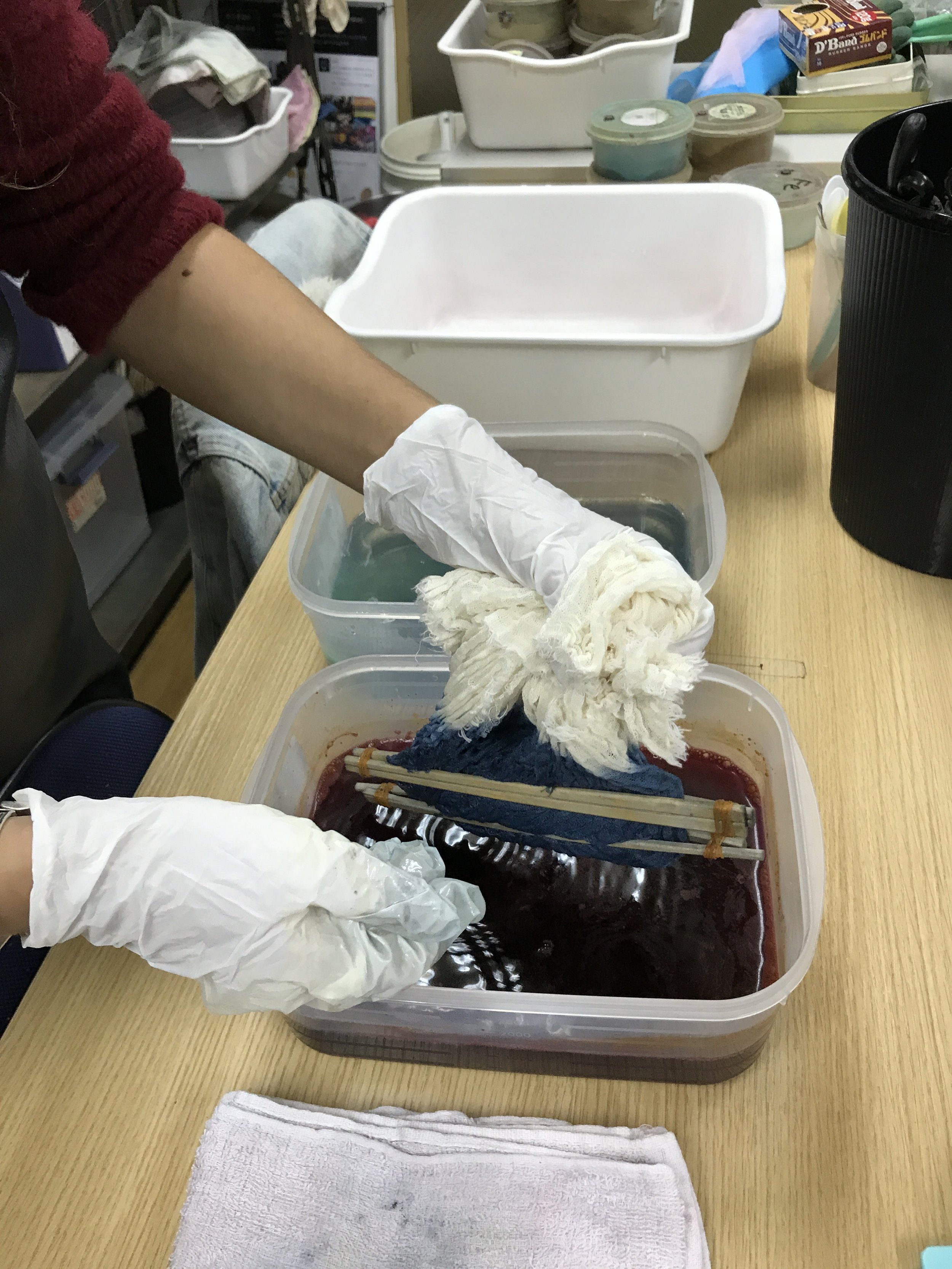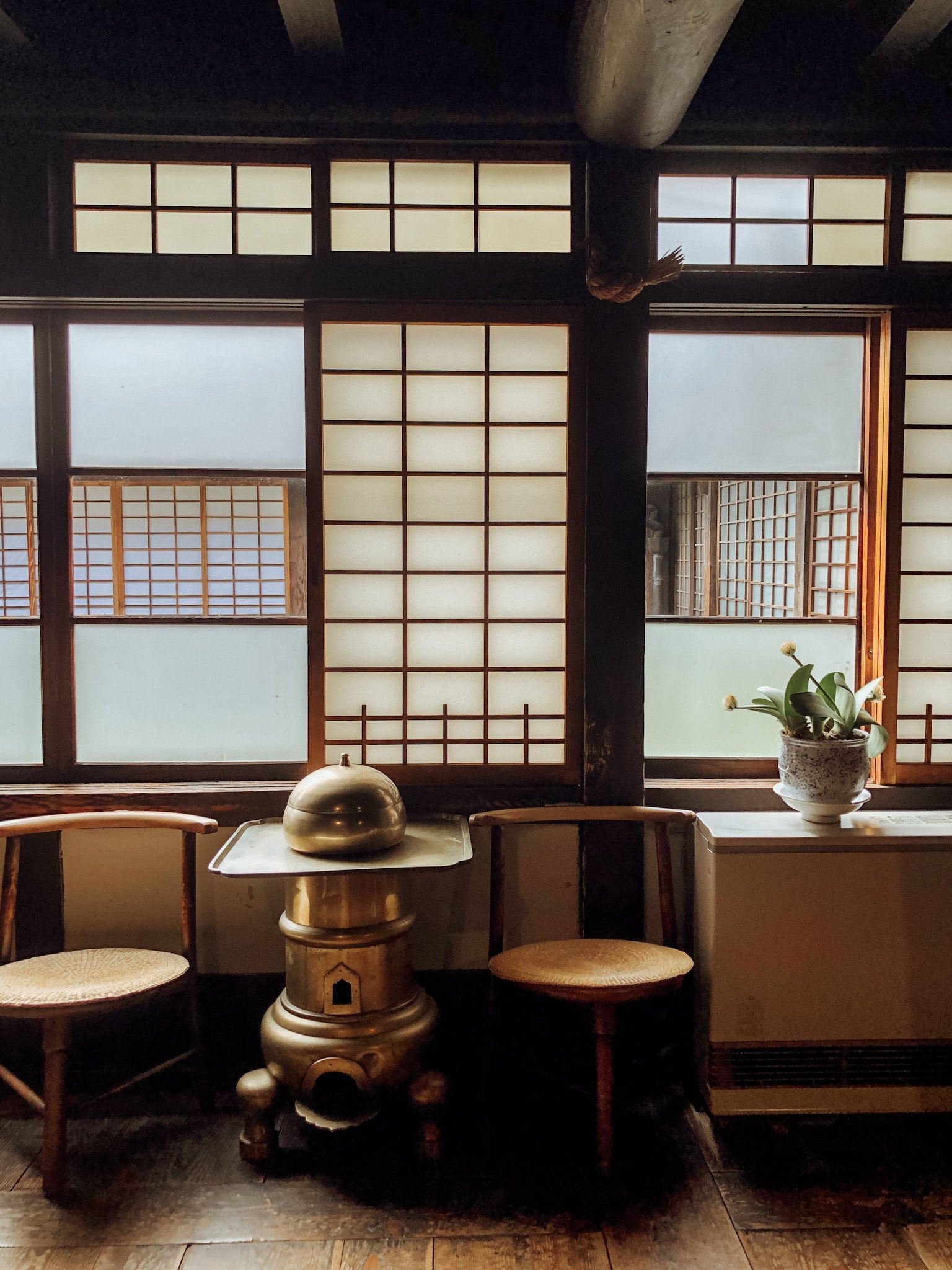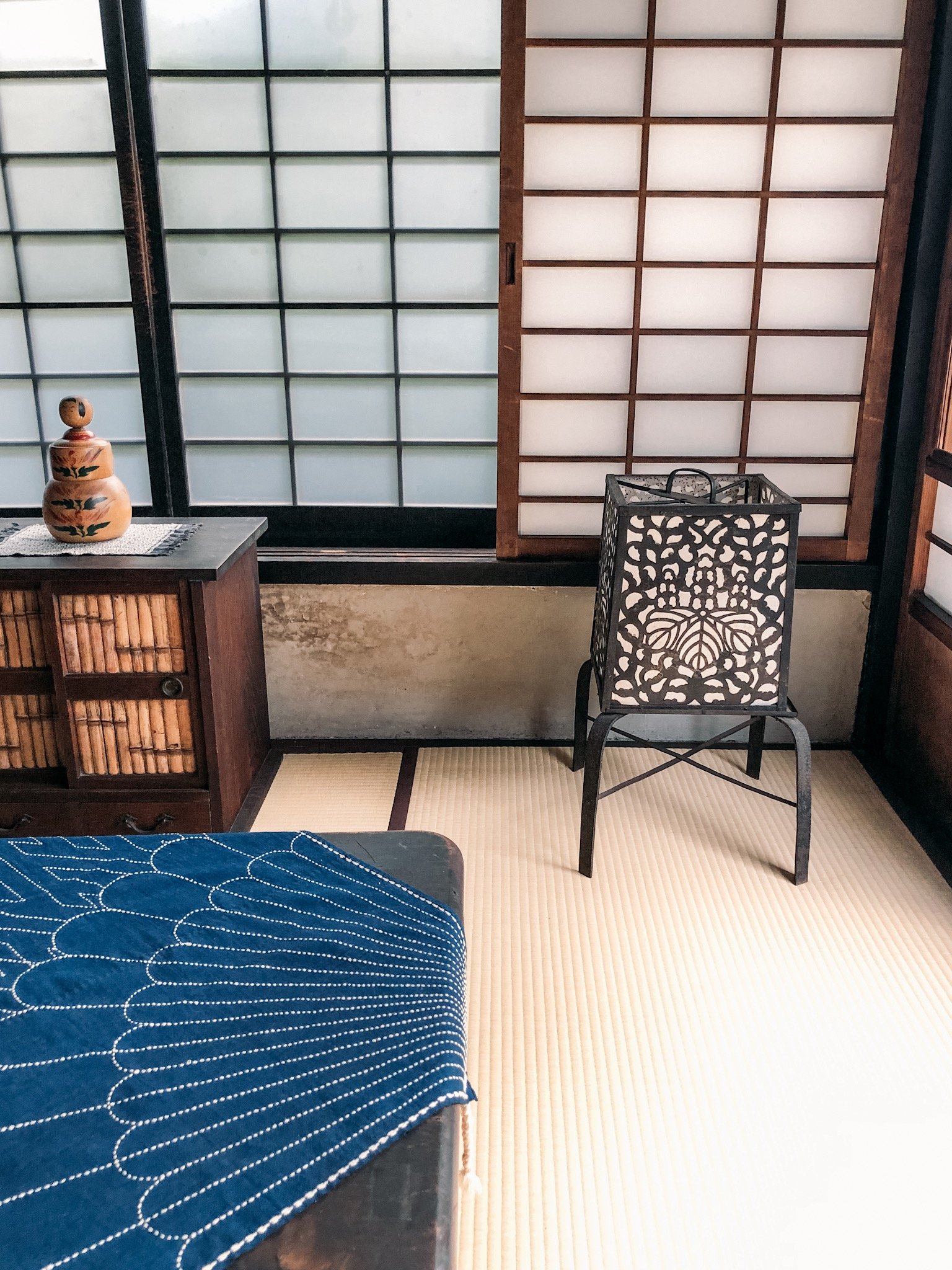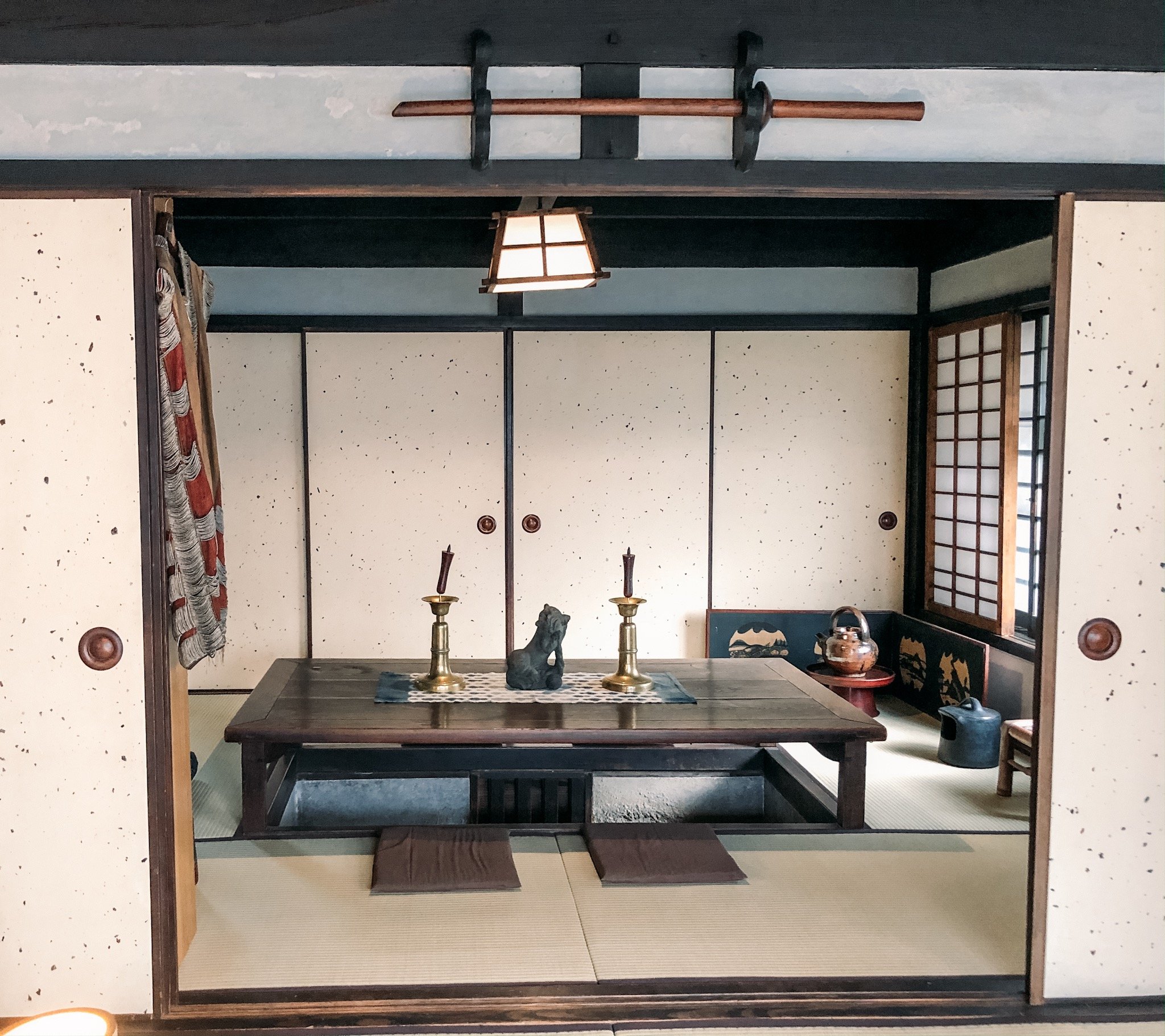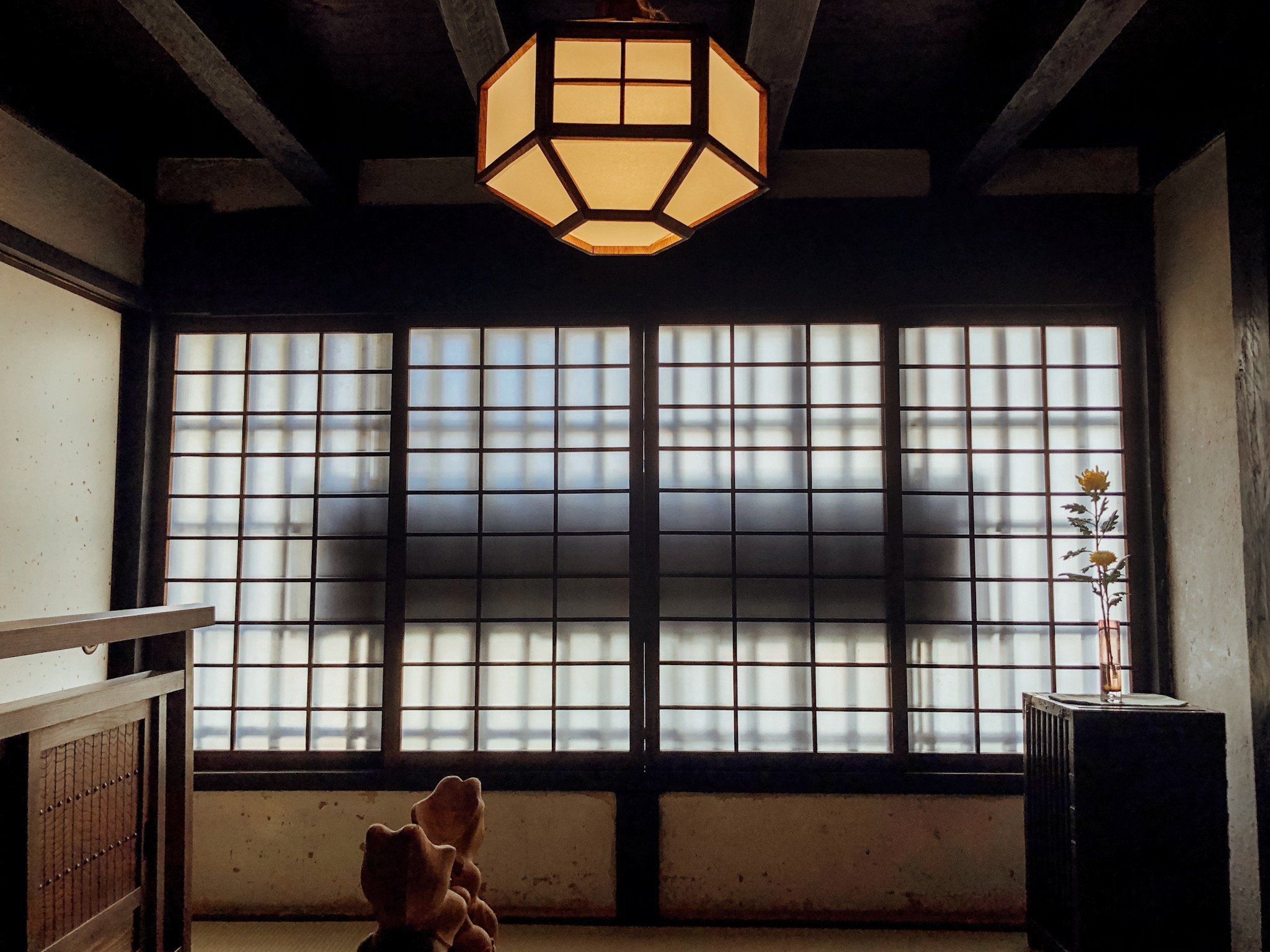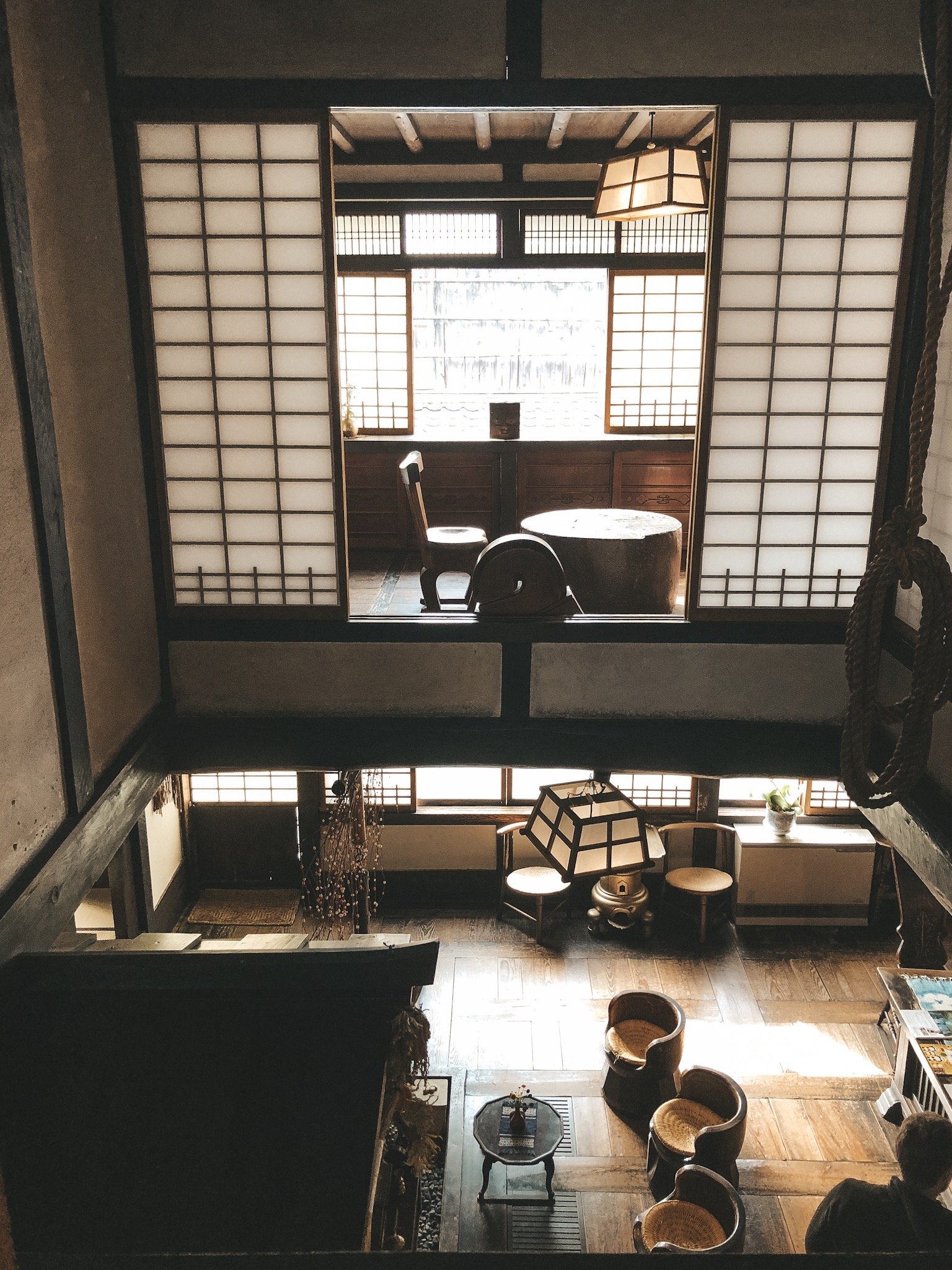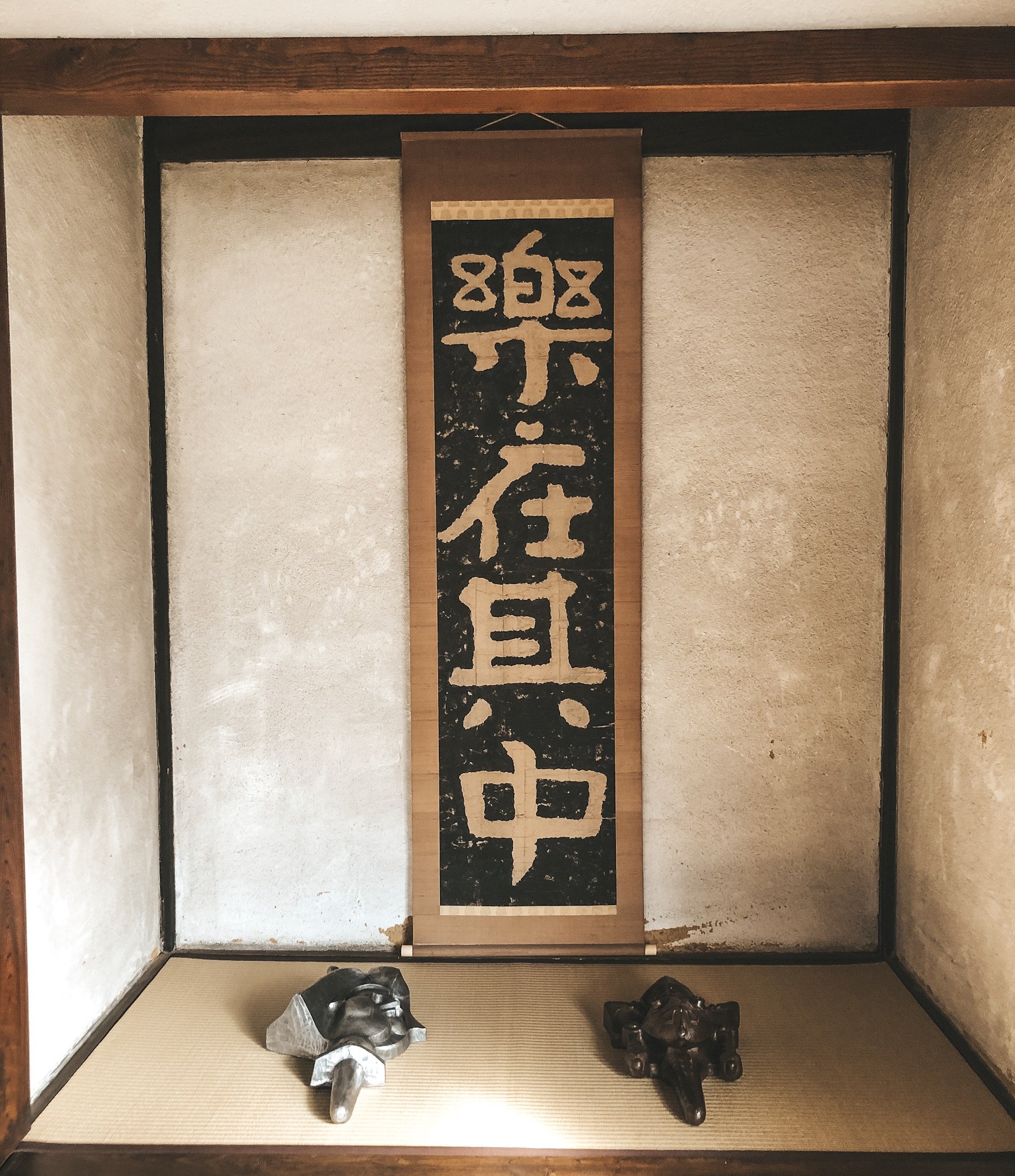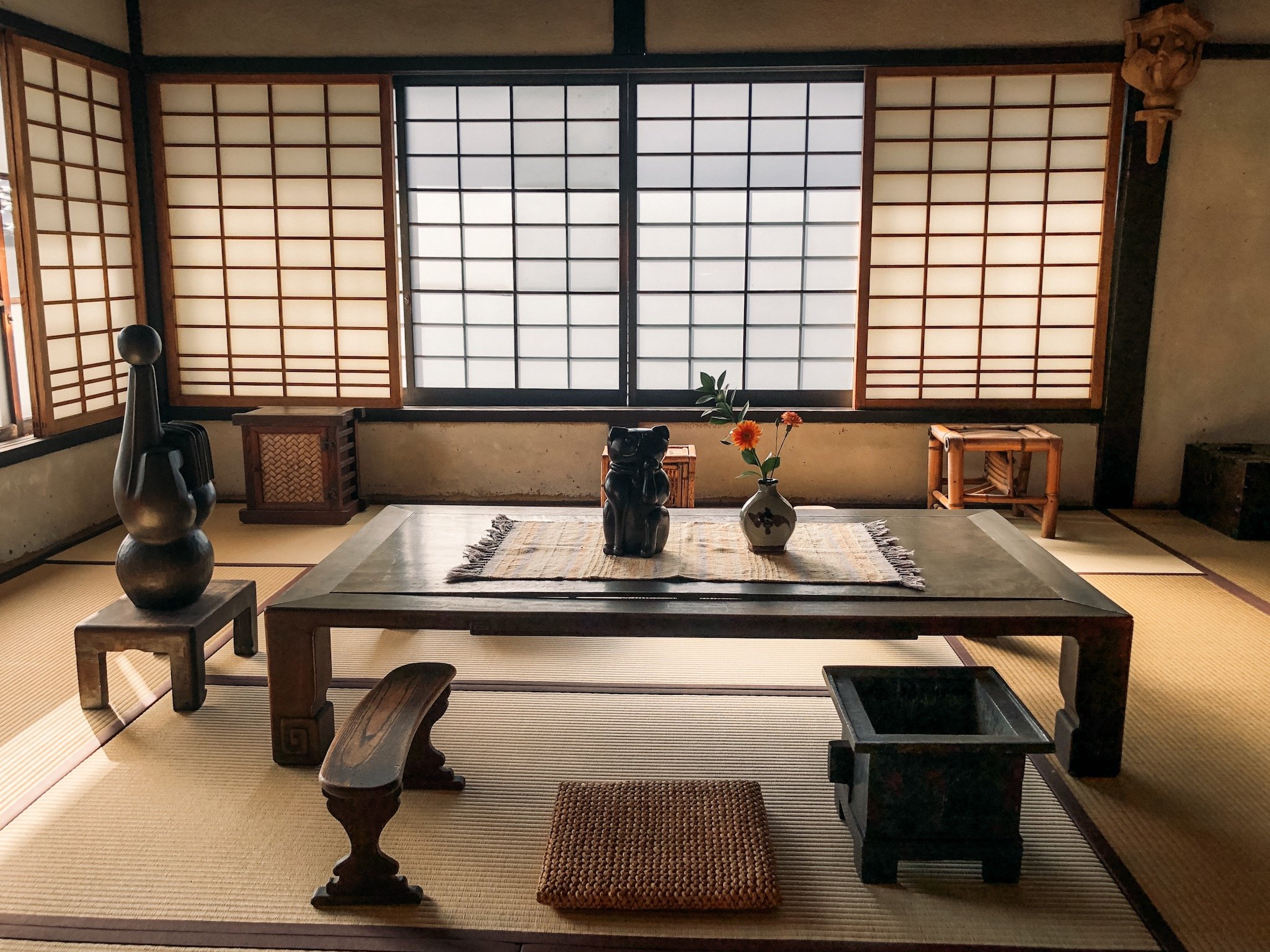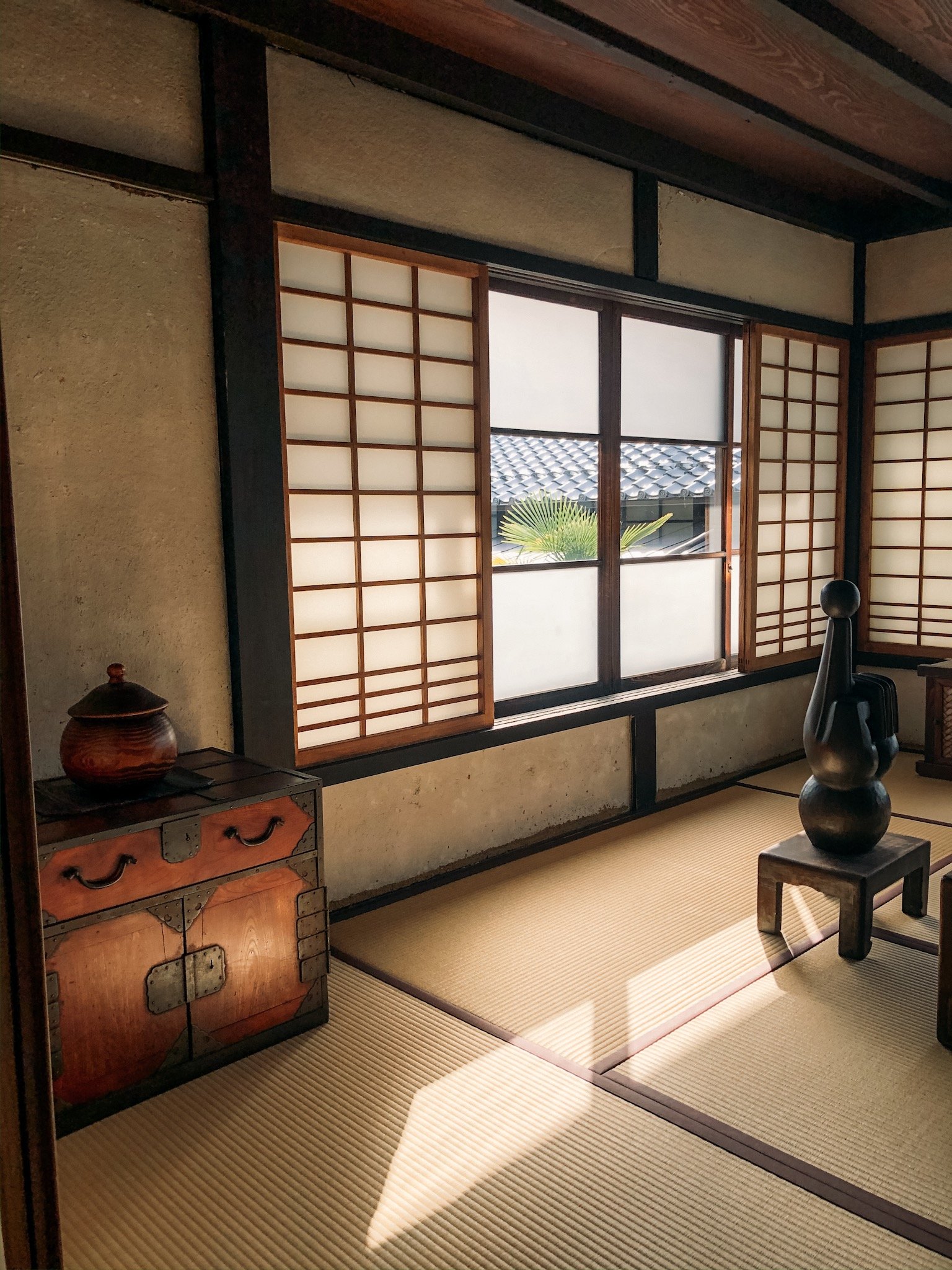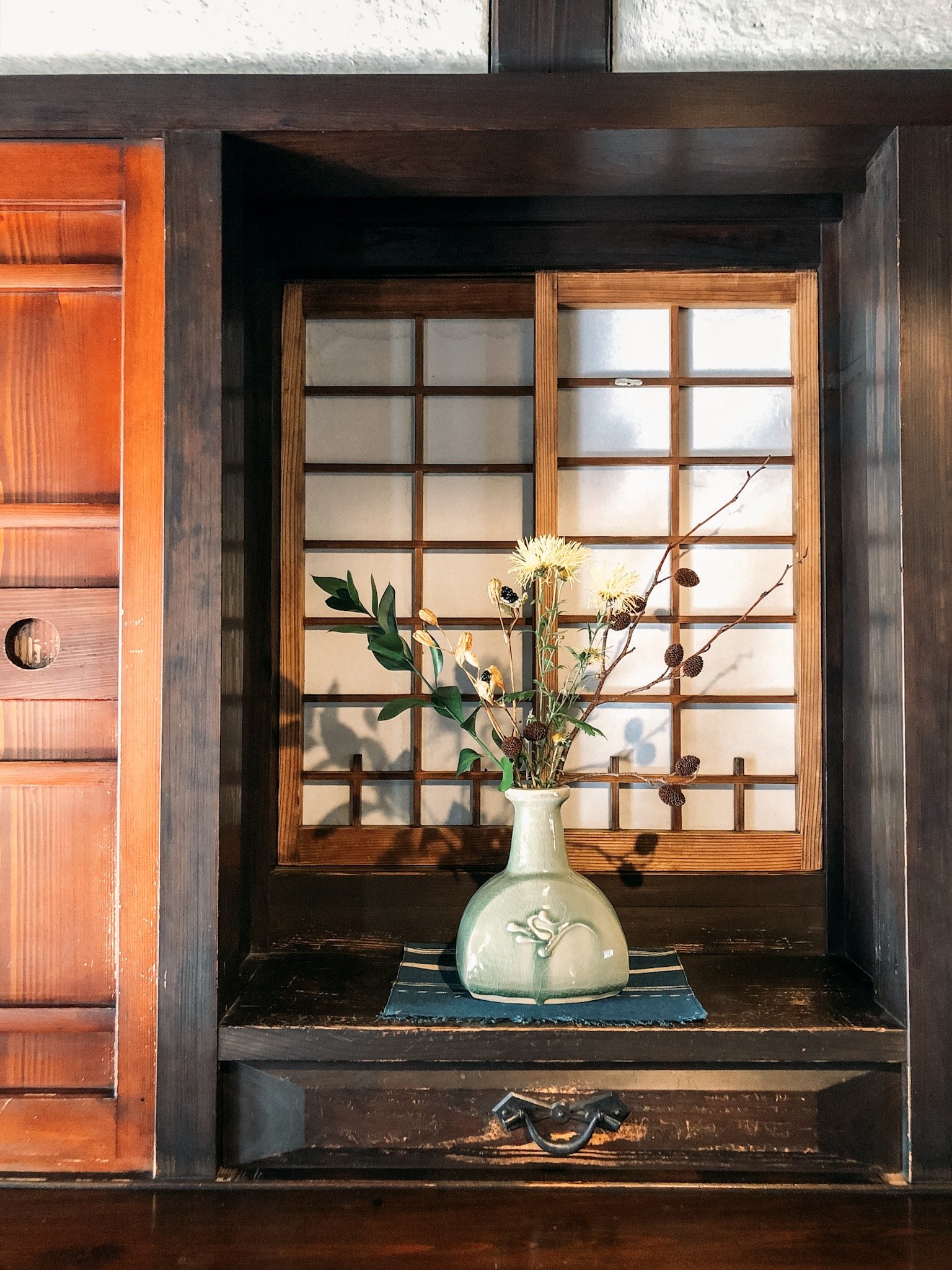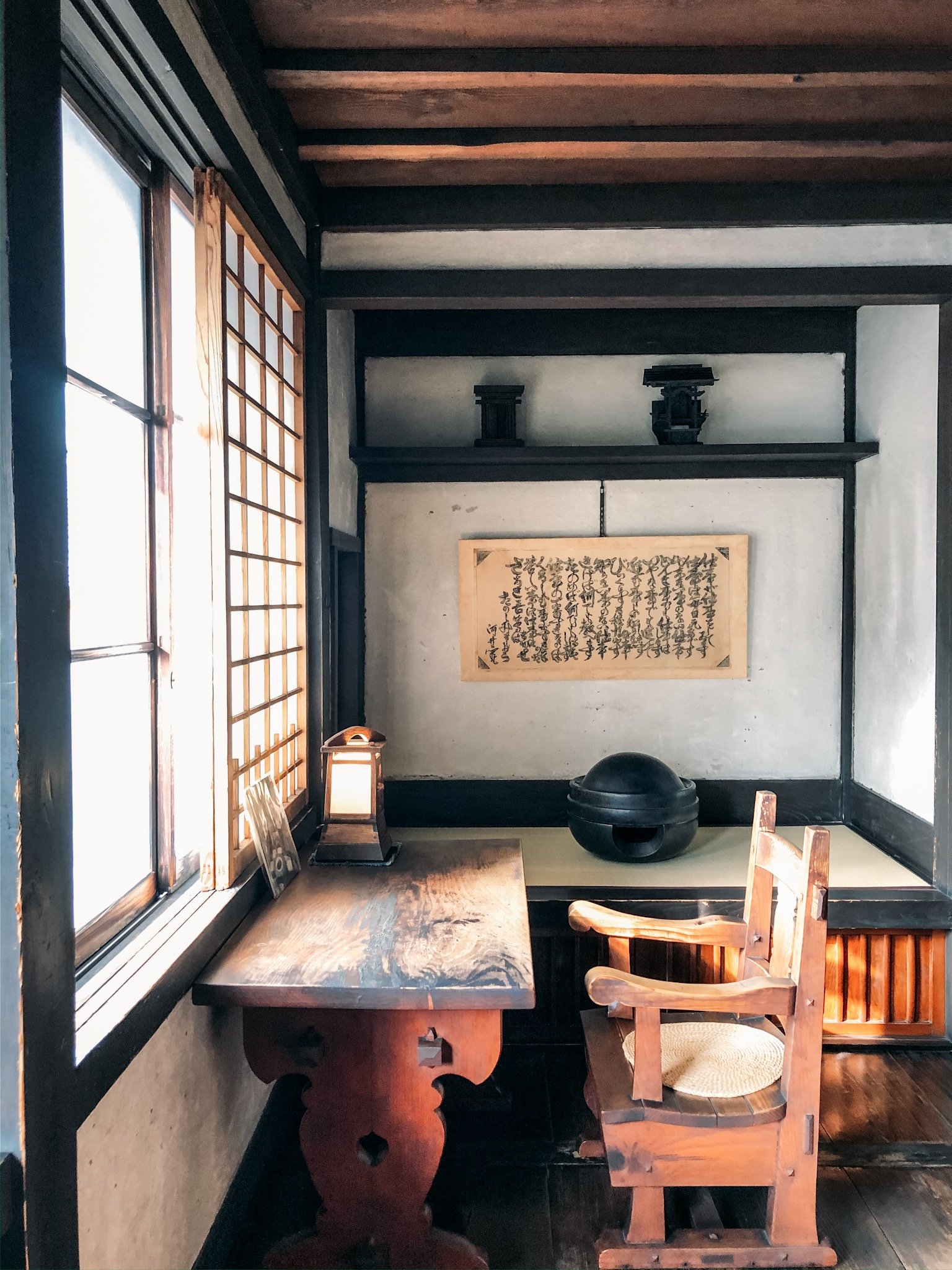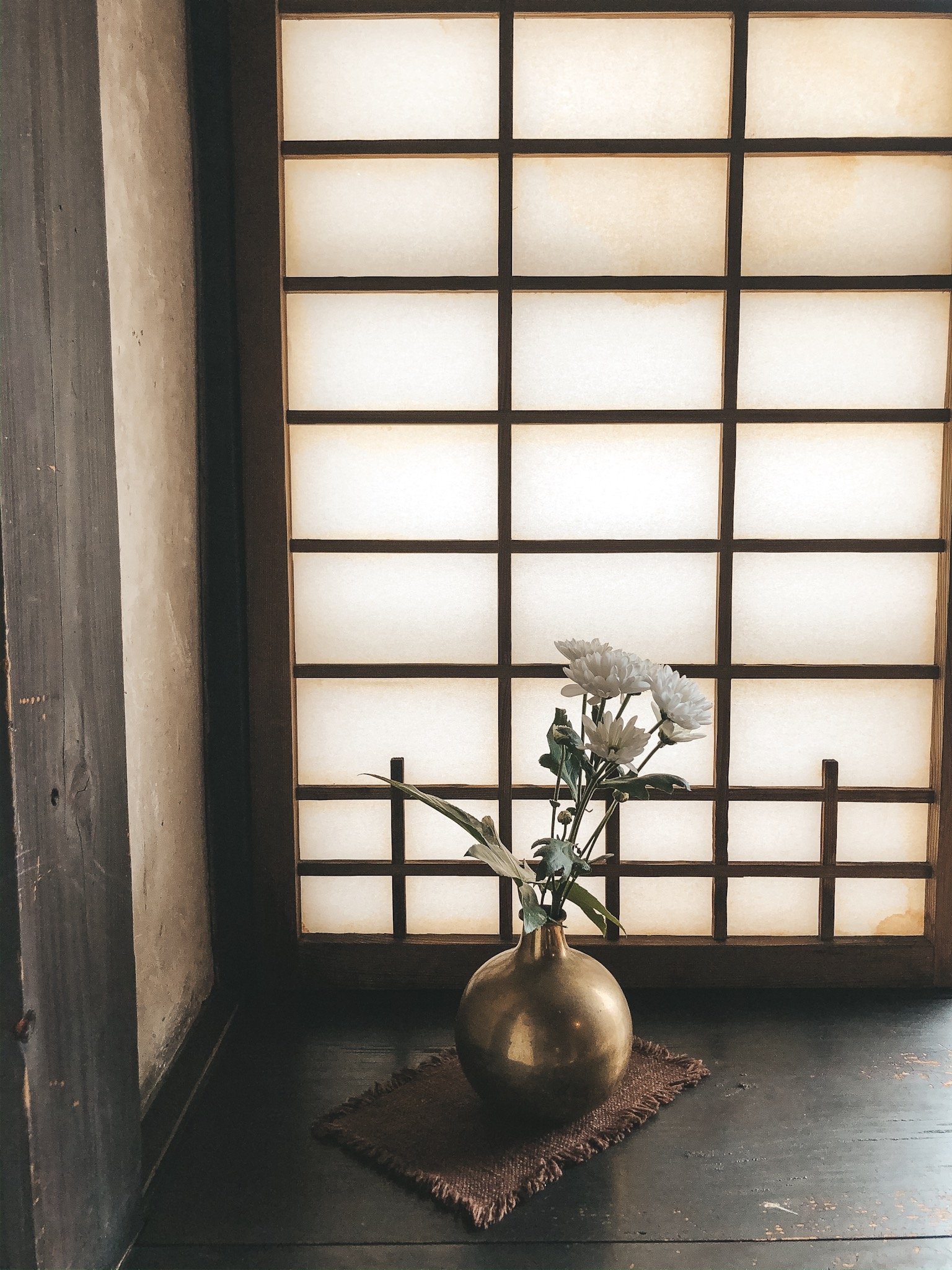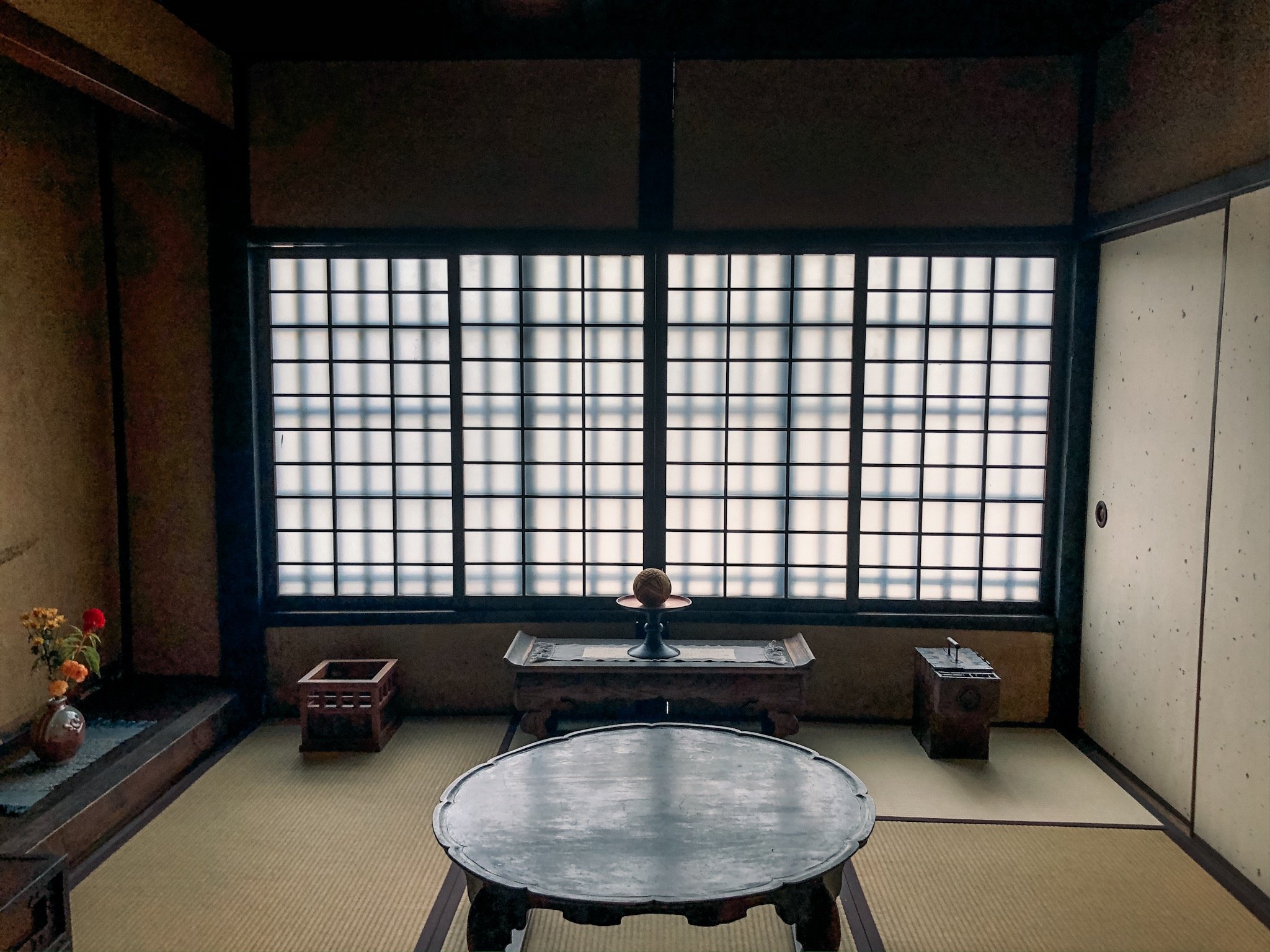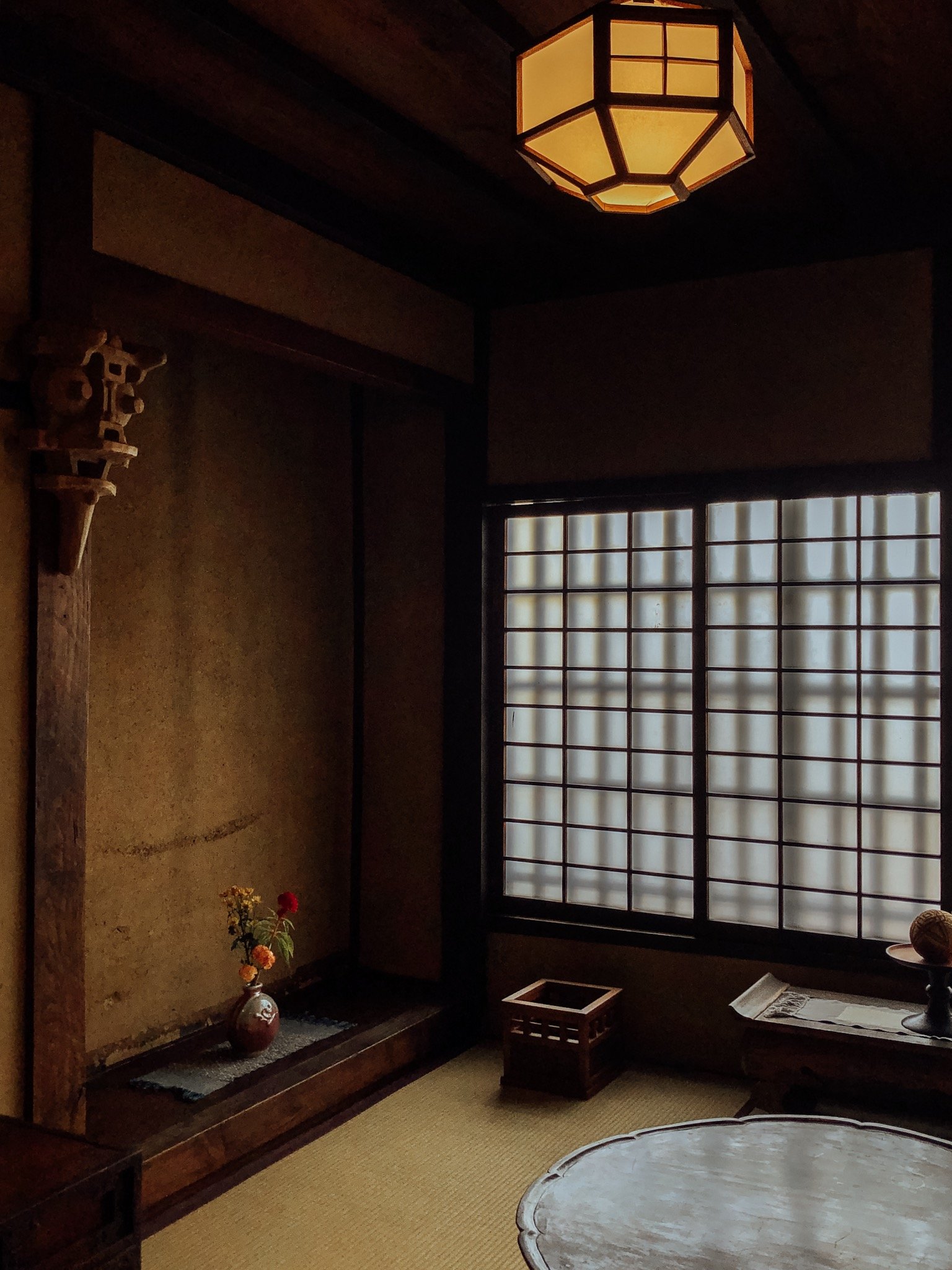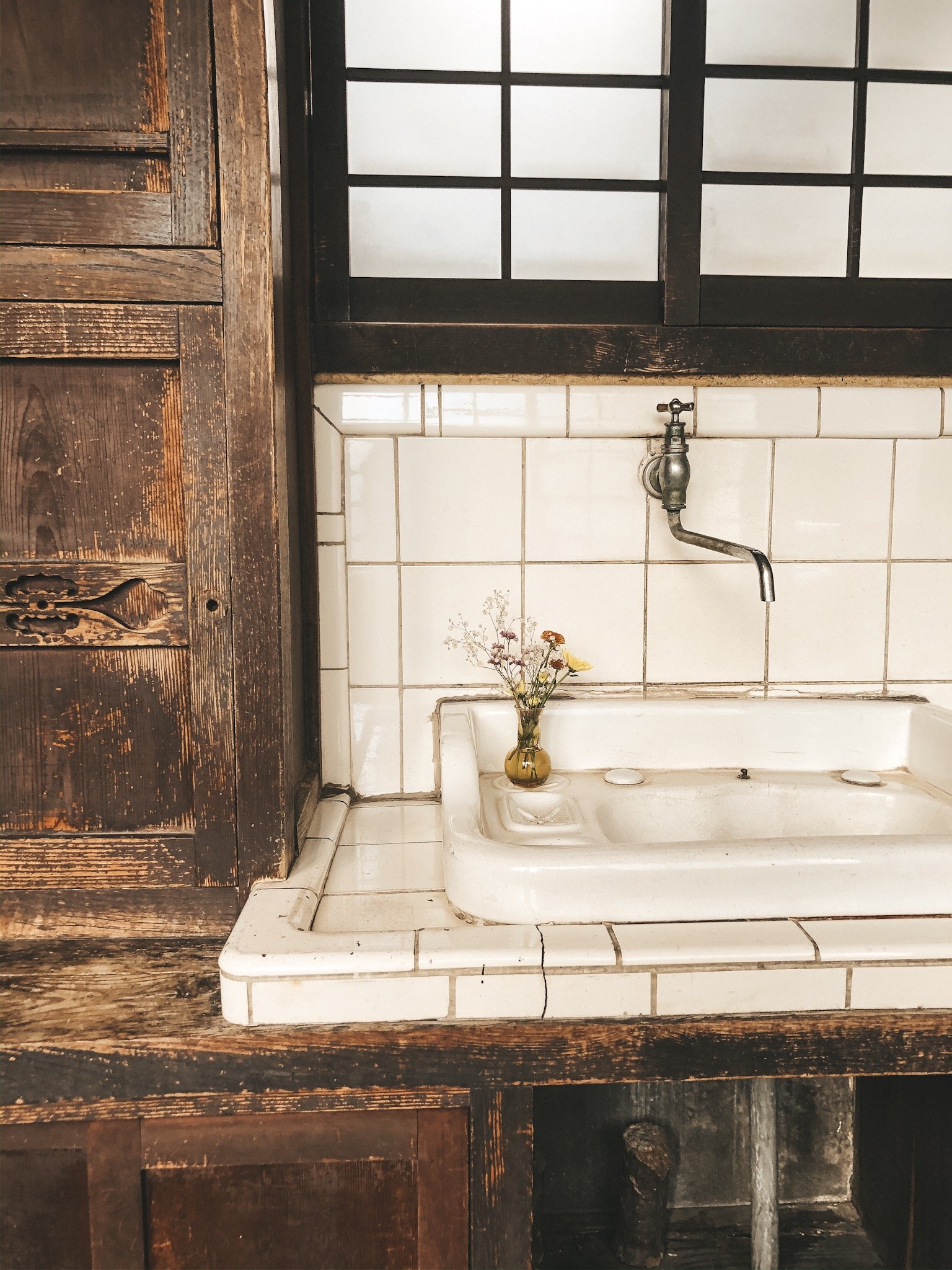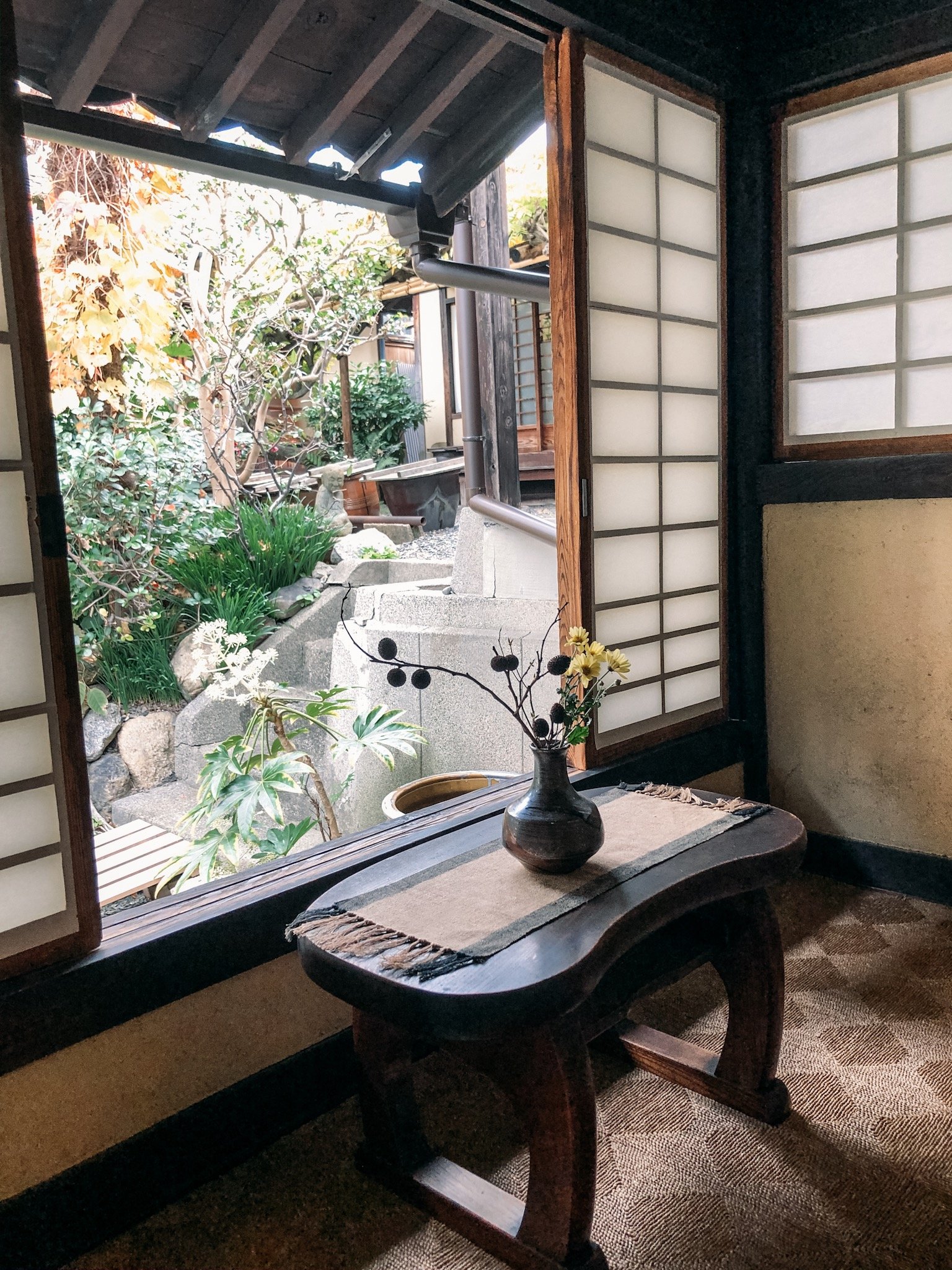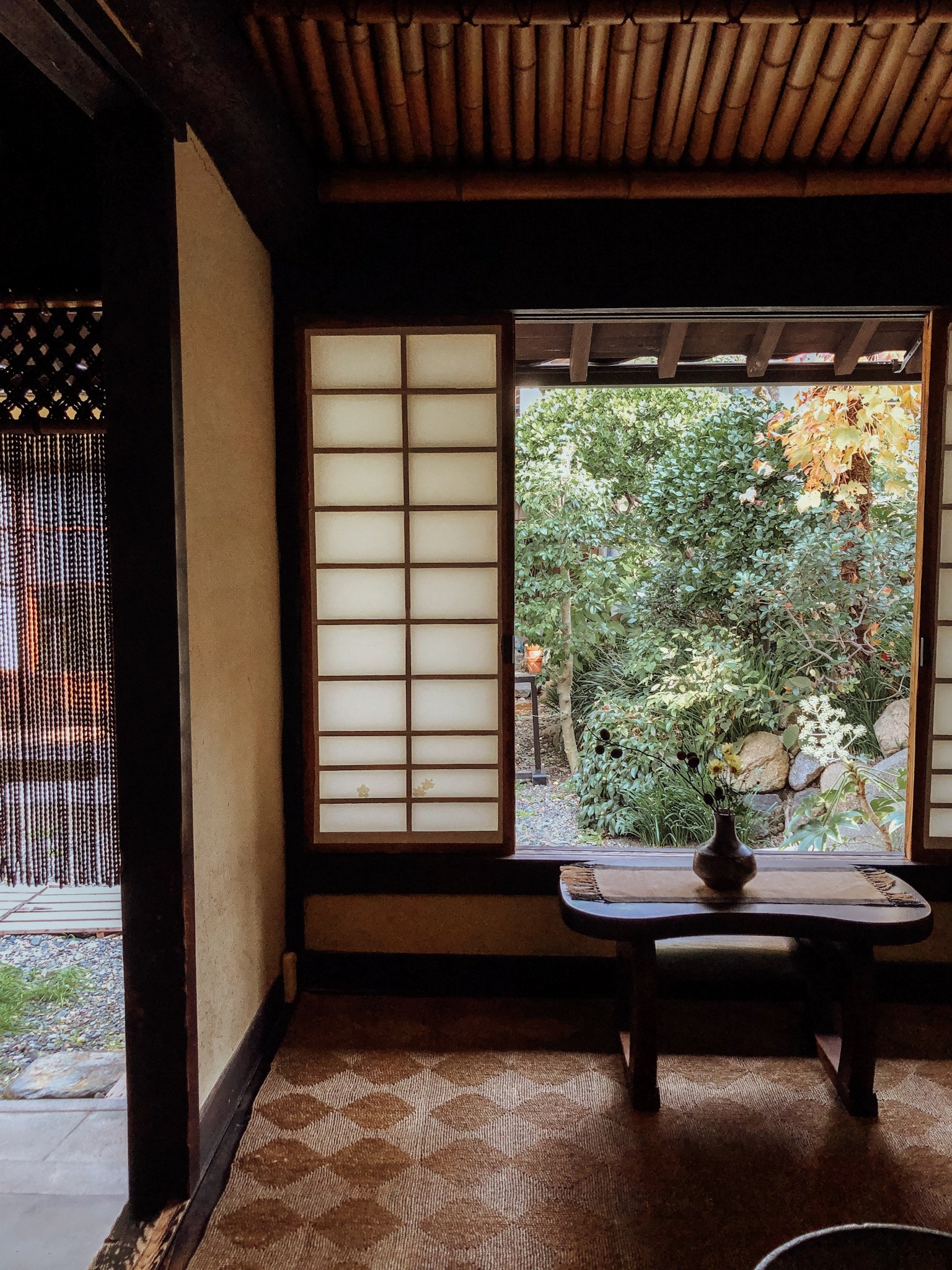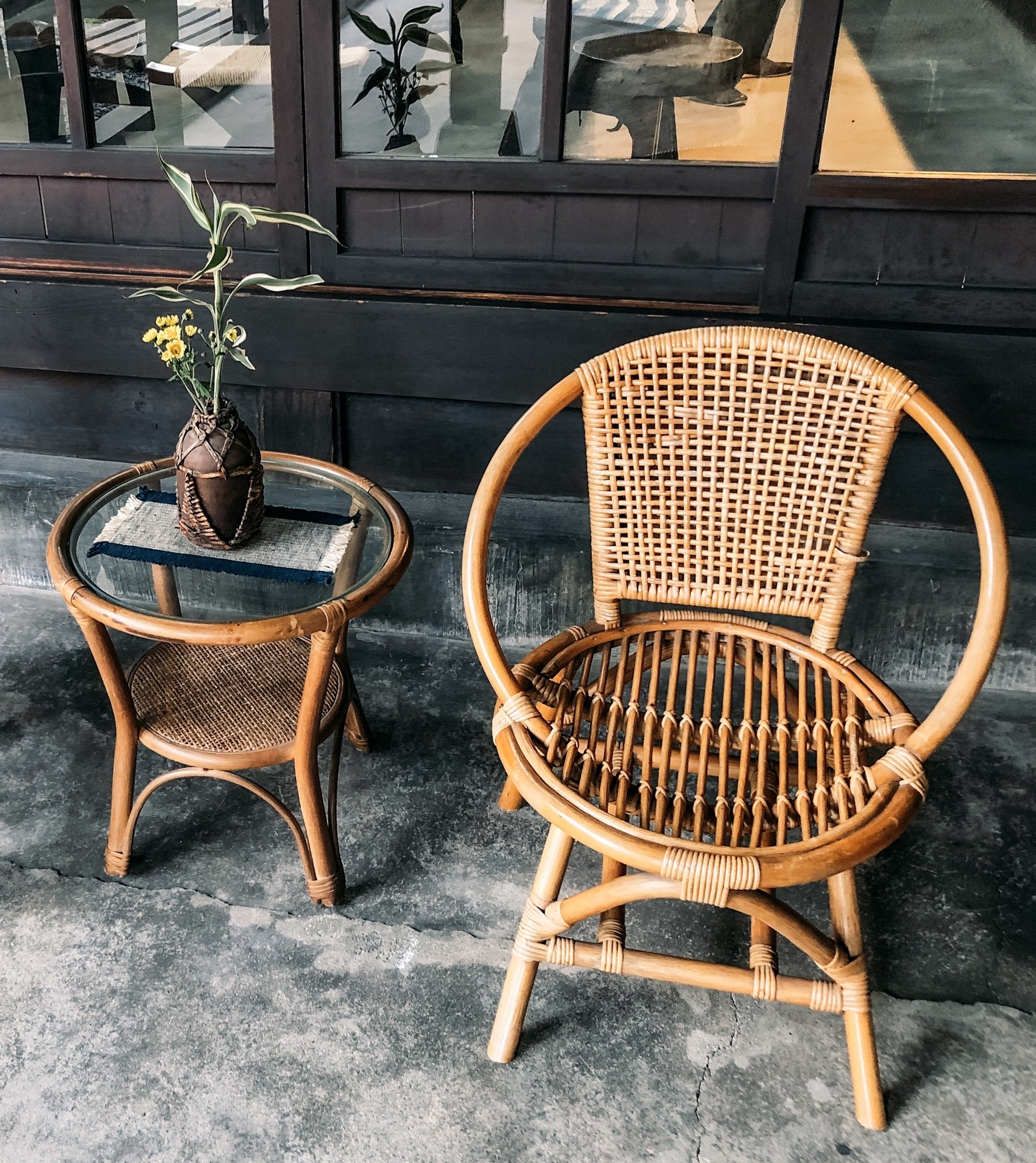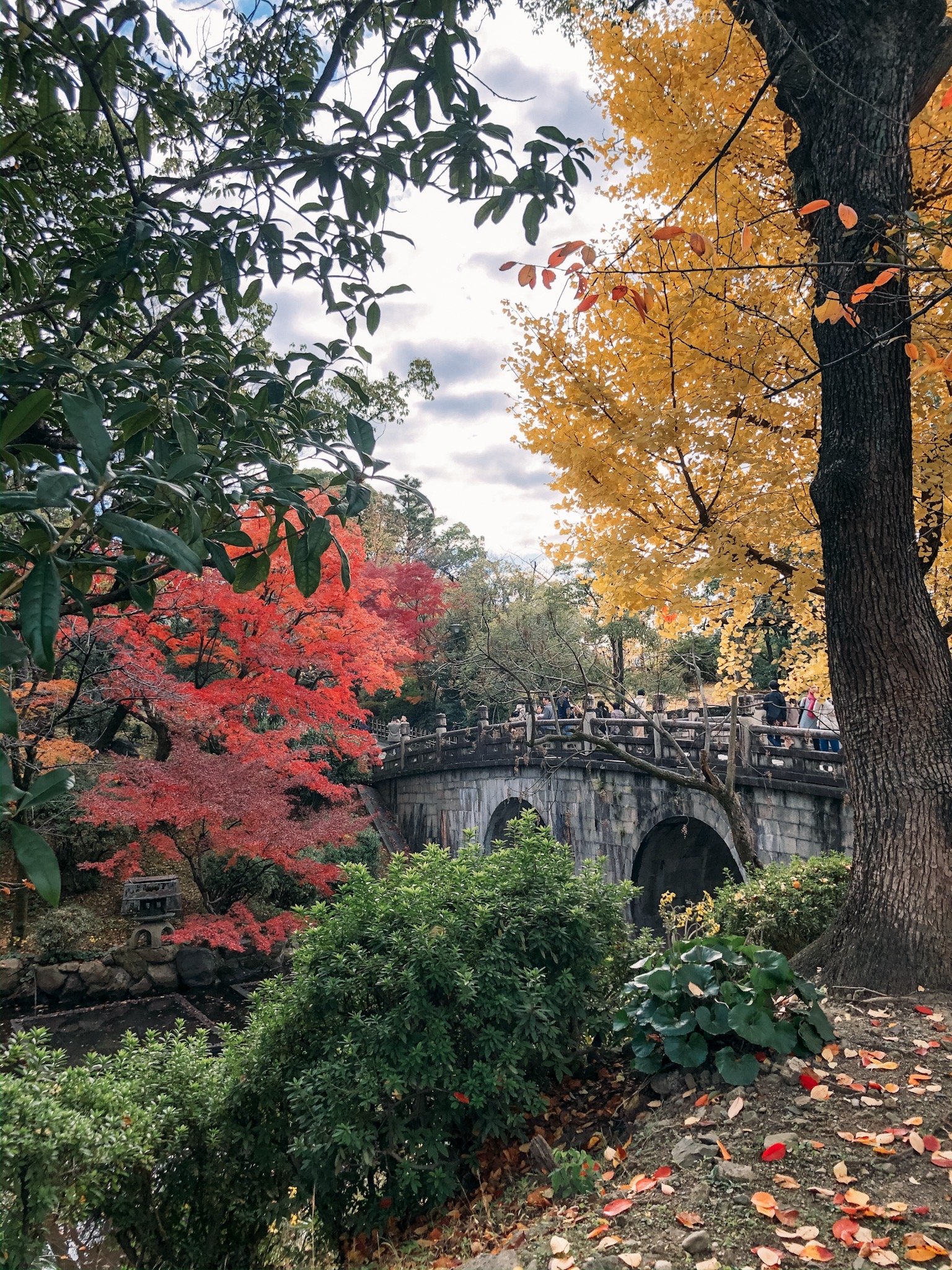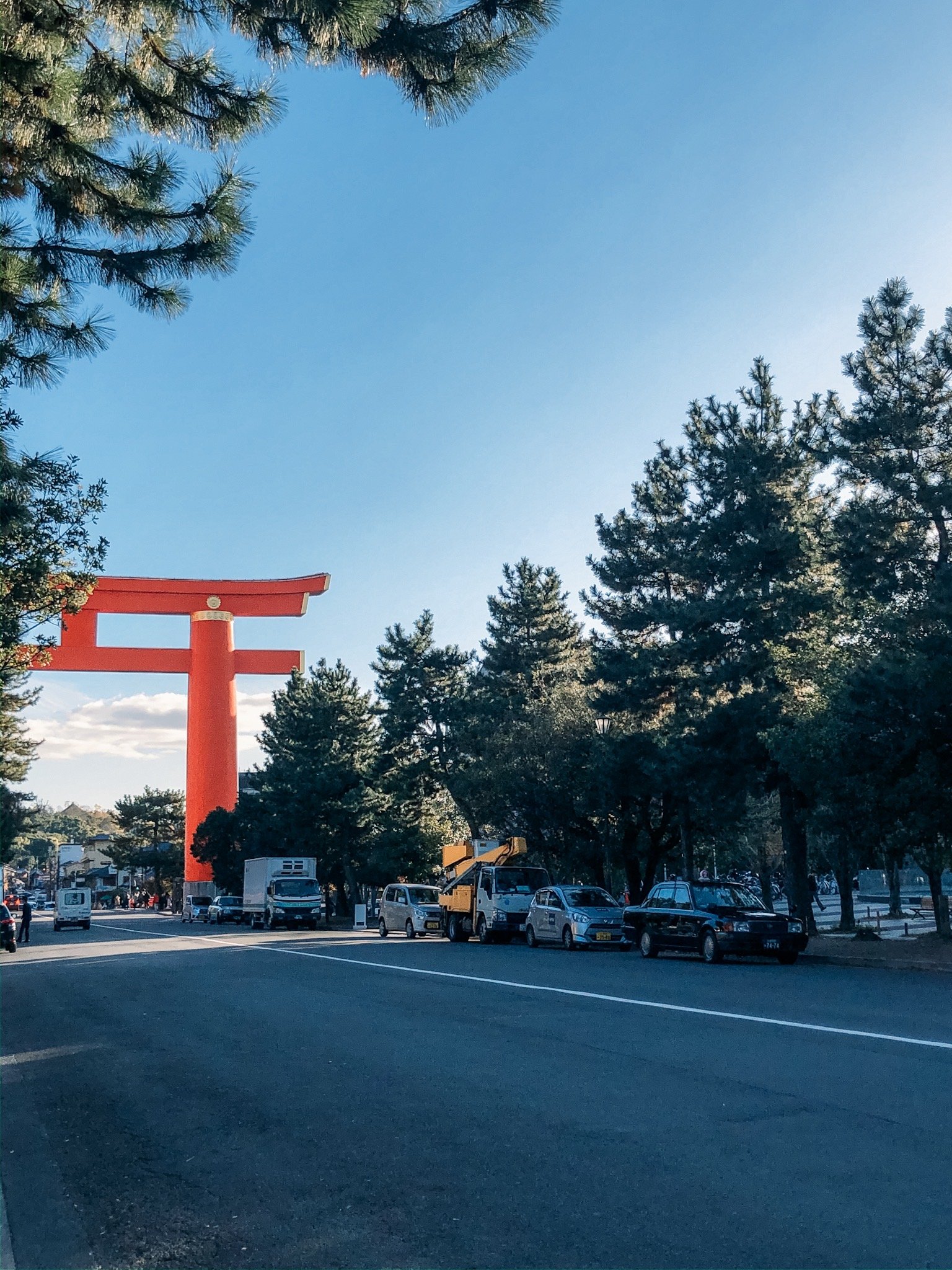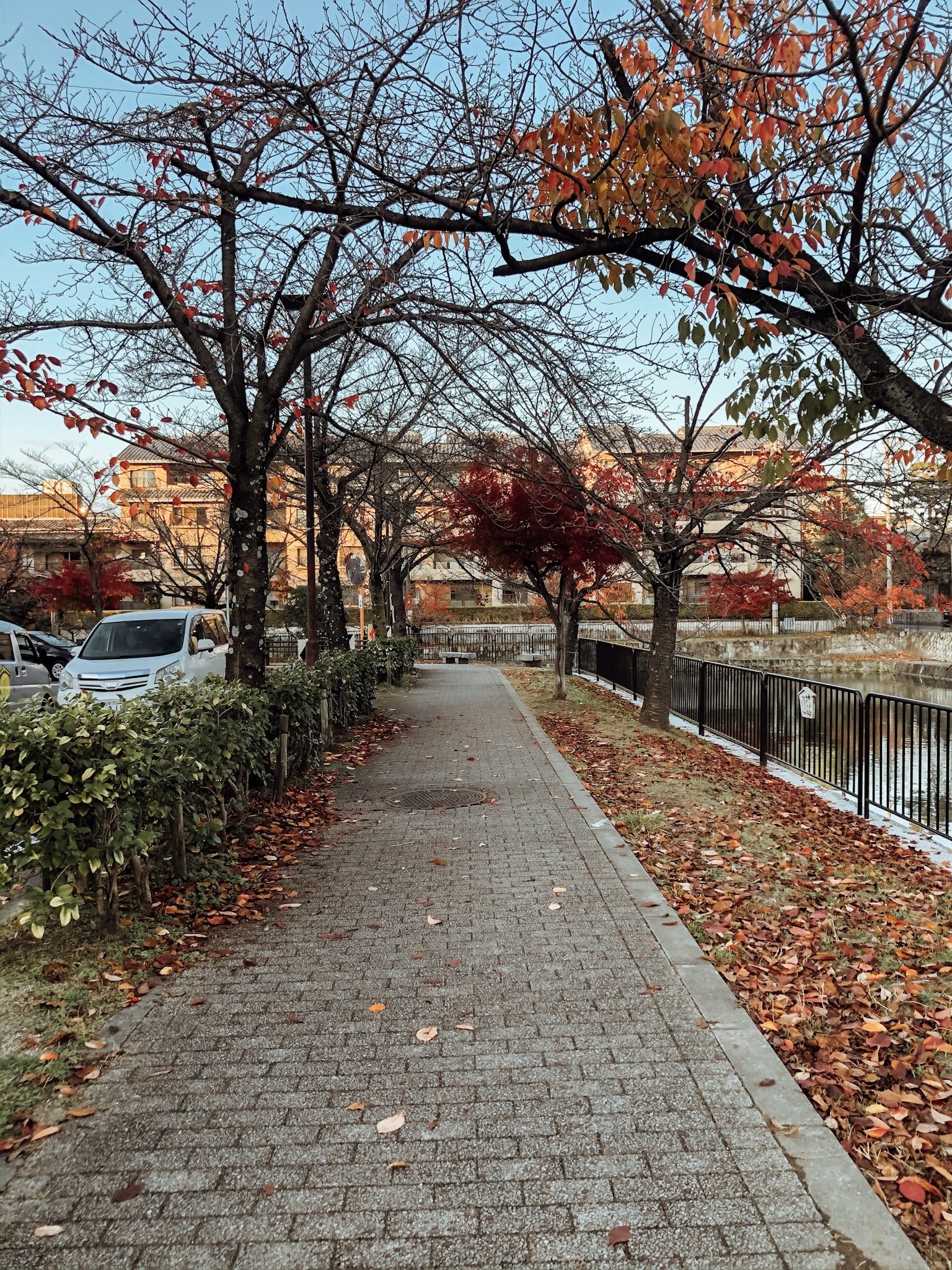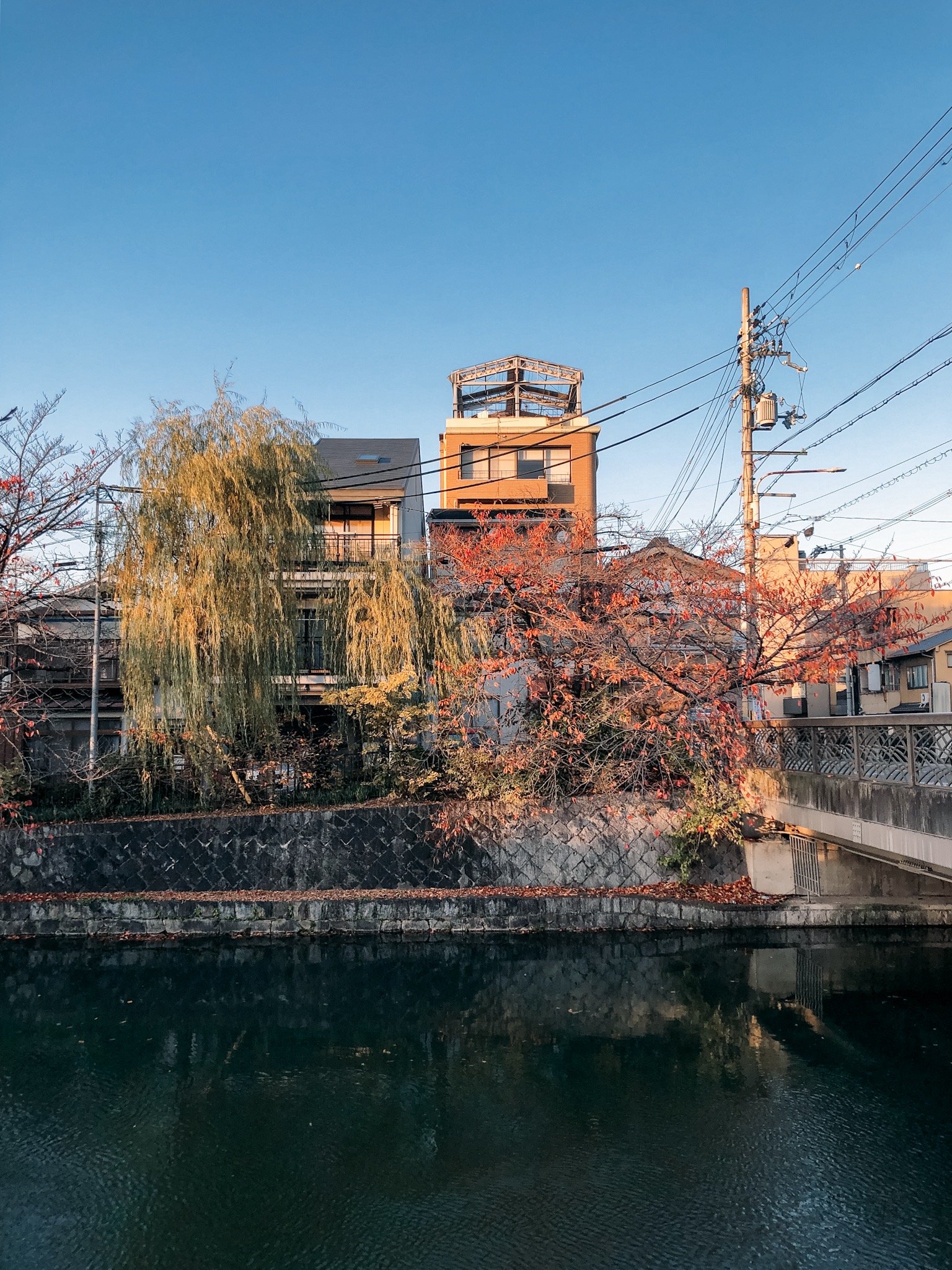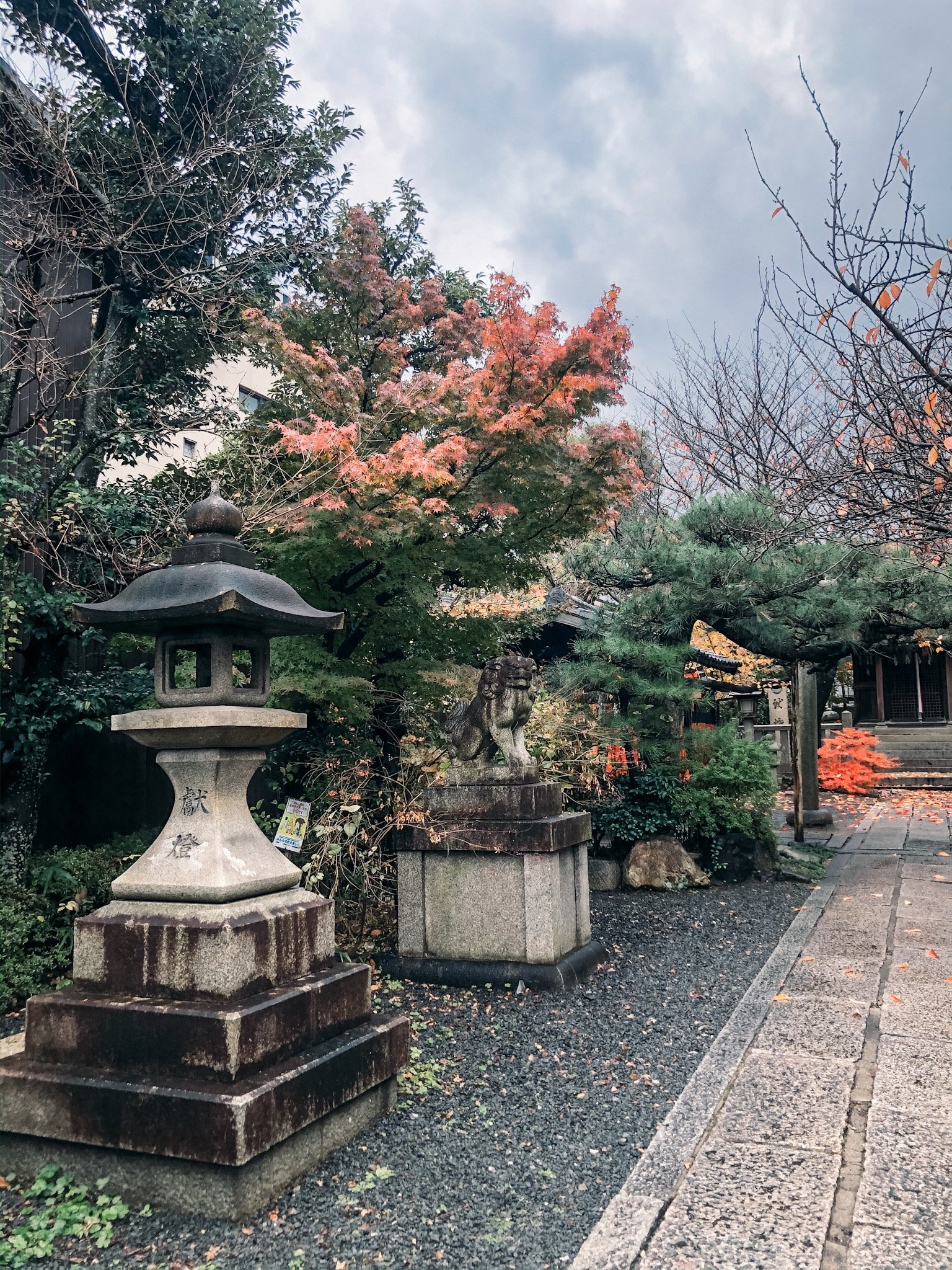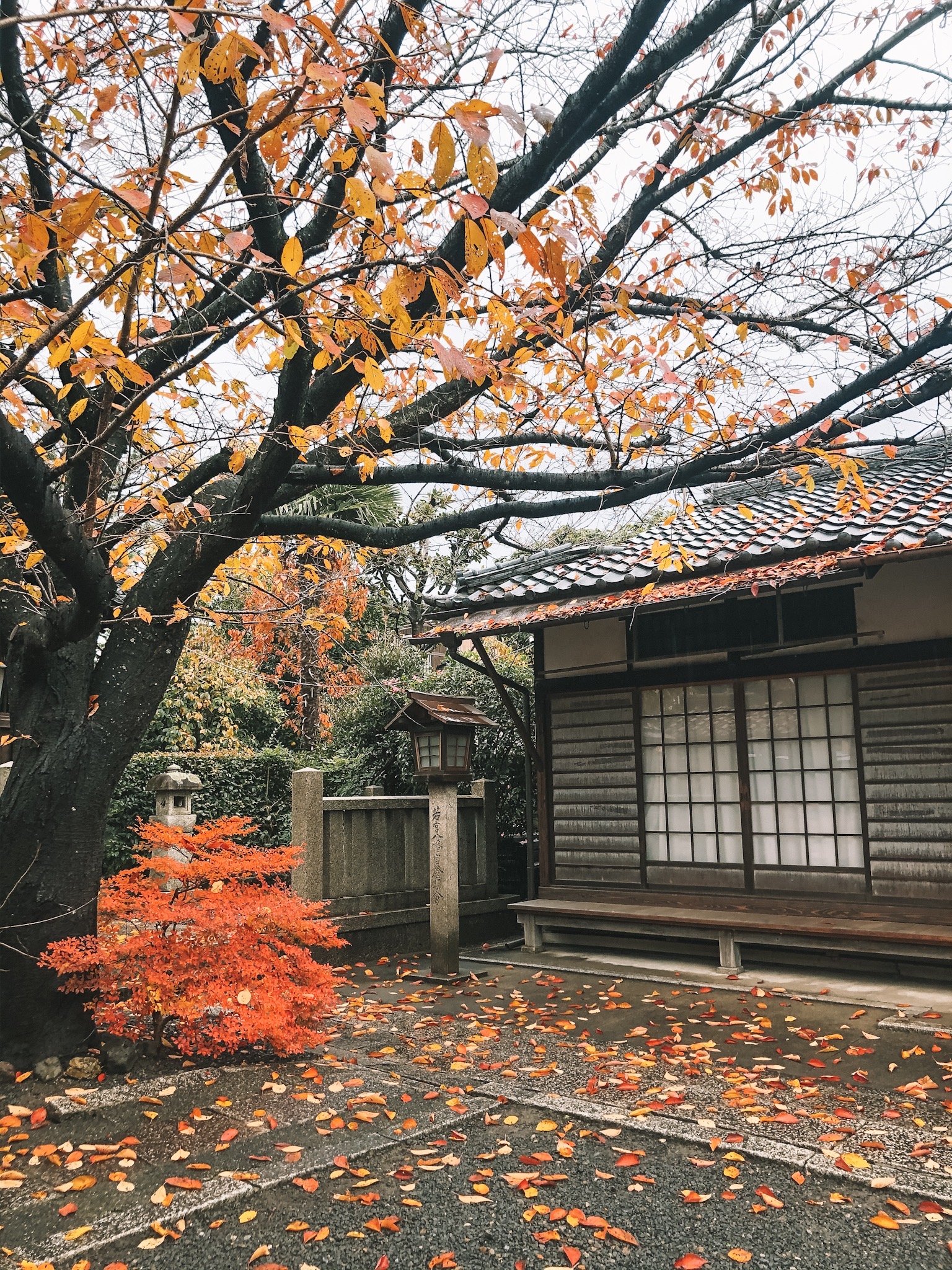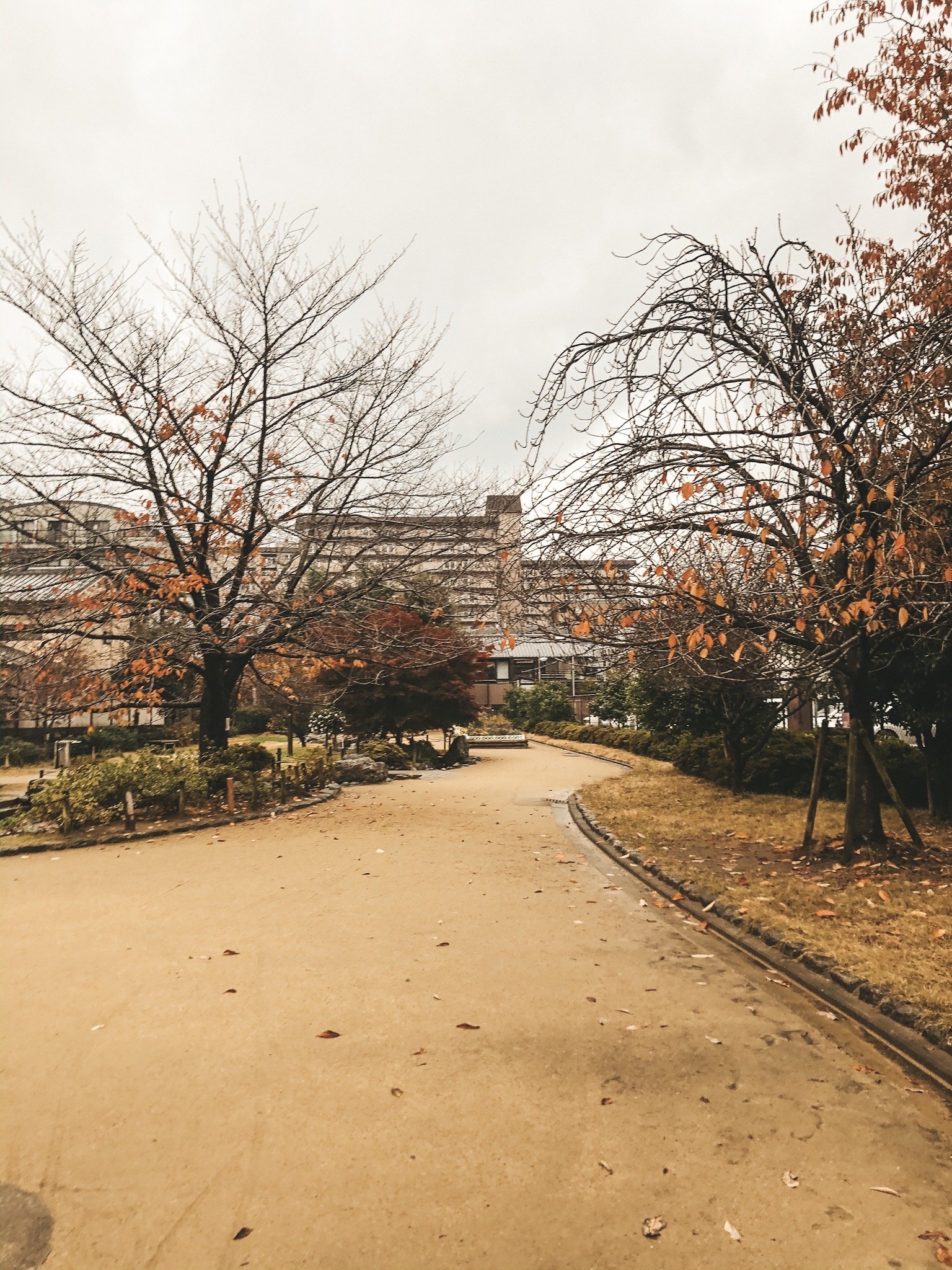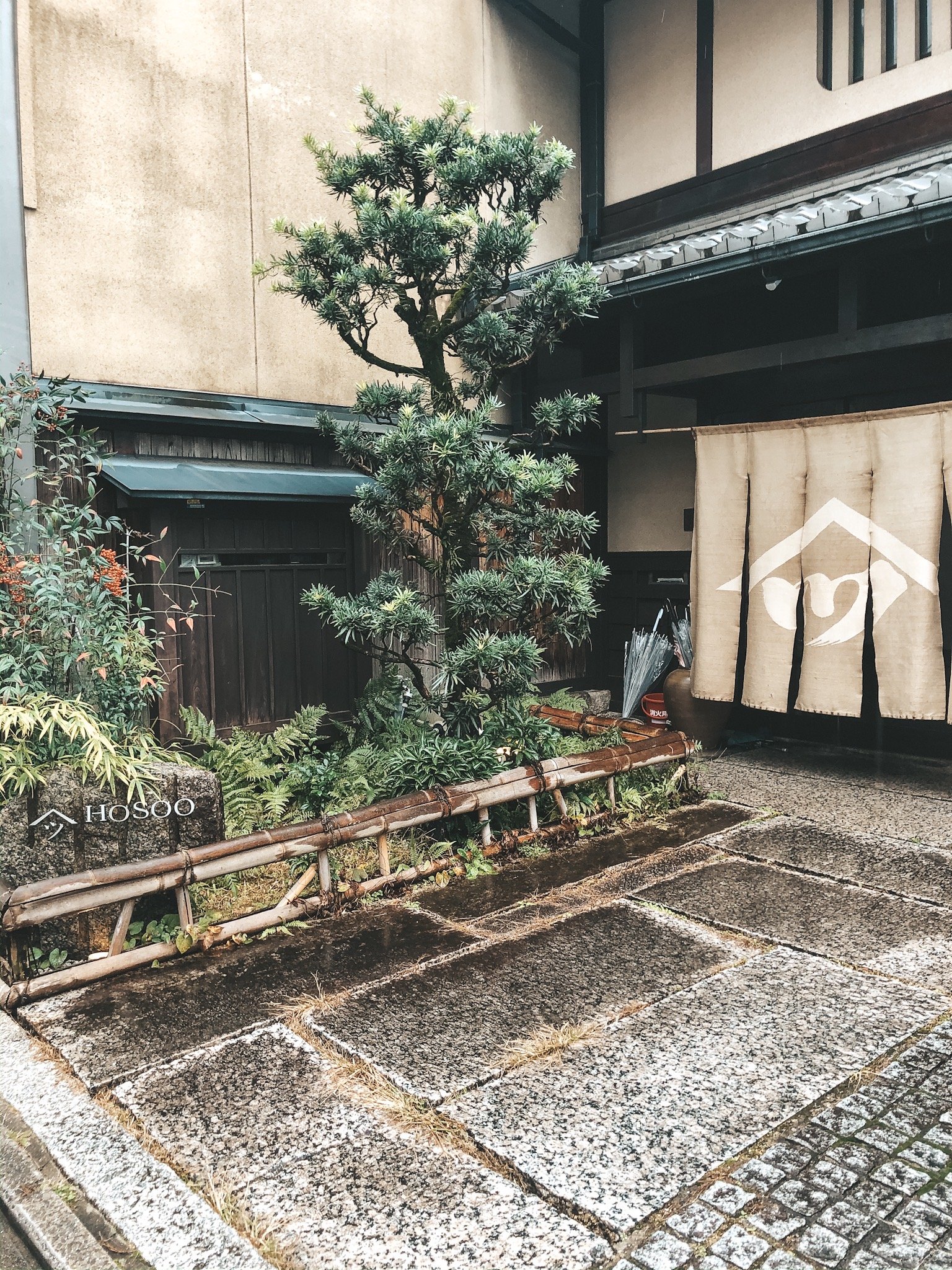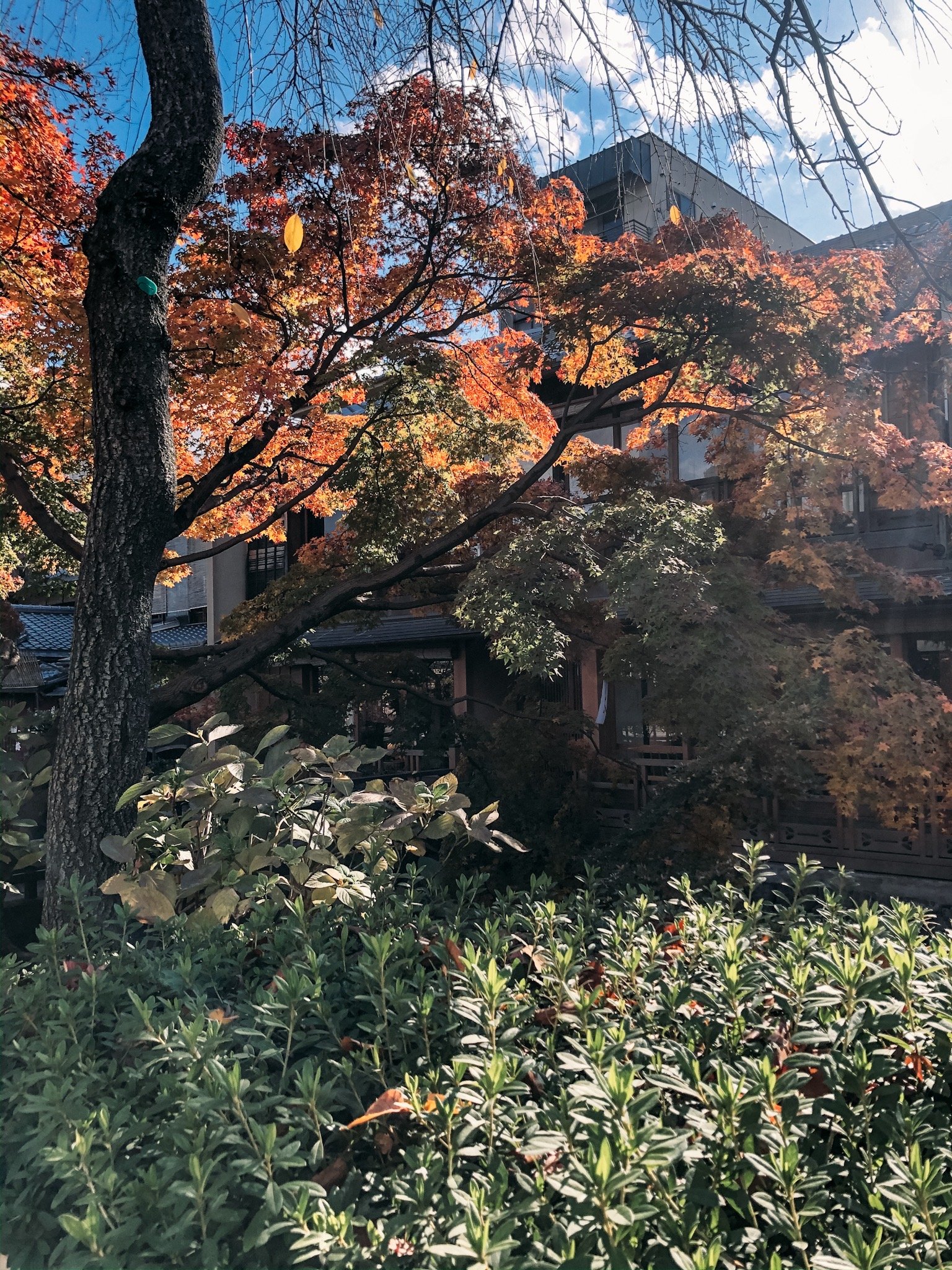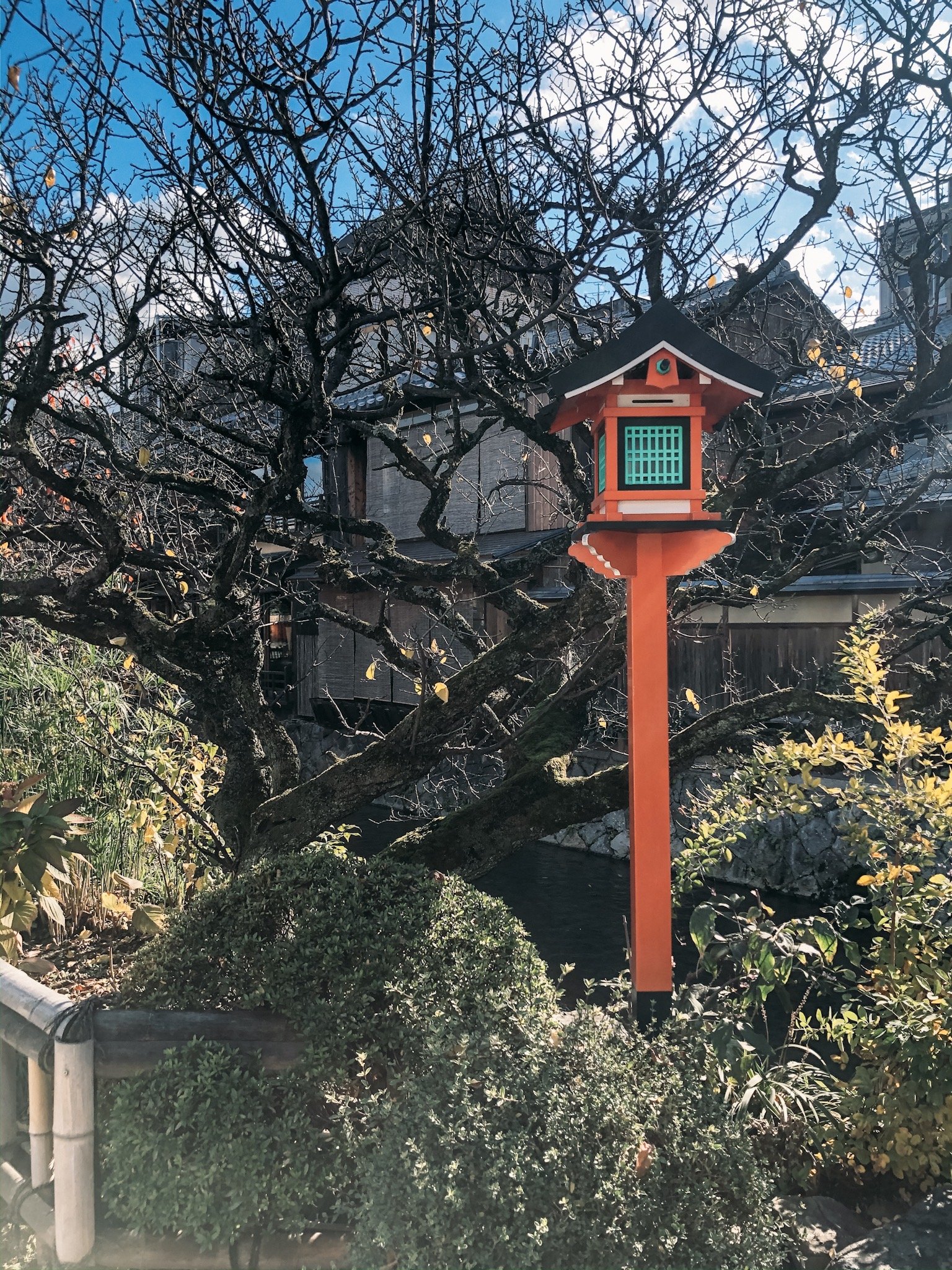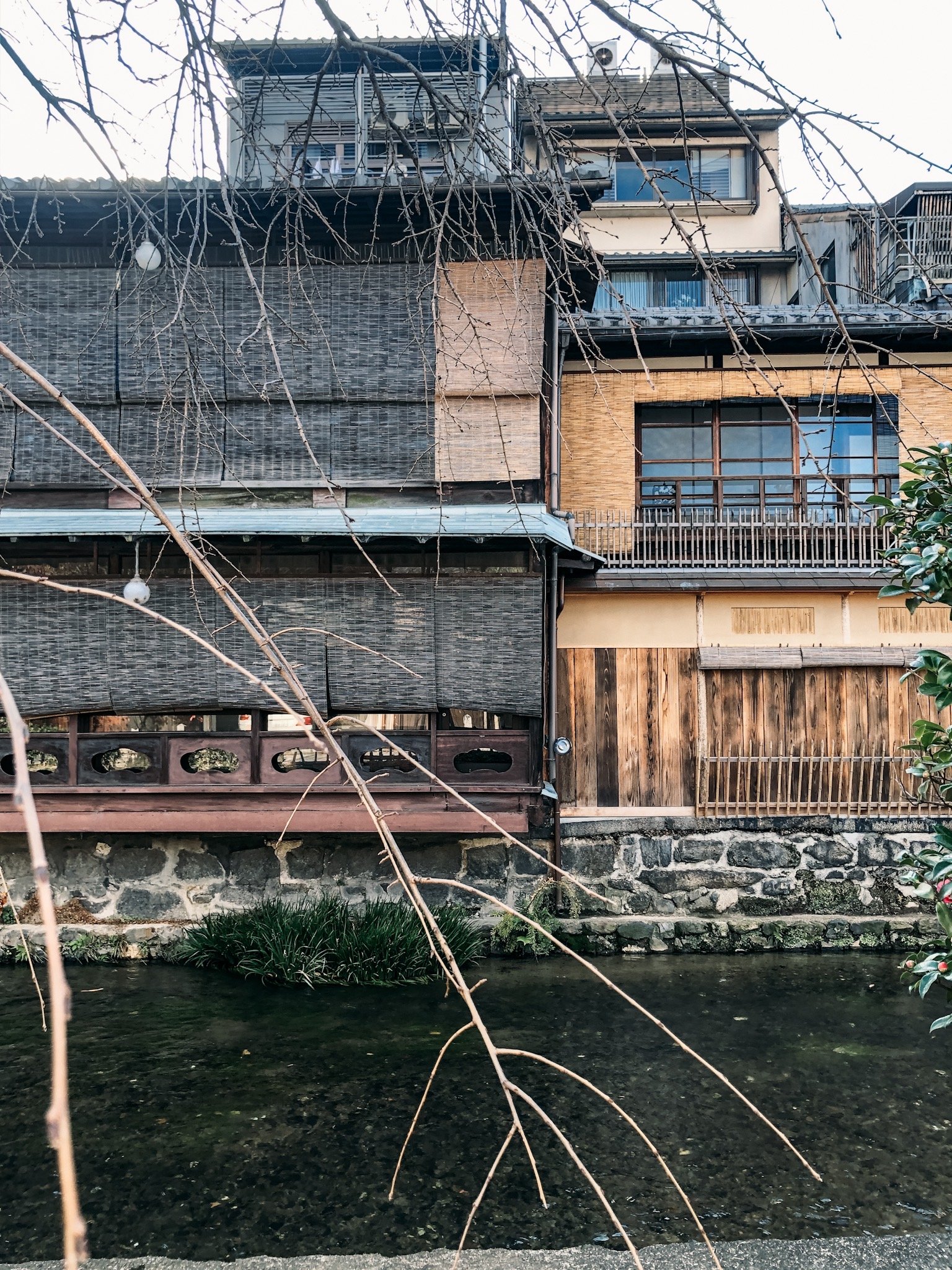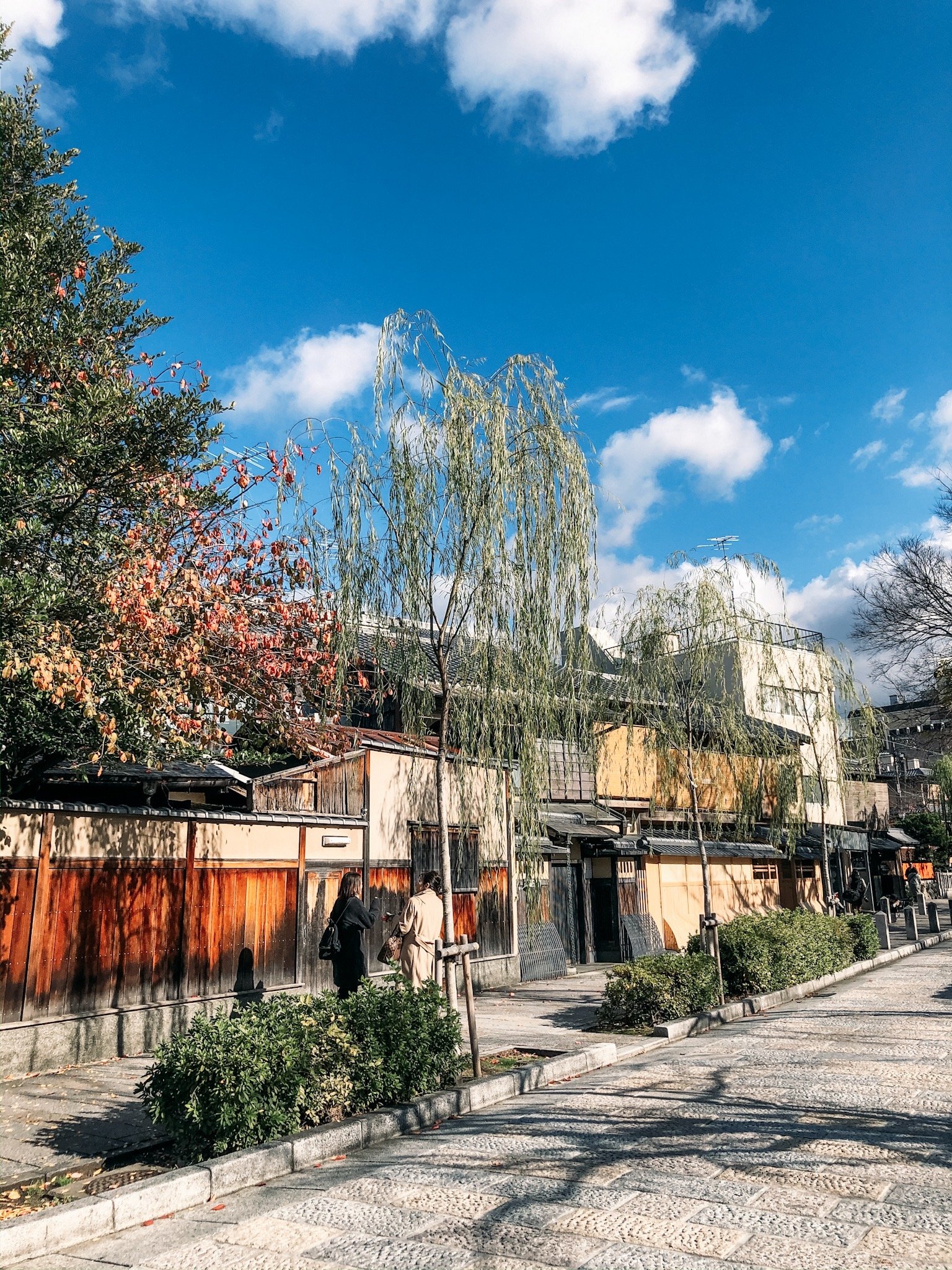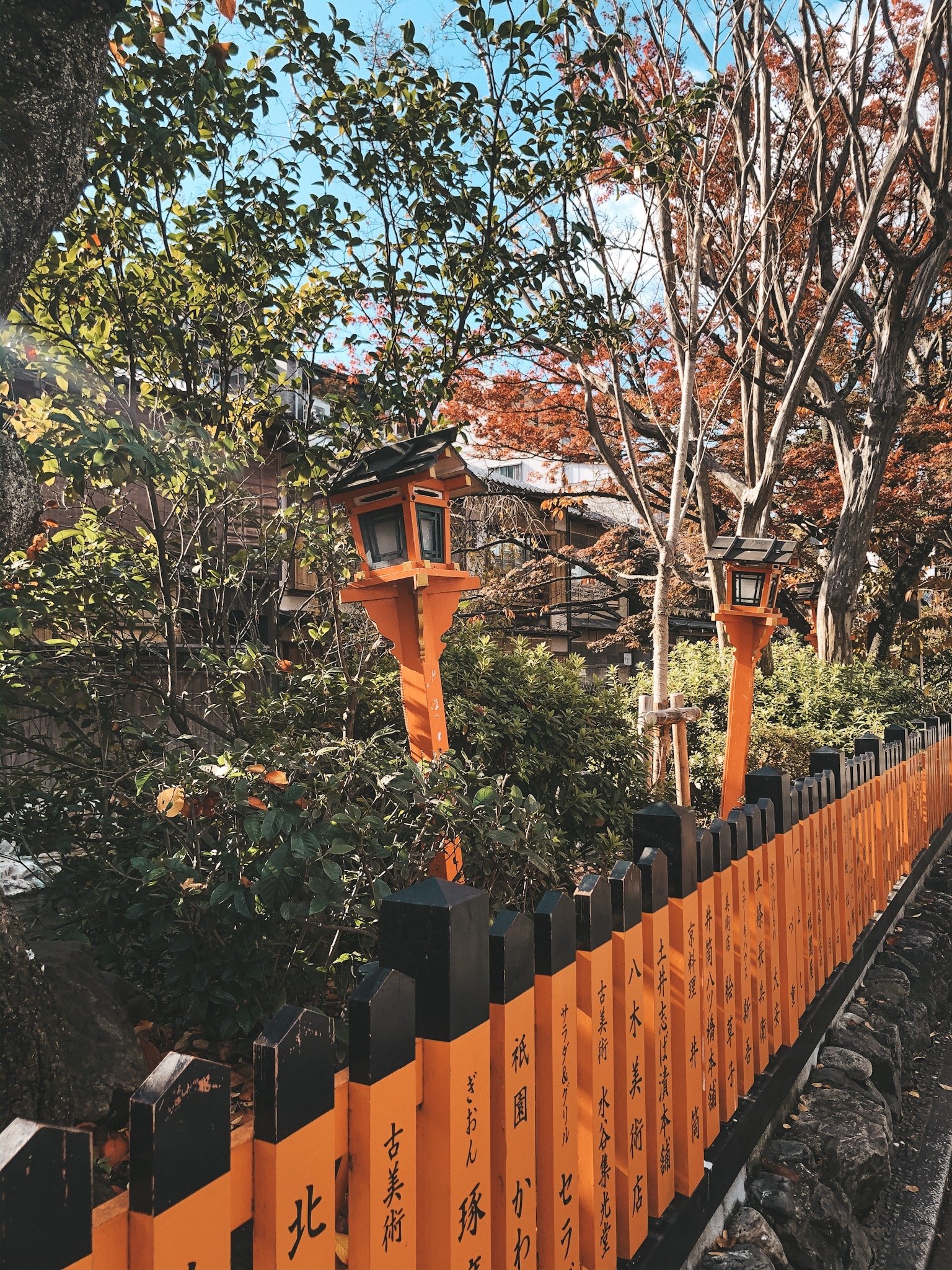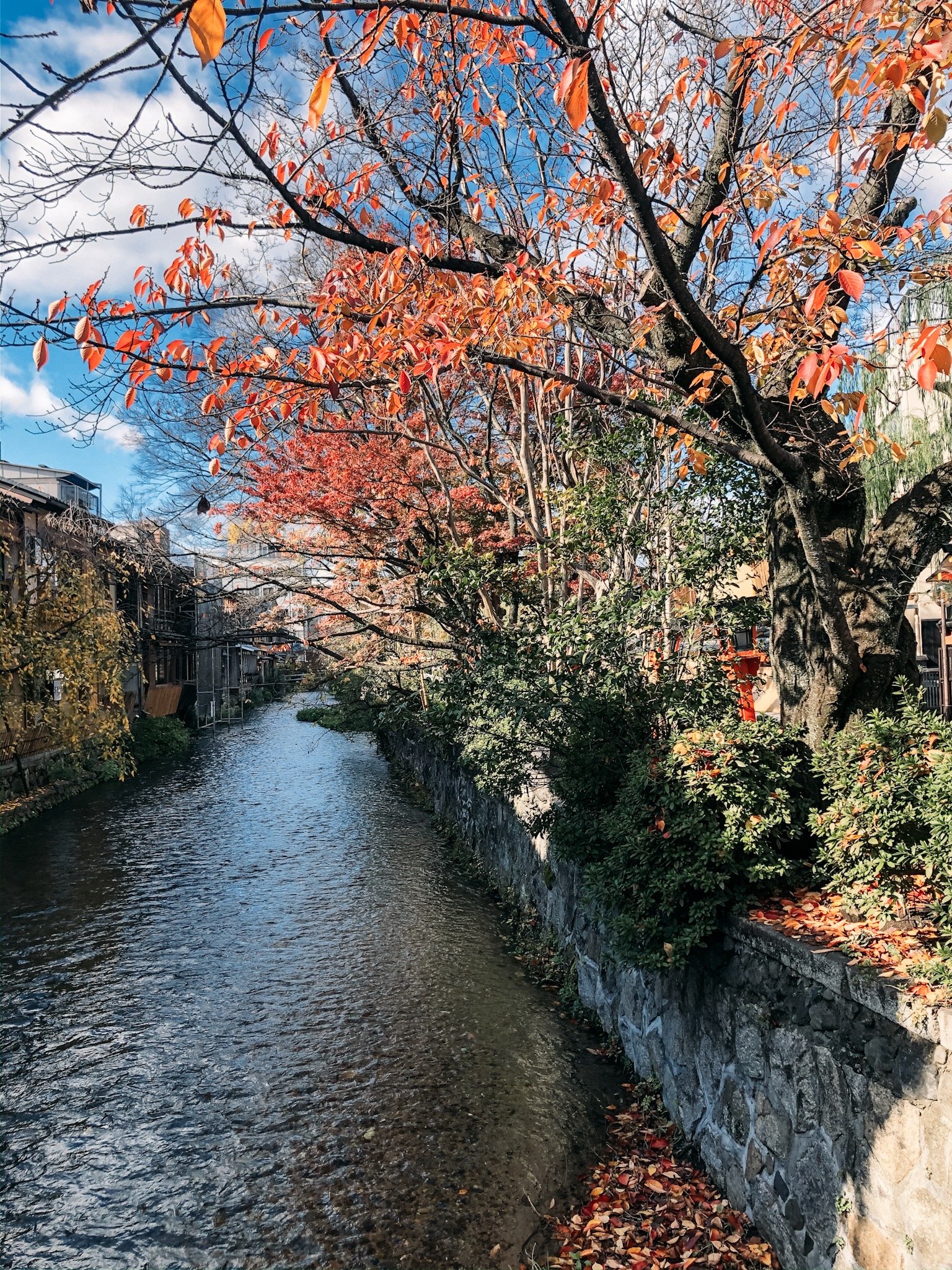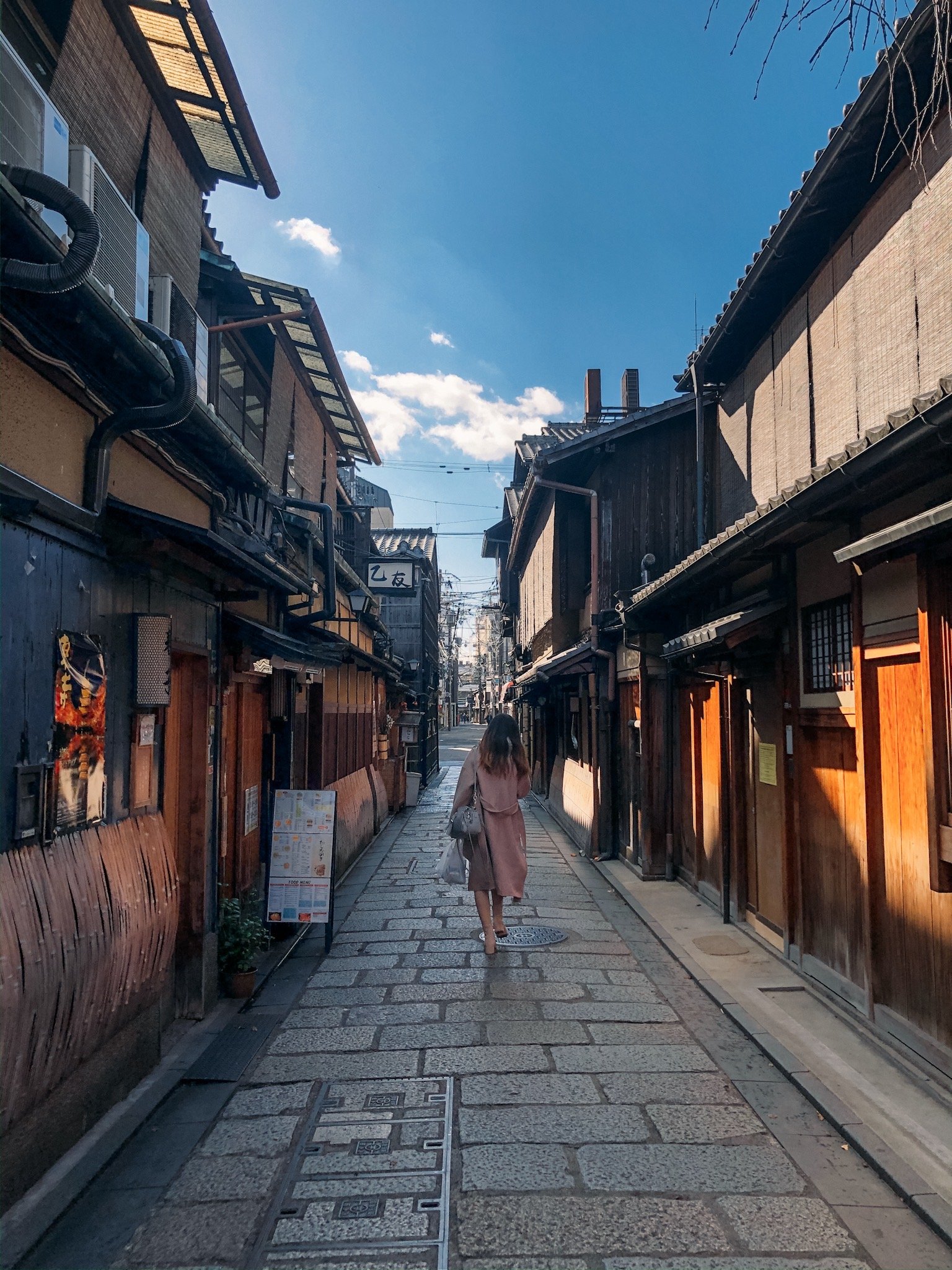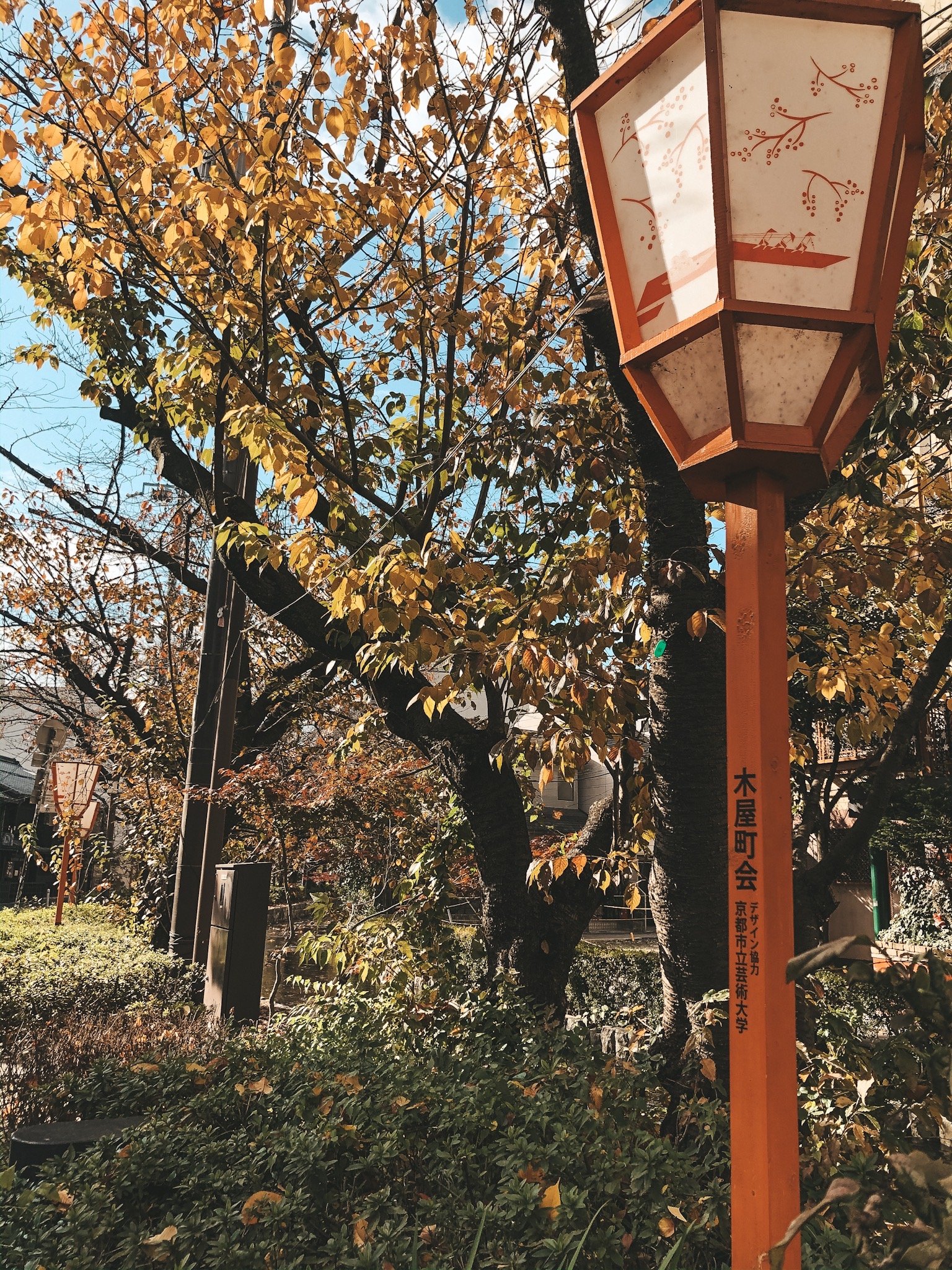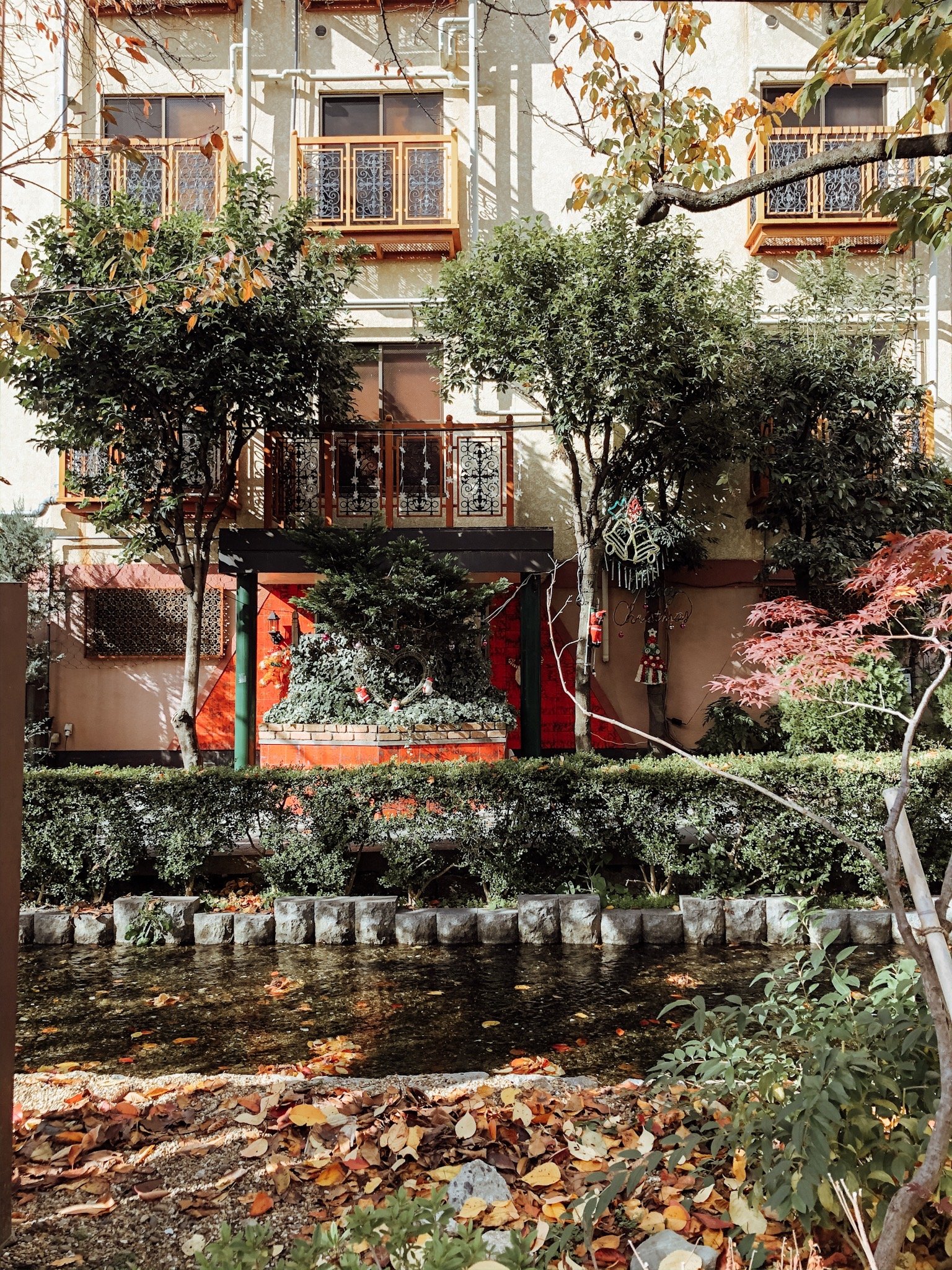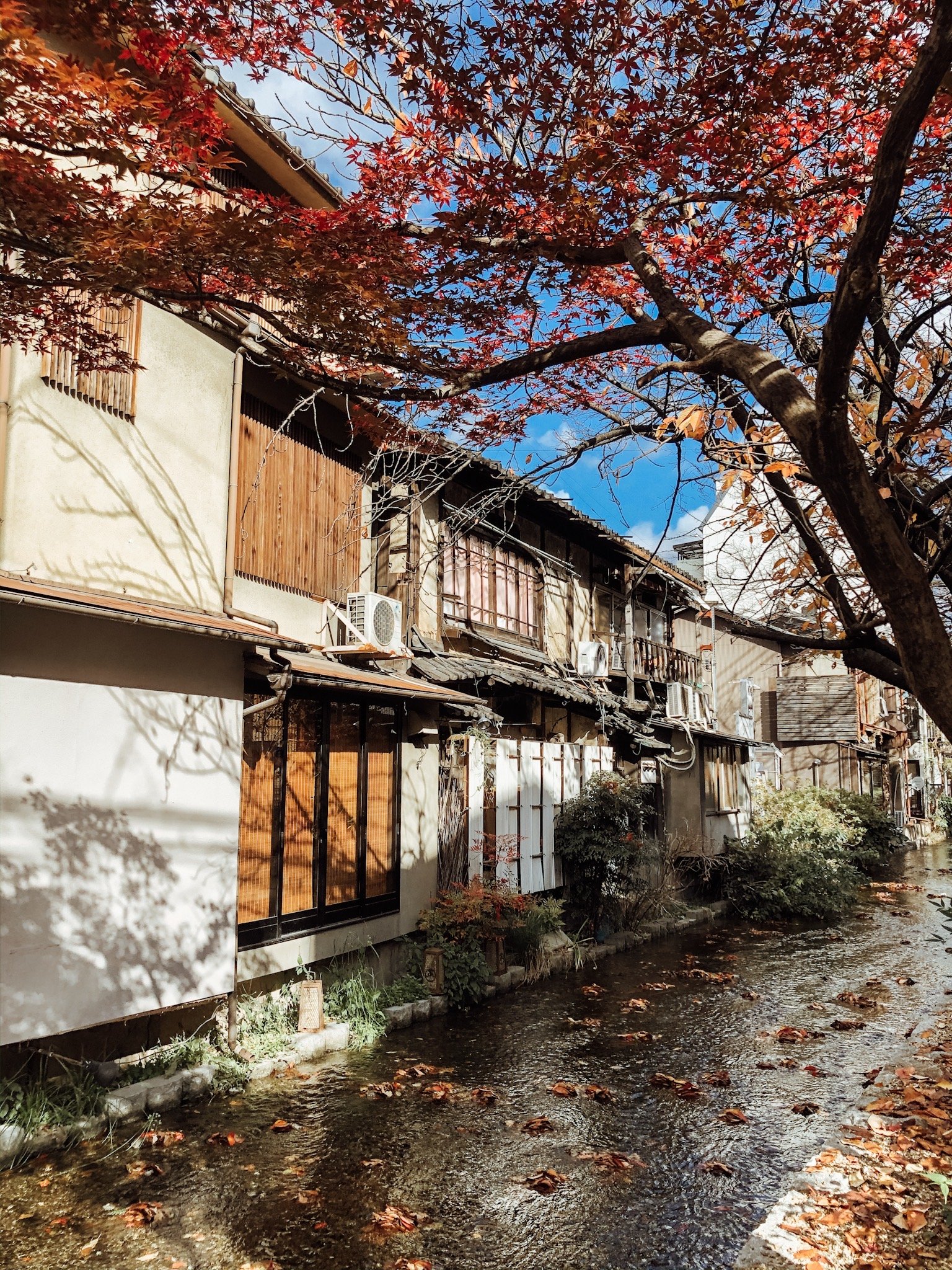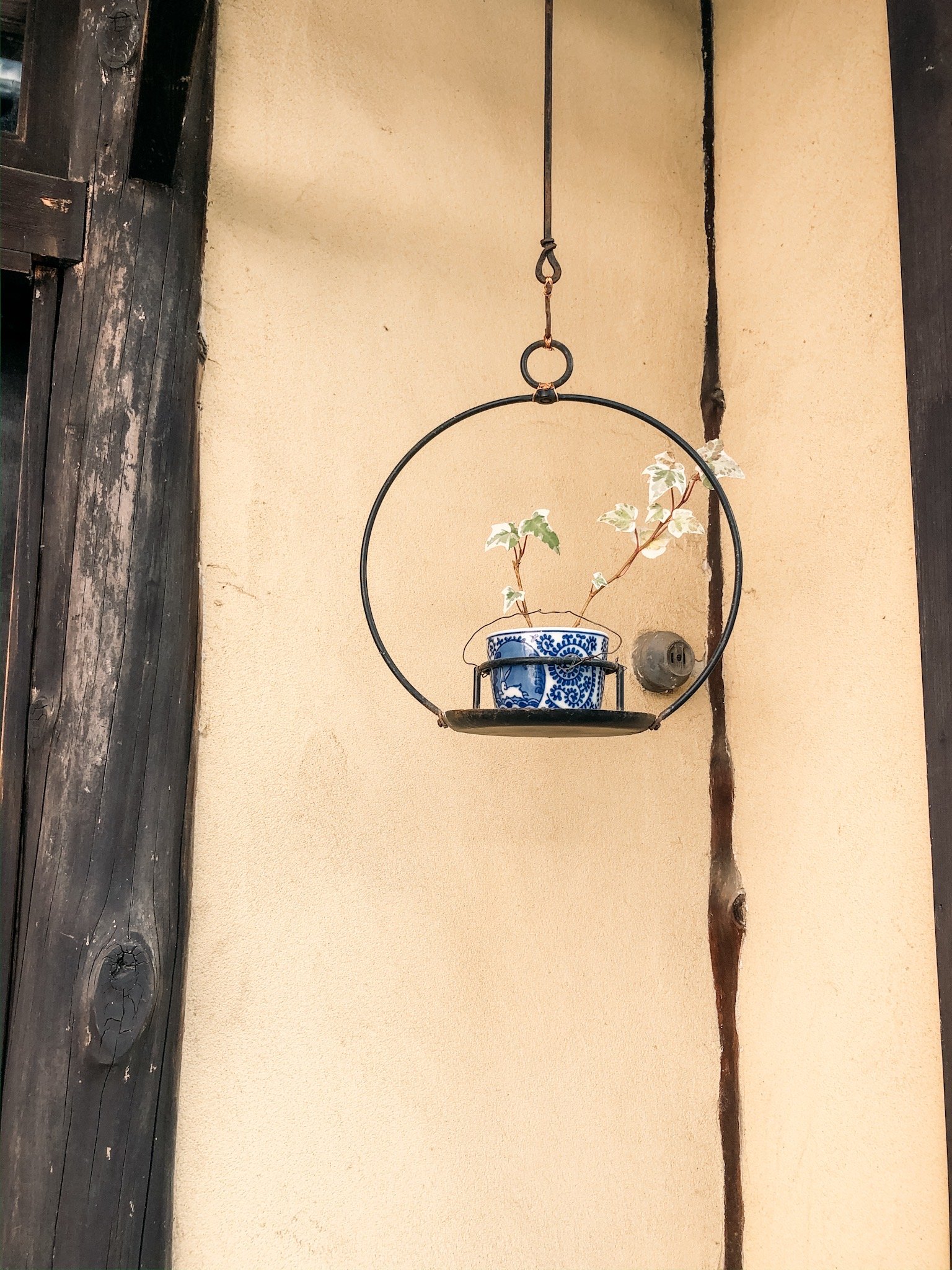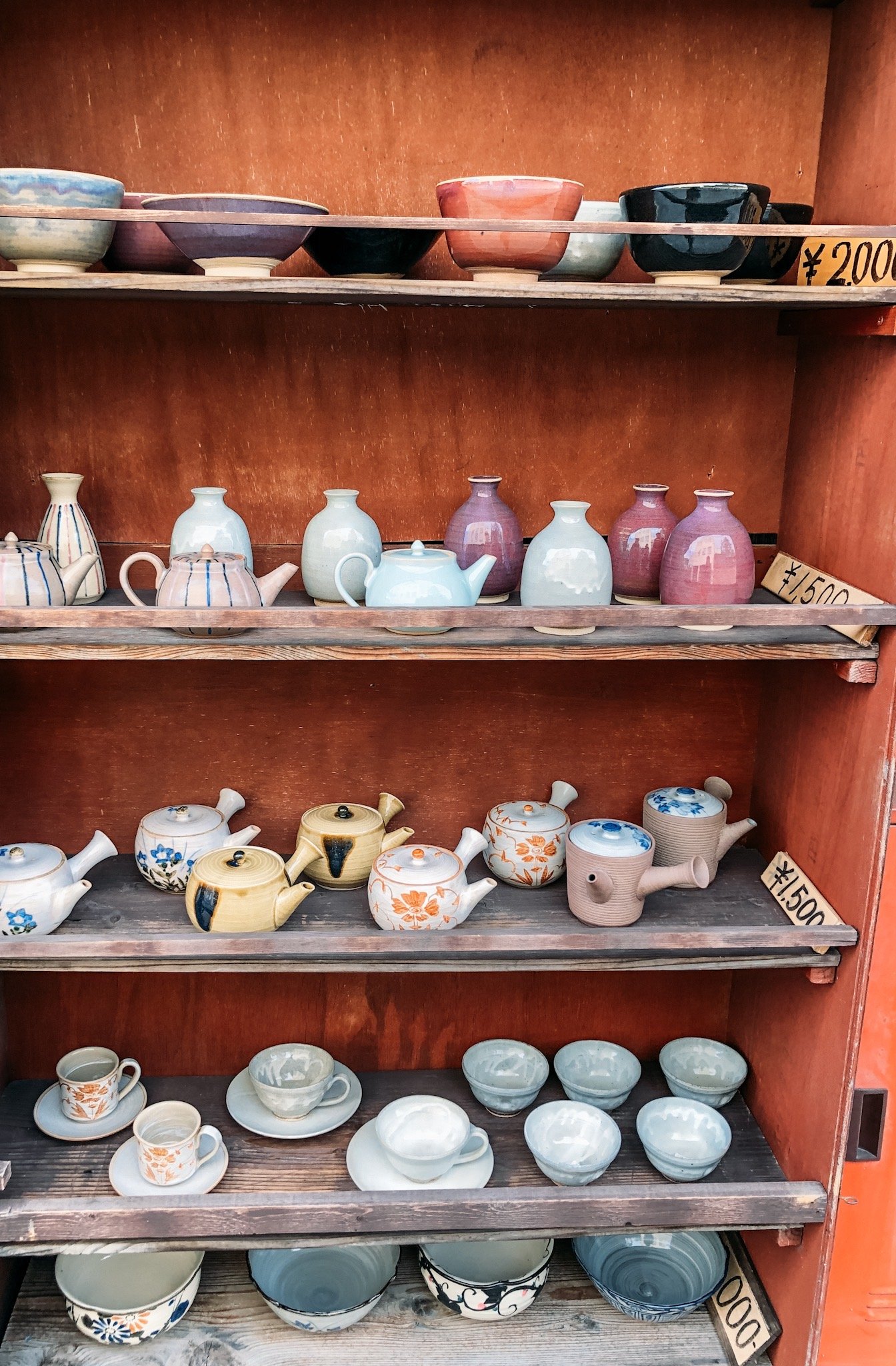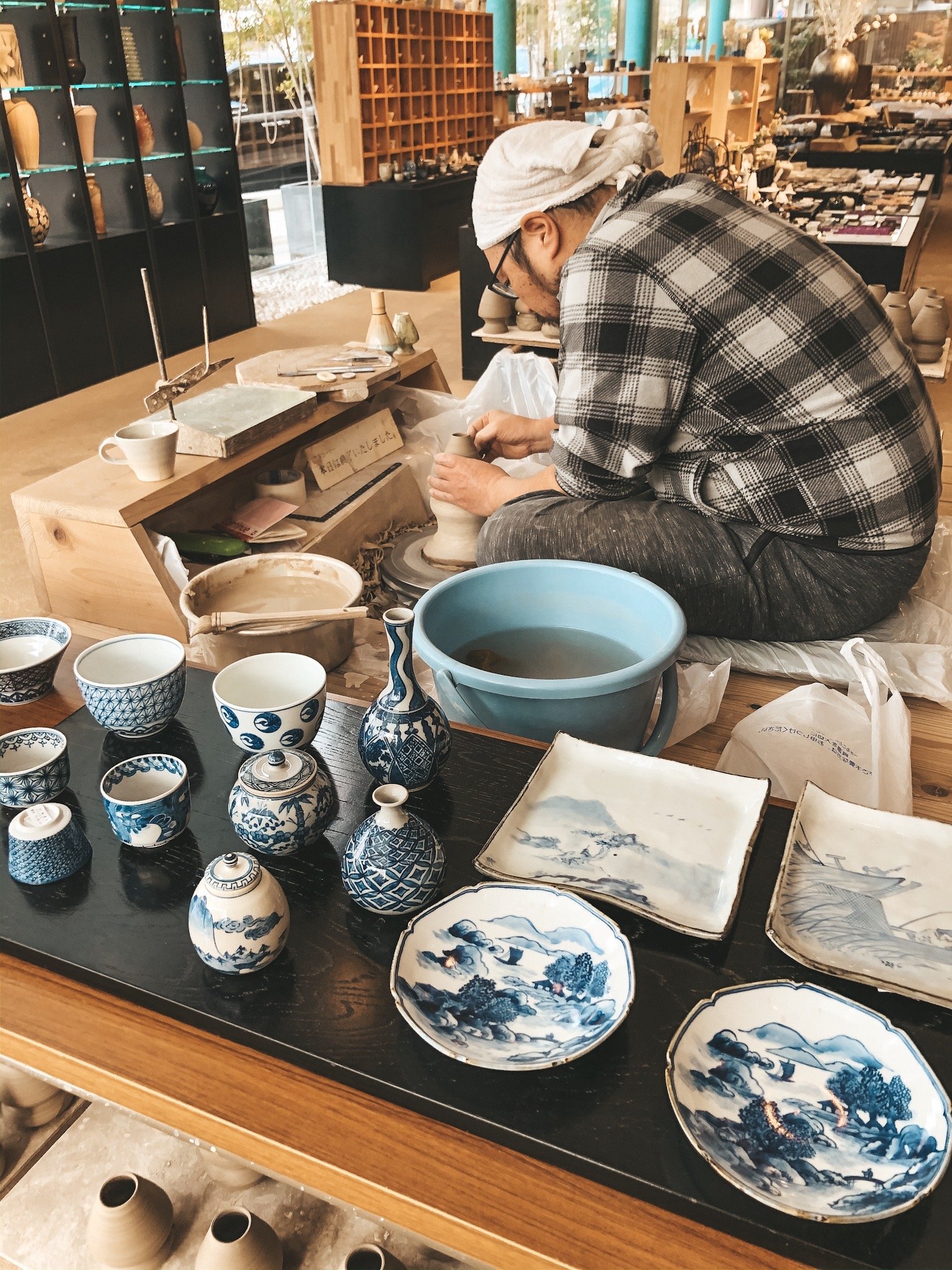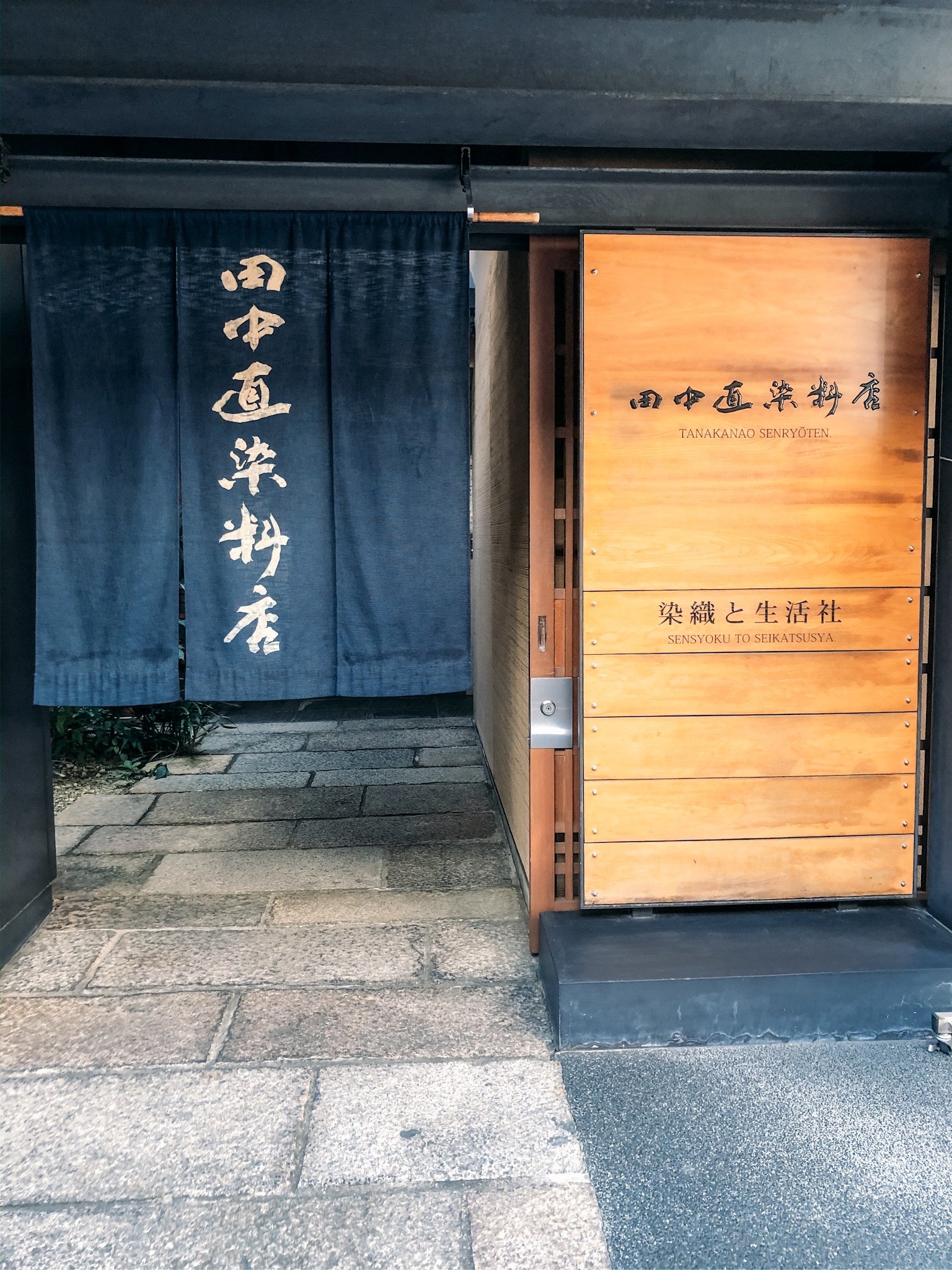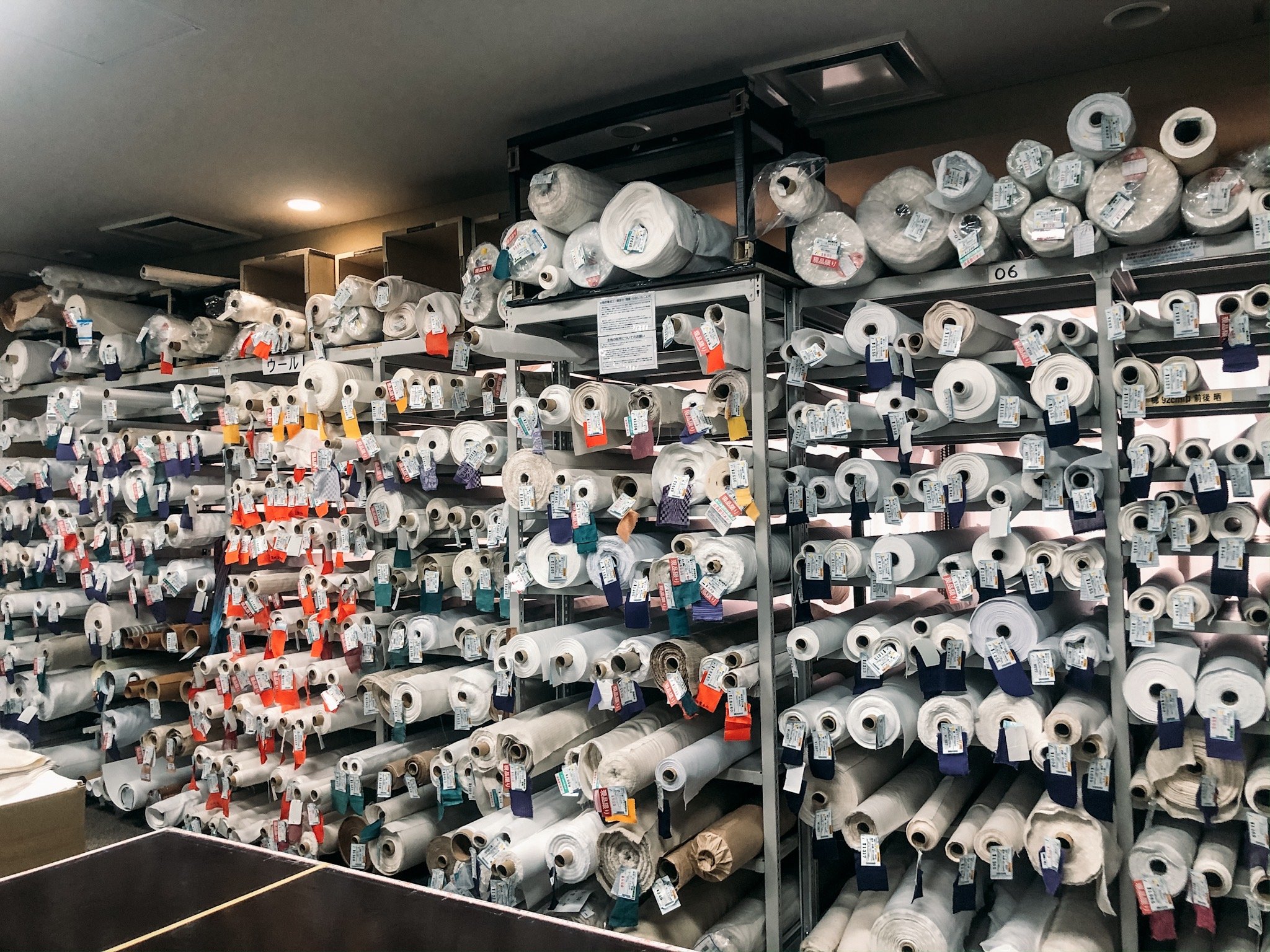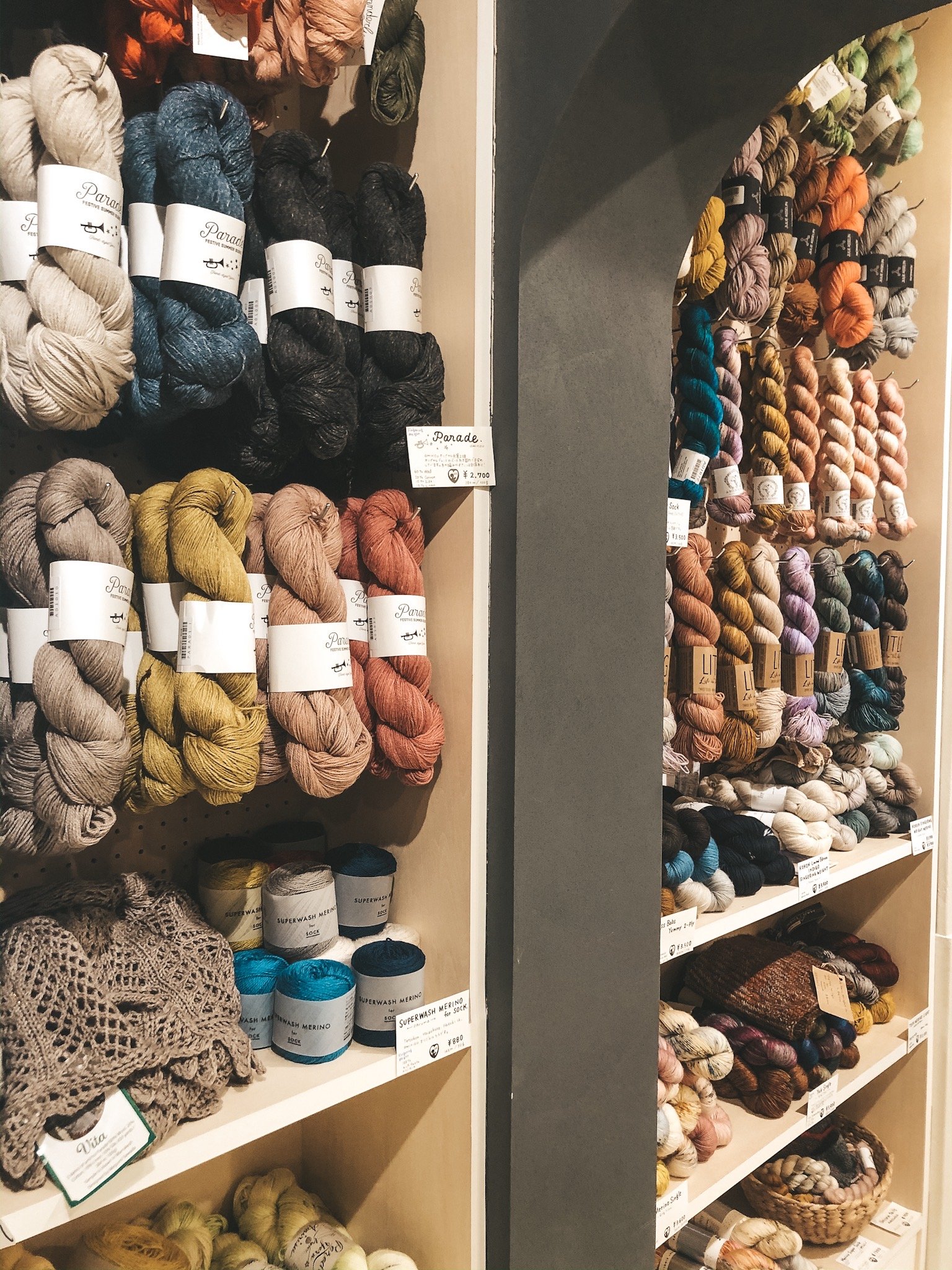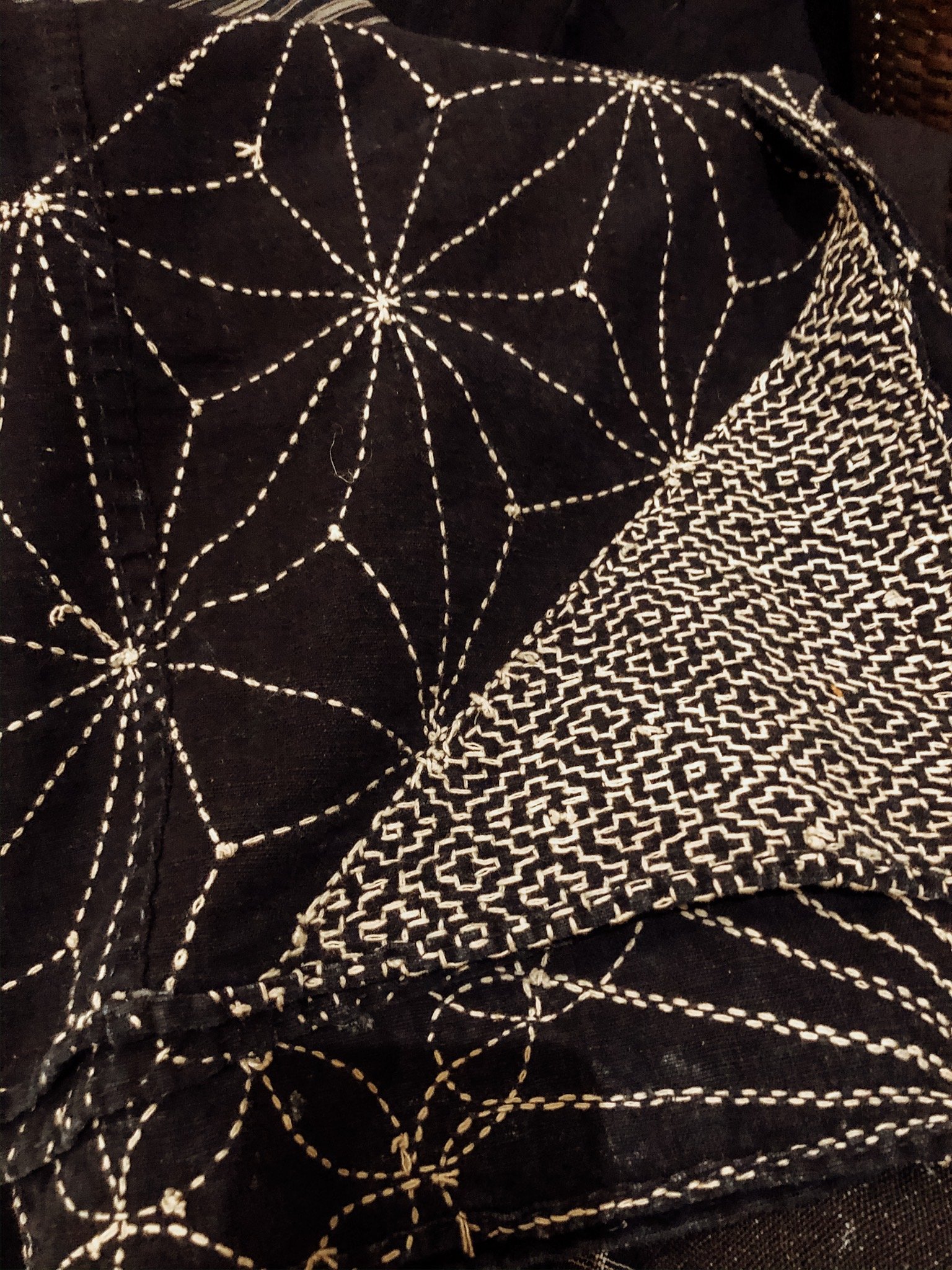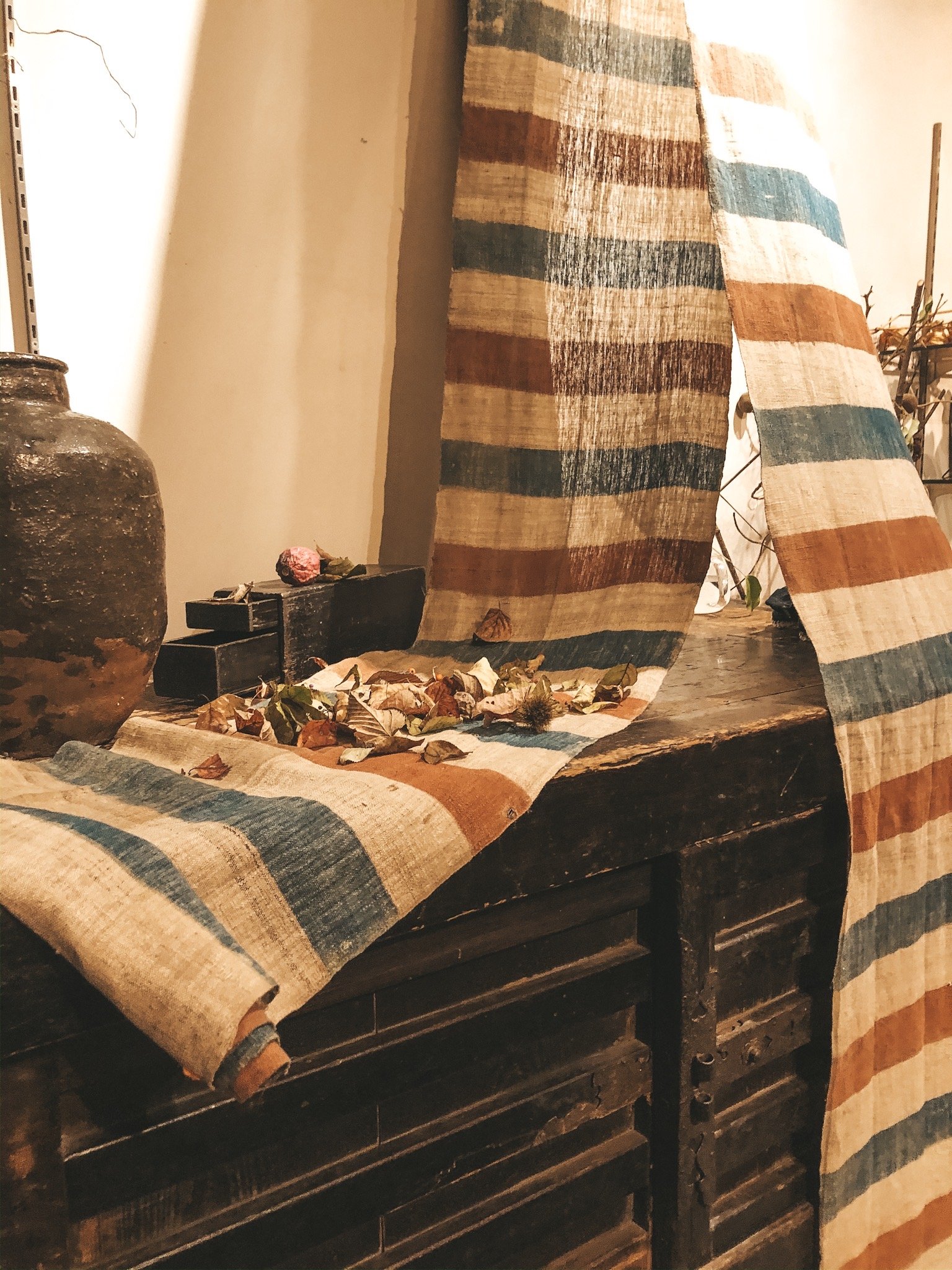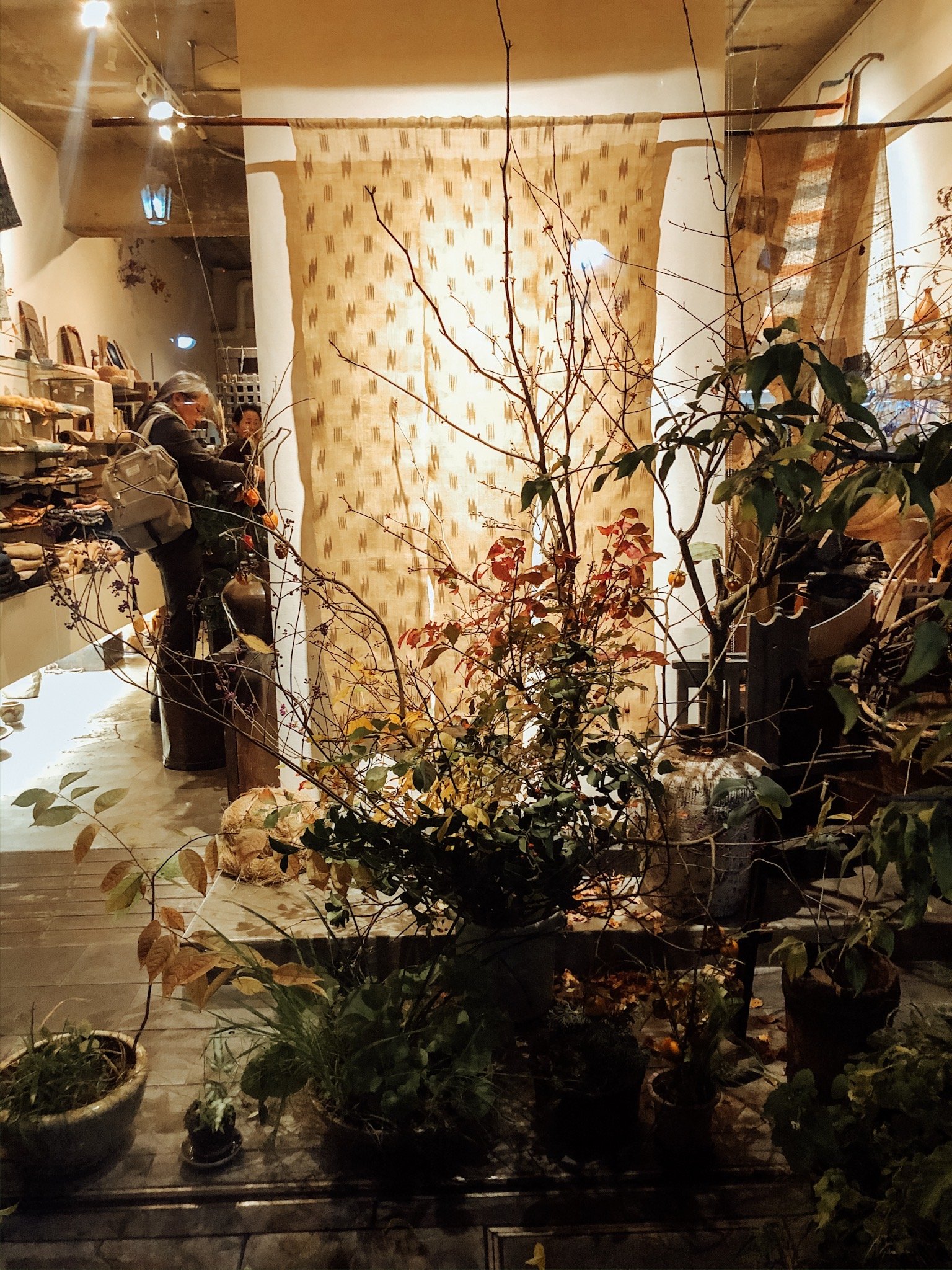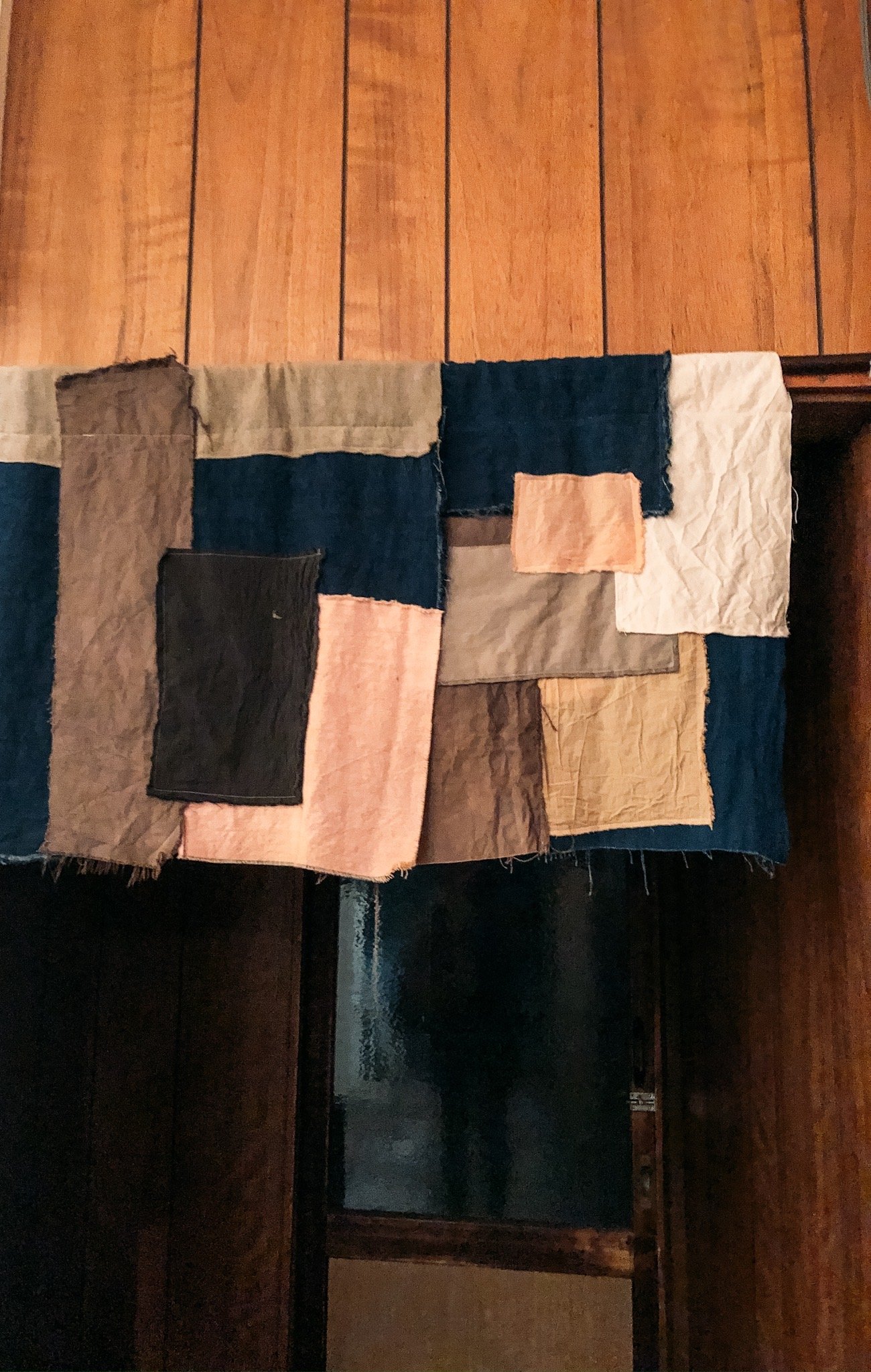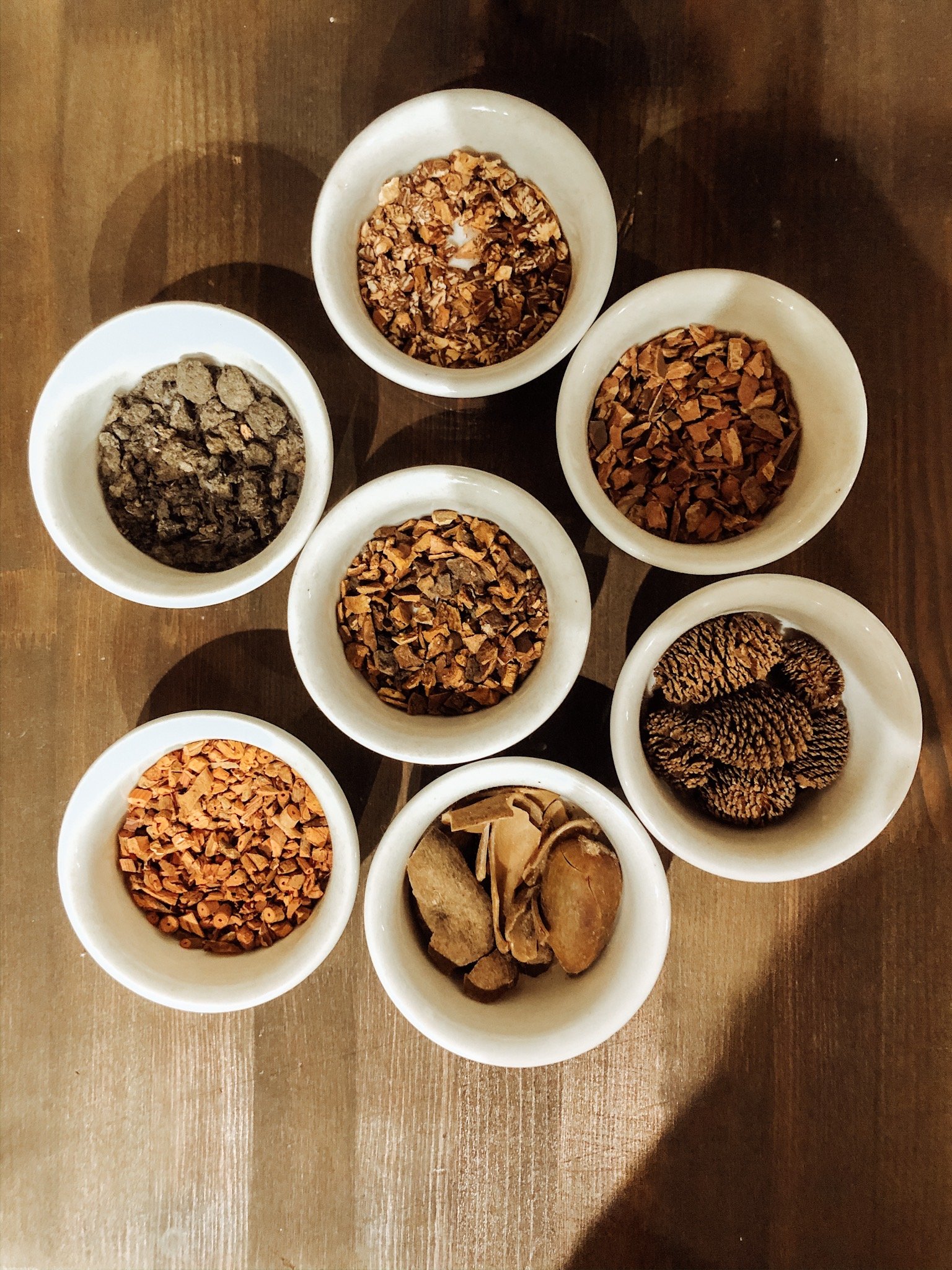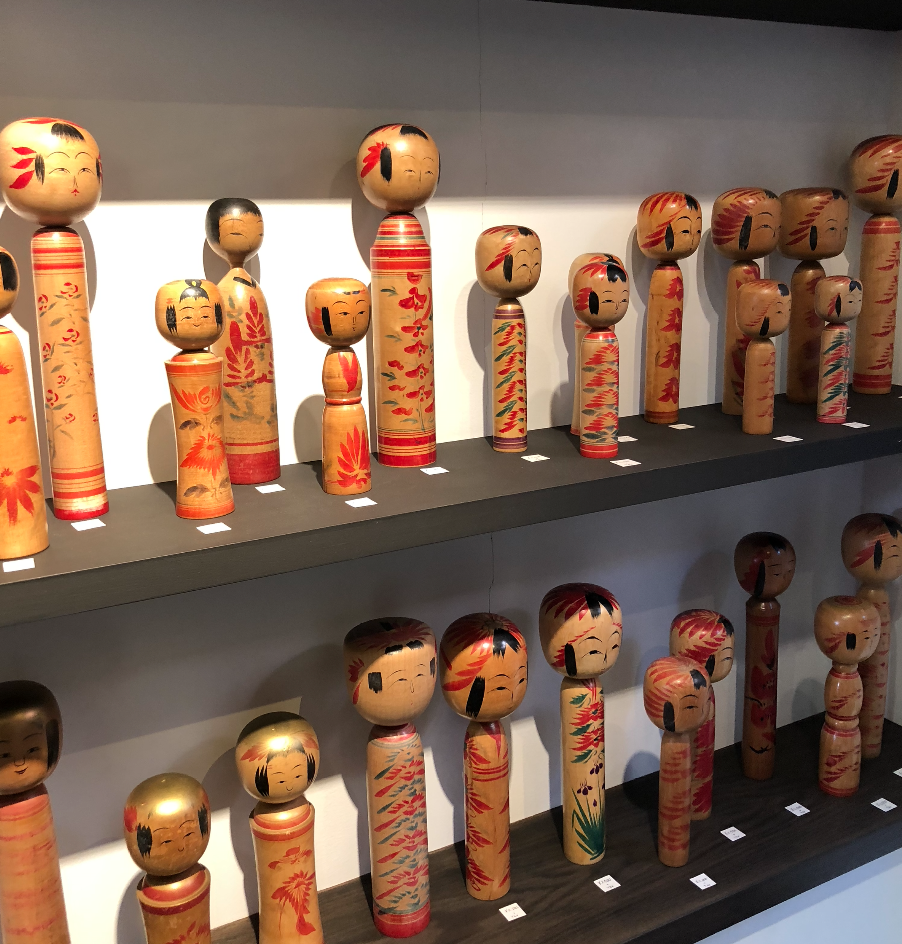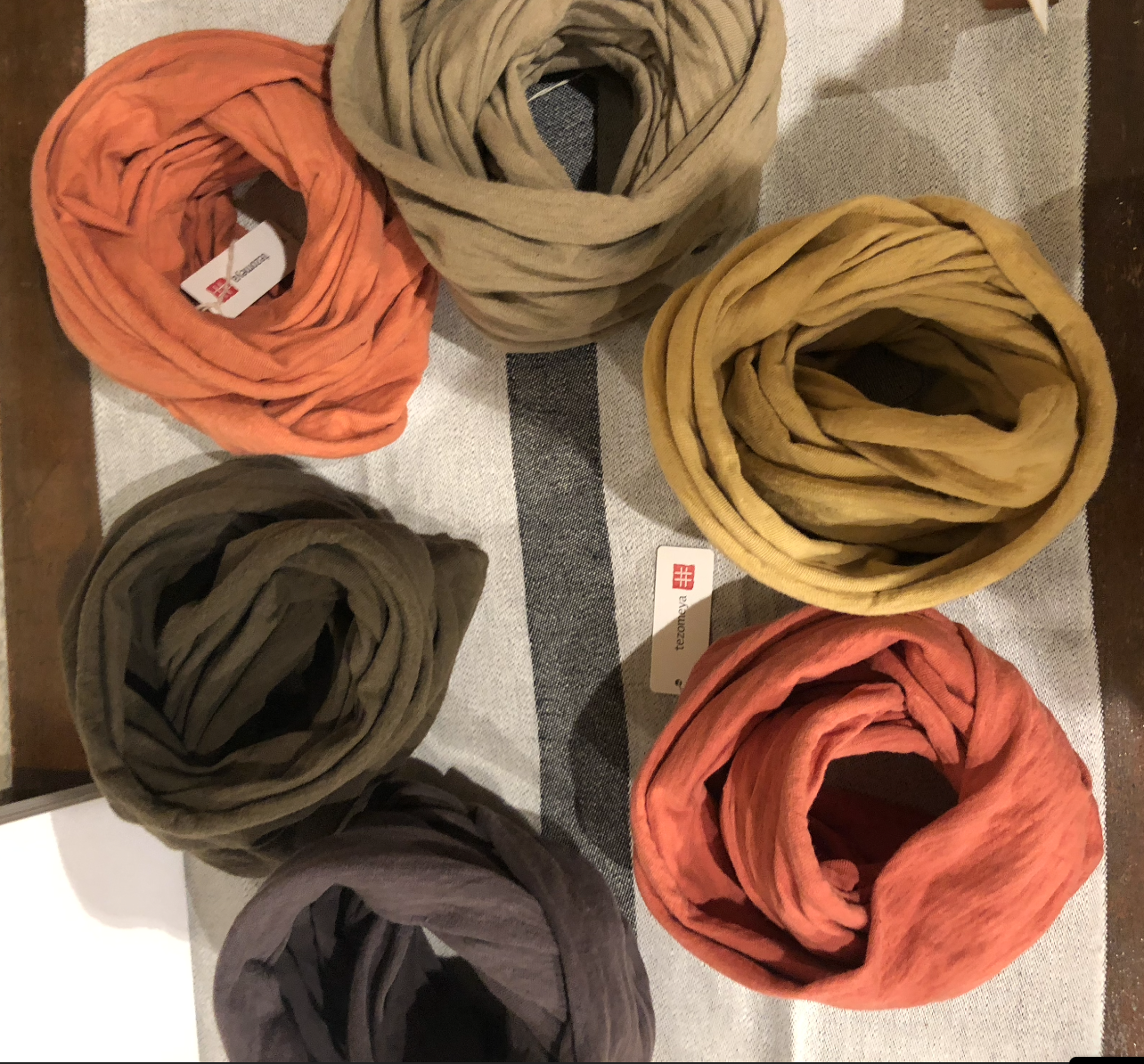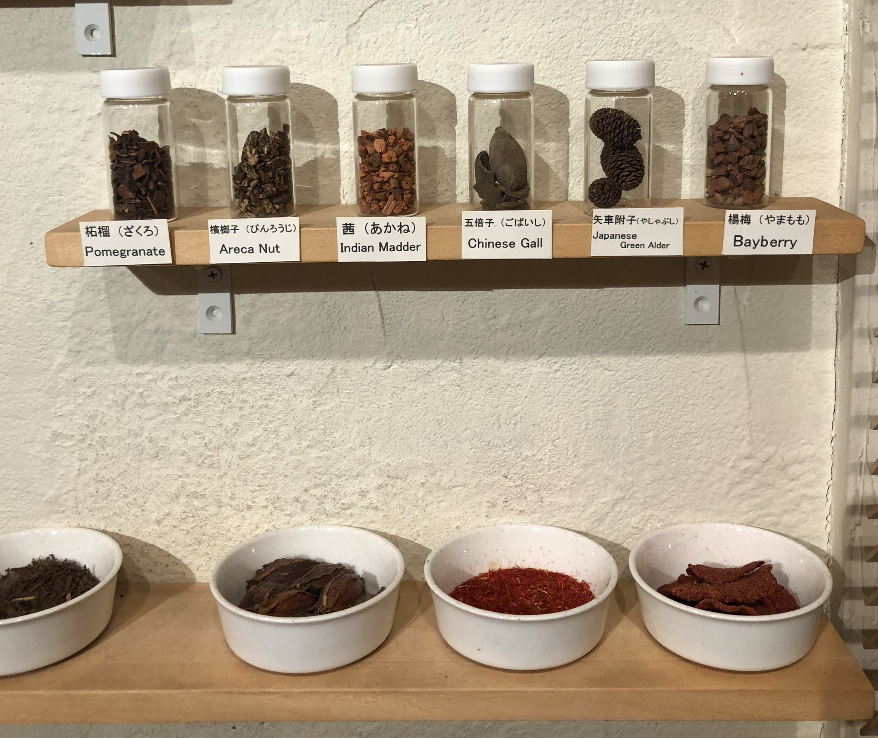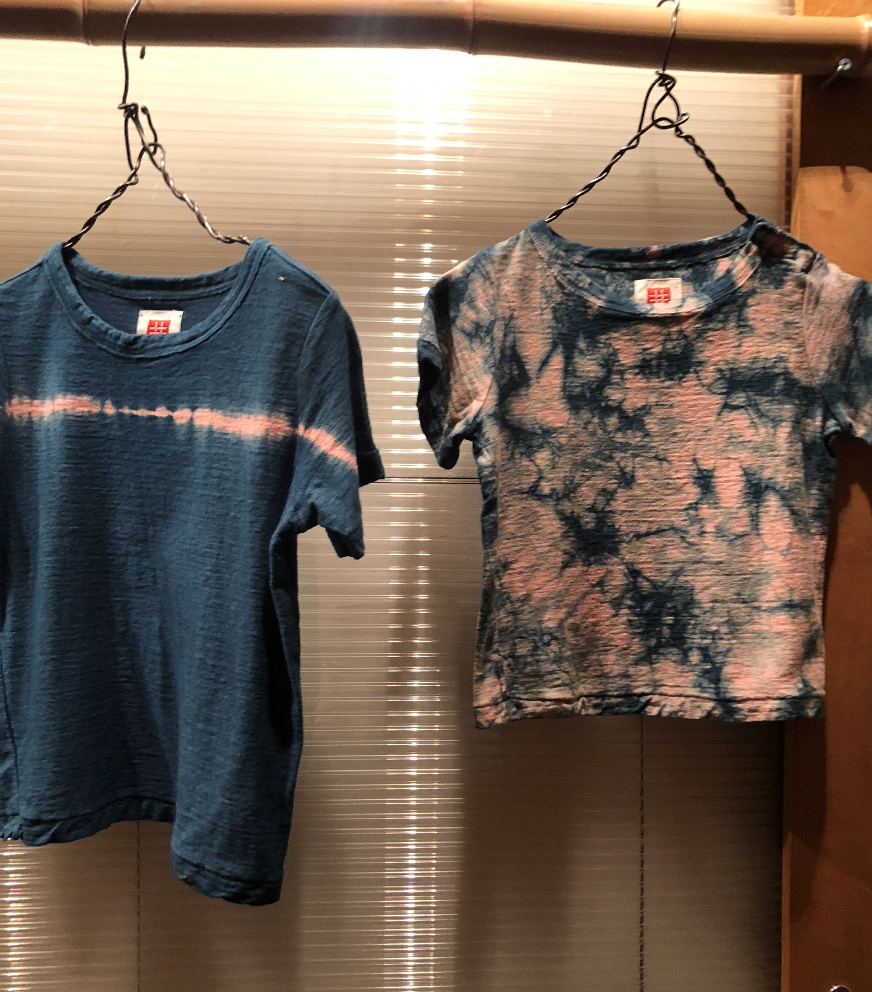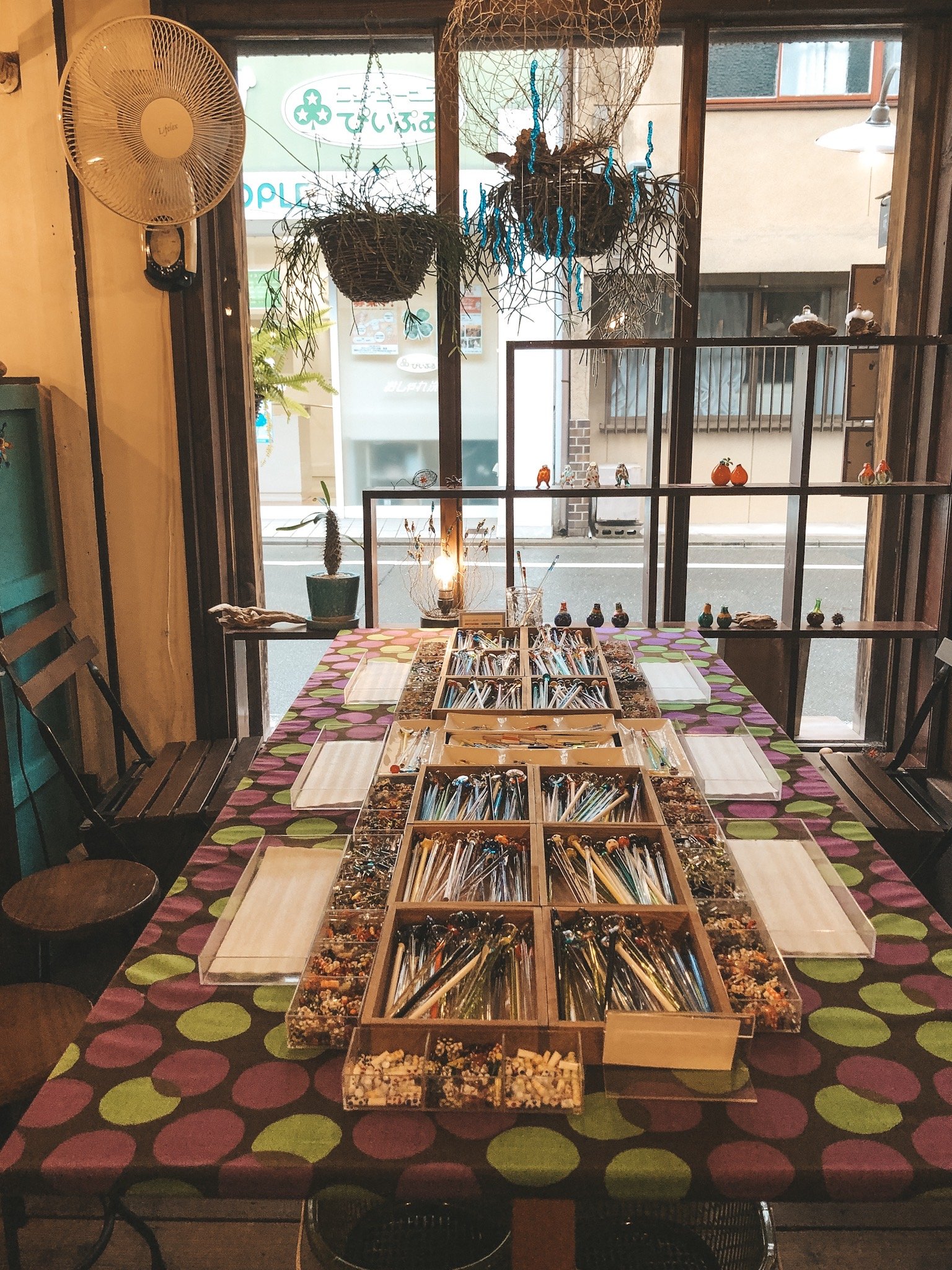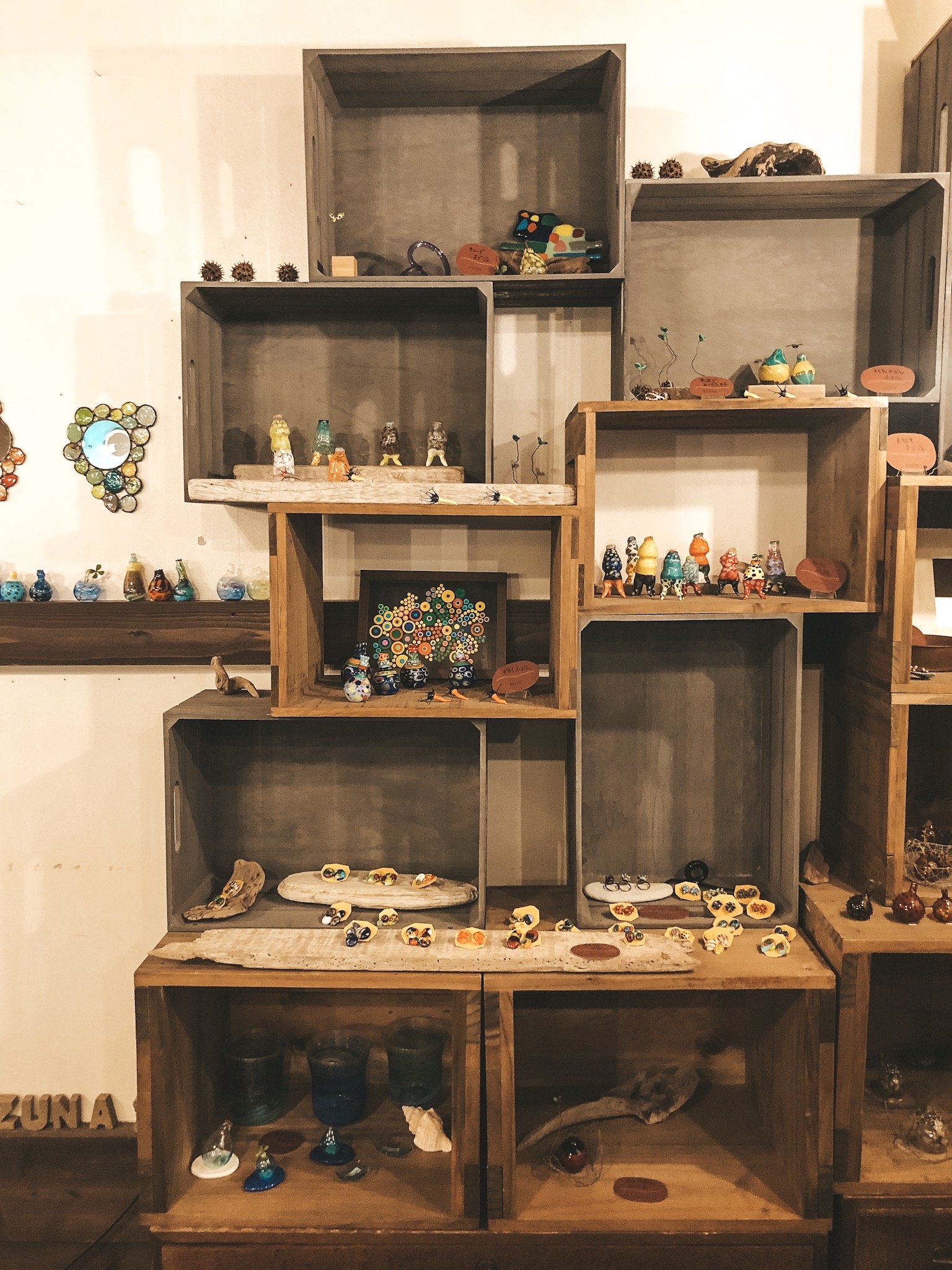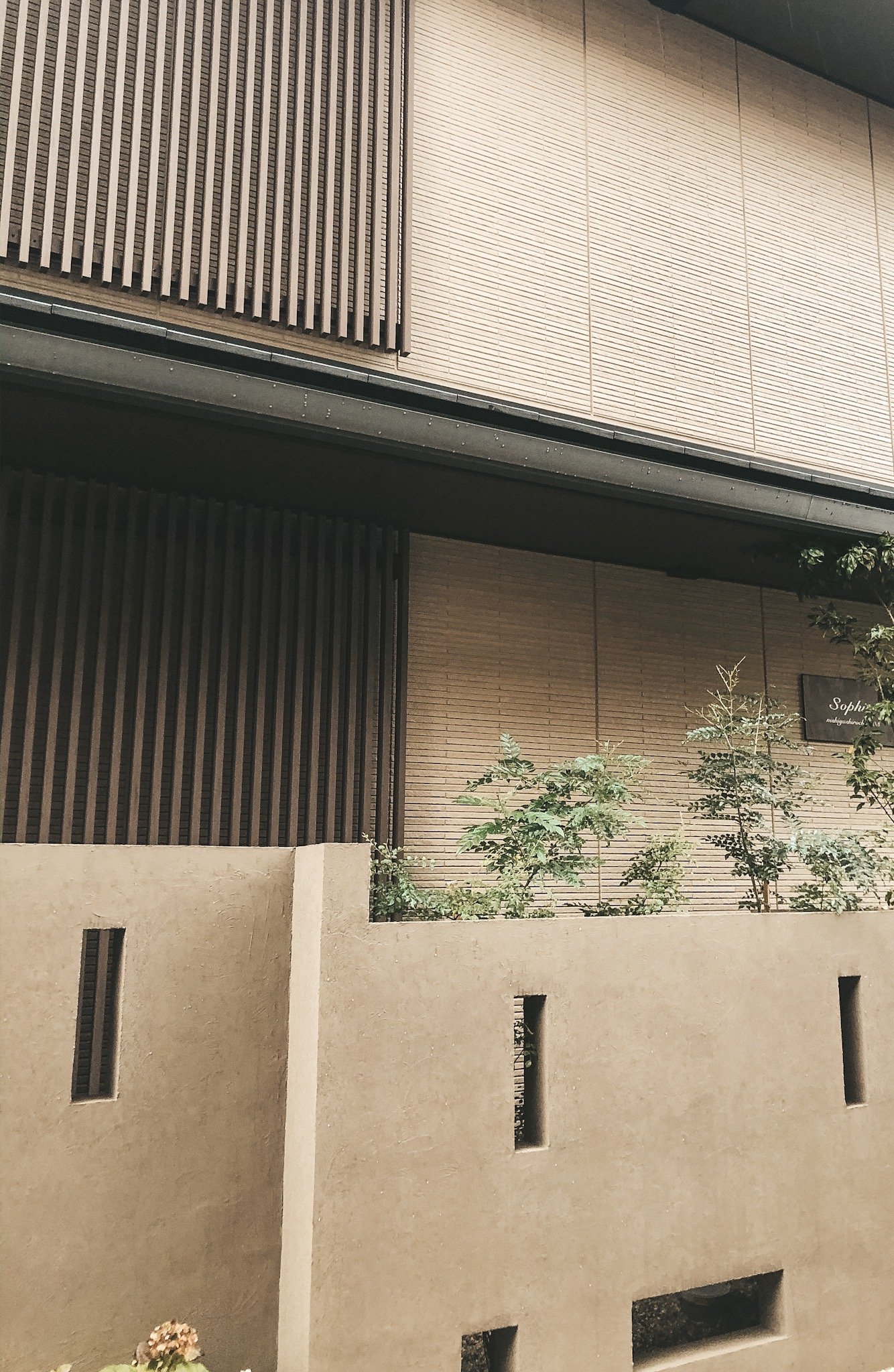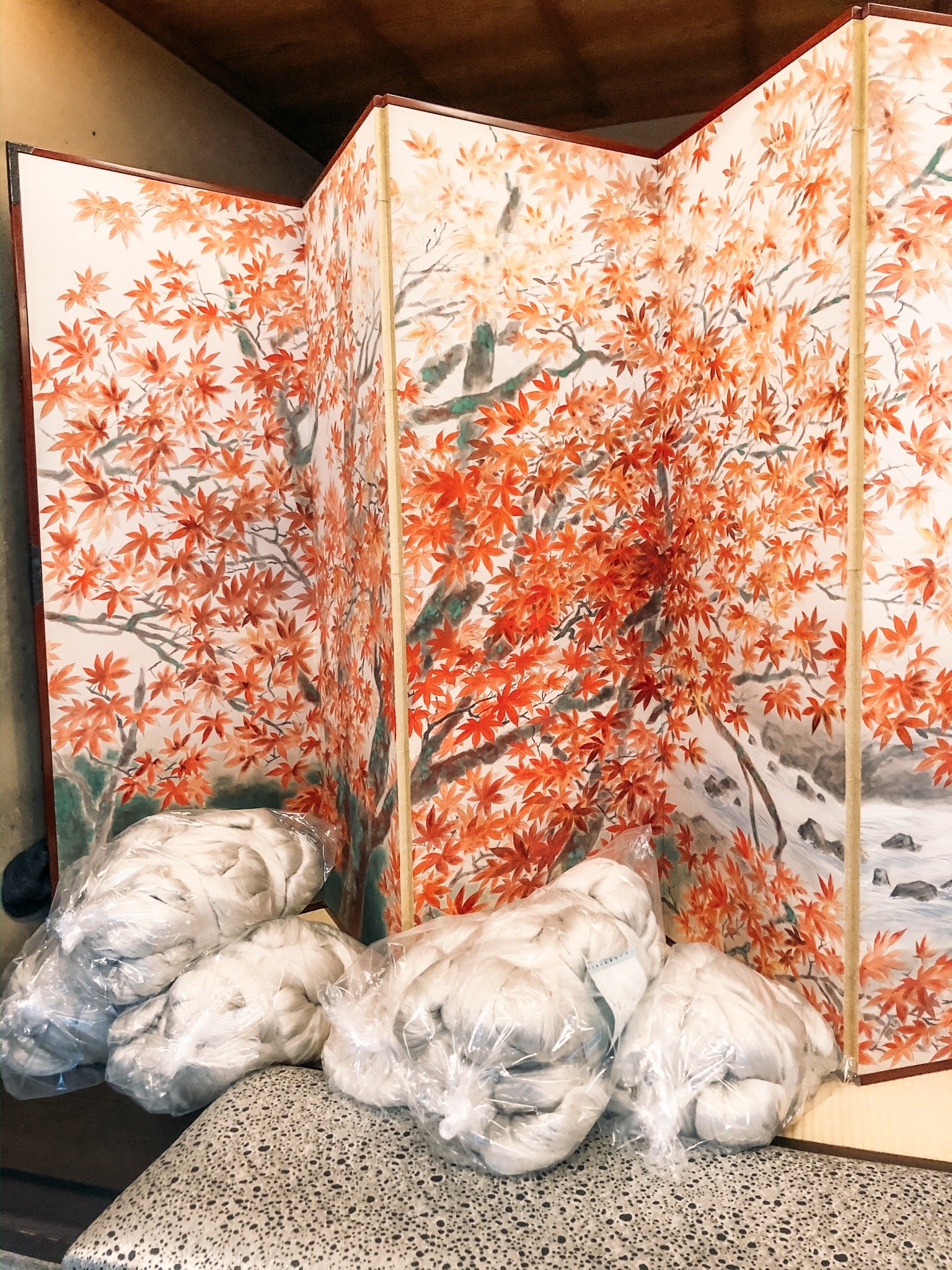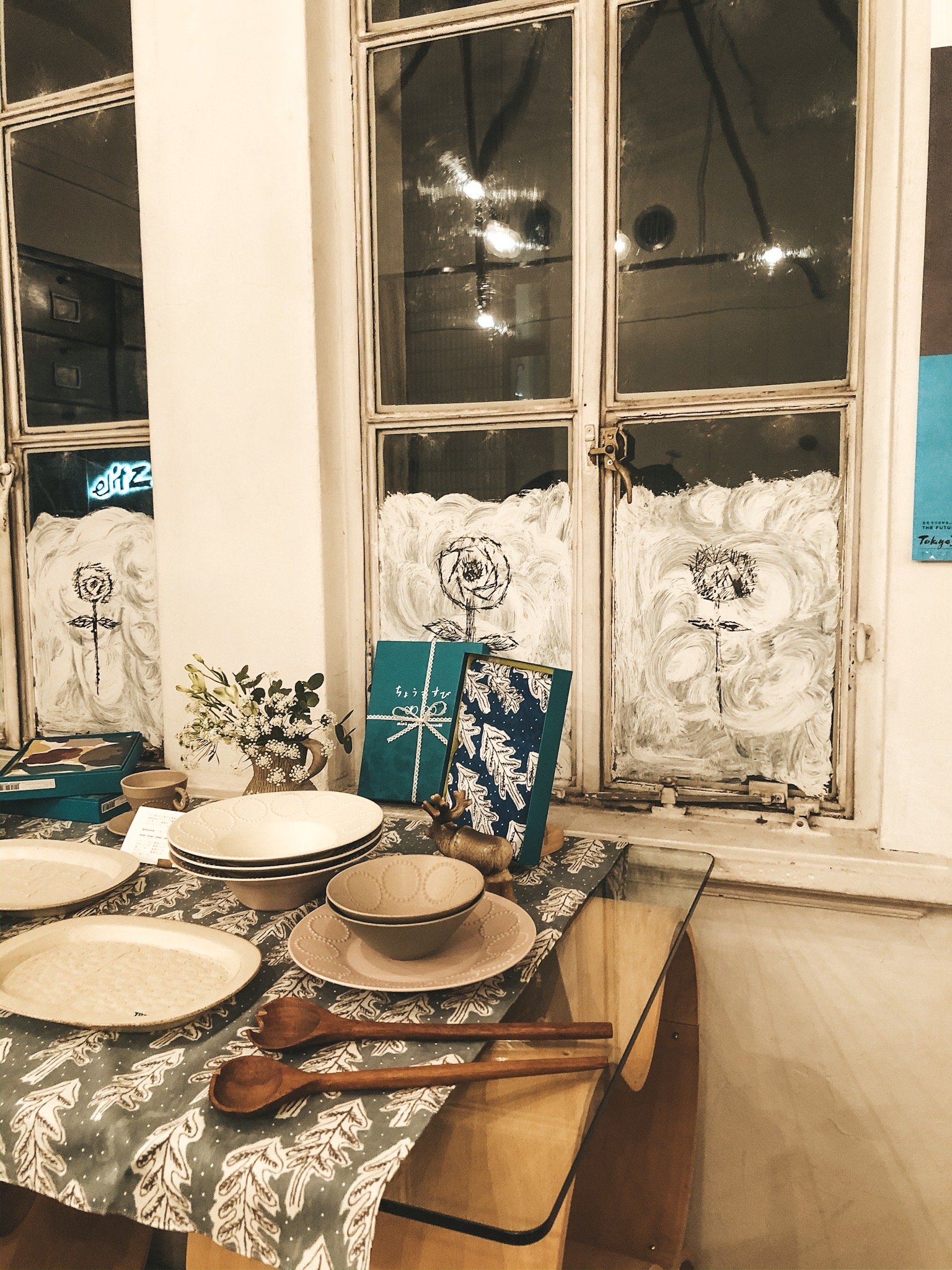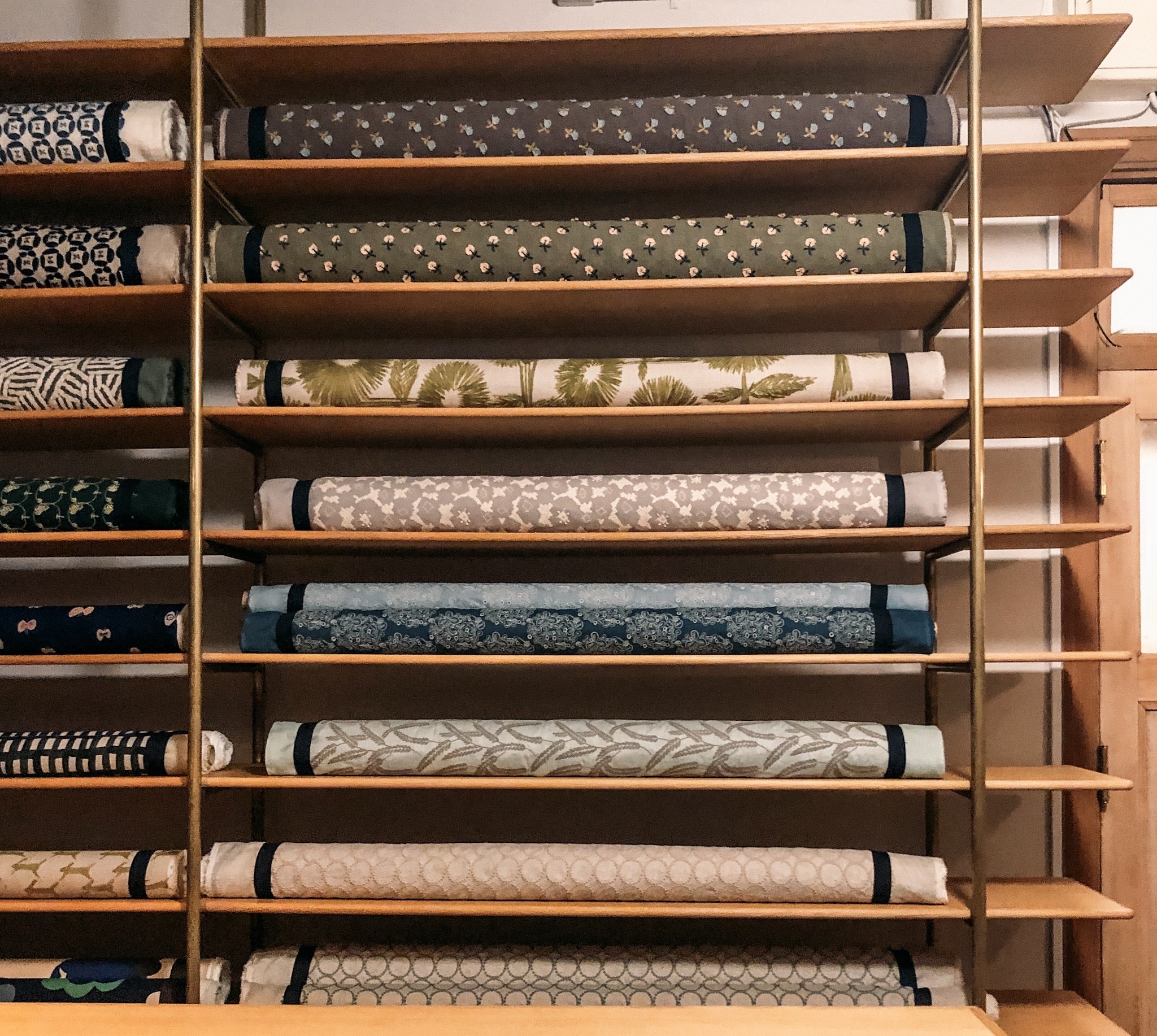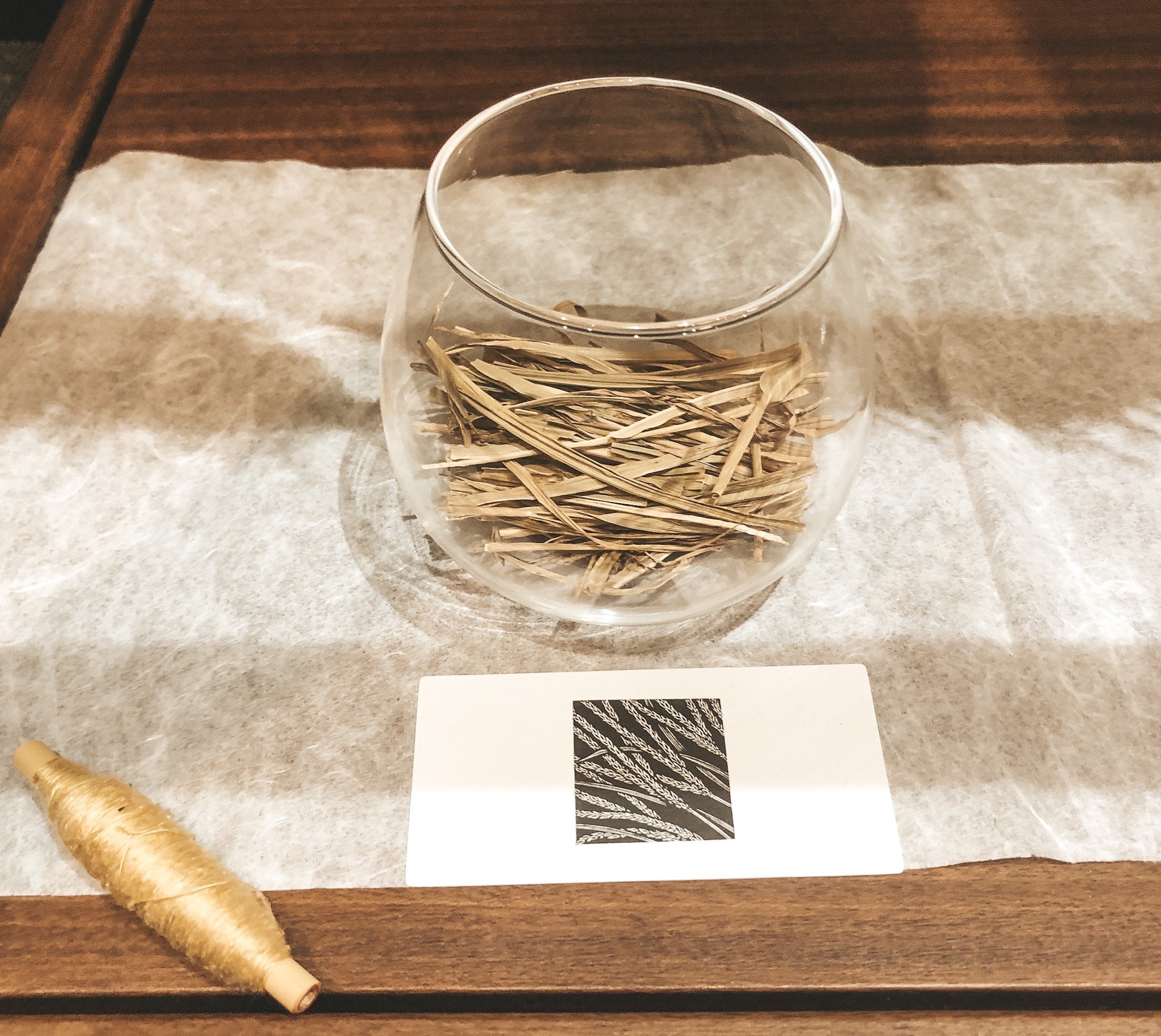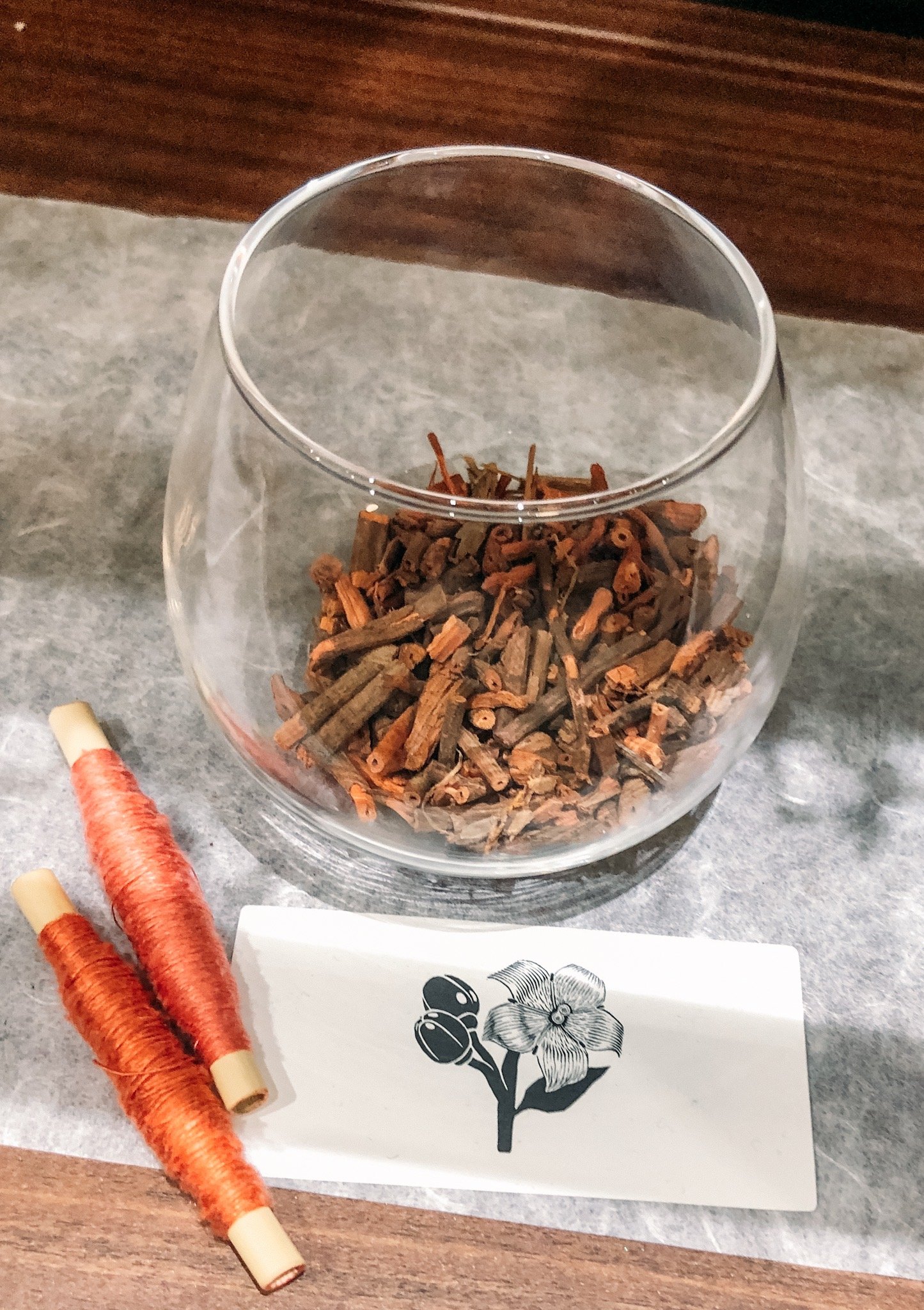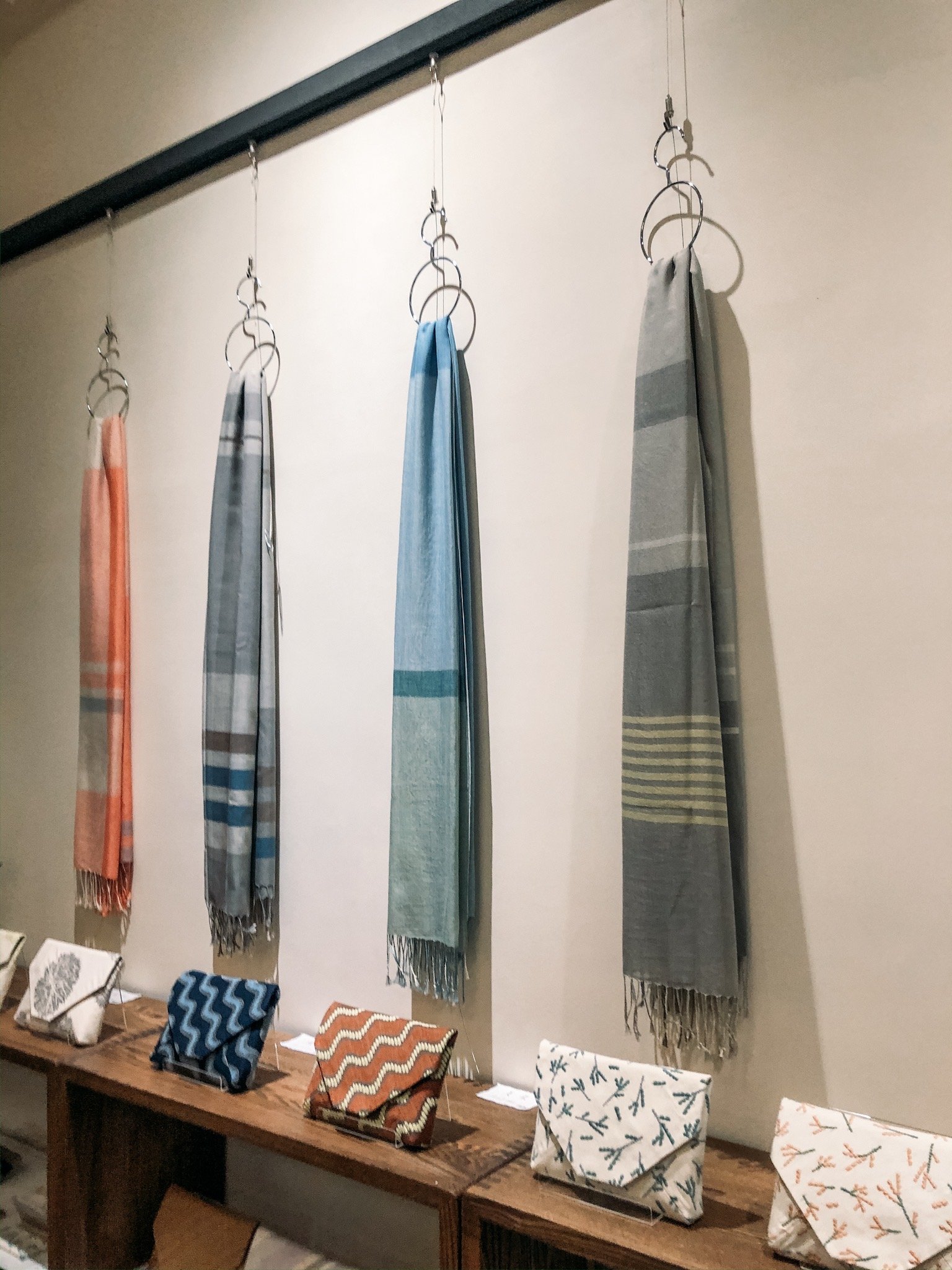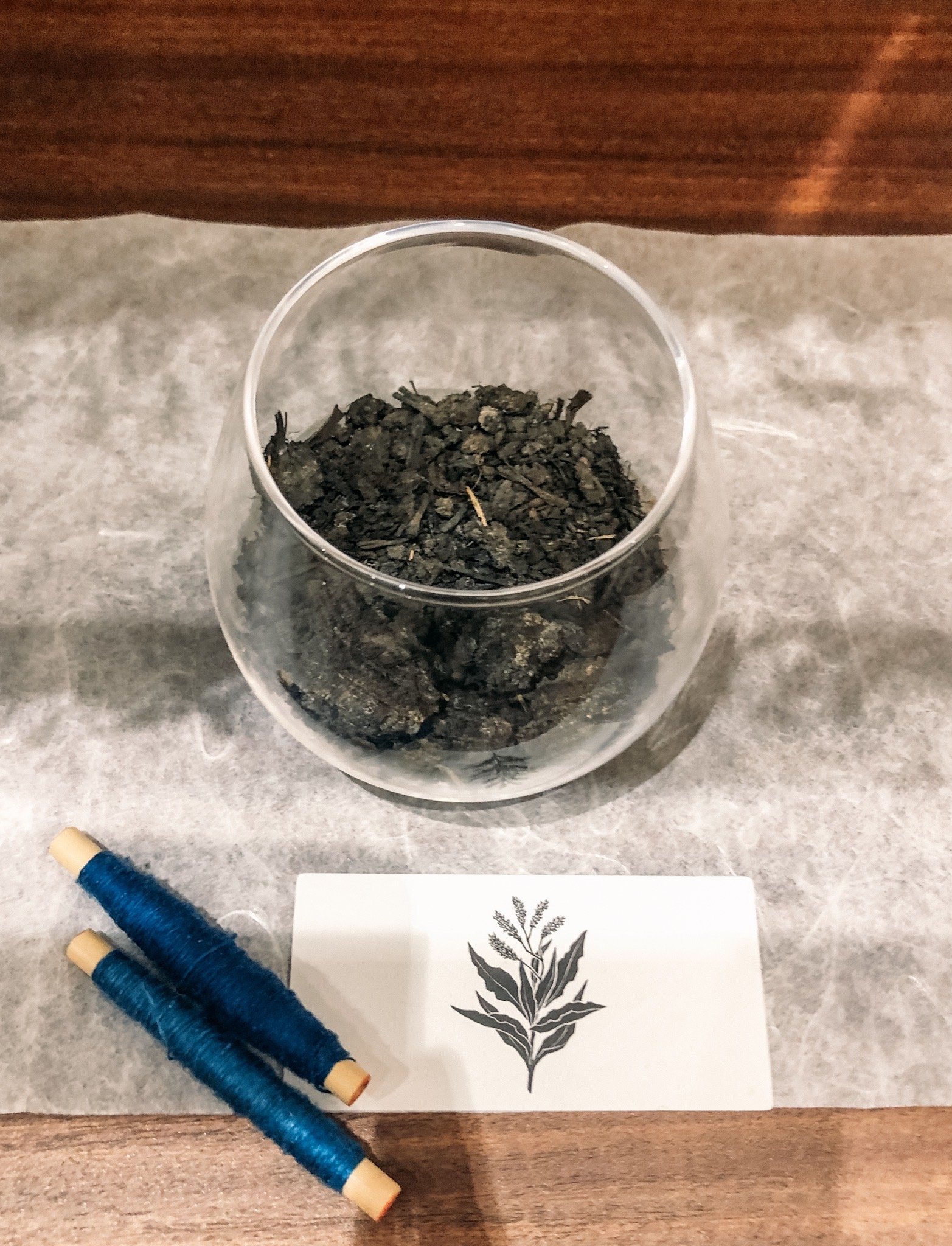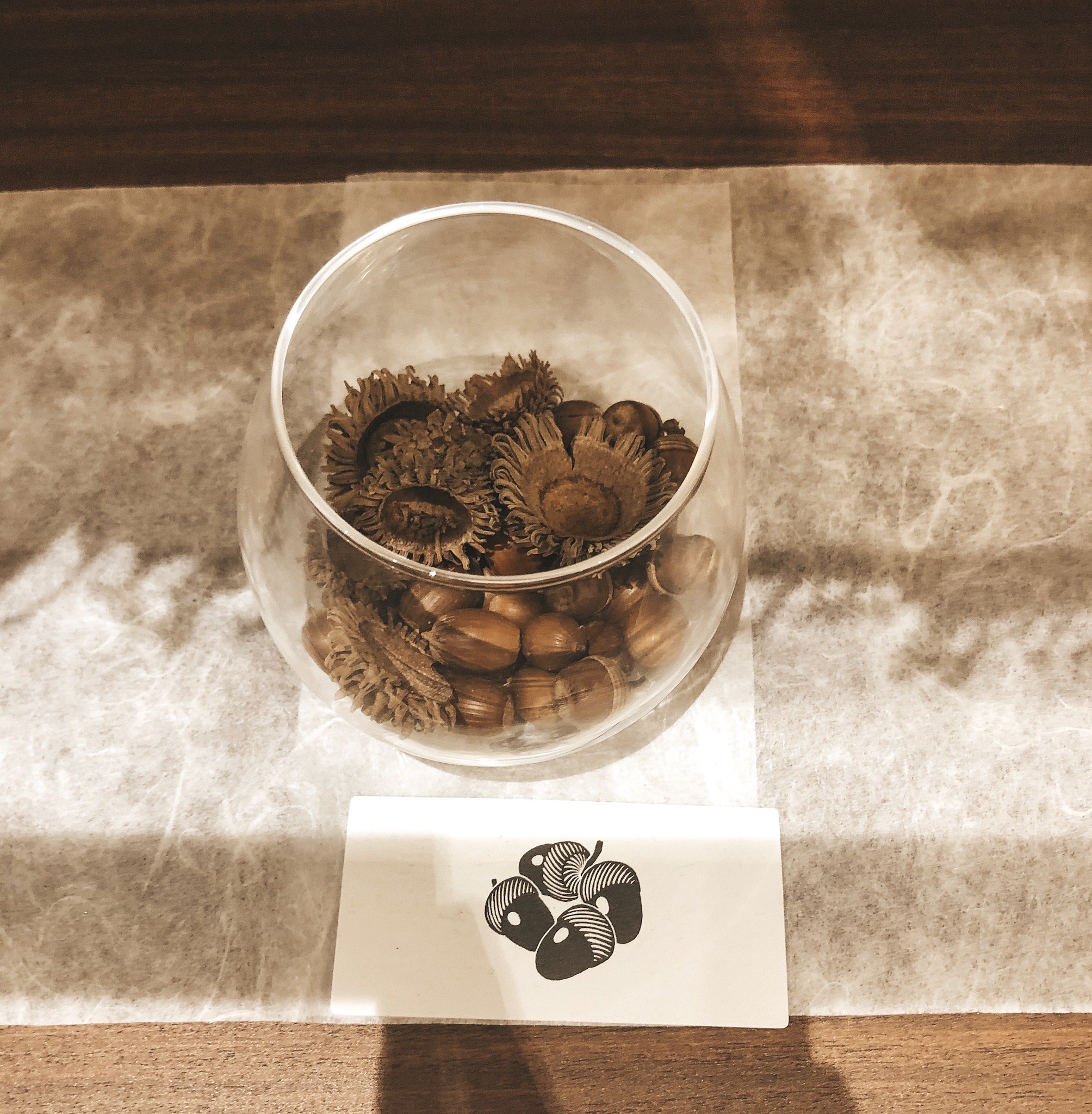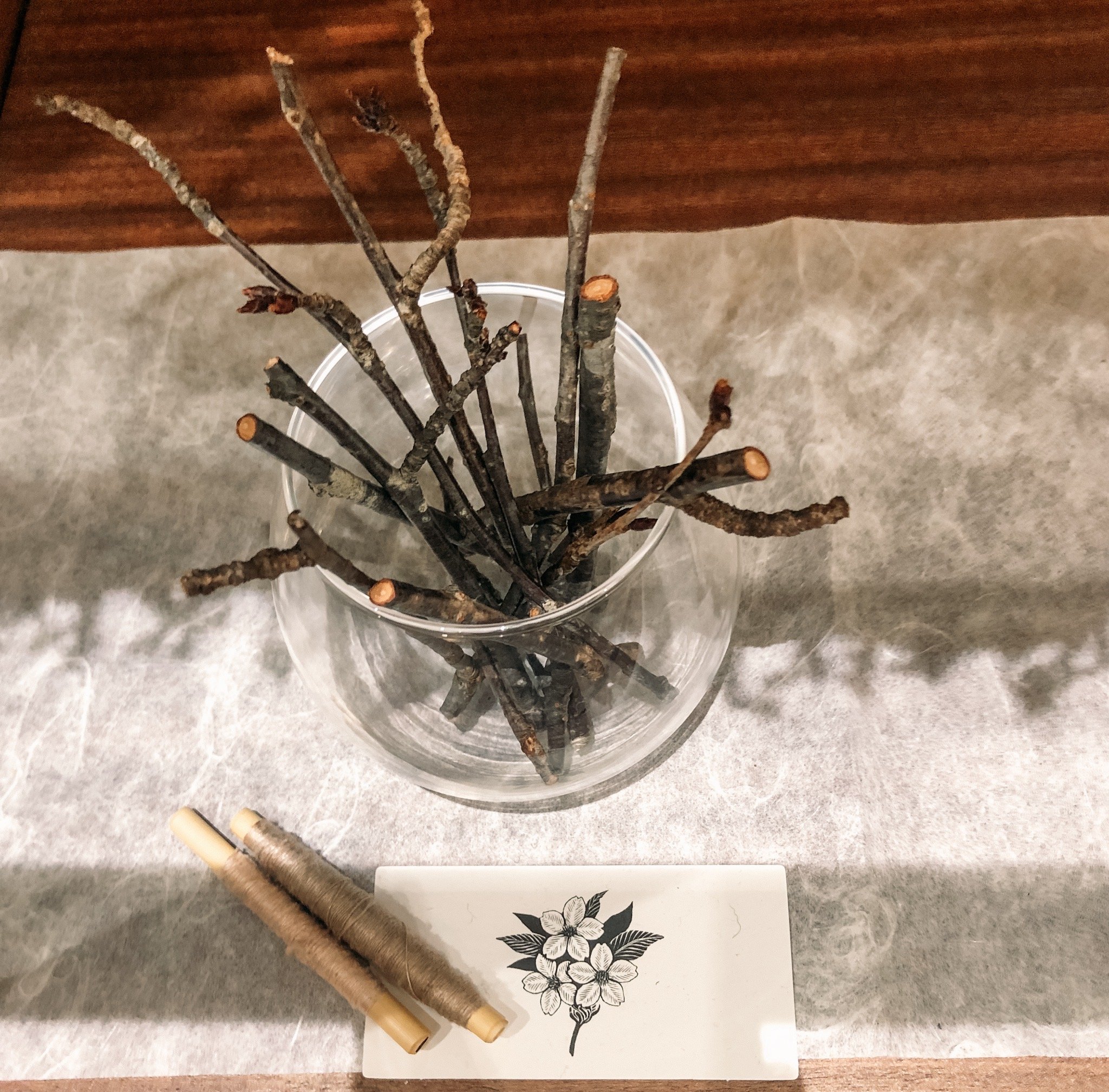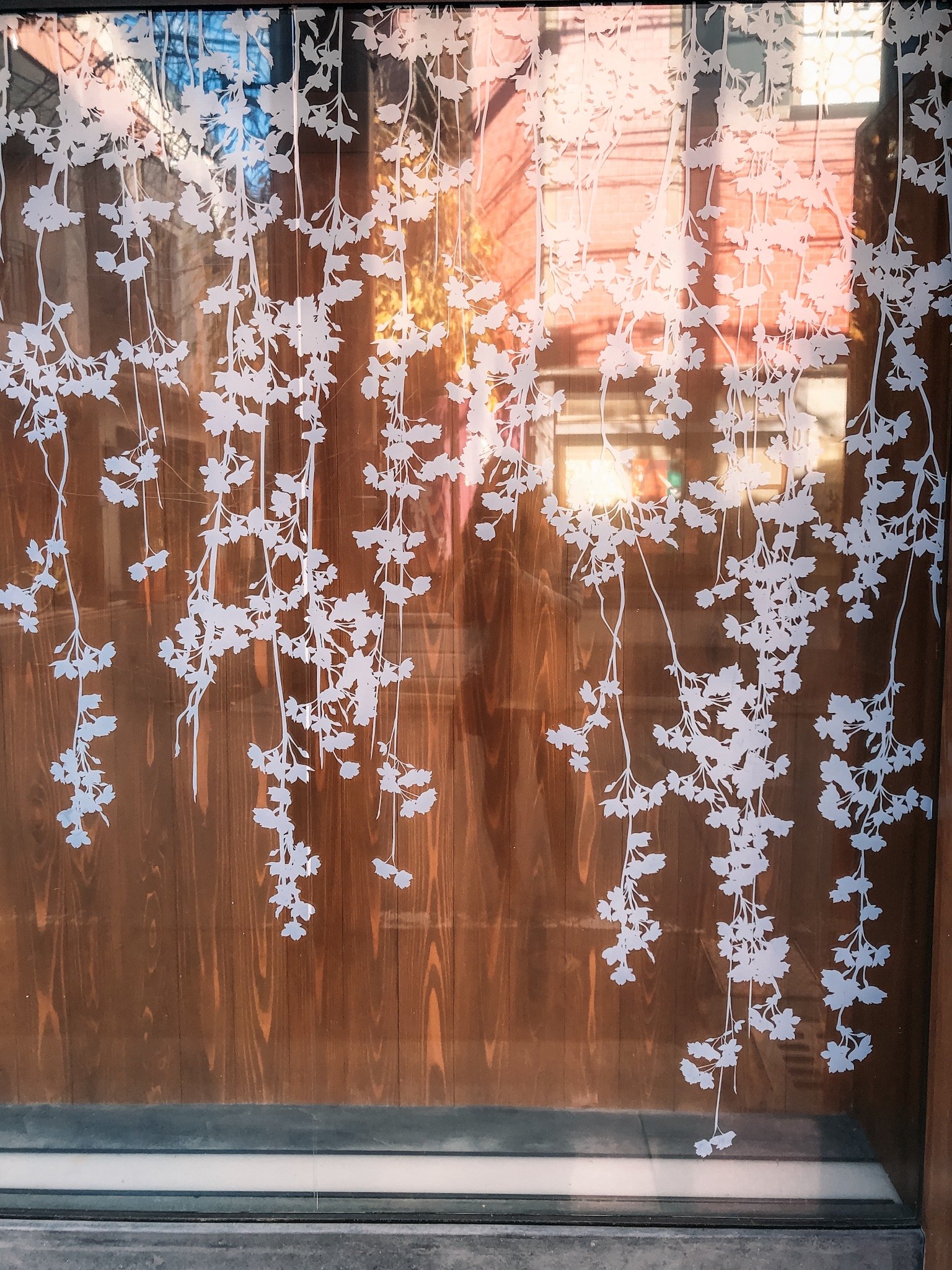Japan - Kyoto Textile Research Trip November 2019
I've always wanted to visit Japan. It has always been on the top of my list. Japan for me is the country of perfect harmony between past and future, traditions and technology. I love how the Japanese blend traditional with modern in everything they do. From food, to architecture, to the way they dress.
Nine days in Kyoto weren't actually enough, so I am hoping that I will be back soon... I really loved it there, I loved the food, the streets, how safe I felt walking everywhere at any time of the day, the shops, the museums, the trees, the rivers, the temples...
Before going to Japan, I messaged a few Japanese friends and asked for recommendations, and I also asked a friend from uni that had been there and knew a lot about textiles, as well as my old boss who had been to Kyoto a month before I went and loves yarn, textiles, natural dyes and fabrics.
Right after my day-trip to Muriyama with my friend Maya, she drove me to Kyoto. My old employer, had told me to contact Tommy from Mondo Fil. Mondo Fil is a Japanese yarn company based in Kyoto. Their yarns are quirky, fun and really textured. The colours, even though they are dyed with synthetic dyes are amazing. The yarns are perfect for knitting, weaving or even sewing. I had messaged Tommy the day before and told him I used to work at Loop and that I would really like to visit their offices. They don't have a shop - they do pop-ups once a month, and they wouldn't host one while I was in Kyoto.
Tommy was really nice, he came to meet me at my hotel, and took me to their office, he showed me all the machinery, the design process, the yarns, introduced me to the whole team. He gave me lots of samples of yarn to take home with me and then we went for dinner with five more of his colleagues.
I loved how comfortable they all were, how they immediately opened up and treated me like I was one of them. We went to this amazing Japanese pub which was tiny, but had amazing food. I tried everything without asking any questions, and everything was delicious.
There were so many things I loved about Japan. Small things that I wrote down so that I wouldn't forget. First of all, it is considered rude to walk on the street speaking on the phone. I love that. I'm usually a person that calls people when I'm on my way to a certain place. However, this gave me the opportunity to really look around me.
It is also considered rude to talk on the phone when you are in public transport. Phones seem like they are always on silent in Japan. I got a text and people looked at me weirdly because my phone was not on silent. That's quite nice too, looking at people on the bus, reading a book or looking outside the window. Much better than texting or being on the phone. It really makes you feel present.
You also shouldn't eat or drink while walking in Japan. I was used to getting a coffee and walking my dog every morning, however since Japan I usually get my morning coffee and sit at the cafe for 20 minutes with Ito before continuing our walk. The day seems calmer and not that rushed this way.
Another thing I loved was taking a taxi in Japan. Japanese taxi drivers are very polite and the taxis are so clean! The drivers wear white gloves, the doors open automatically. However, one day it was raining and the taxi driver got outside, opened the door for me and put his hand on the top of the door making sure no rain falls on my head! Very different to what I am used to in Greece.
In Japan it feels like they've thought about everything. When you go to a restaurant or cafe they bring you a basket, so that you put your bag in it so that it doesn't touch the dirty floor. To pay for the meal or your coffee, you usually pay at the exit which I also found nice. You don't have to wait for the waiter to bring you the bill, whenever you are ready you just collect your stuff and pay right before you exit.
Another thing that surprised me was that in big shopping streets they are usually playing music on speakers. I loved that too, I found myself walking to the beat.
While walking around, I saw that most shops and restaurants had a piece of fabric at the entrance, which started from the top of the door and usually ended half way. I asked a friend about it and she said that that signals the shop is open. I really liked how they've incorporated textiles.
I loved shop owners and their staff, they seemed shy, careful and smiley. More than once, I would exit a shop and they would come out with me, giving me my shopping, saying thank you, bowing and wishing me safe travels. Even when I didn't buy something they would do the same. I could tell they meant every word by their smile. I am now imagining someone in Greece or the UK doing that and I feel like it would seem fake. Food for thought I guess.
This is going to be long...
List of shops you should visit in Kyoto if you are interested in handicrafts, textiles, clothes, ceramics, etc:
三條本家 みすや針 - this shop has been around for 360 years! It's tiny, and it sells handmade needles. Right now the 18th generation is running it. It's quite difficult to find that's why I've added a google maps link. Definitely worth a visit, there's a small garden right before you enter and the people in there are the sweetest.
Idola stockroom - this shop sells buttons and beads
古裂とよ - heaven for second hand kimonos and ceramics
Kamiji Kakimoto - a luxury paper store, amazing handmade paper and stationery. It's been around since 1716.
Suzuki Shofudo - another beautiful paper store
Mumokuteki - my favourite store. Clothes, homeware, second-hand items, flowers, snacks, ceramics, handmade items. They also have an amazing cafe with delicious food. Definitely worth a visit!
Nomura Tailor House - fabric heaven. I think this store has 4 or 5 floors filled with fabrics.
Sou-Sou shops - there are a few of those and they are all in the same area. There is a kids clothing shop, a women's one, one focusing on socks, a menswear shop, a homeware one, a shop that sells fabric and there might be more. Their prints are all screen-printed by artists in Japan. Definitely worth a look.
Iro - beautiful vintage kimonos. This shop is quite expensive, but definitely worth a visit.
Ochikochiya - another vintage Kimono store, definitely recommend it.
ギャラリーギャラリー - this is another amazing building, it has an art gallery and it's four floors of pop-up stores. I loved it. On the ground floor there is also a really nice shop by a famous Japanese textile and fashion designer called Mina Perhonen. Definitely worth a look.
D & Department Kyoto - Another very cool space, this is like a concept store and you can find lots of nice ceramics, accessories, clothes and homeware. They also sometimes host exhibitions. When I went there was an Indigo exhibition.
金の羊 - yarn and sewing shop
株式会社 SETSUKO TORII - amazing yarn store upstairs, and downstairs there are machine knitted clothes by the designer, I think they also offer machine knitting classes here
Tanaka Naoyoshi - Arts and Crafts store, they sell lots of art materials here, but you can also find indigo powder and other natural dyestuff as well as a huge wall full of un-dyed fabrics like cotton, linen, rayon, hemp, silk, wool and mixes of them.
Walnut Kyoto - If you are a knitter and you know the Amirisu magazine, then this is definitely a must. The girls that started the magazine opened this store full of beautiful knitting yarns from all over the world.
Hinaya Kyoto Style and Stay - beautiful kimonos and Kokeshi (Kyoto famous little wooden dolls)
Gallery Kei - one of my absolute favourites. Beautiful antique textiles and the owner is such a sweetheart. Definitely worth going here.
Tezomeya - Natural Dyeing heaven. Naturally dyed clothes and they also offer natural dyeing workshops.
Aizenkobo Indigo Place - Indigo heaven. Lots of indigo dyed fabrics and yarns.
AVRIL pepin - Here you can find lots of Avril yarns both for weaving and knitting.
One of the days I was in Kyoto I did an Ikebana workshop. This was an airbnb experience that my friend Claudia recommended to me. Ikebana is the art of flower arranging. The host, Seanacey was really lovely, and I really enjoyed my time with her. Another pro of this workshop was the set up. The workshop takes place in a cafe-bar at Kinse Ryokan, a unique building with more than 200 years of history, the architecture and design in there are amazing. So as you are arranging flowers and drinking delicious japanese tea, you are surrounded by the room's parquet floors and elaborate stained glass windows which feature flowers, butterflies and birds. It's a very unique experience and I really recommend you do the workshop or at least visit this Ryokan.
The workshop started with a small history lesson. Ikebana started in Kyoto 500 years ago, since then it's evolved, and is now considered a contemporary art form. Seanacey told me that "Ikenobo" was the most traditional and classic school. She was trained at the Sogetsu school which was a bit rebelilious, Sofu Teshigahara was the master and founder of the school (92 years ago), now his grand-daughter Akane Teshigahara, creates ikebana arrangements making them interact with some object around it, for example a painting or a textile.
First Seanacey told me we would create a classical composition, emphasising seasonality, lines, space and form. There are three flowers at the classical compositions. They all have names, Shin (represents heaven and is the longest of the three) Soe (second tallest and represents humans and living things) and Hikae (shortest, represents the earth). The Shin and the Soe can be the same flower or plant, but the Hikae is usually different like an accent. The vase is also very important and part of the arrangement.
After that composition, there was time to use different floral materials to create a free-style arrangement. I really enjoyed creating both of these compositions. It really did feel like an art form, like painting and drawing but using flowers to create shapes. Seanacey was really nice and she let me stay at the cafe and draw my compositions after our workshop.
I really enjoyed her workshop and recommend it to all of you!
The food in Kyoto was amazing. Here are some of my favourite restaurants:
Kyoto Gogyo Ramen - loved the ramen here, went more than once
Ikariya Coffee Kyoto - nice coffee and cakes
Babbi Gelateria Kyoto - amazing ice cream! one of my favourite flavours was sesame
Gion Kappa Restaurant - one of my favourites. the guys from Mondo Fil took me there and I loved everything we ate. The kitchen is open so you can see everything being prepared in front of you.
Mumoteki Cafe - nice salads, soups, comfort food, vegan food, coffee and teas
Gyoza Ohsho - gyoza heaven!
Gyoza Hohei - really tasty noodles and gyoza
Gion Tanto - okonomiyaki restaurant, very nice vibe and very traditional
Cafe Bibliotic Hello! - really nice cafe, very nice atmosphere, books, plants and art everywhere!
Here Cafe - loved this cute coffee shop, really good coffee!
FabCafe Kyoto - full of creatives and digital nomads that work from there, workshops take place here, the food and coffee is really good as well.
I had booked another workshop through airbnb, this was once again recommended to me by Claudia. This was a sashiko workshop, sashiko is a form of Japanese folk embroidery using a running stitch to create a geometric pattern. The workshop actually took place at the Fab Cafe Kyoto I mentioned earlier. The workshop usually lasts two hours, however I booked a 6 hour one so that I could learn as many different sashiko patterns as possible. Kazue teaches the Hitome-zashi technique. The fabric has drawn grid lines on it as a guide to stitch. (The lines get removed with washing and/or ironing). First we stitch horizontal lines all the way and then we add vertical or diagonal lines (depending on the pattern). Kazue explained what each pattern symbolises to me, protection, mother daughter bond, family, trust etc. I definitely recommend trying the two hour workshop with Kazue if you are in Kyoto!
The next day I met Kazue again, and we went on a private craft store hopping tour. She took me to amazing shops that I definitely wouldn't have found by myself. The photos that follow are a mix of shops I visited with Kazue, streets in Kyoto, the indigo exhibition that was at the D & Department store. There are also photos of the 360 year old shop that sells handmade needles and more.
The next day, I saw Kazue again! This time for a natural dyeing workshop in a dye factory. I was taught the "Shin-Manyozome" dyeing method. I was given two organic cotton scarves to dye, and there was a choice of 18 colours from natural pigments. What they have done here is that they've mixed natural dyestuff together creating pigments that are very strong. The 18 colours were all combinations of different dyestuffs. We mixed the pigment in hot water and it was so strong that the water changed colour immediately. I put in the scarves (which were tied in different ways because I was trying shibori as well) in and the fabric absorbed the colour straight away. I only left the fabric in for 30 seconds. The craftsmen weren't open in sharing their recipes or explaining how they've made the pigments so strong, or how they had achieved to make the dye "stick" to the fabric so quickly (less than a minute). I still enjoyed the experience, and I was really happy I got to see a dye factory in Japan!
Now it's time for my absolute favourite place in Kyoto.
Kawai Kanjiro's house. Kawai Kanjiro was a potter and key figure in the mingei (Japanese folk art movement). It is a beautiful wooden townhouse which has been preserved and is now run by his family. The building, the architecture, the interior, the furniture, the textiles, the plants, the cat (!), the ceramics, the garden - I fell in love. At the garden you can see the artists kilns, and inside you can see his drawings, his work (ceramics and carvings), his letters, his collections. There are so many small details to notice while exploring the house, from the simplicity of some rooms to the hand-carved tables and chairs in the front of the house. There is beauty literally everywhere you look.
One of the most striking things about the house is the amount of light that comes into the house. There are windows everywhere, natural light is really important for artists and it must have been so nice working from his house. The other thing I really liked was how the house encircles an enclosed courtyard garden. When you get to the garden you will see an unusually large stone ball. Apparently when Kawai was stuck and wanted inspiration he would roll this ball around.
I felt a sense of calm the minute I stepped into this house. On that day, I couldn't stop thinking about how beautiful and perfect that house was. Even now, almost a year later, I smile just thinking about it. It's definitely a place I would visit very often if I ever lived in Japan, and it's definitely one of the first places I'm going to next time I am back in Kyoto. If I haven't convinced you yet, have a look at the following photos:
There are so many beautiful parks, shrines and temples that you should visit when you are in Kyoto. I was really lucky because I went during the foliage season. The maple trees have various colours, red, yellow and brown, the leaves decorate the trees, the streets, the lakes, and the pavements, it's really magical. The beauty of the changing leaves has been memorialised by the Japanese tradition of "momijigari" which means red leaf hunting and it is the term used to describe autumn leaf viewing.
Here are some recommendations:
Kiyomizu-dera - Buddhist temple, Kōdaiji Temple, Yasui Konpiragu - Shinto shrine, Yasaka Shrine, Eikan-do Zenrin-ji - Buddhist temple, Nanzen-ji Temple, Tenju-an Temple, Tofukiji Temple, Toji, Daigoji, Jōjakkō-ji Temple, Bamboo Forest, Okochi Sanso Garden, Kōtō-in Temple, Shūgakuin Imperial Villa - Gardens, Higashiyama Jisho-ji - Buddhist temple
Apart from visiting Kawai Kanjiro's House/Museum, I spent an afternoon close to the Okazaki Park. My plan was to visit the Kyoto Museum of Crafts and Design, however they were changing exhibitions so there was nothing on, the Kyoto City Kyocera Museum of Art, which also wasn't open because they were refurbishing it and the National Museum of Modern Art. I loved that museum, and both it's permanent and it's temporary exhibitions (you can see photos further down).
I also visited the Kyoto Ceramic Centre, which I really recommend. They have different styles of ceramics, and also lots of books about pottery and ceramics for sale as well. There was also a ceramicist working there as a resident and it was really nice seeing him produce work while also having a chat with him.
There were many other museums I wish I had time to visit but didn't. Here is a list: Kyotomangekyo Museum (kaleidoscope museum), Costume Museum, Ikebana Museum, Hosomi Museum (Classical art museum), Museum EKI Kyoto, (modern art museum) Kyoto Shibori Museum (unfortunately they were closed when I tried to go) and the Kawashima Textile Museum. Next time!
Japan was definitely one of my favourite destinations and I think it always will be. I feel like there are so many things to explore, learn and observe in Japan. I really like the Japanese culture, especially the mix between the old and the new, the modern and the traditional. I really hope that I will be back soon.
This was probably one of the longest journal posts I've written, but it could have been much longer... There are so many things I could write about Kyoto, but I think what you have here is enough. If you want to learn more about Kyoto after reading this, book a ticket and go experience this amazing city yourself!
Going to end this post with lots of extra photos: cute cafes, glass workshops, shop windows, natural dyes, restaurants, ice-cream, ceramic shops, the ceramic centre, the kyoto dolls, the wall of un-dyed fabrics at Tanaka Naoyashi, the wall of knitting yarns at Walnut Kyoto, the beautiful drawing of a japanese woman weaving, sashiko antique fabric at the Aizenkobo store, photos of the Kei gallery, photos of the tezomeya shop. Finally, a photo of me and Kei at Gallery Kei. Definitely, recommend a visit there - if you do go, ask her questions, she literally knows everything about Japanese textiles.
Lots of love,
Christiana
